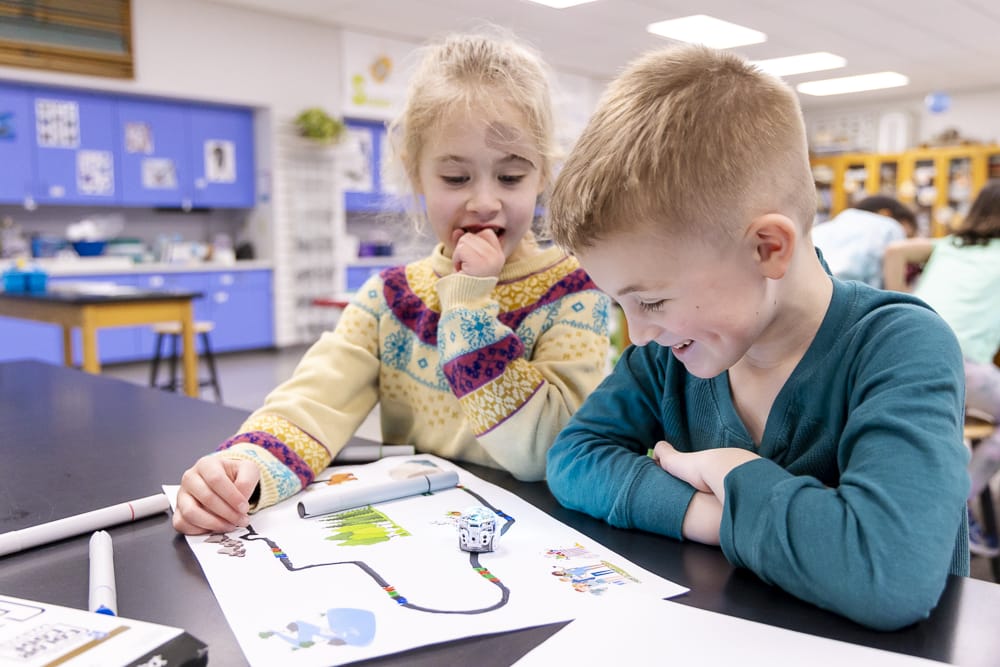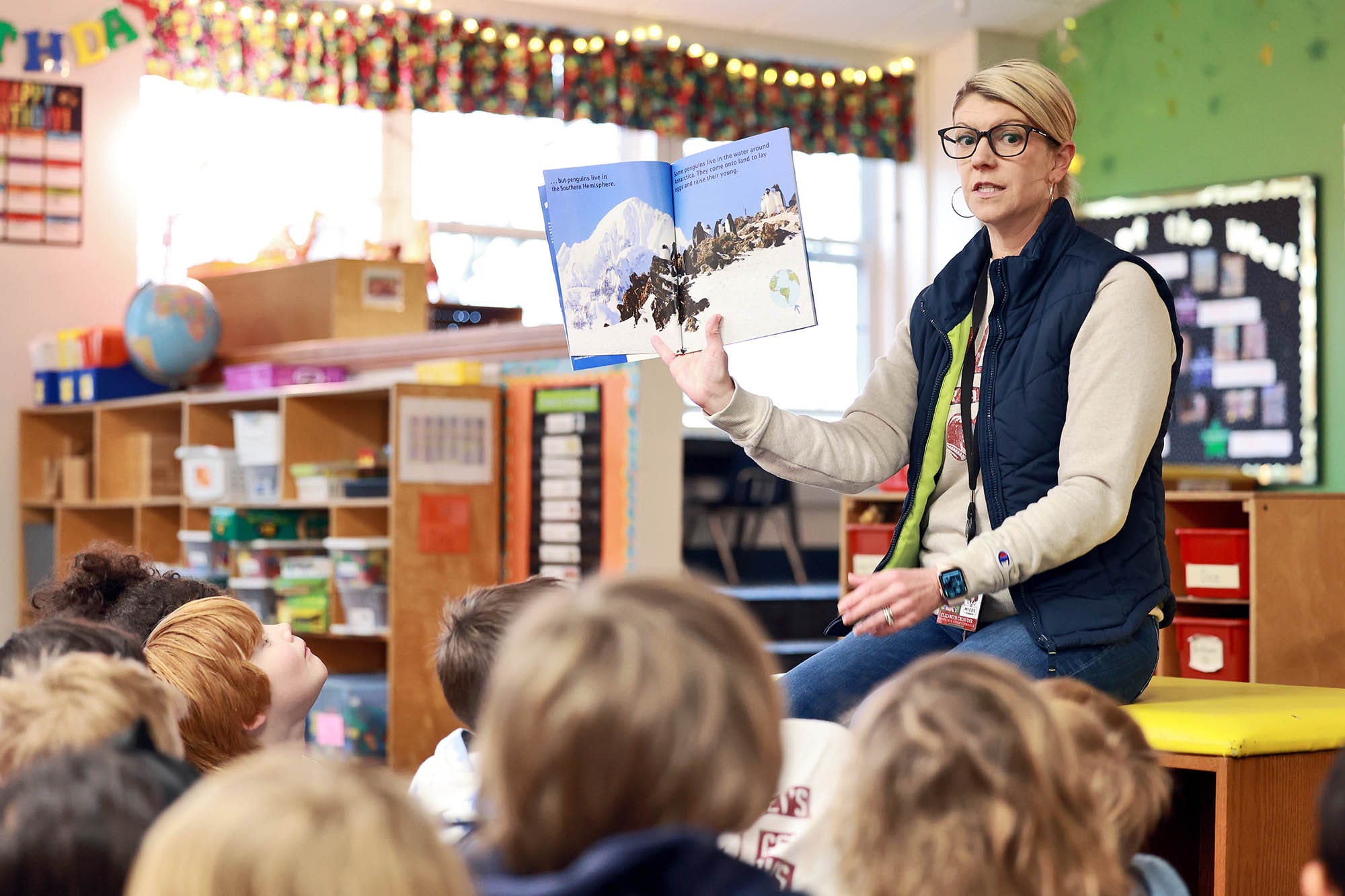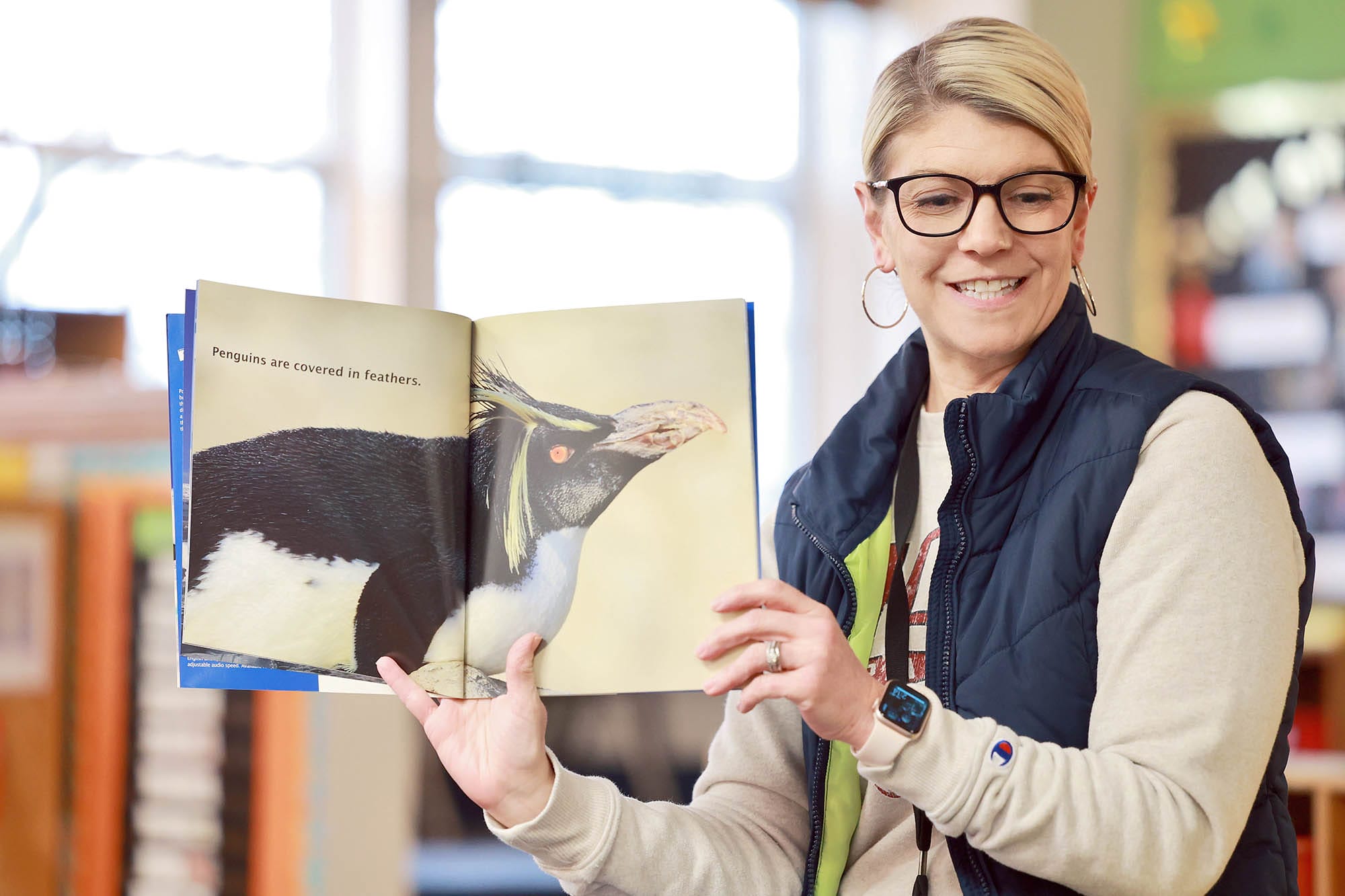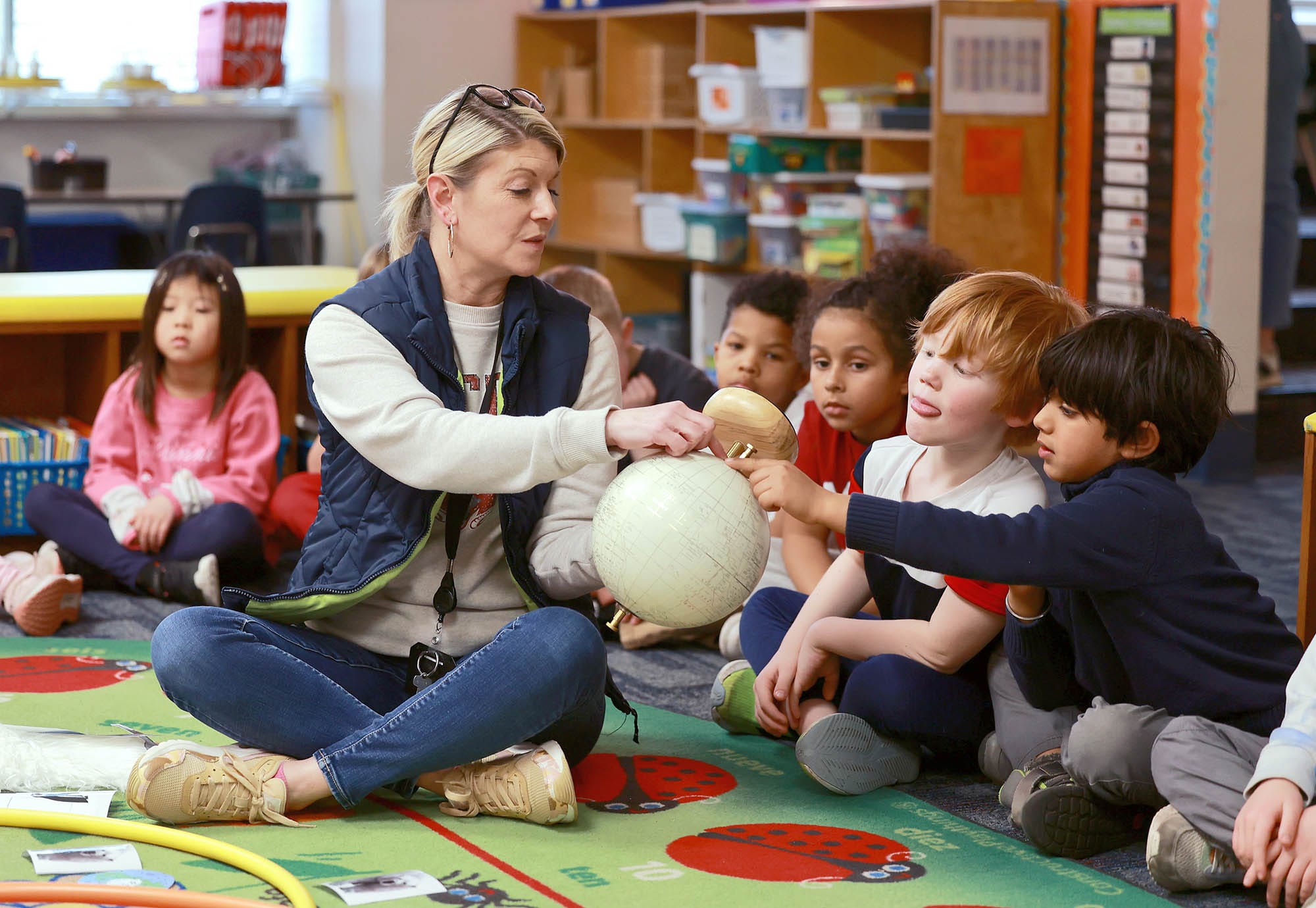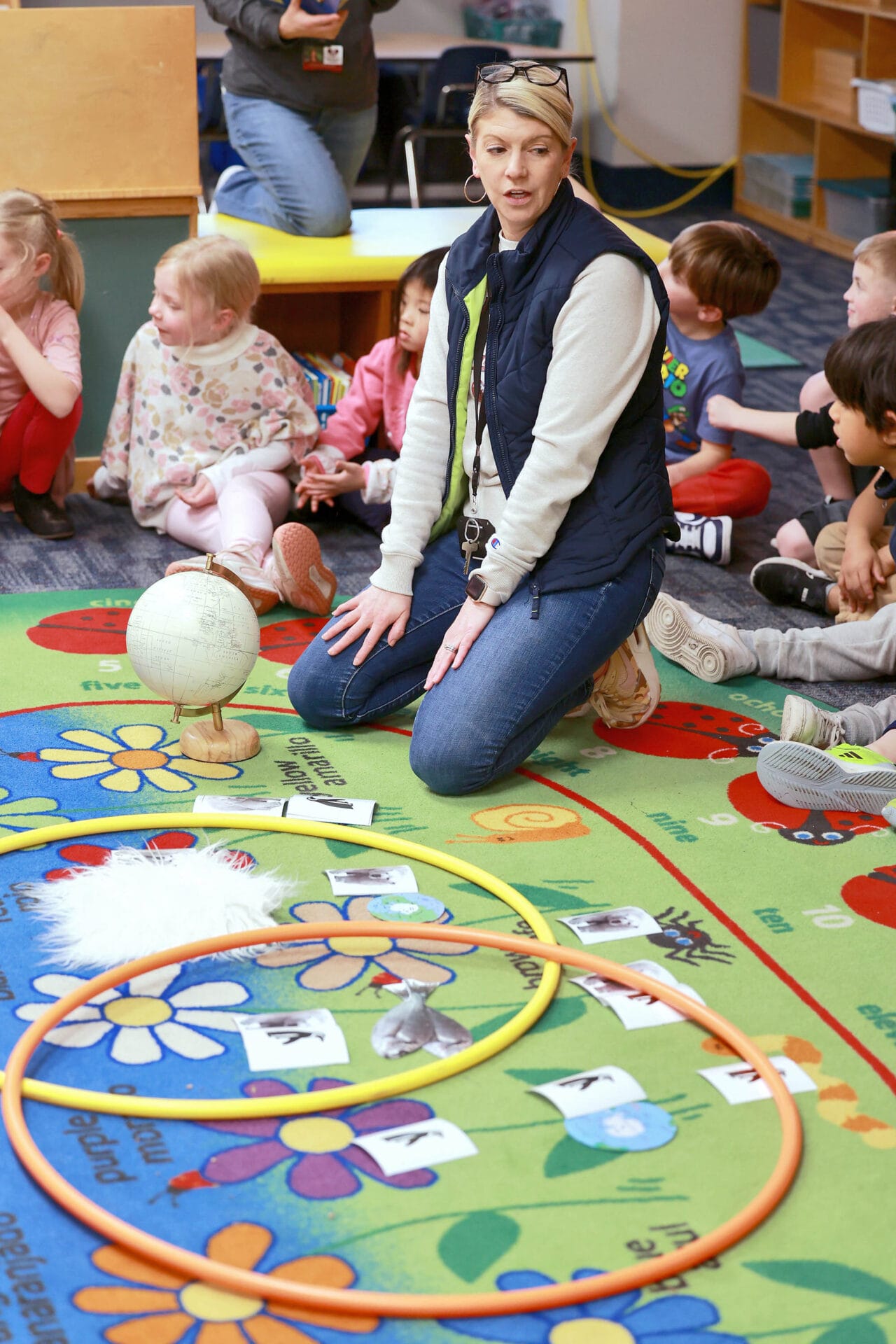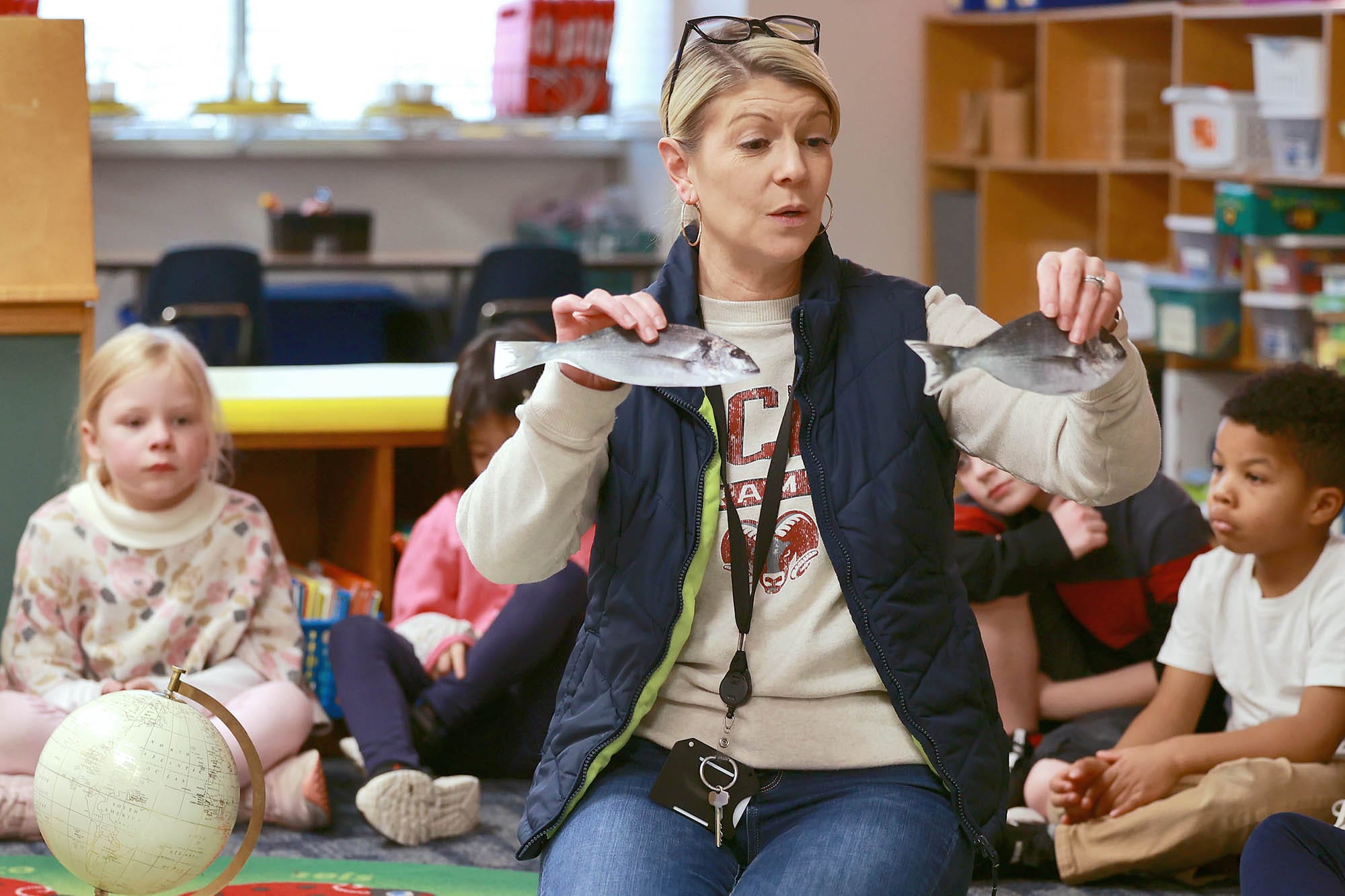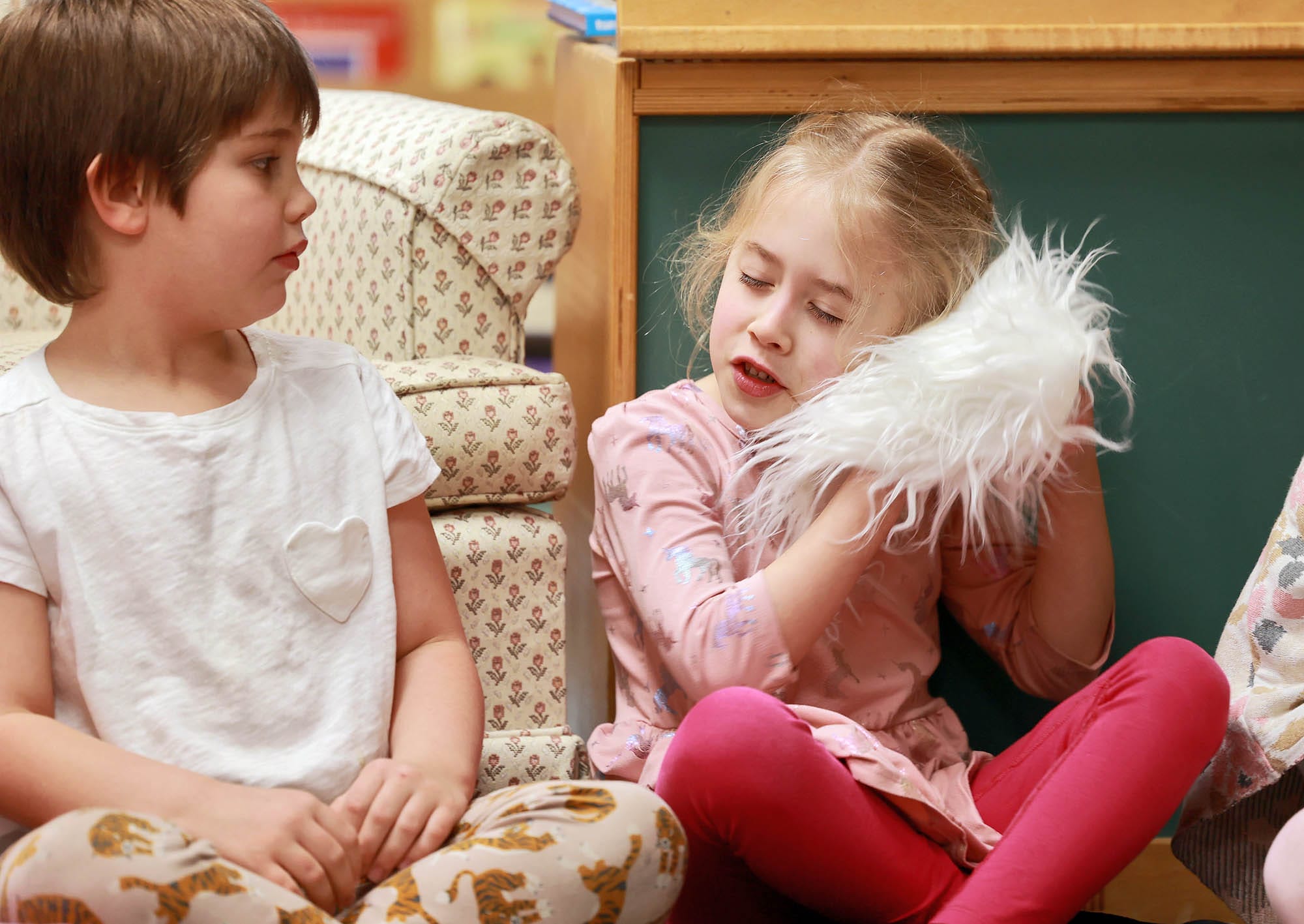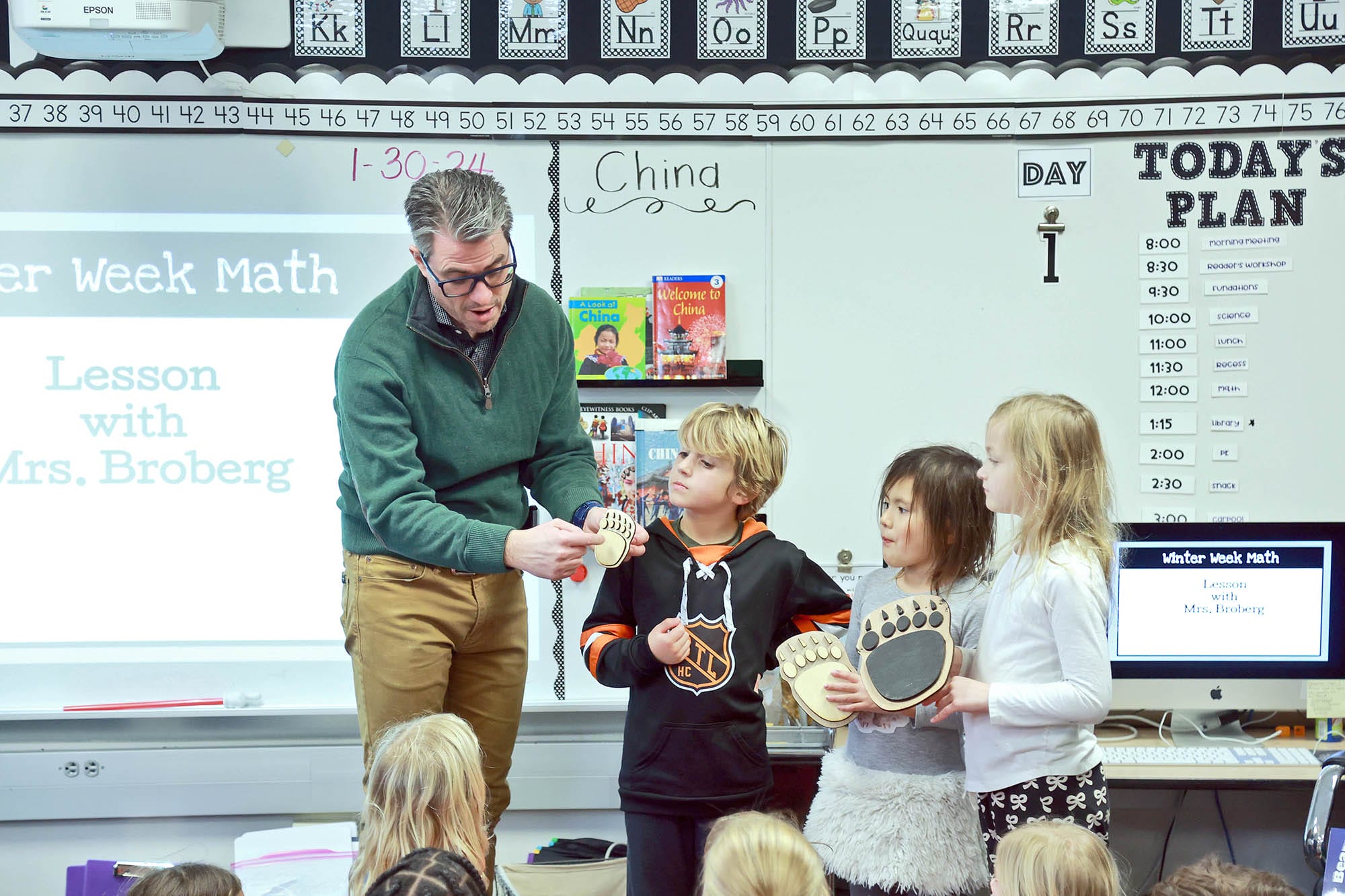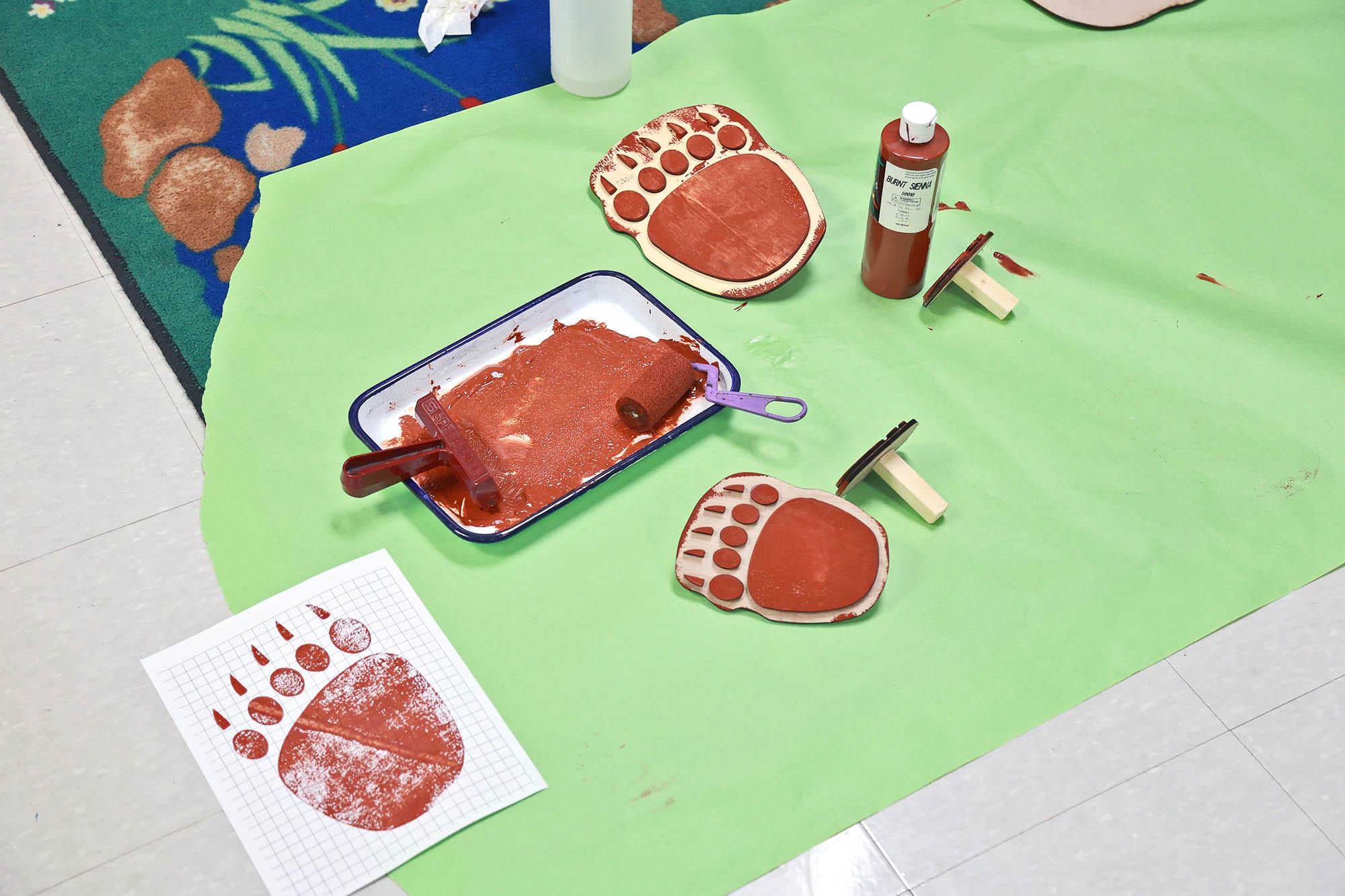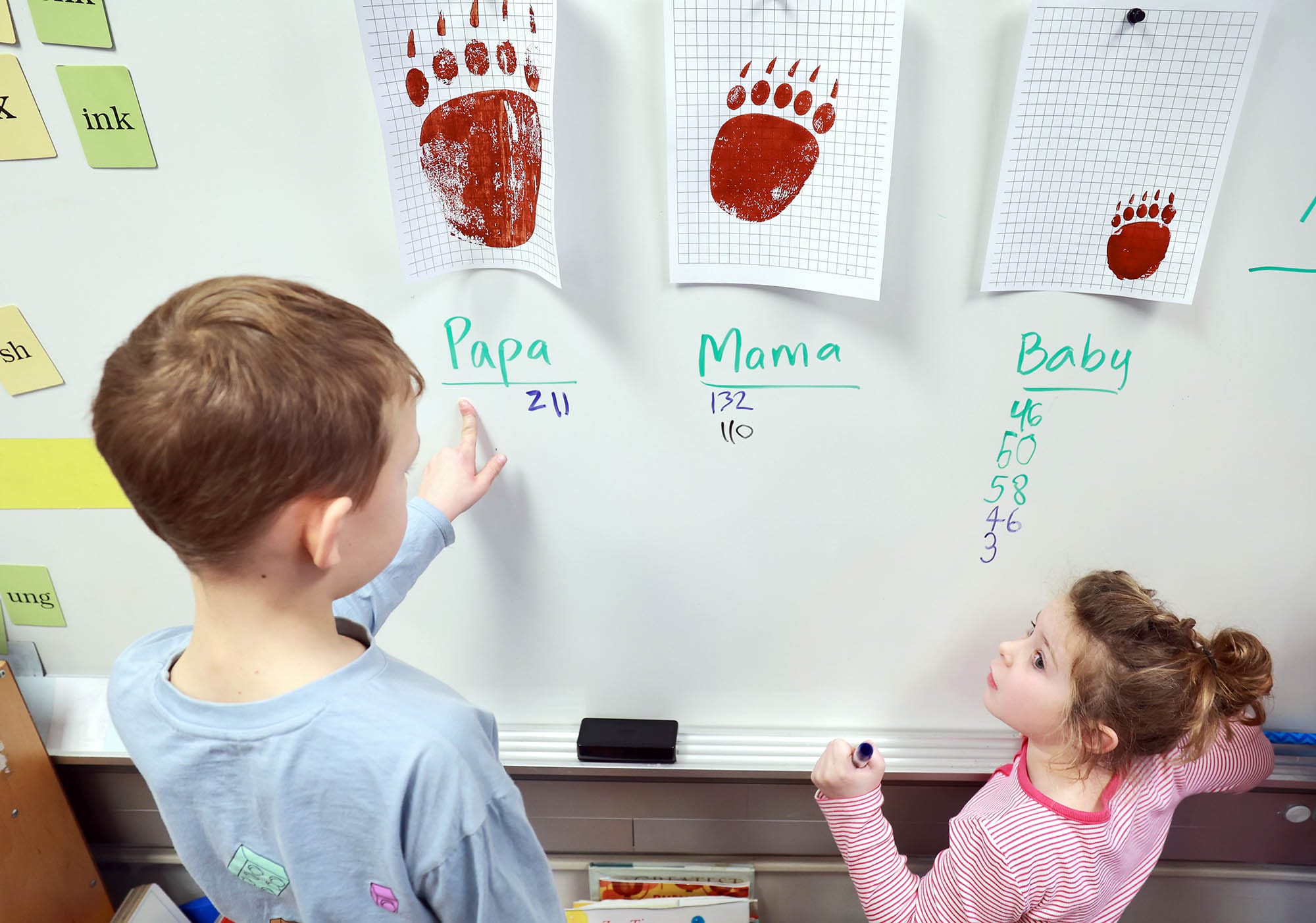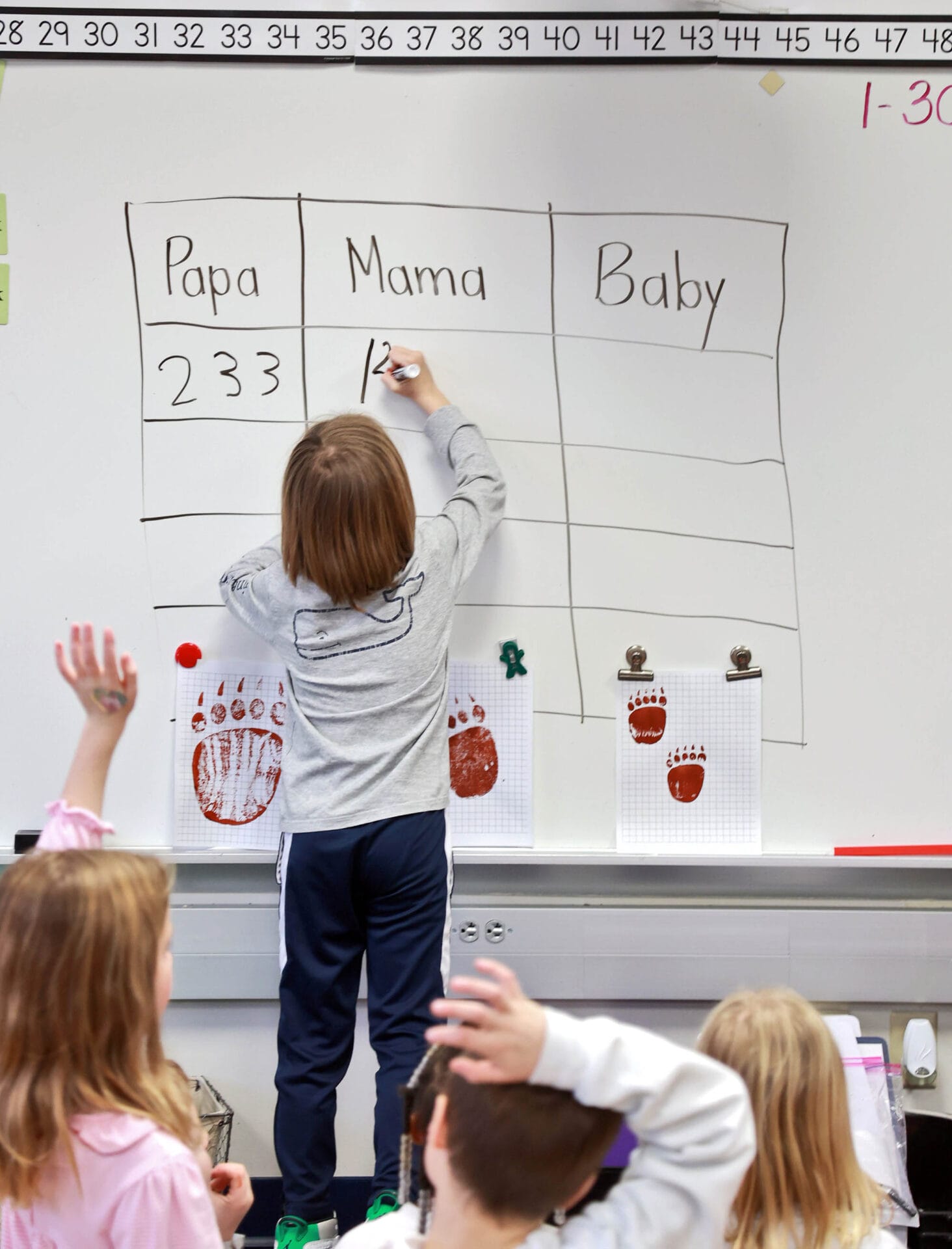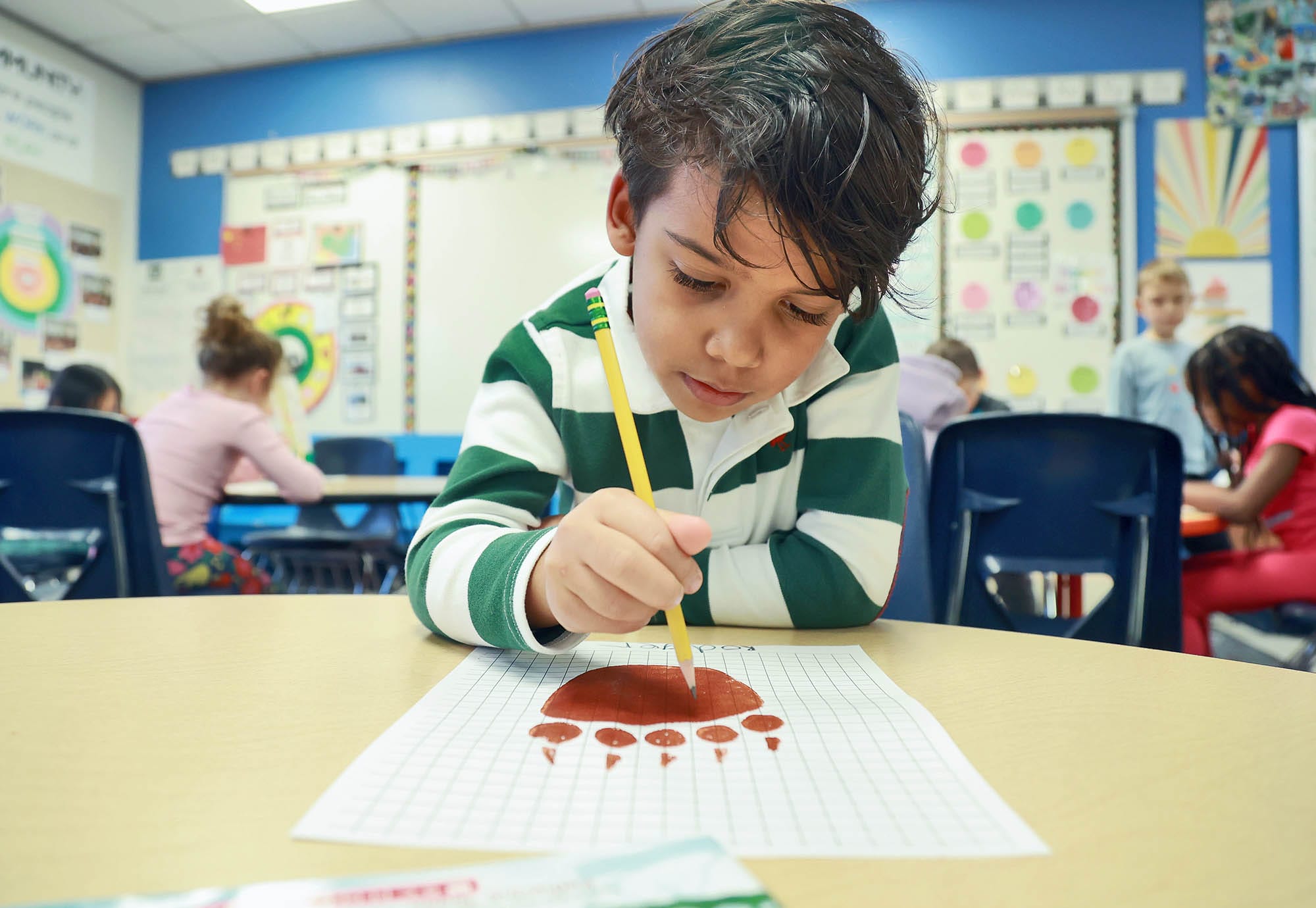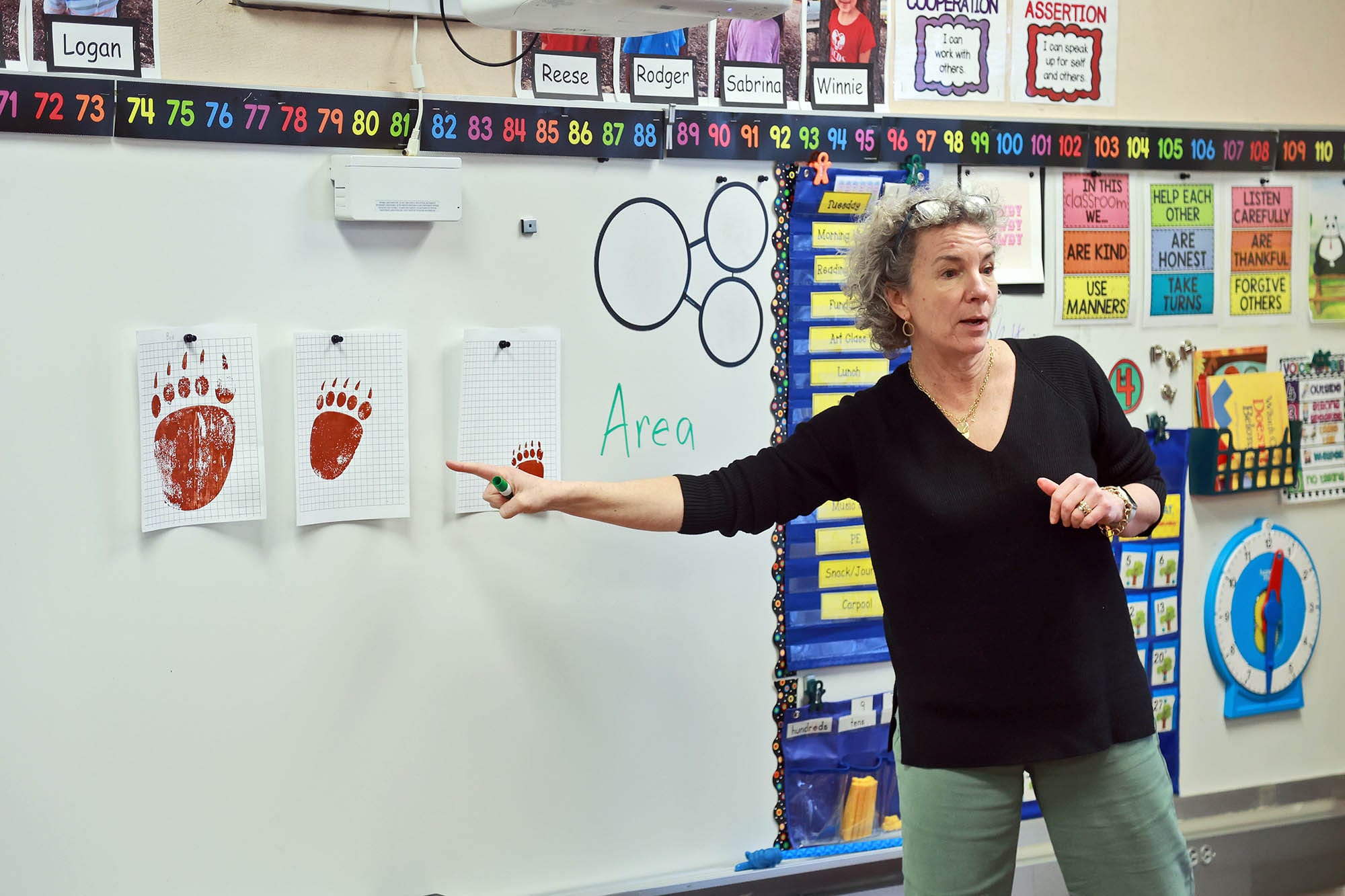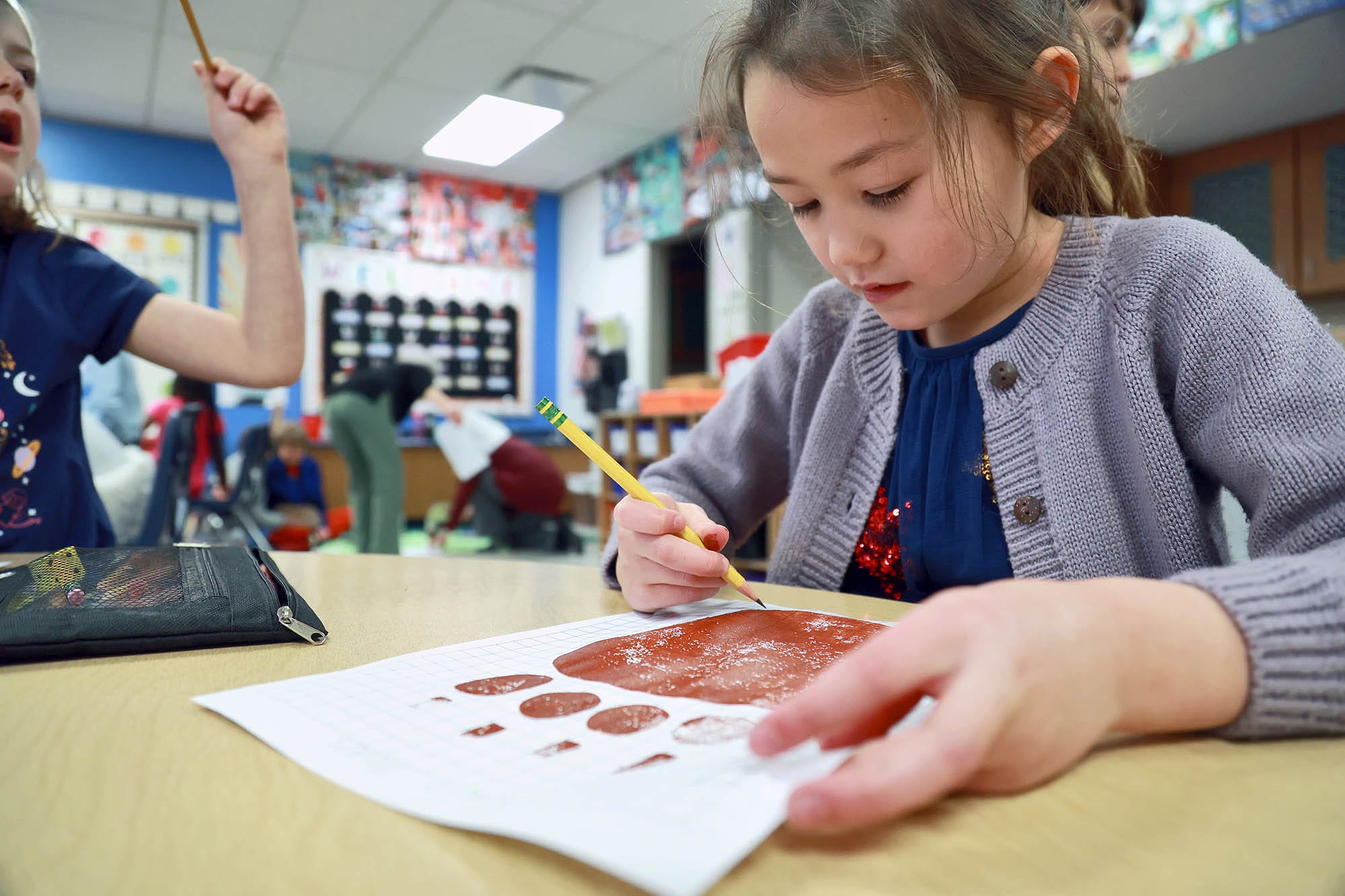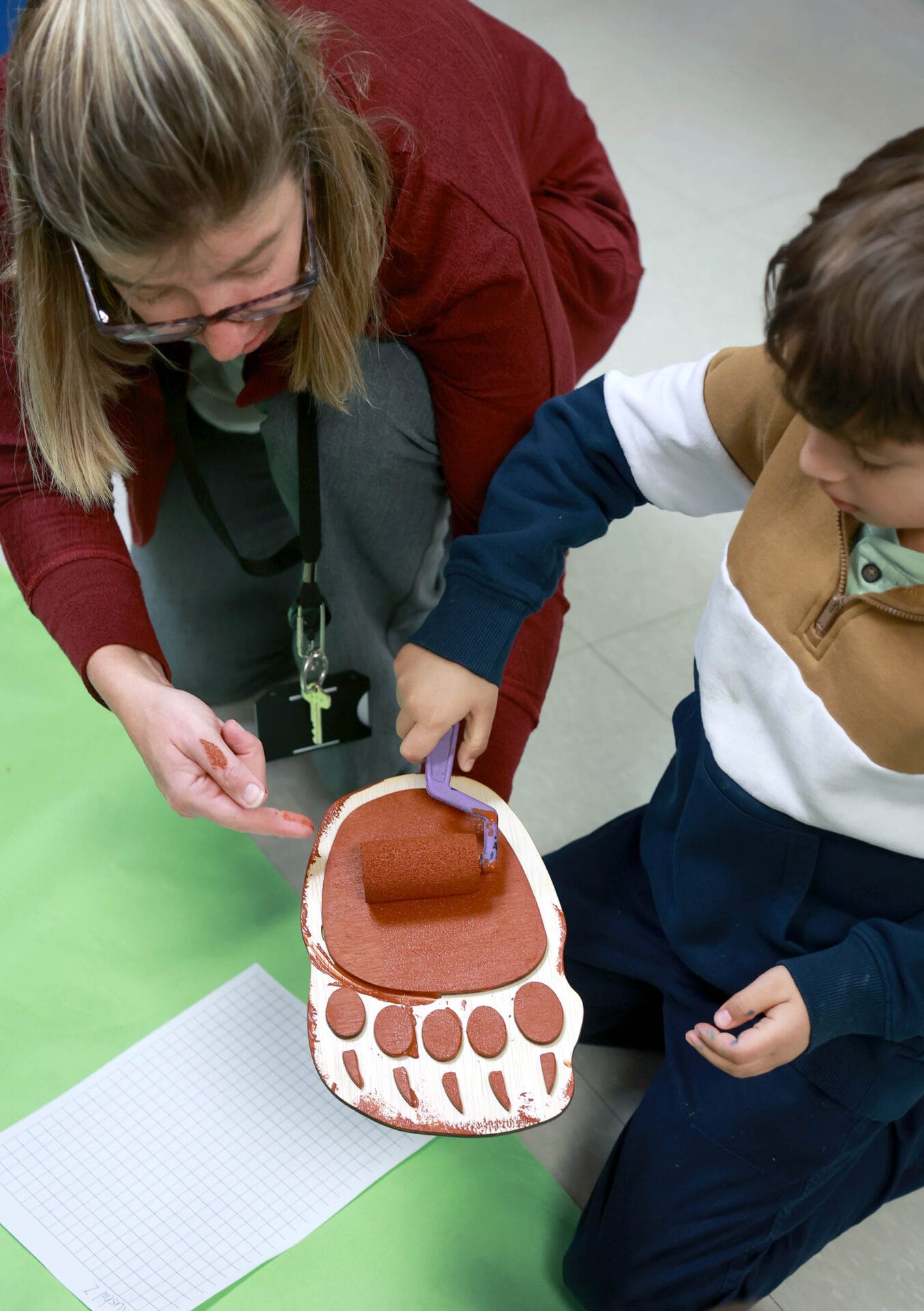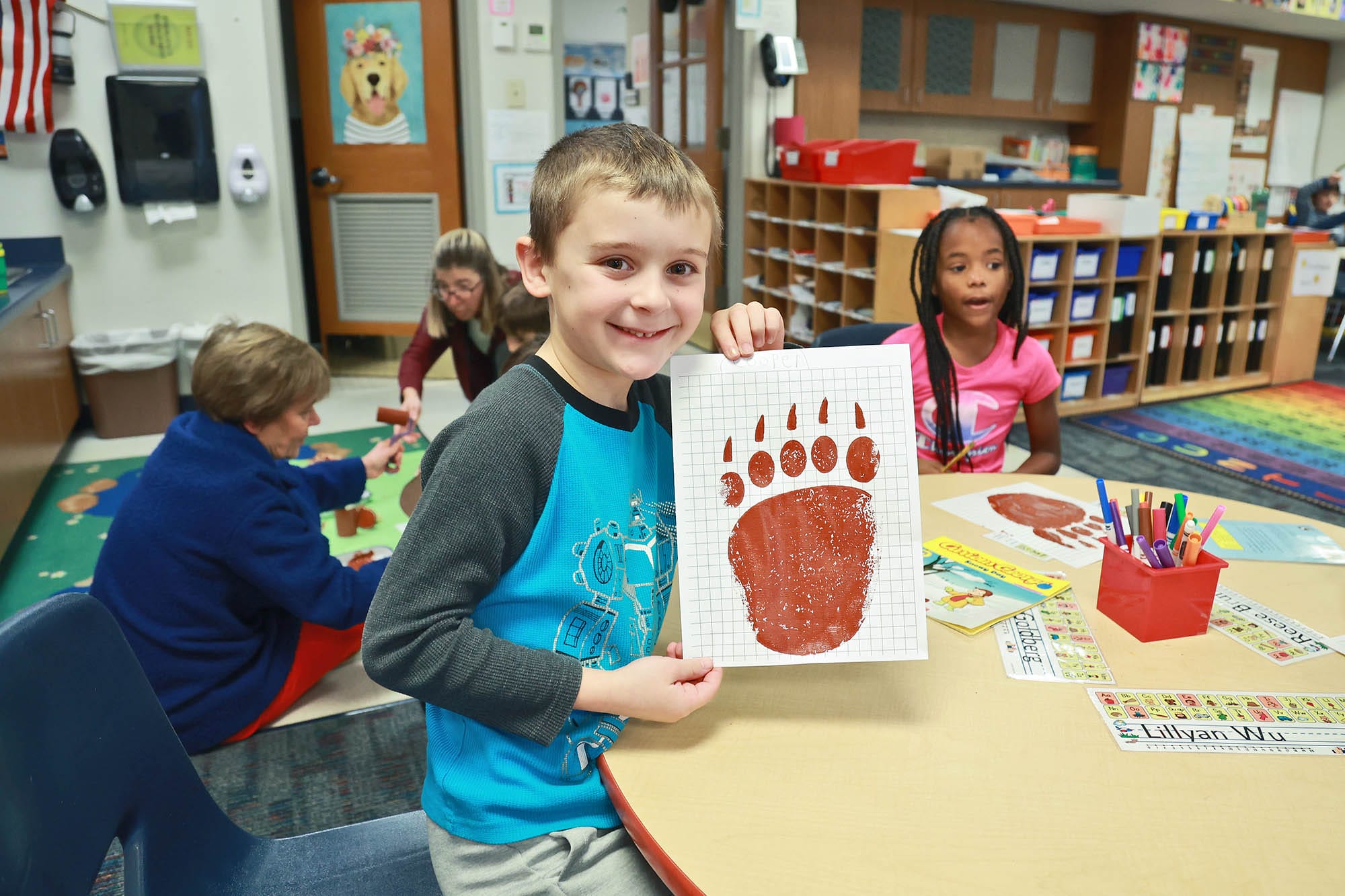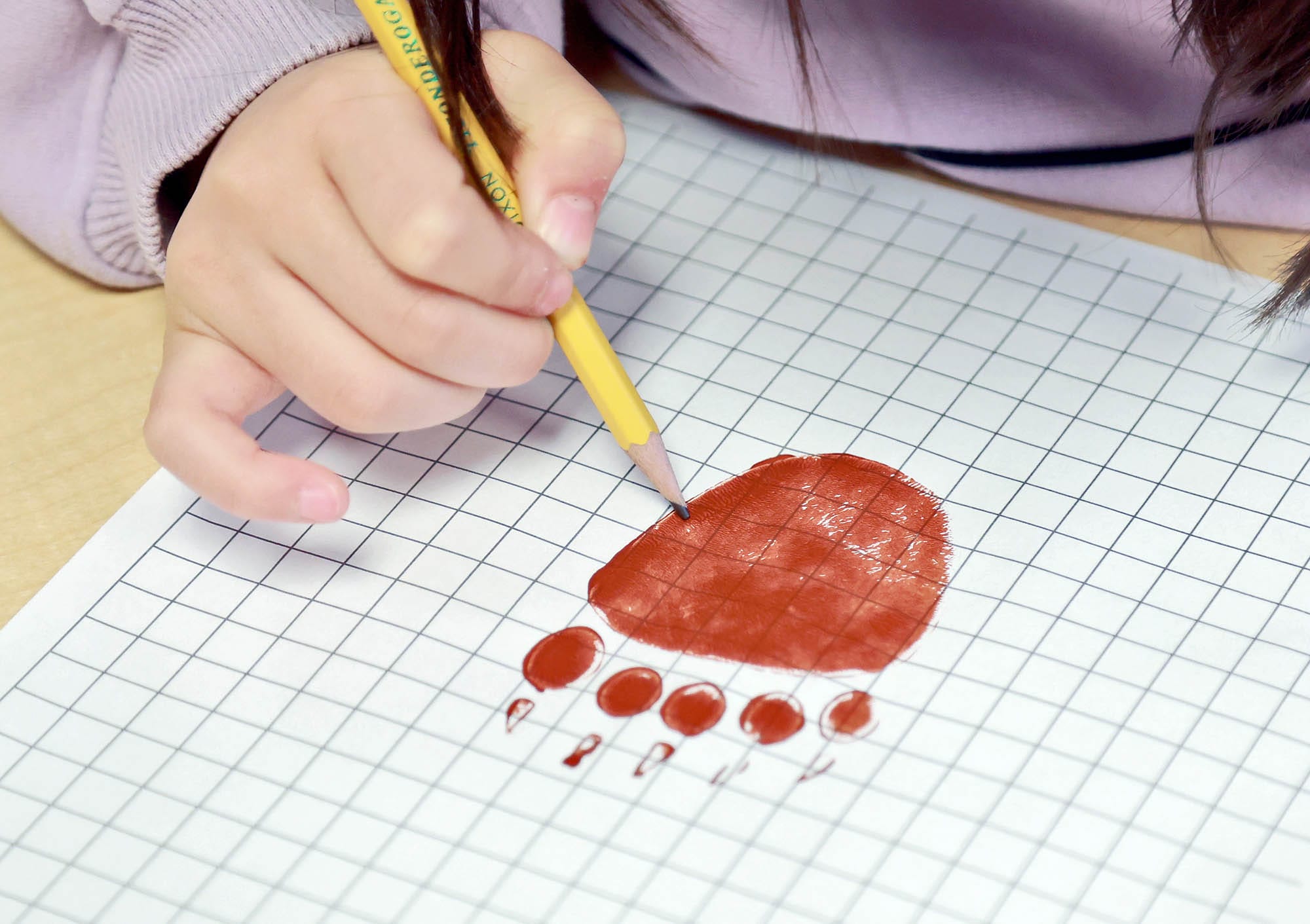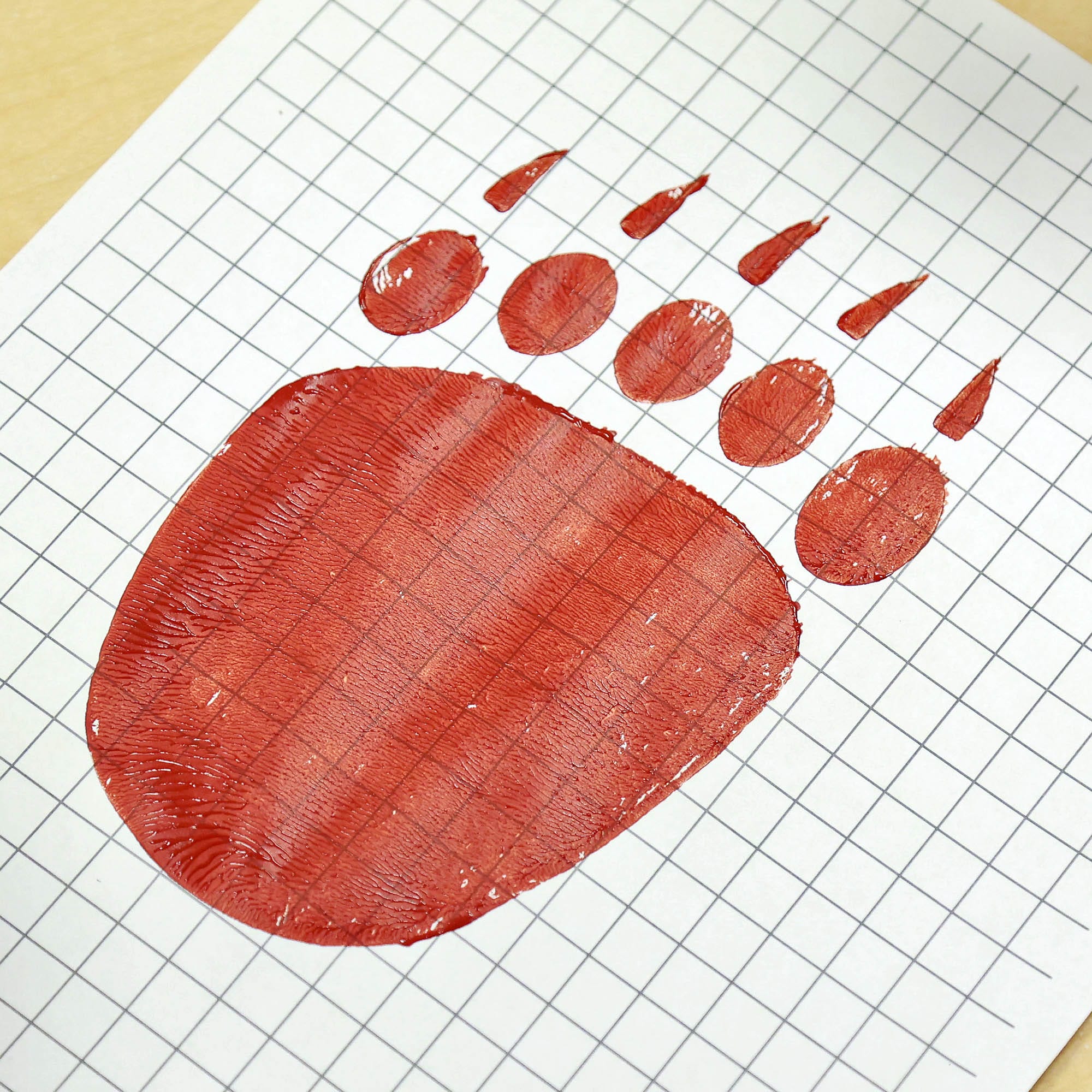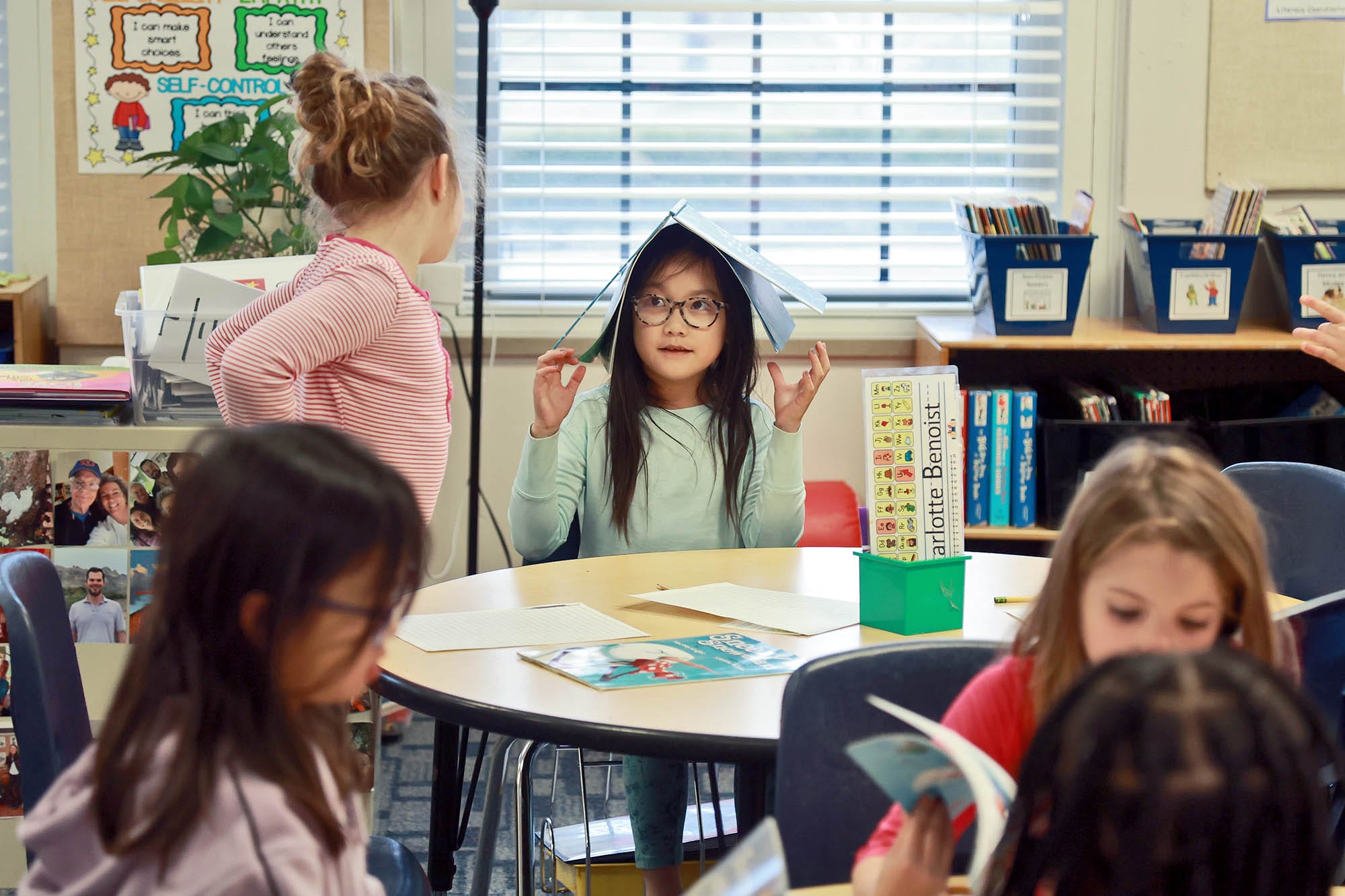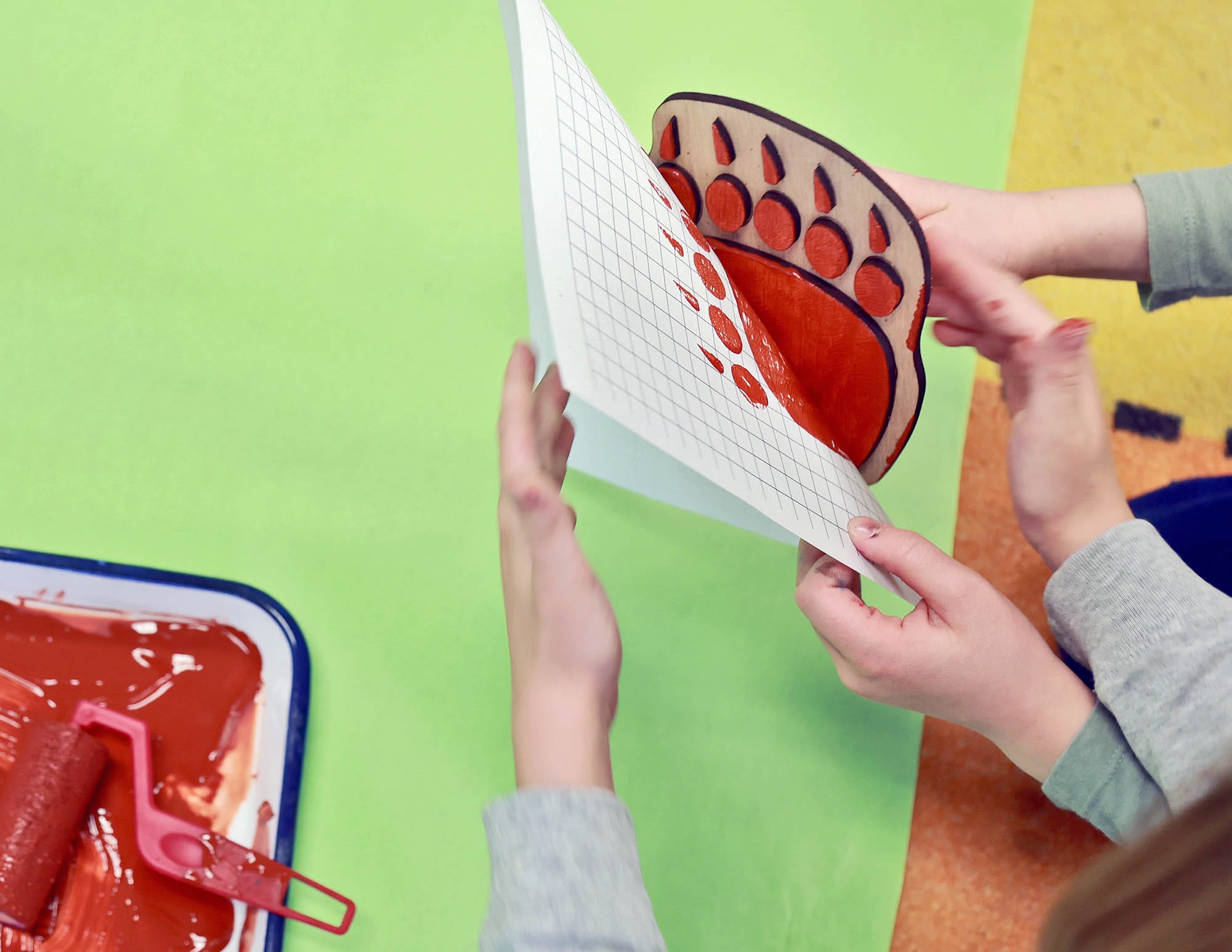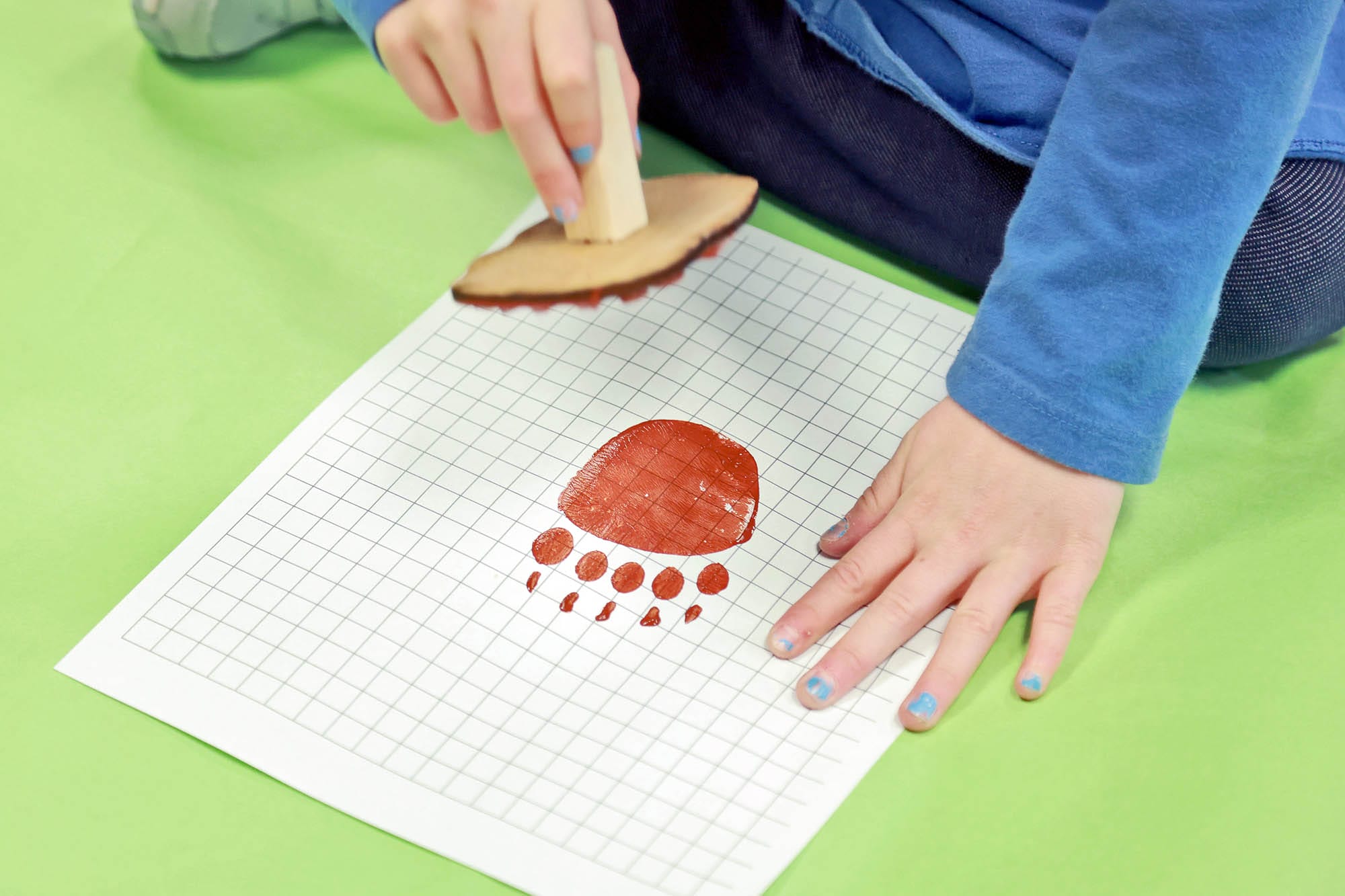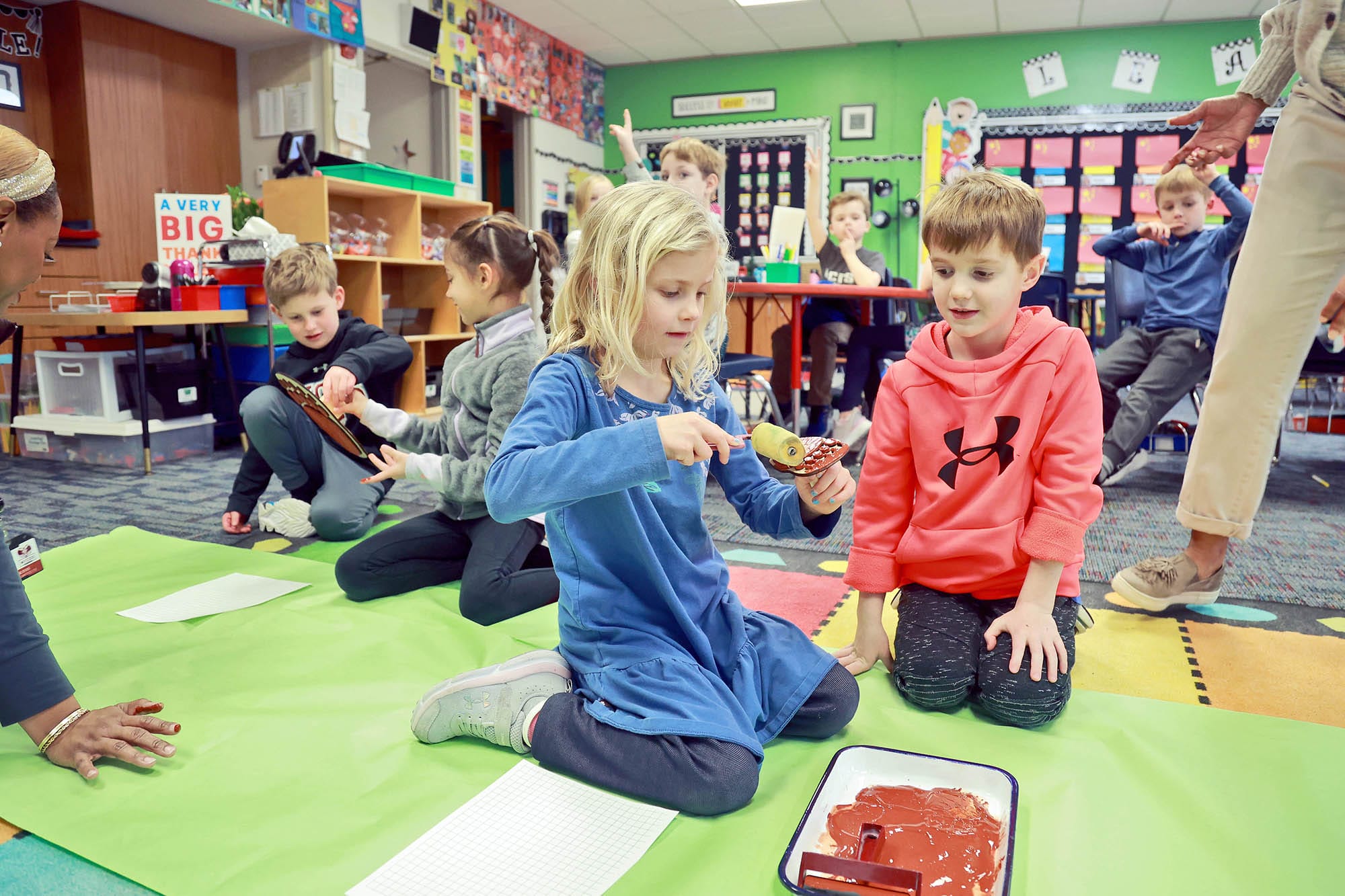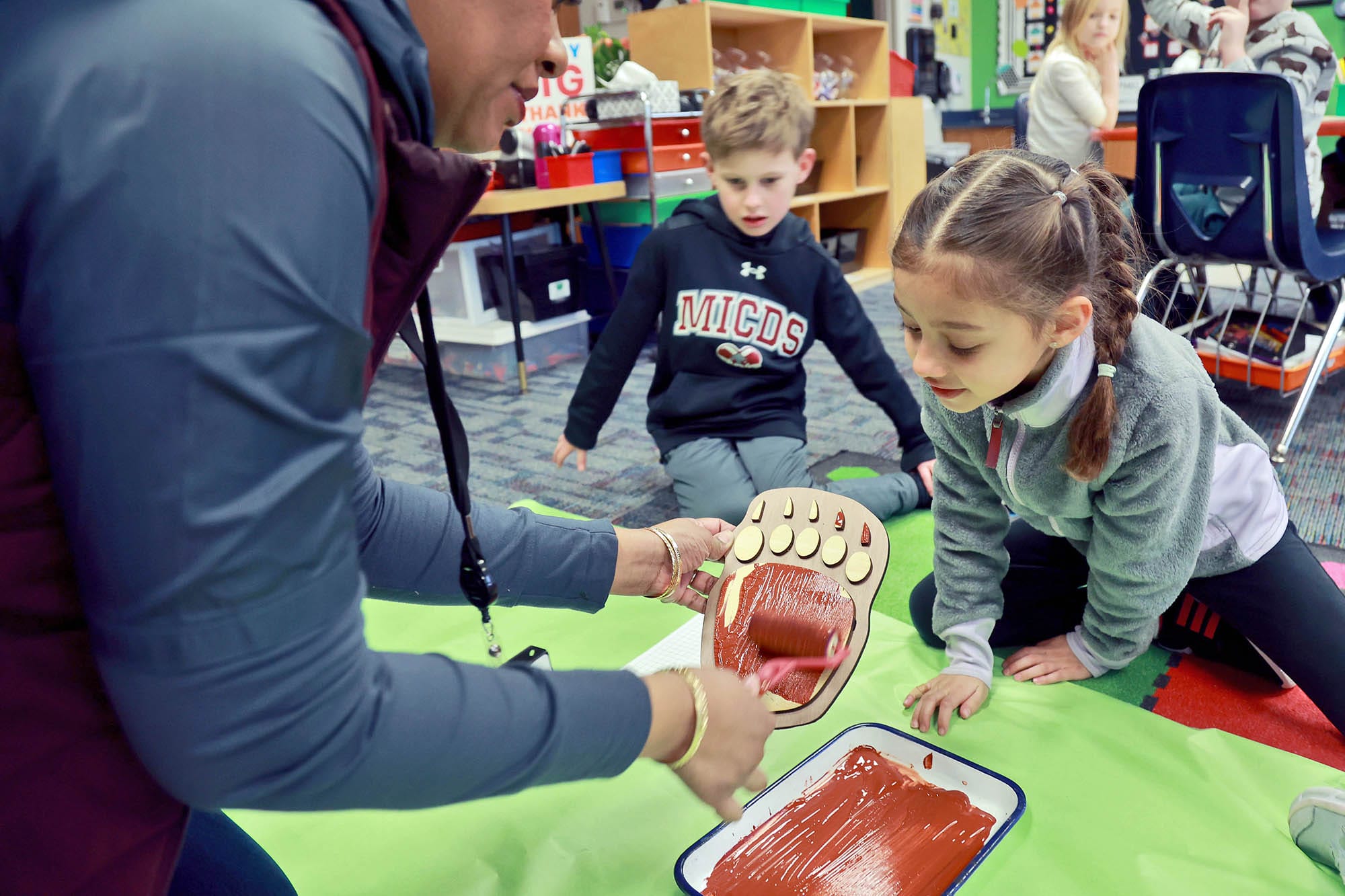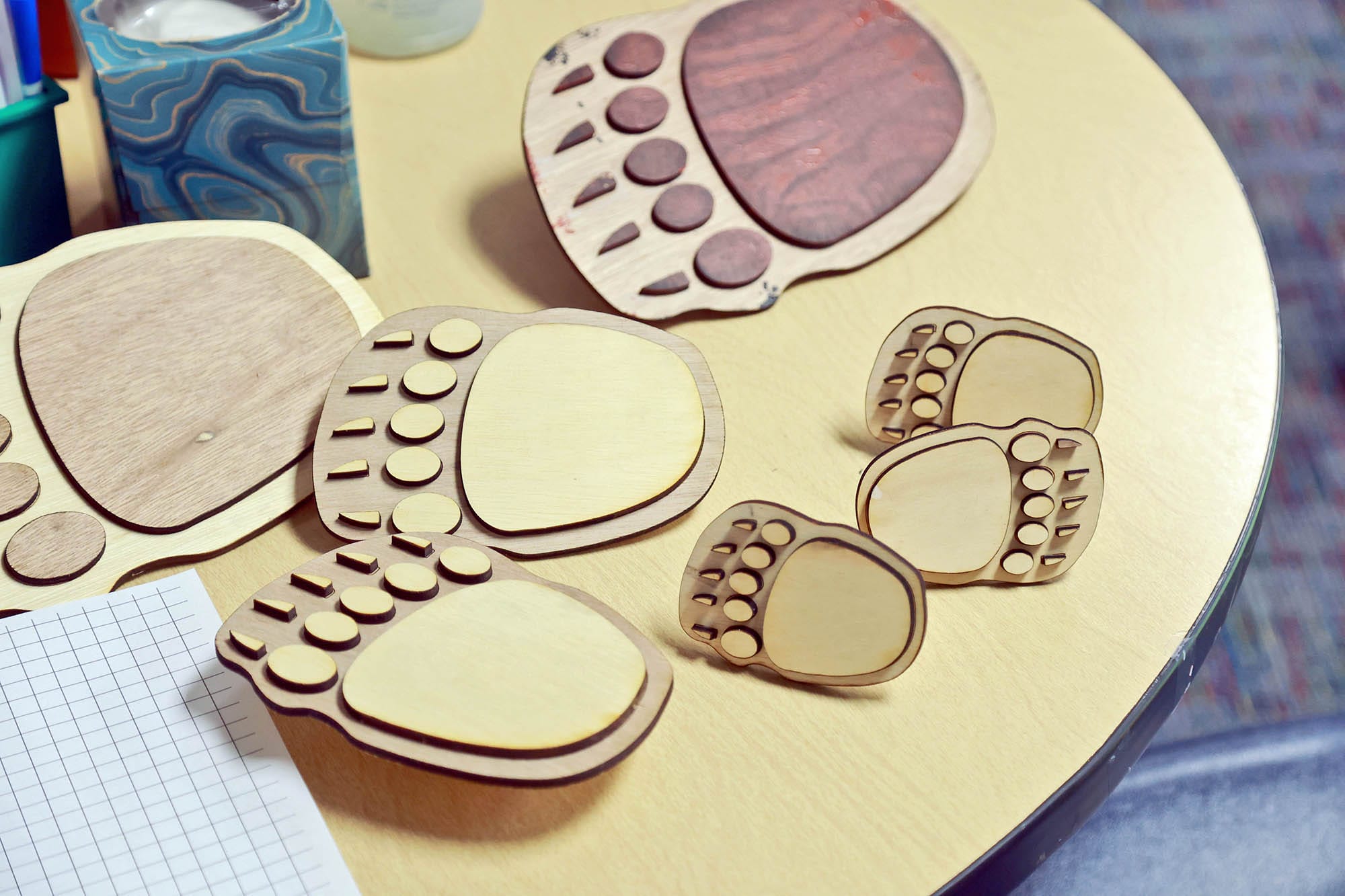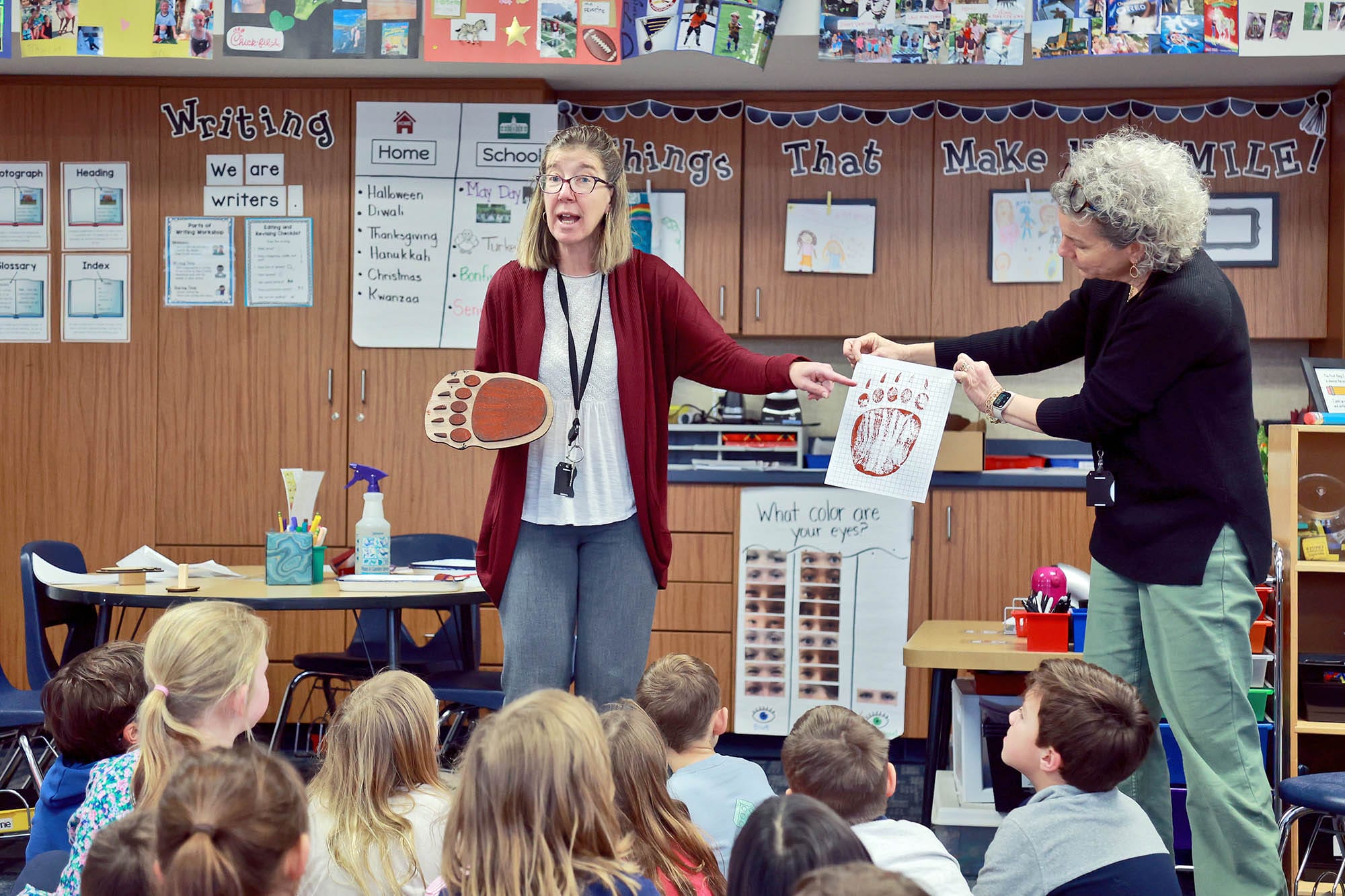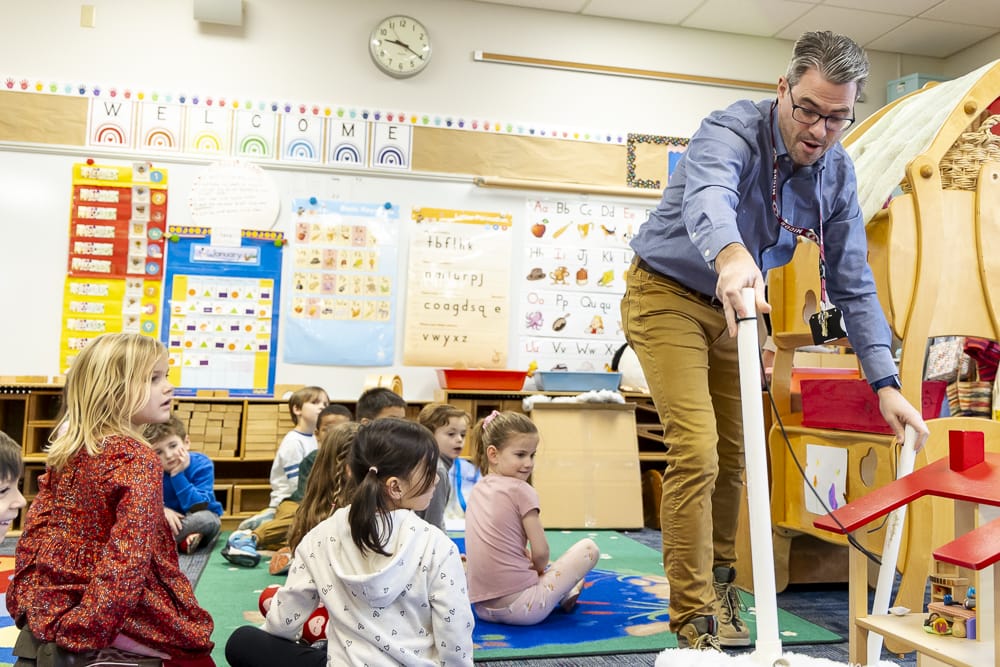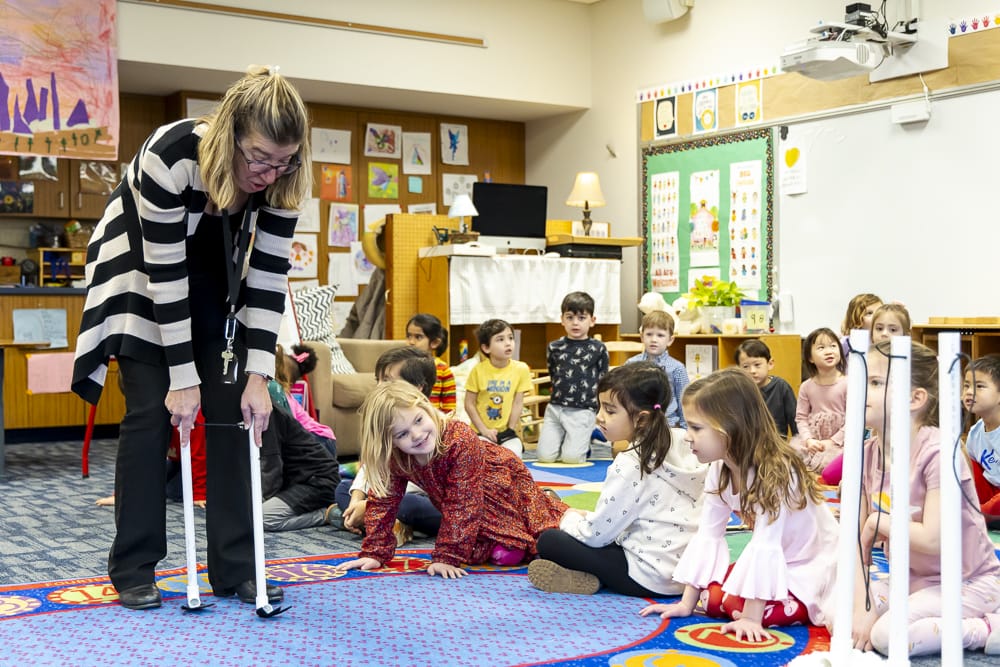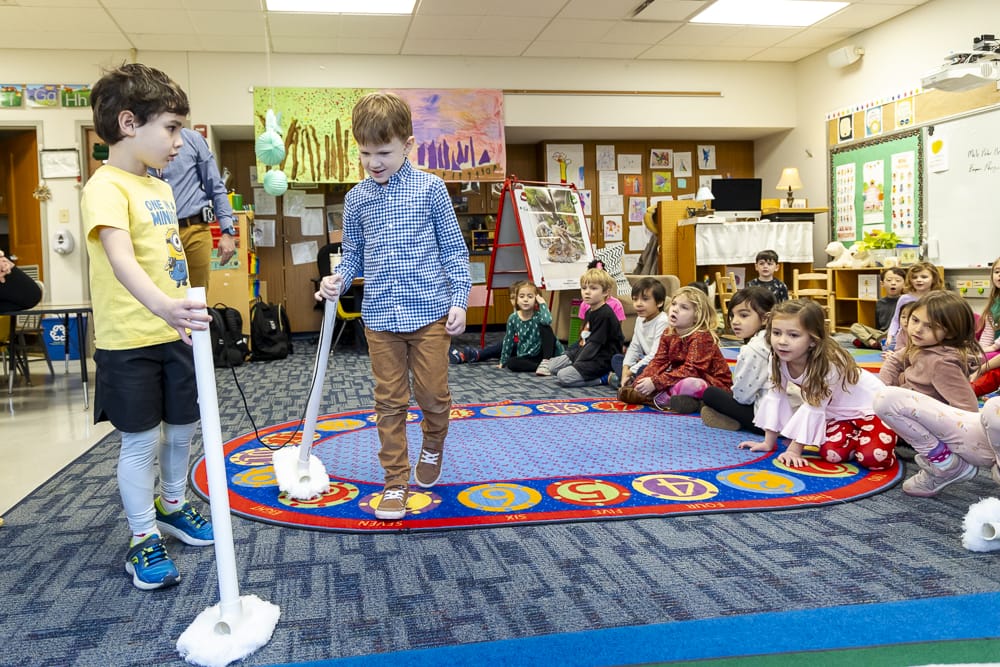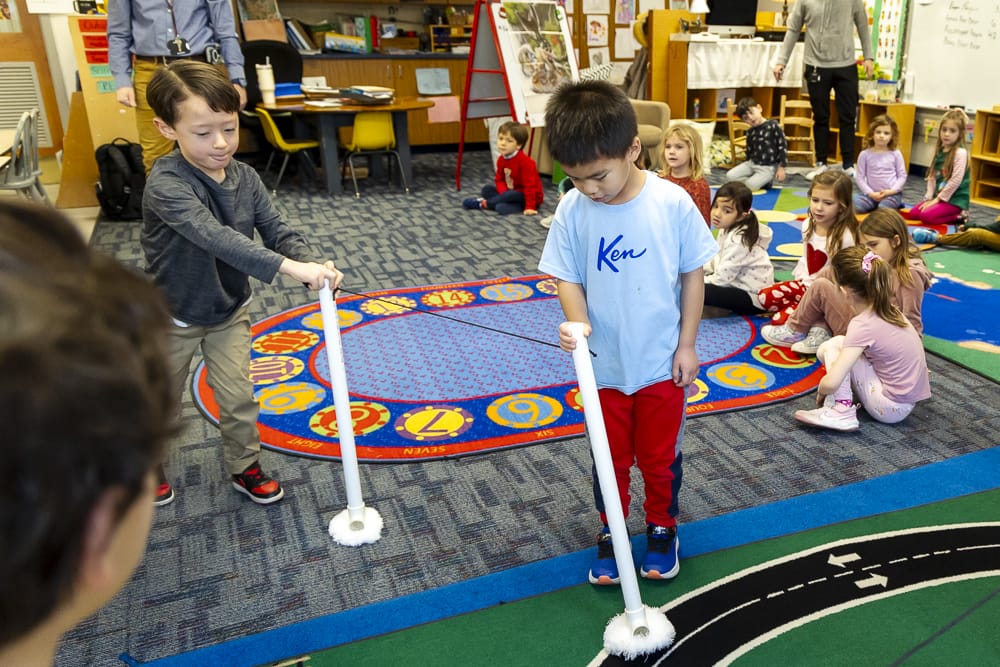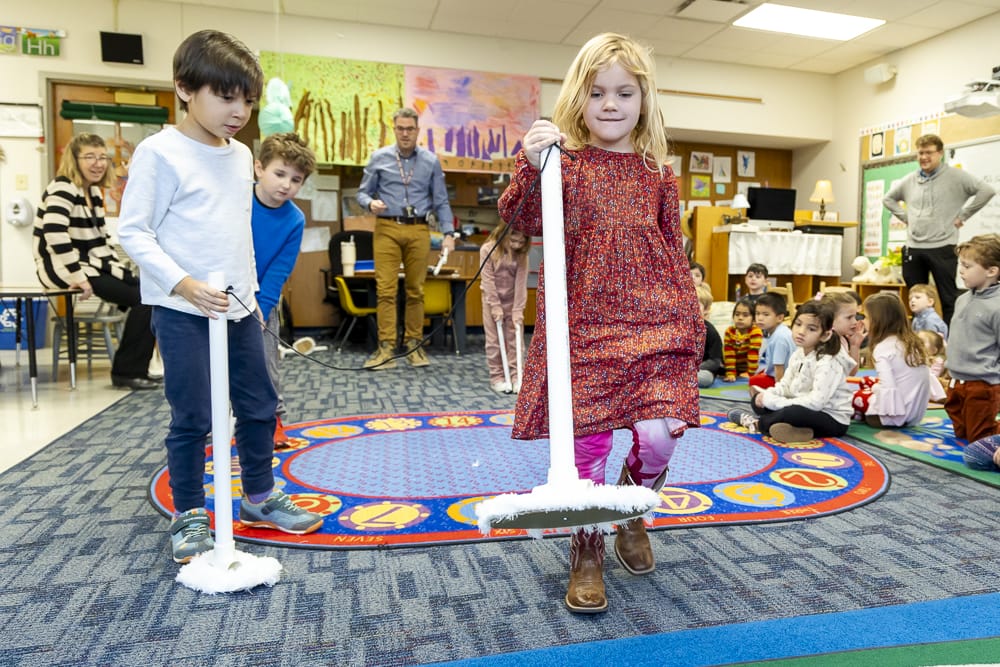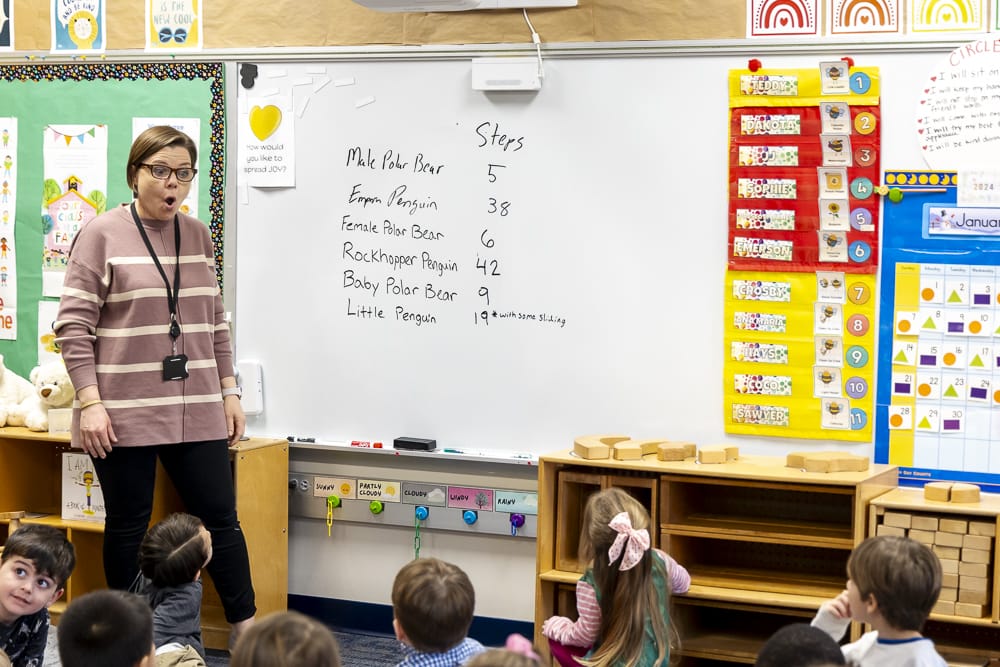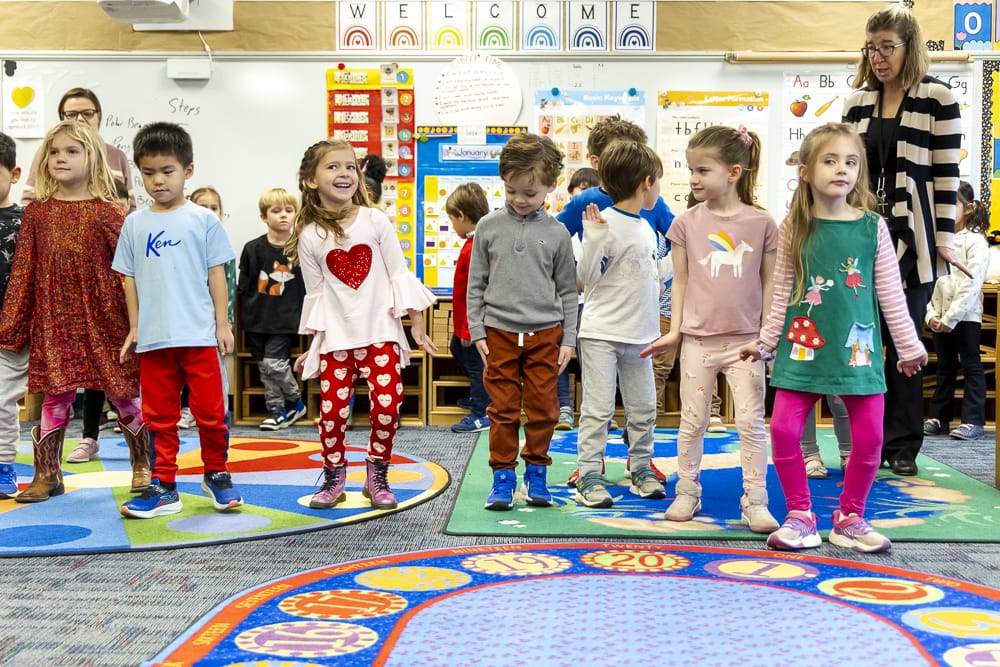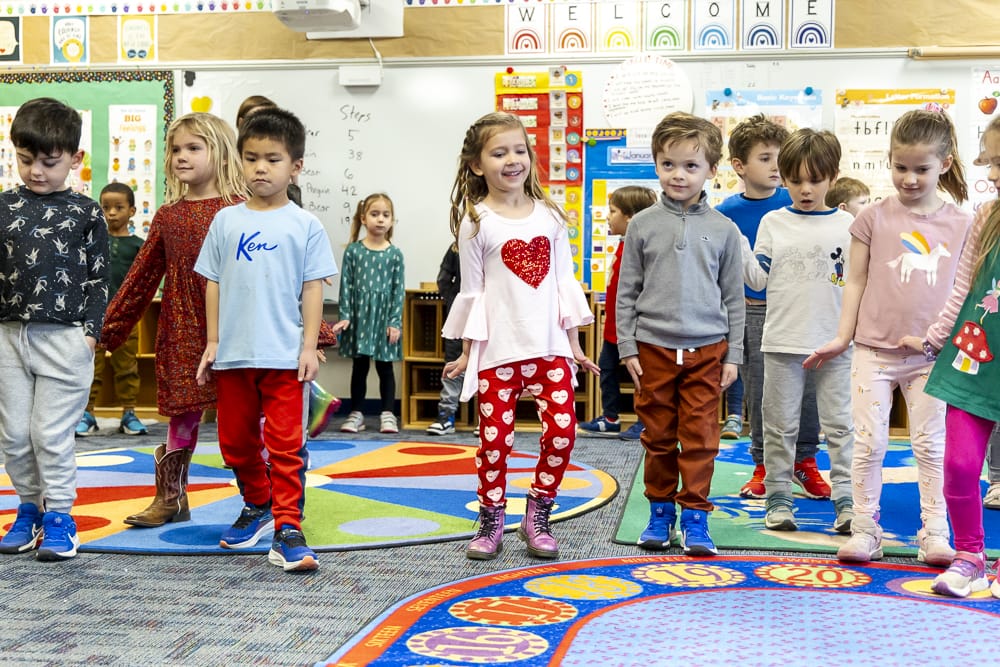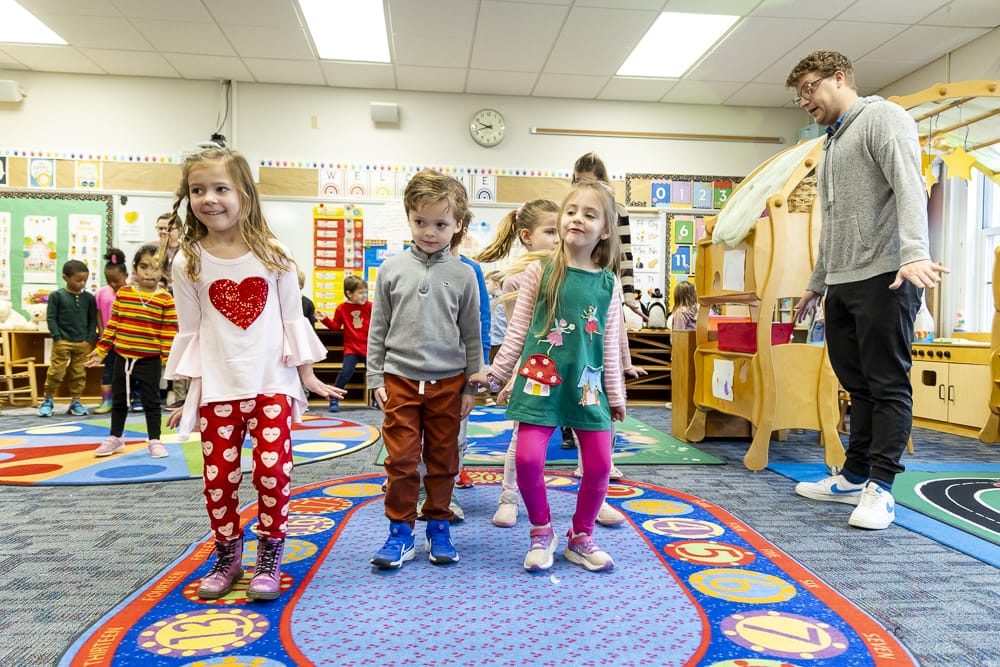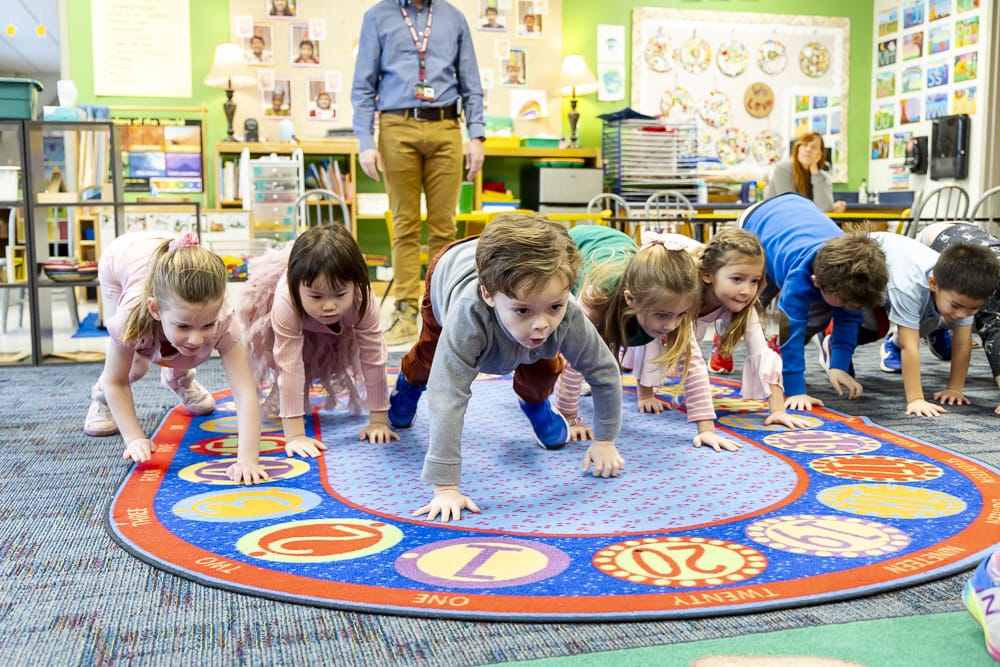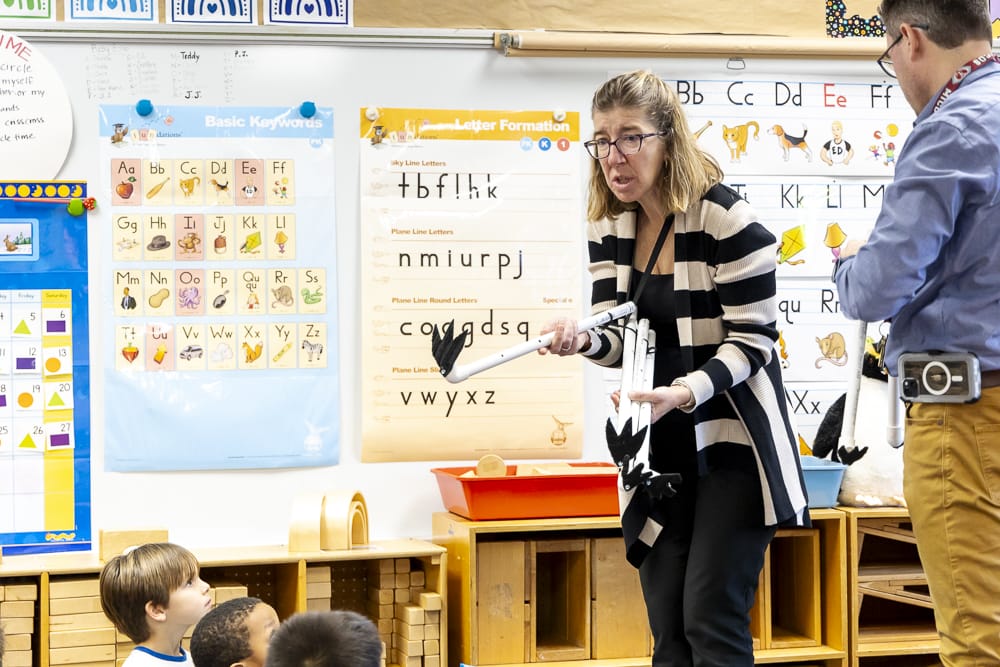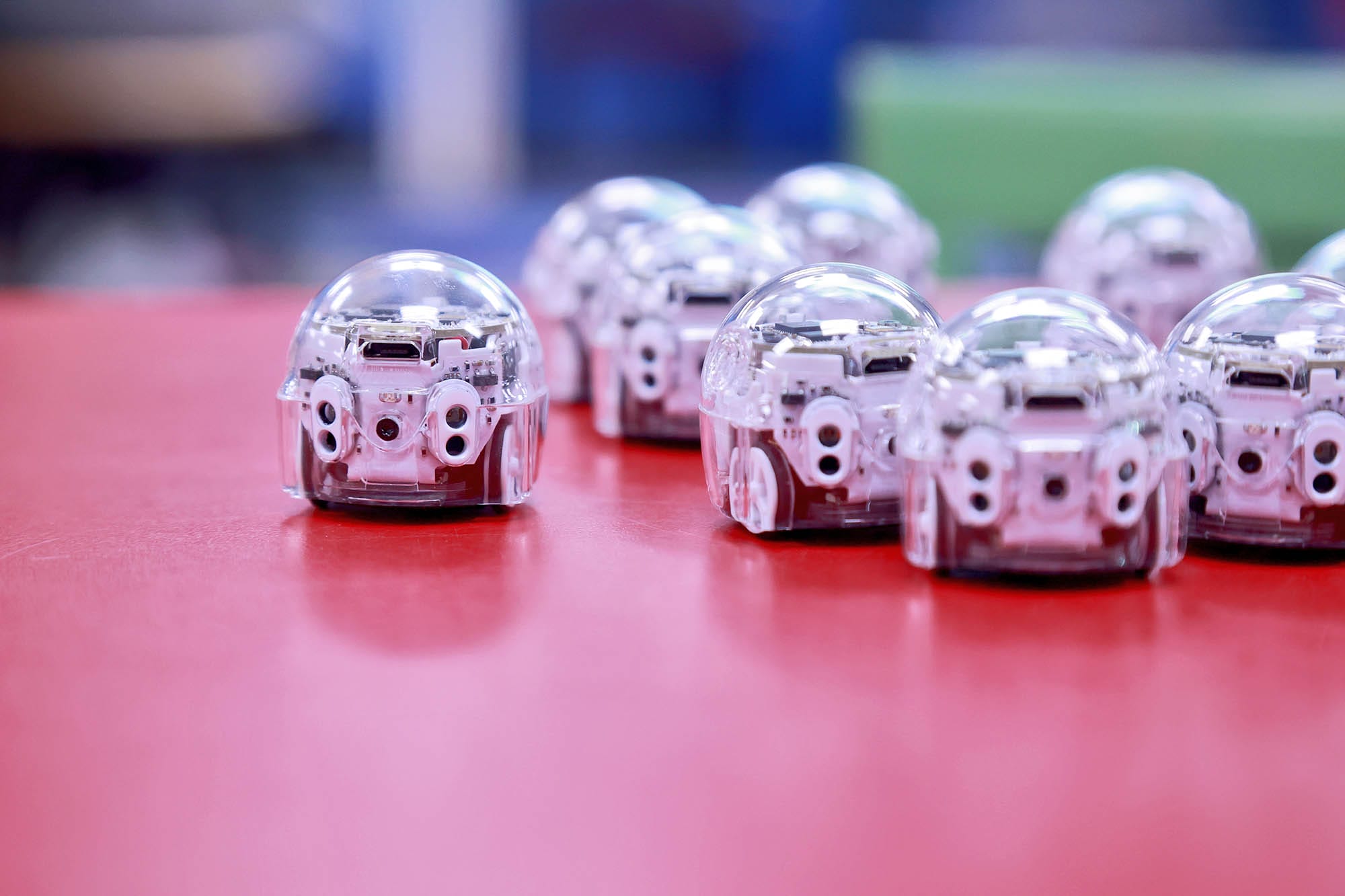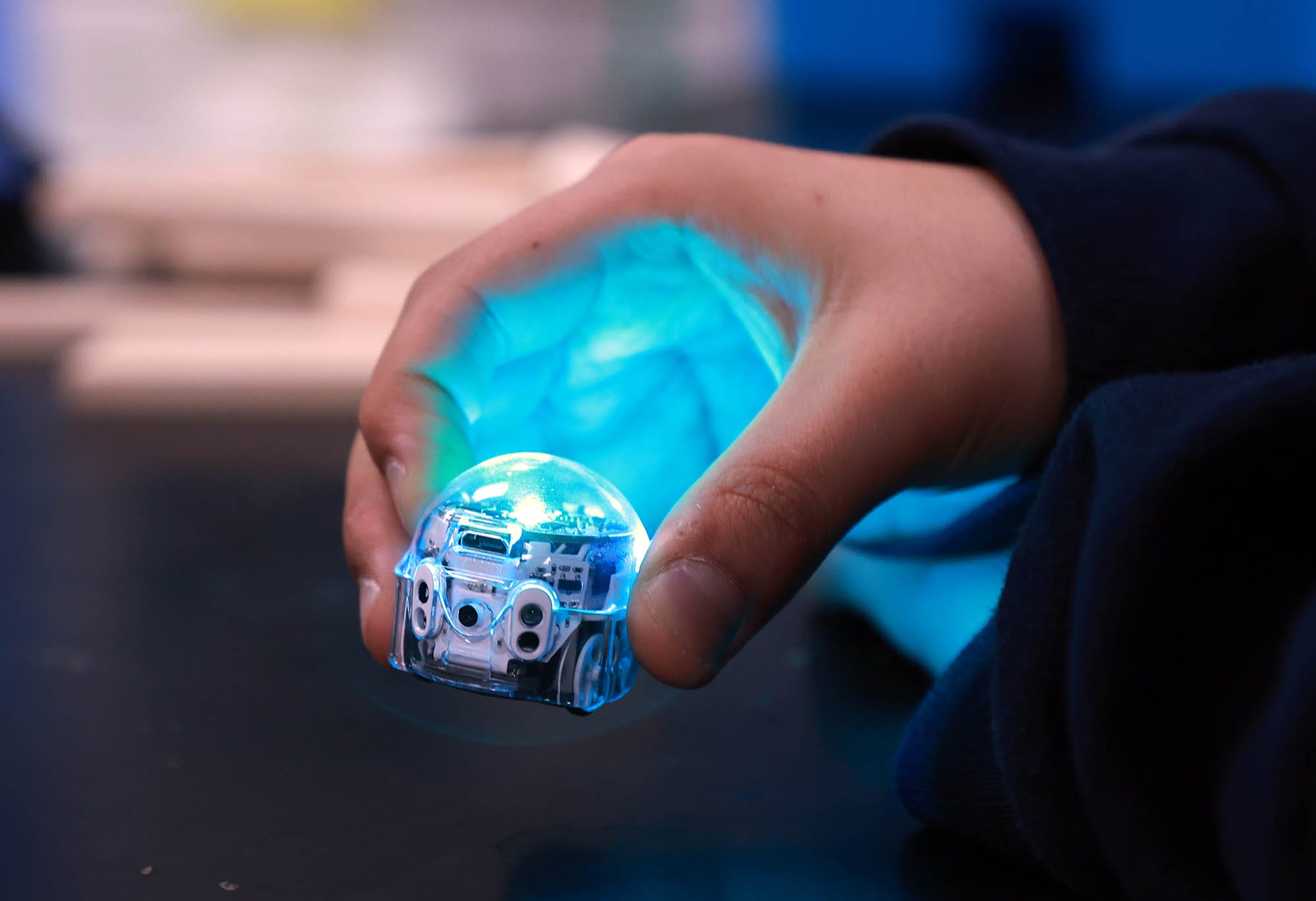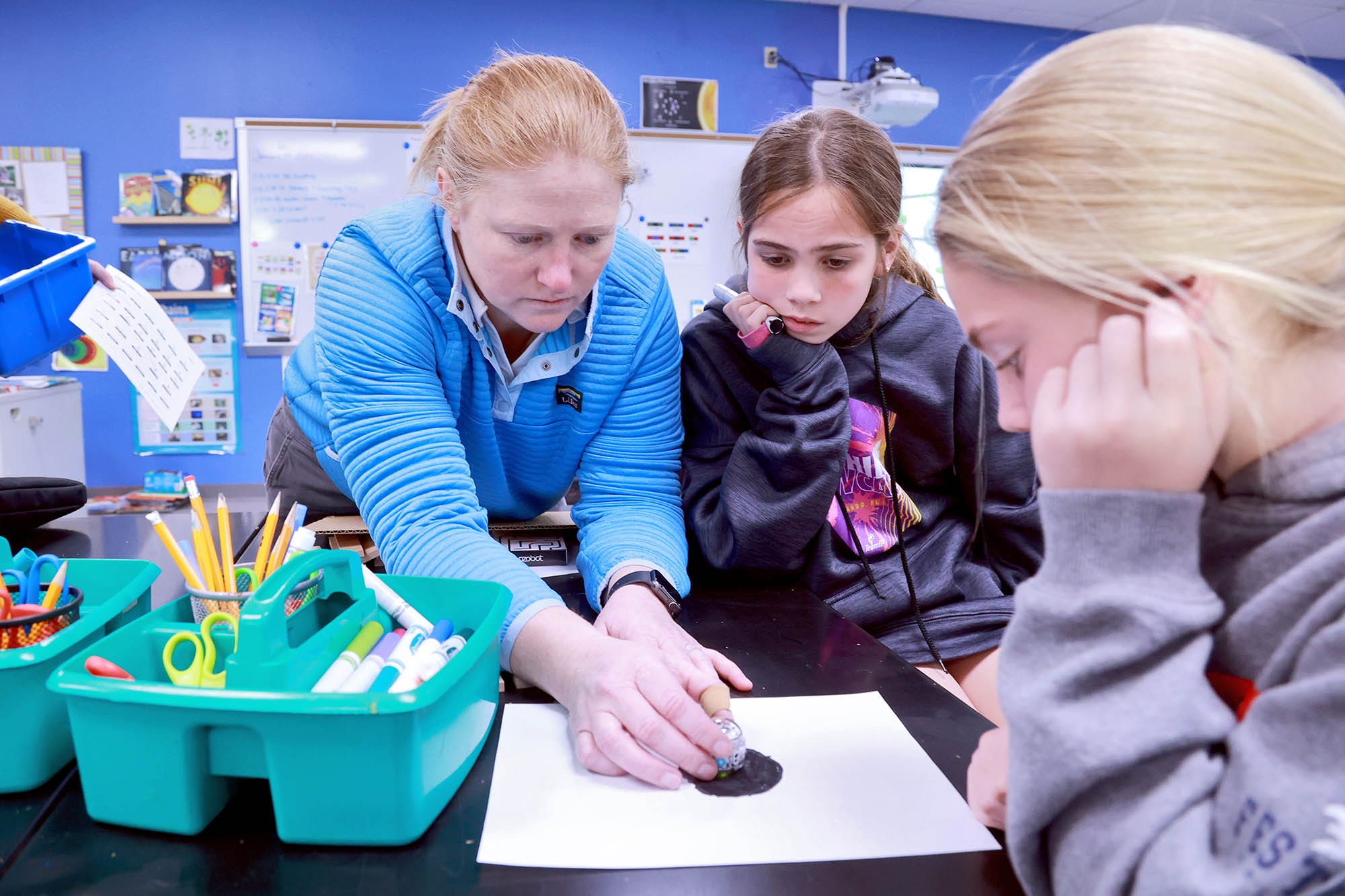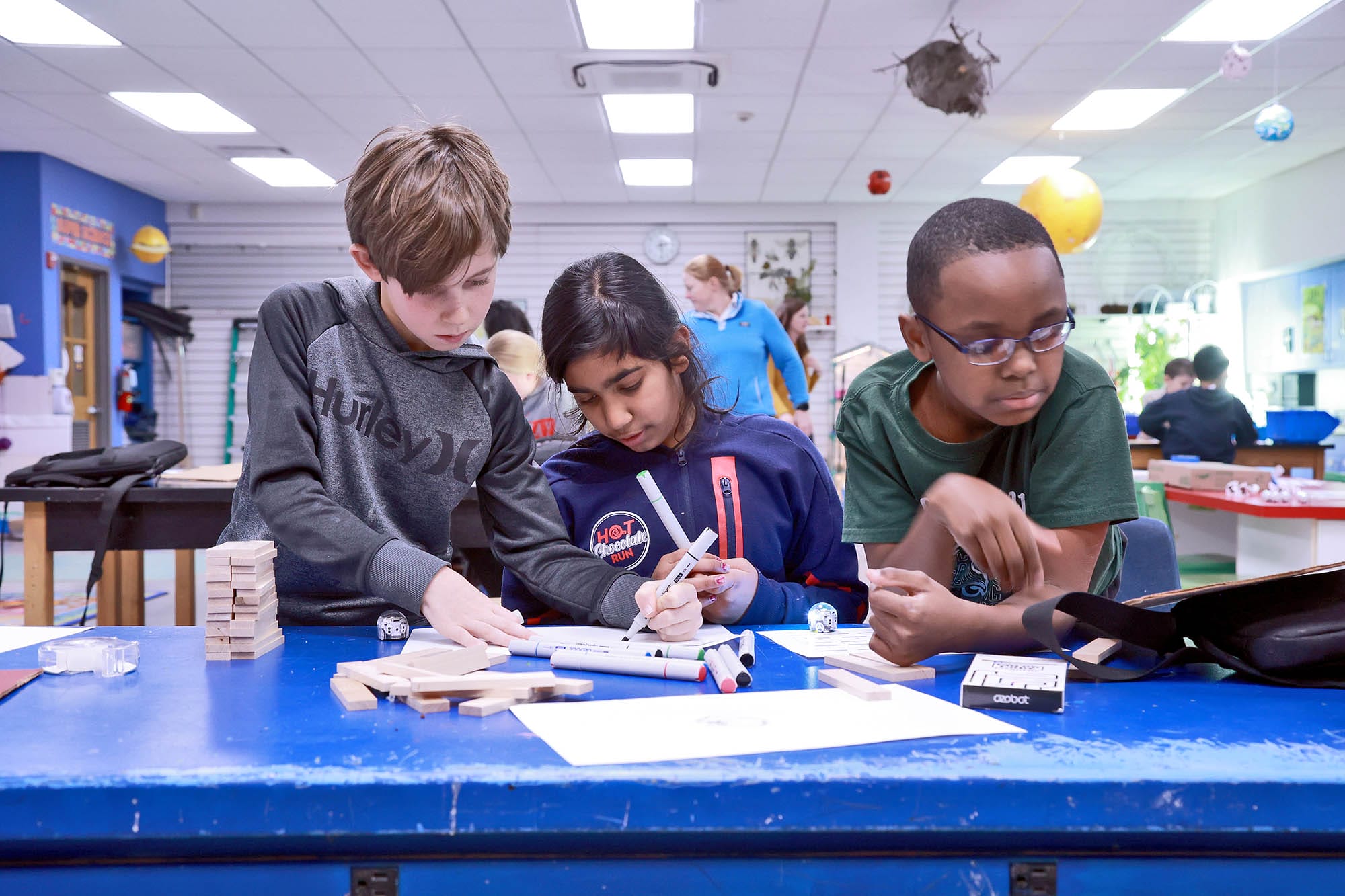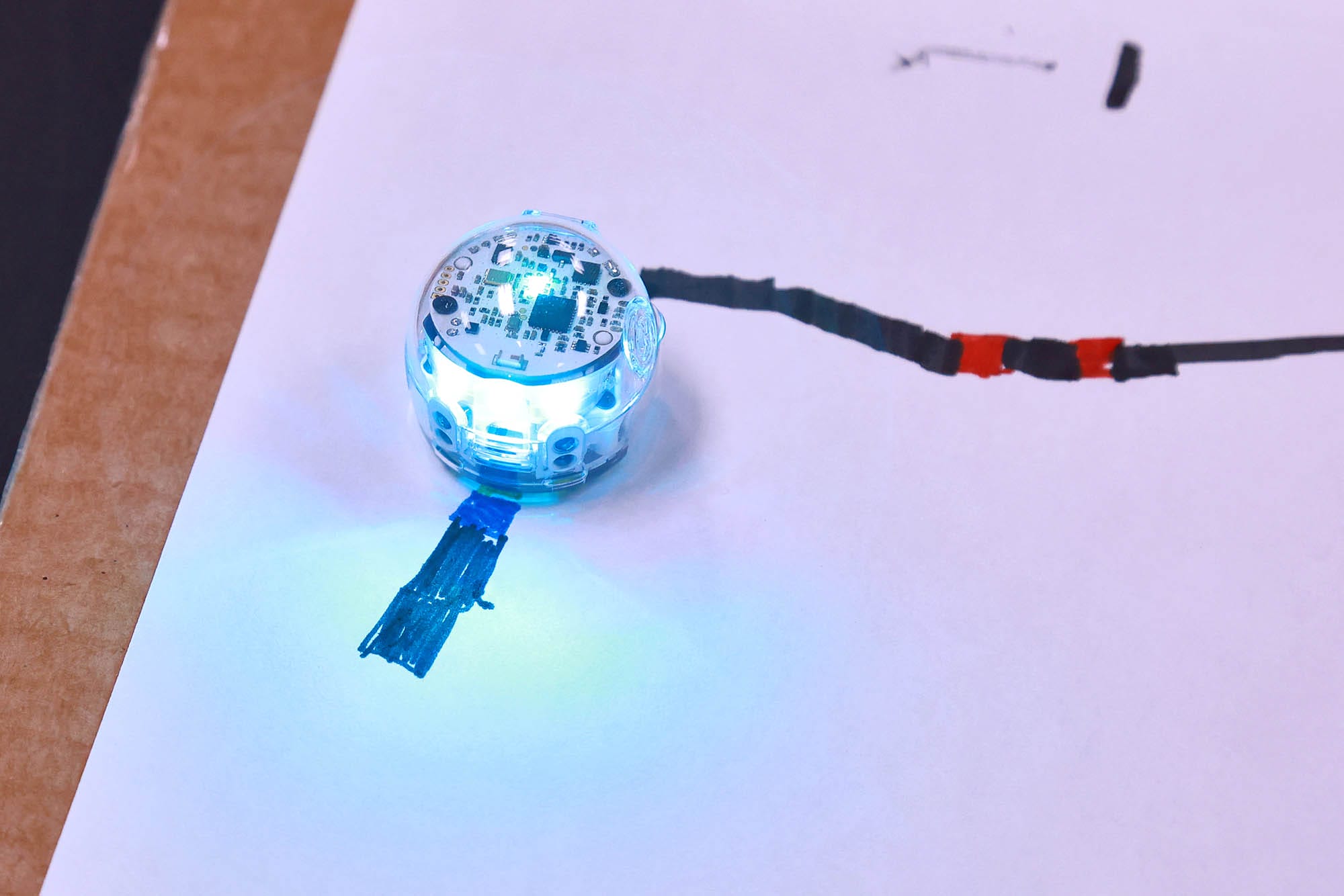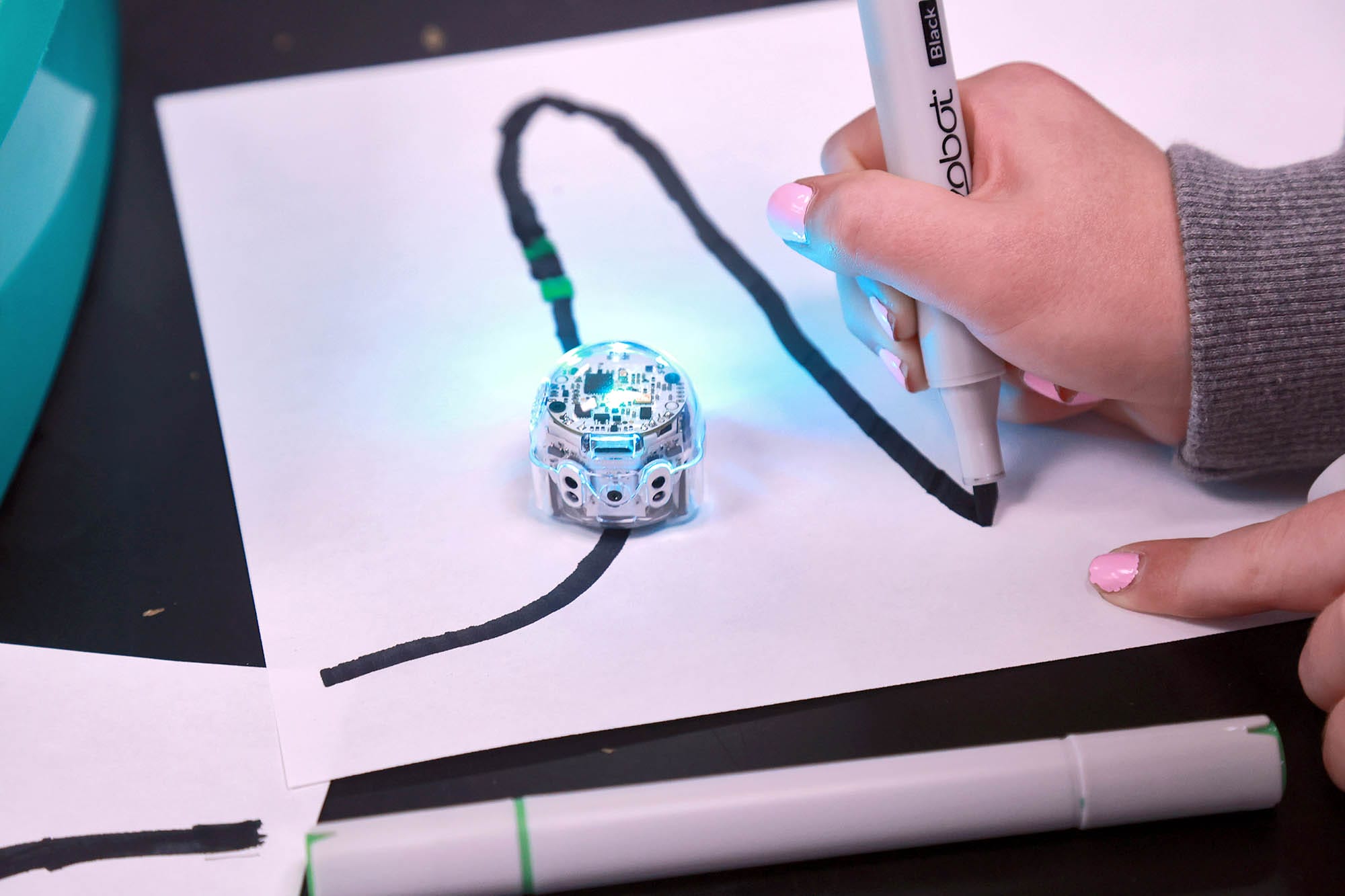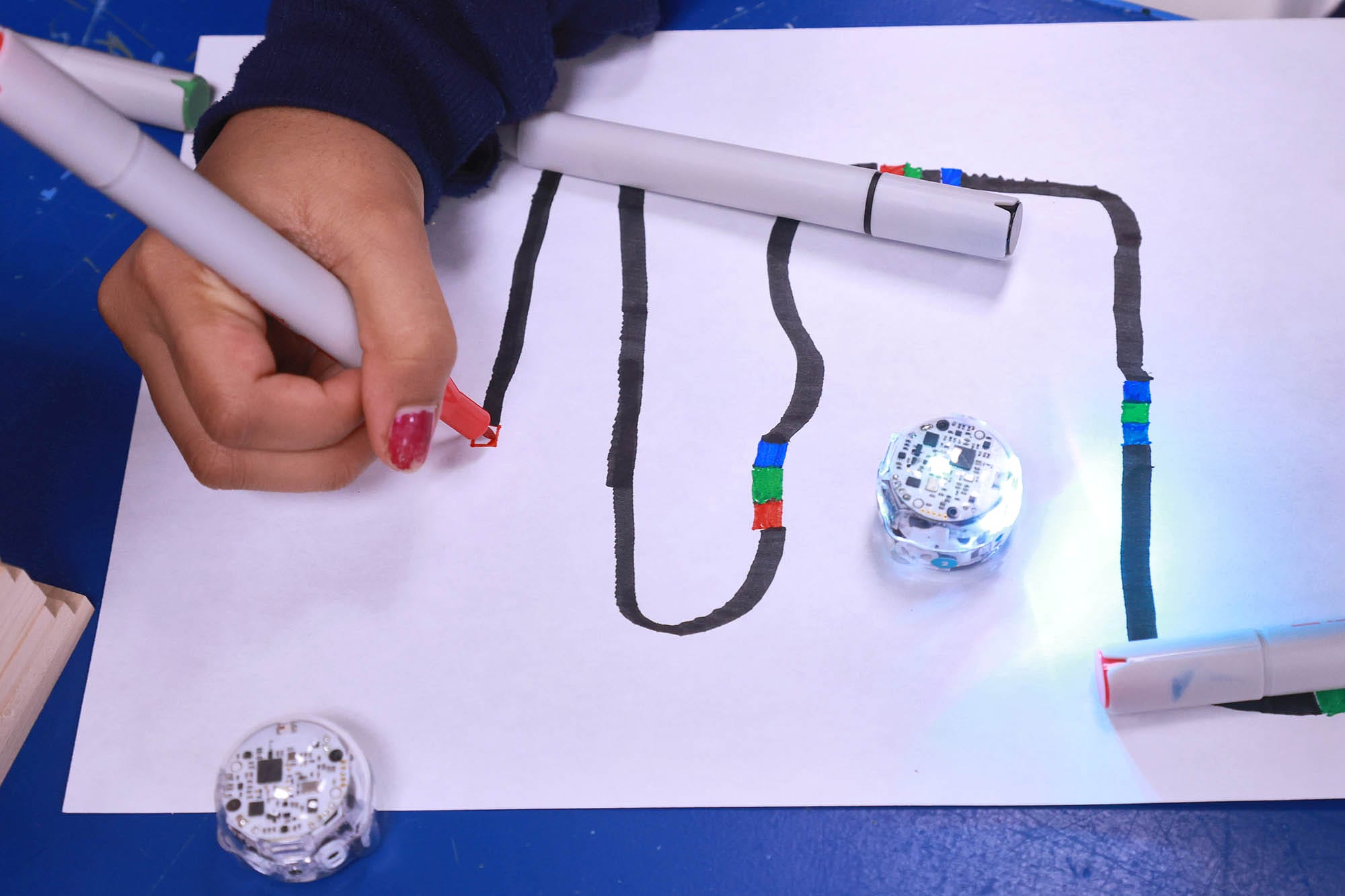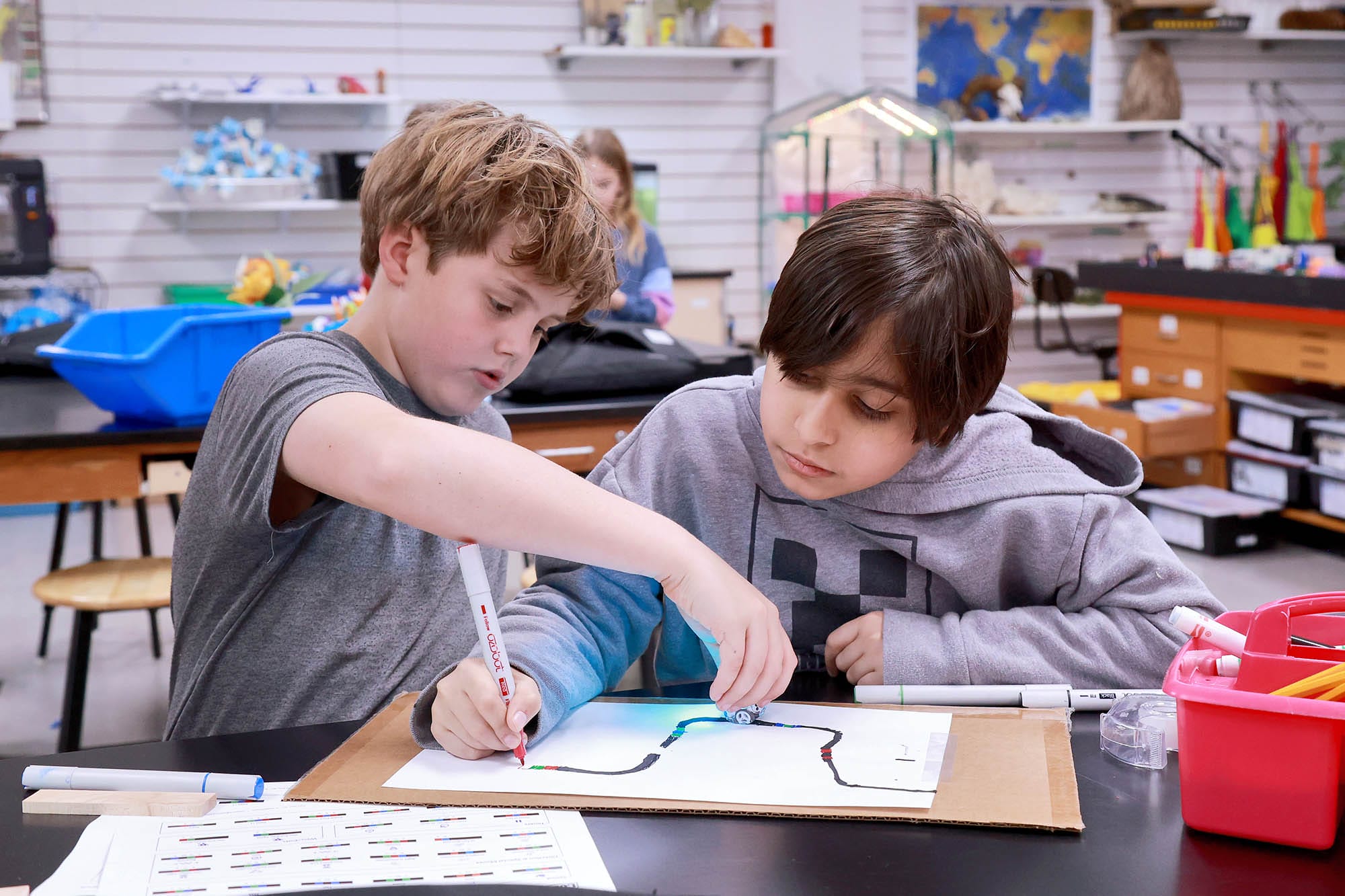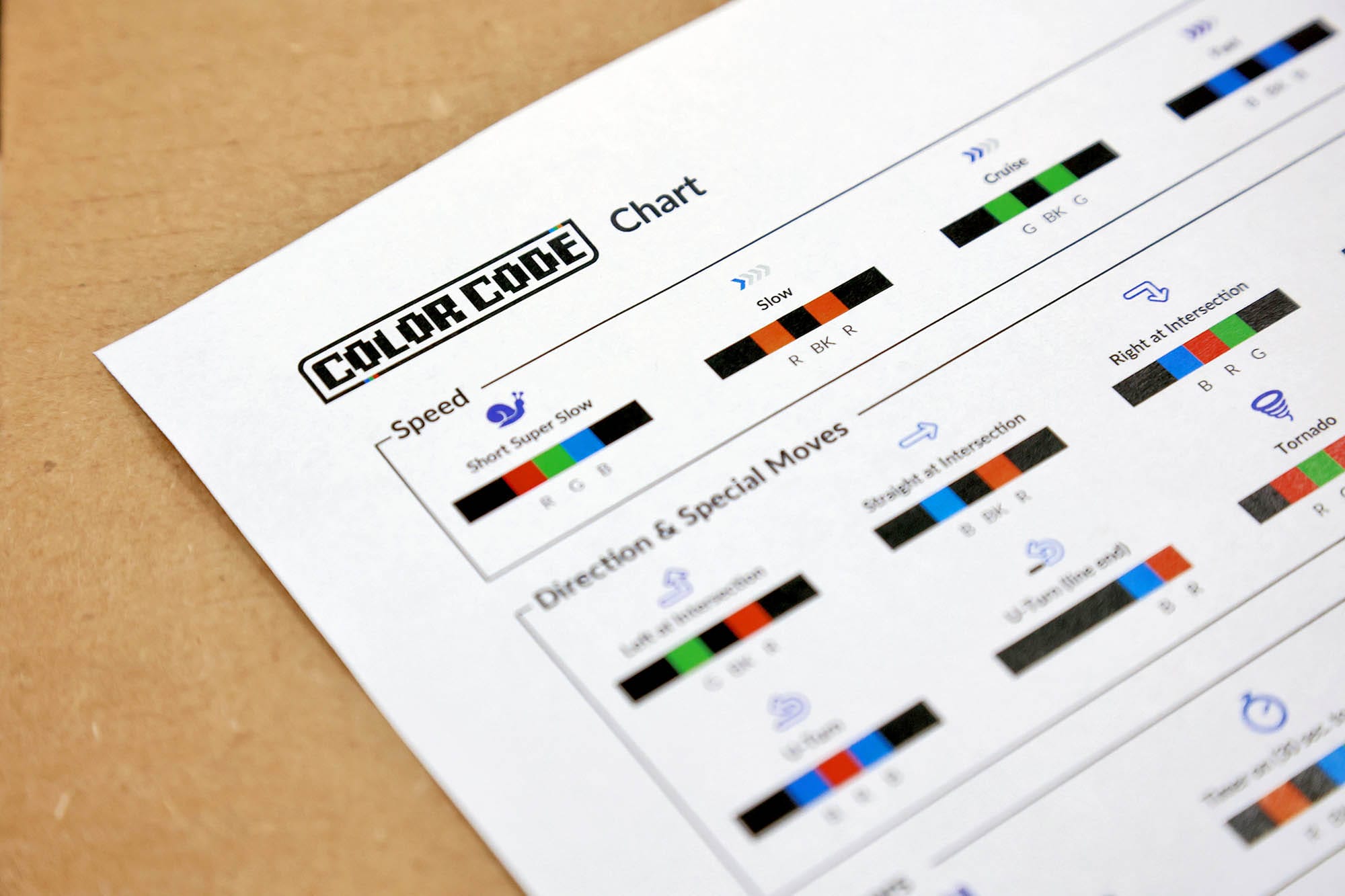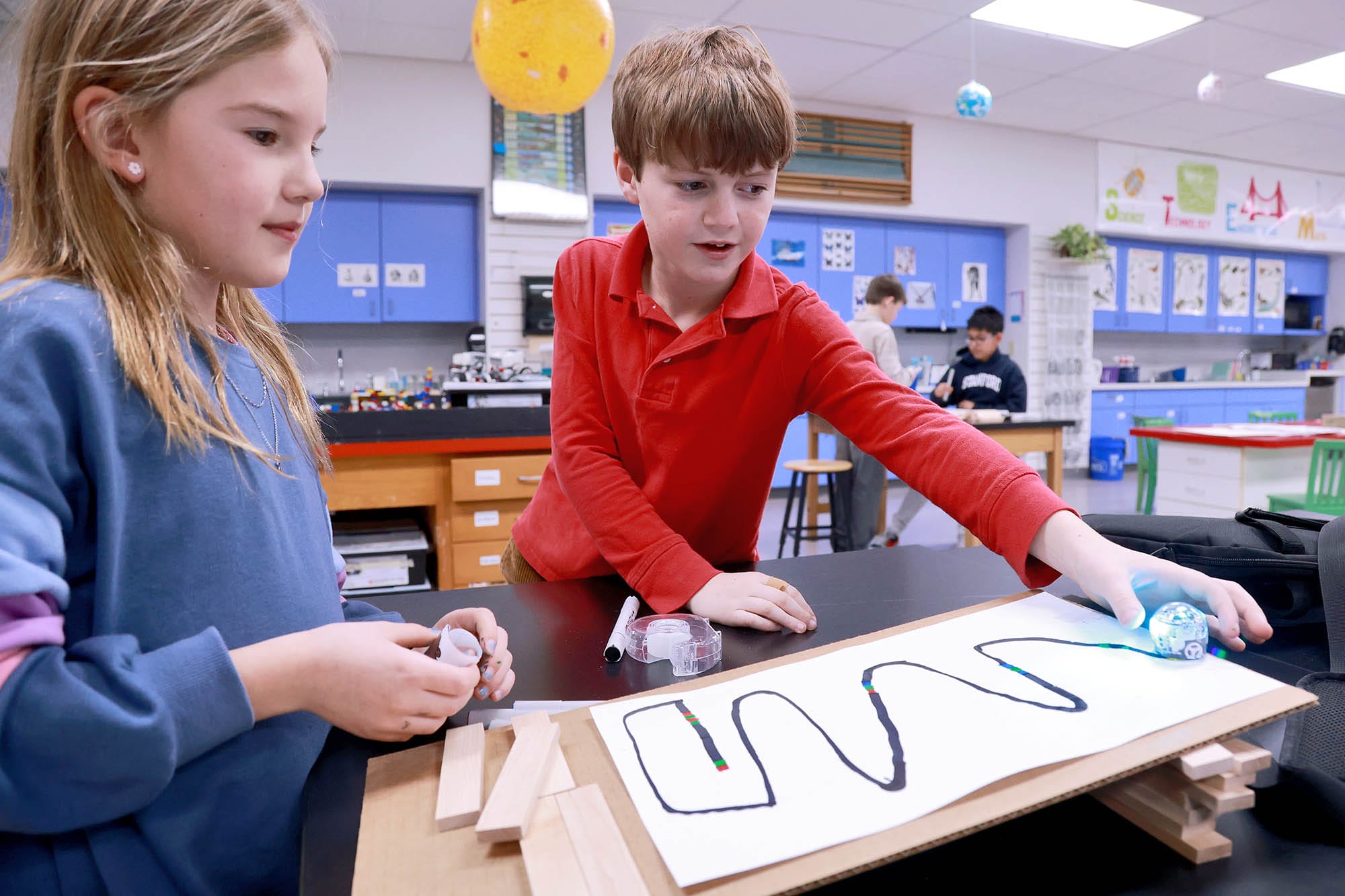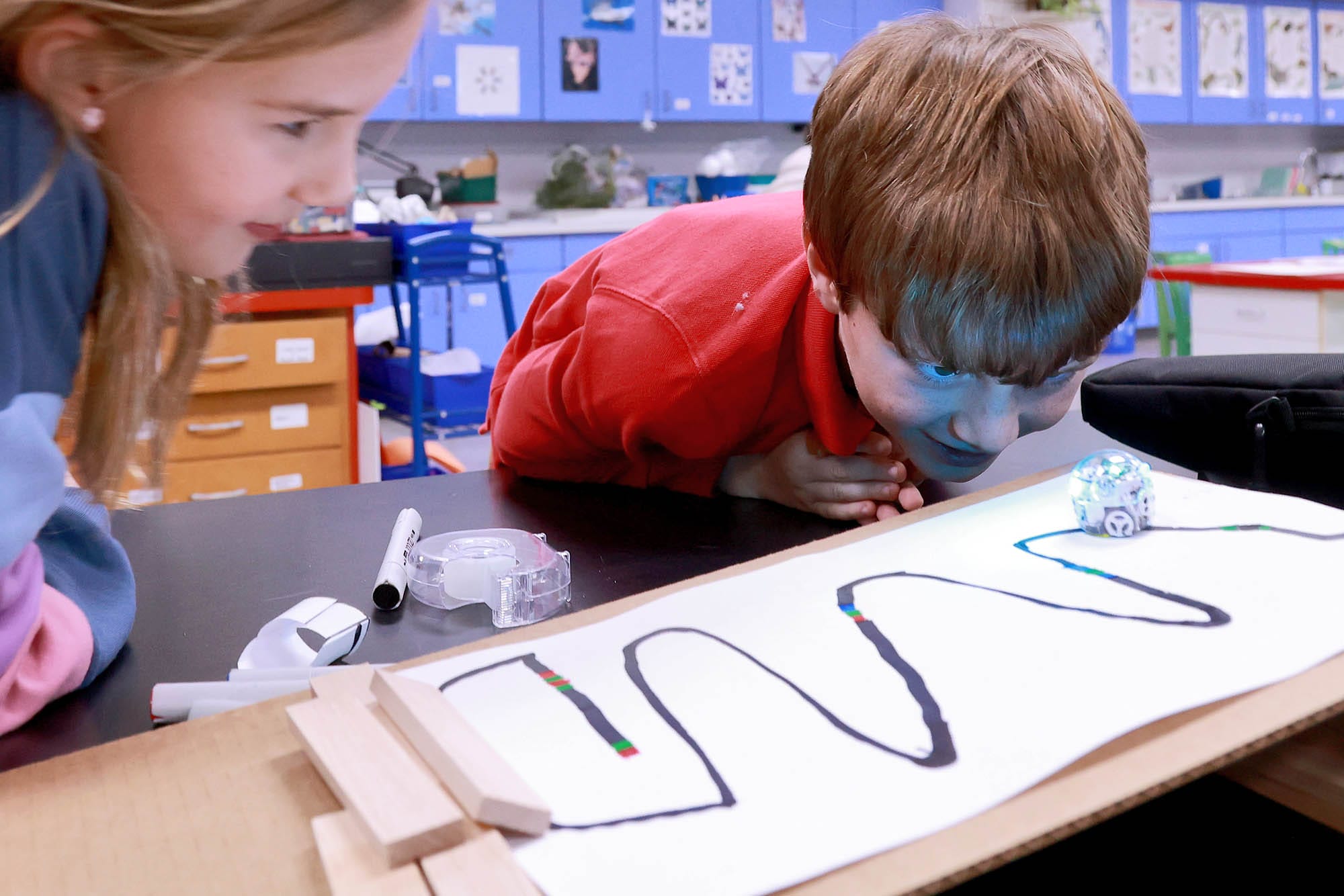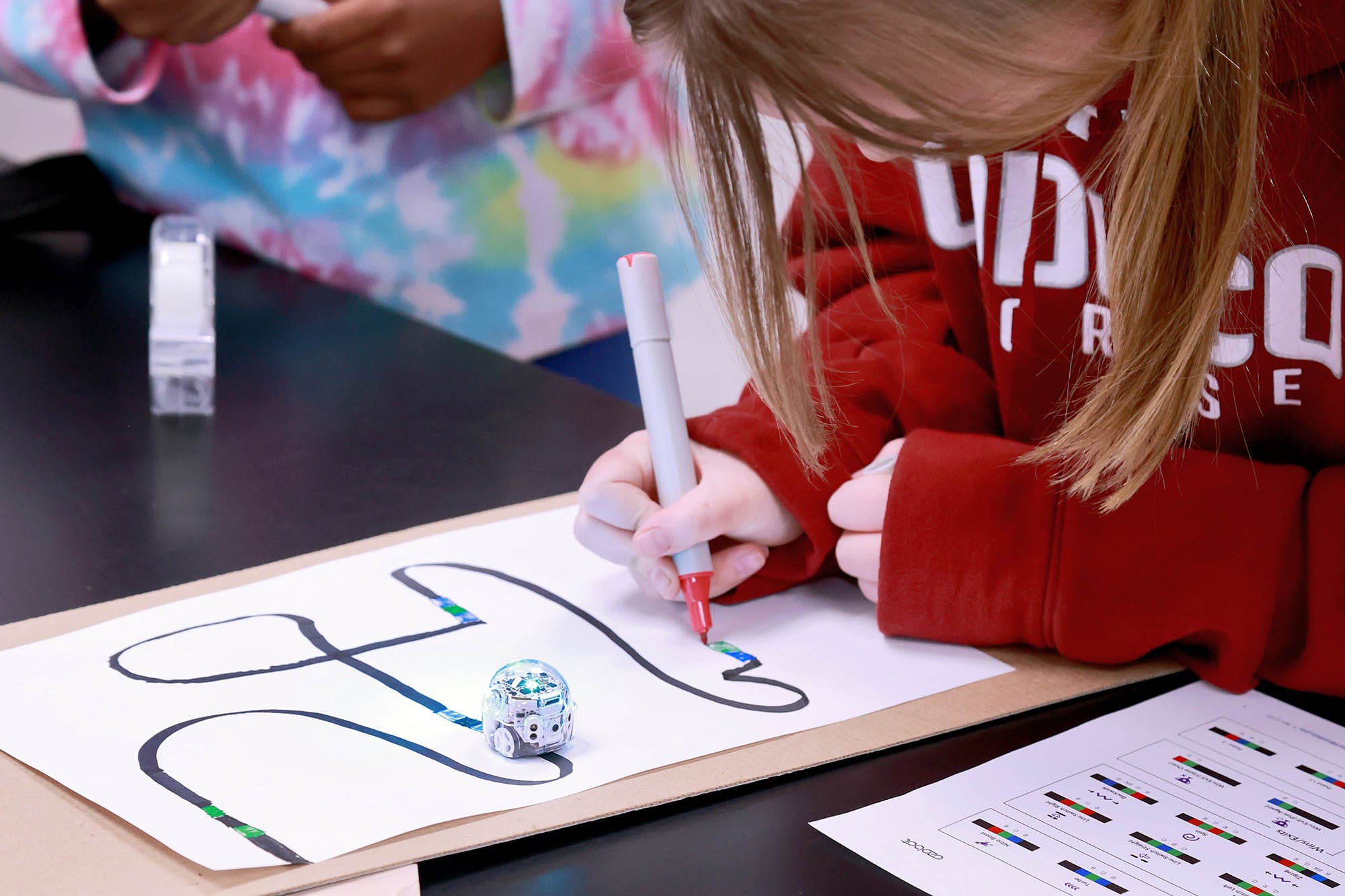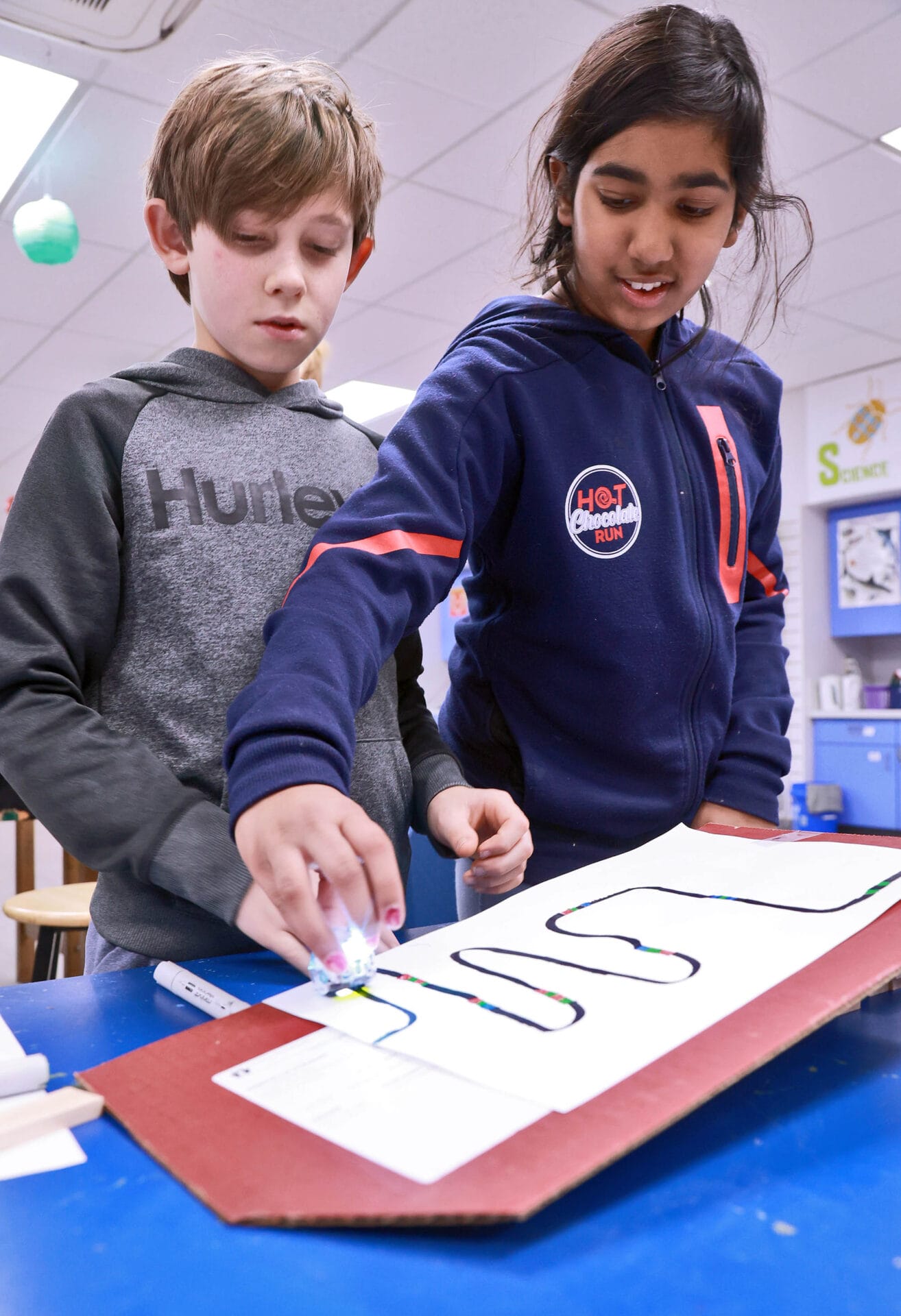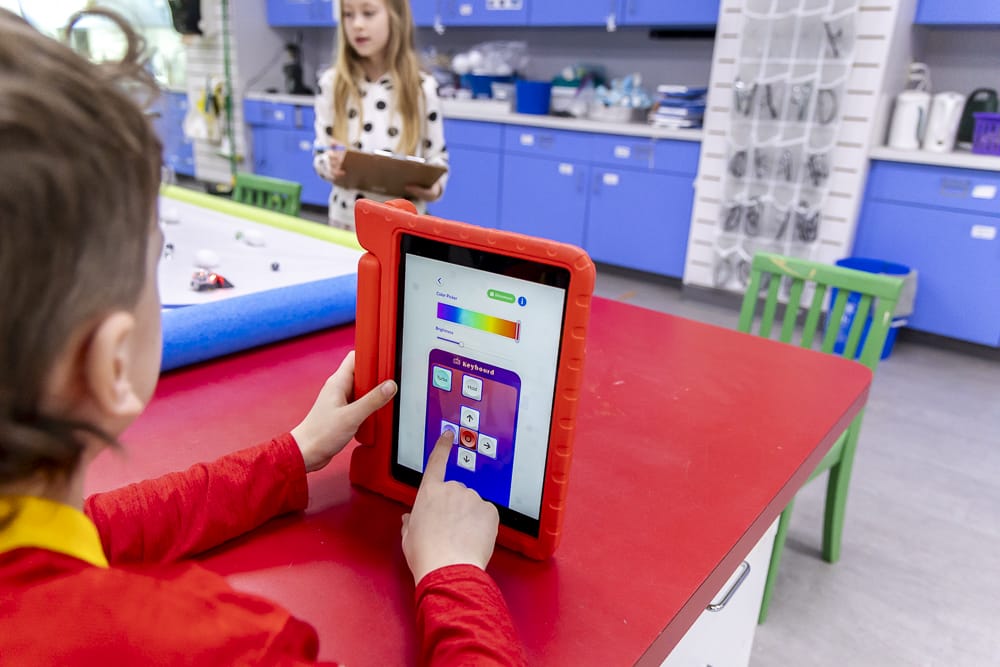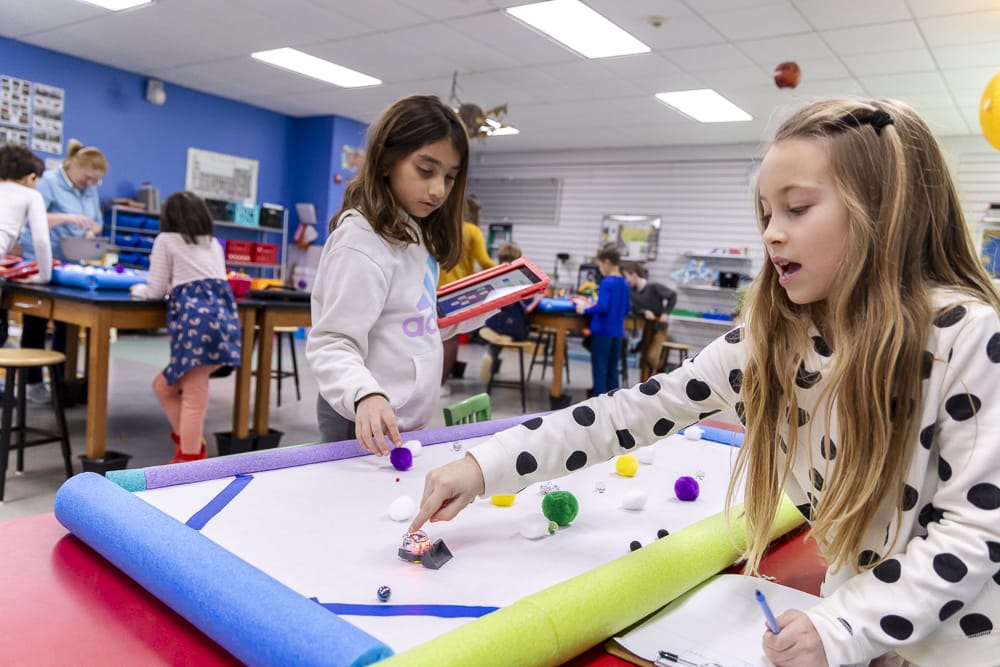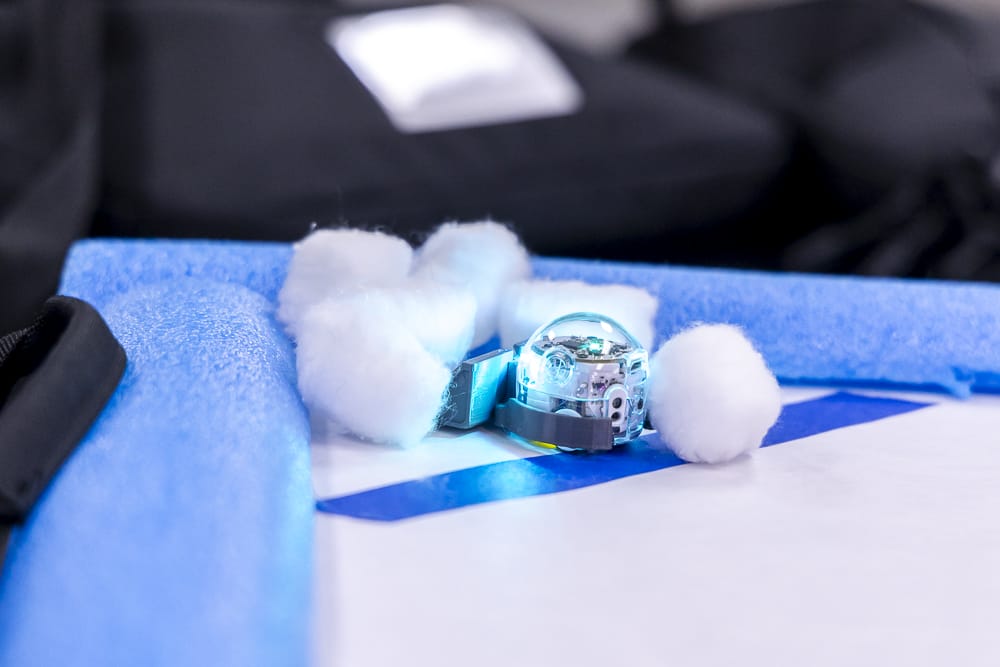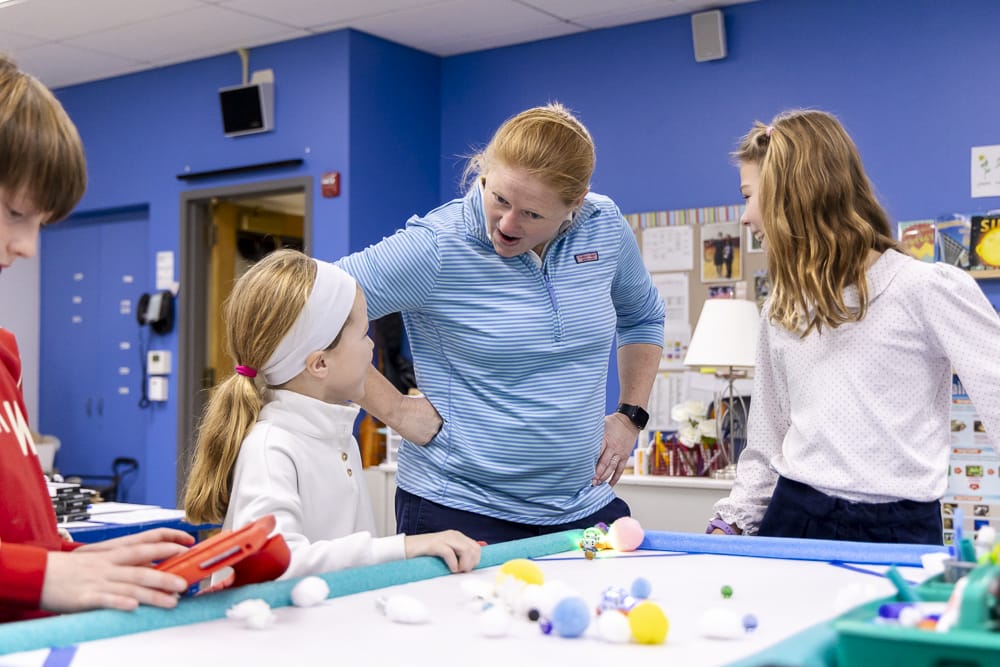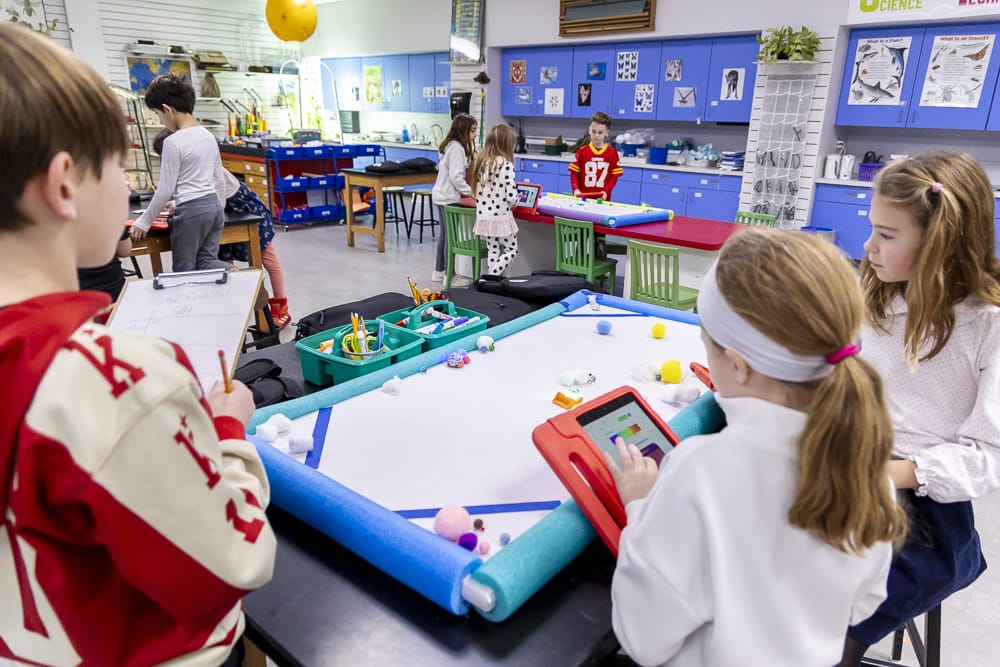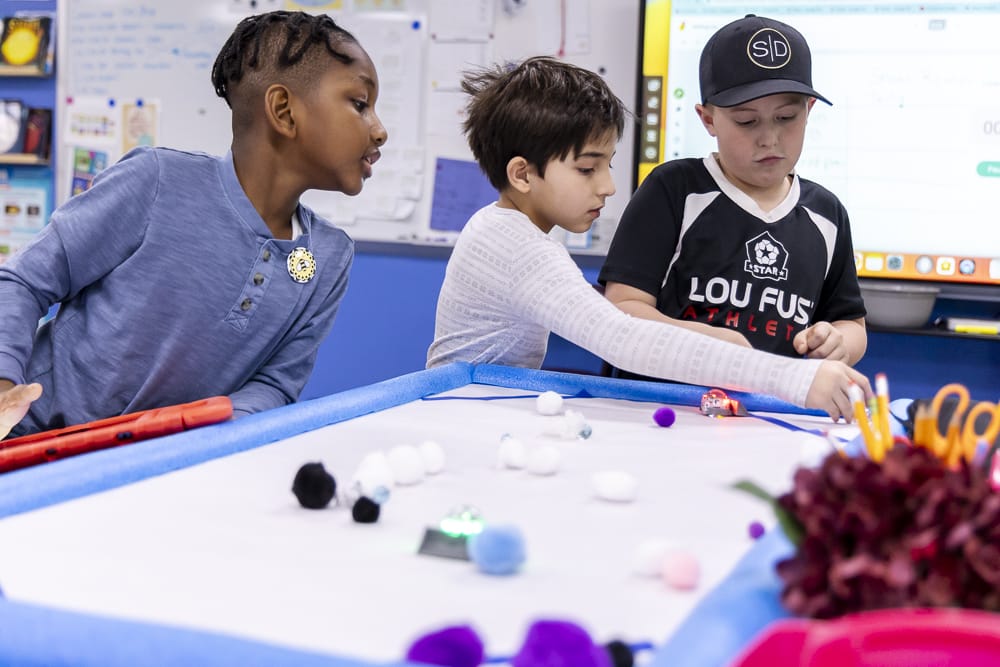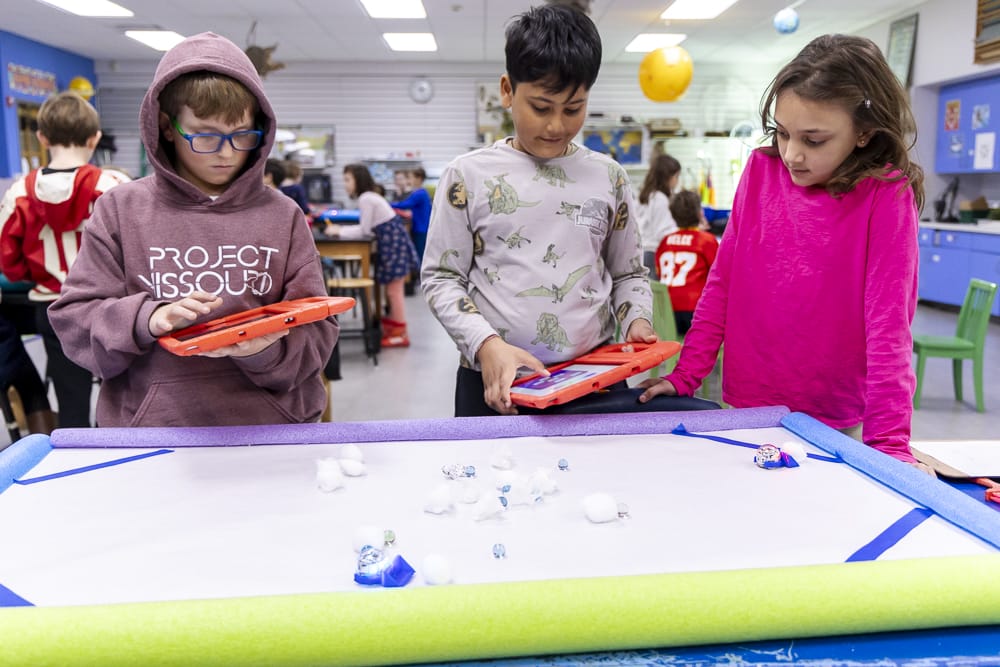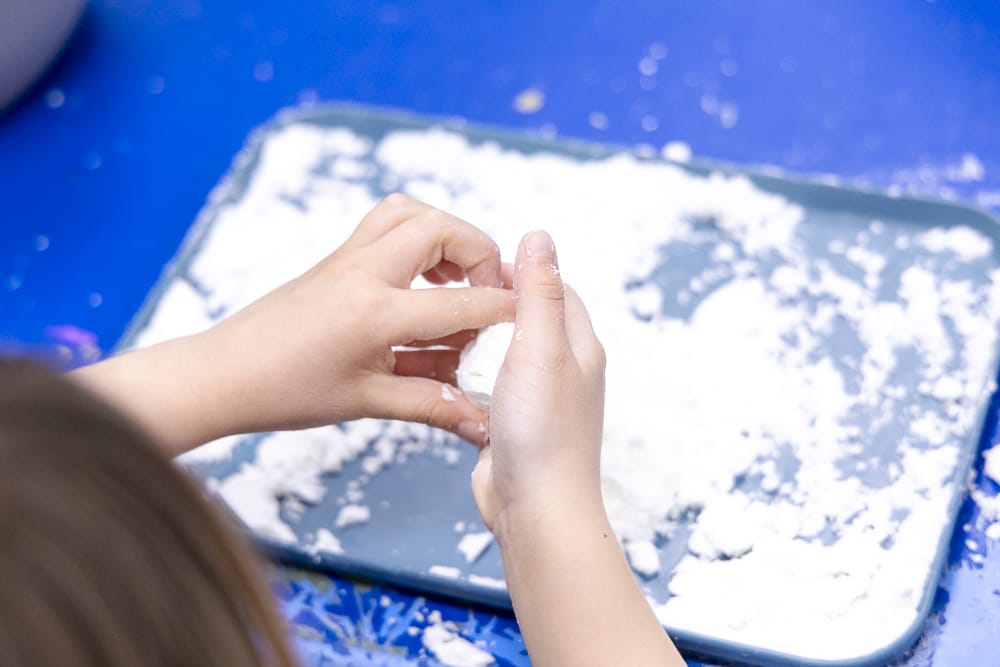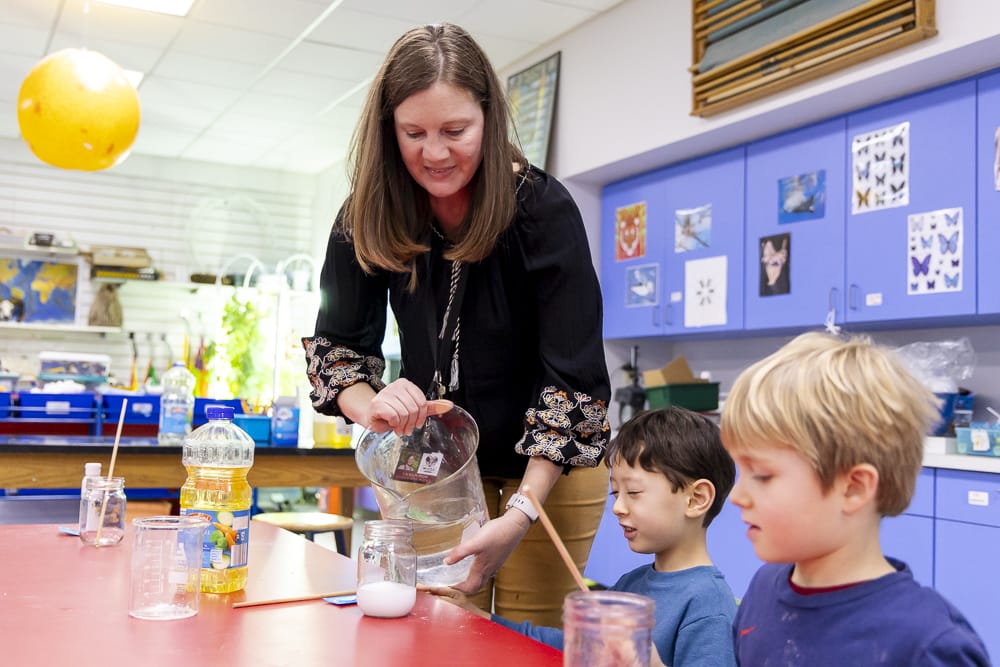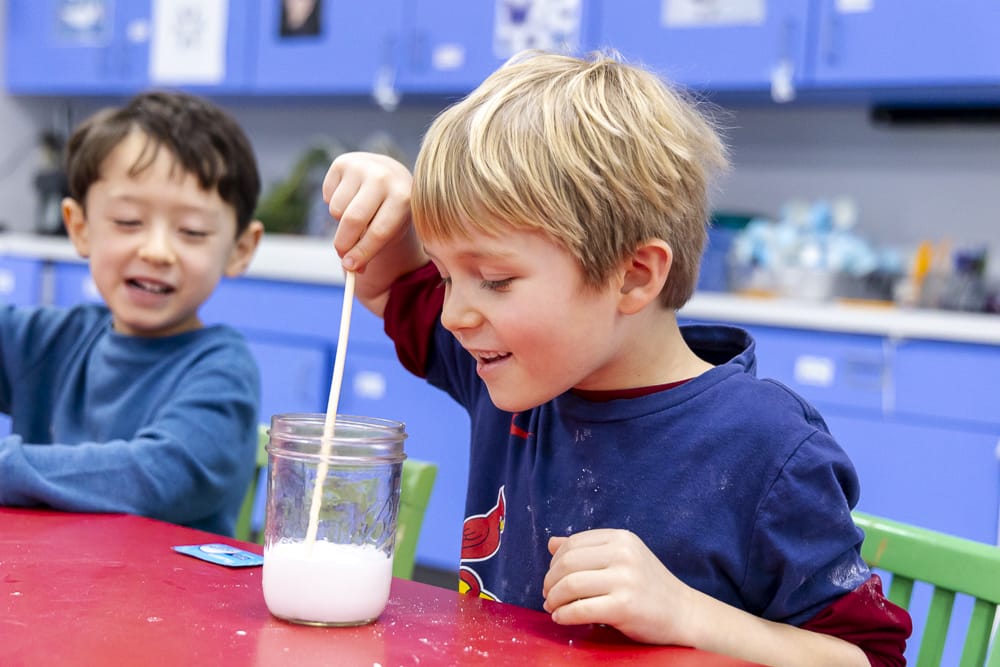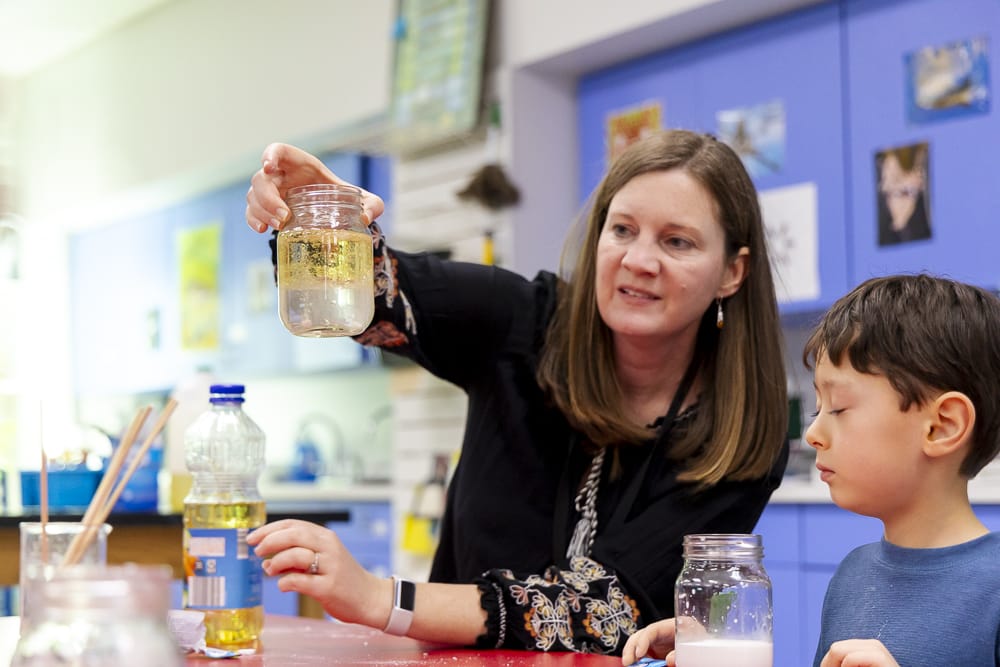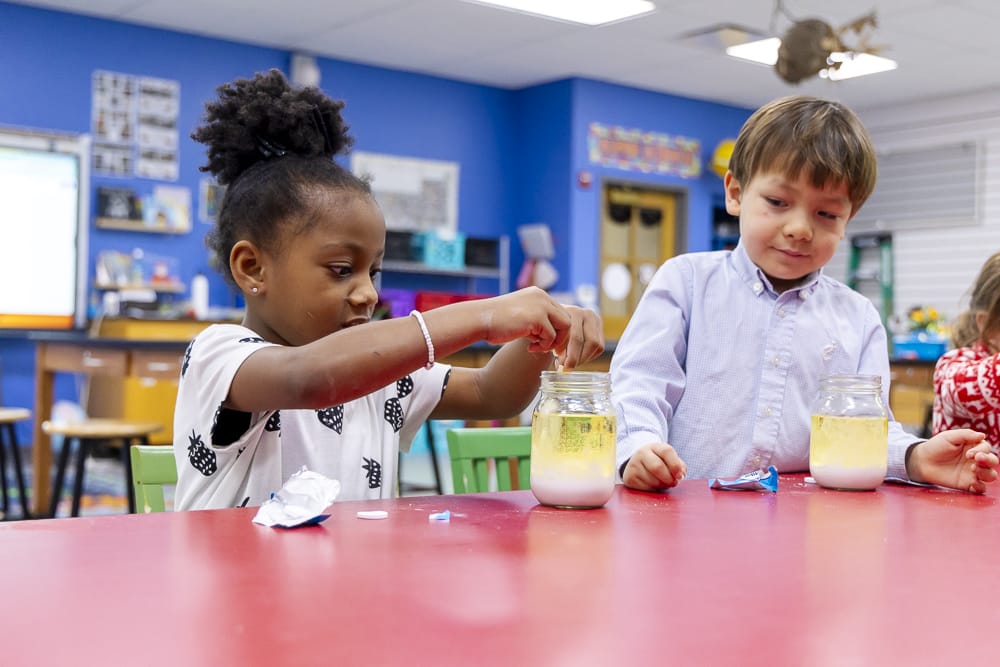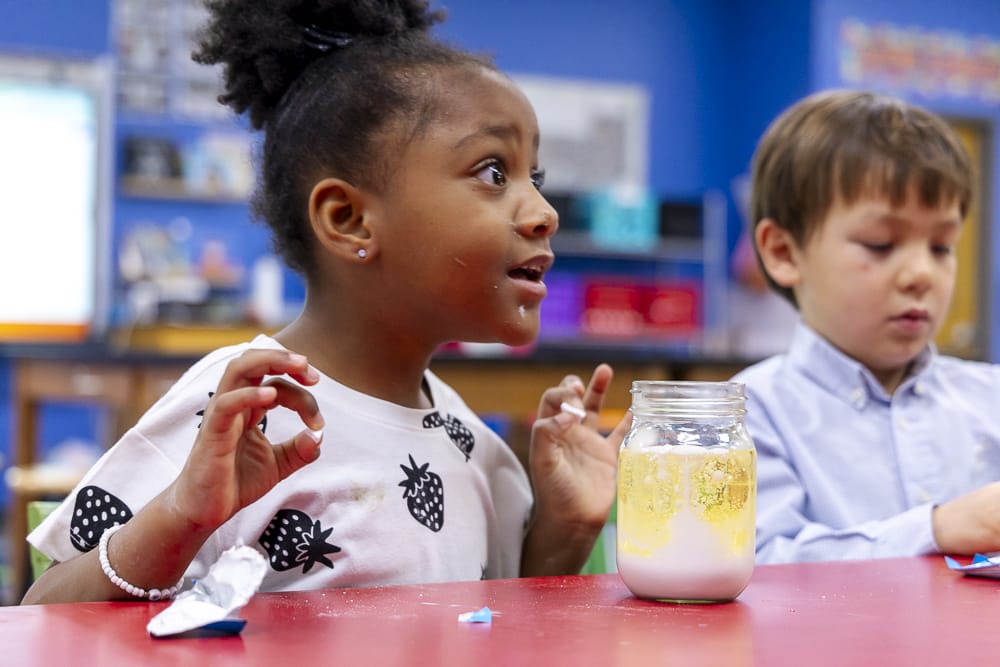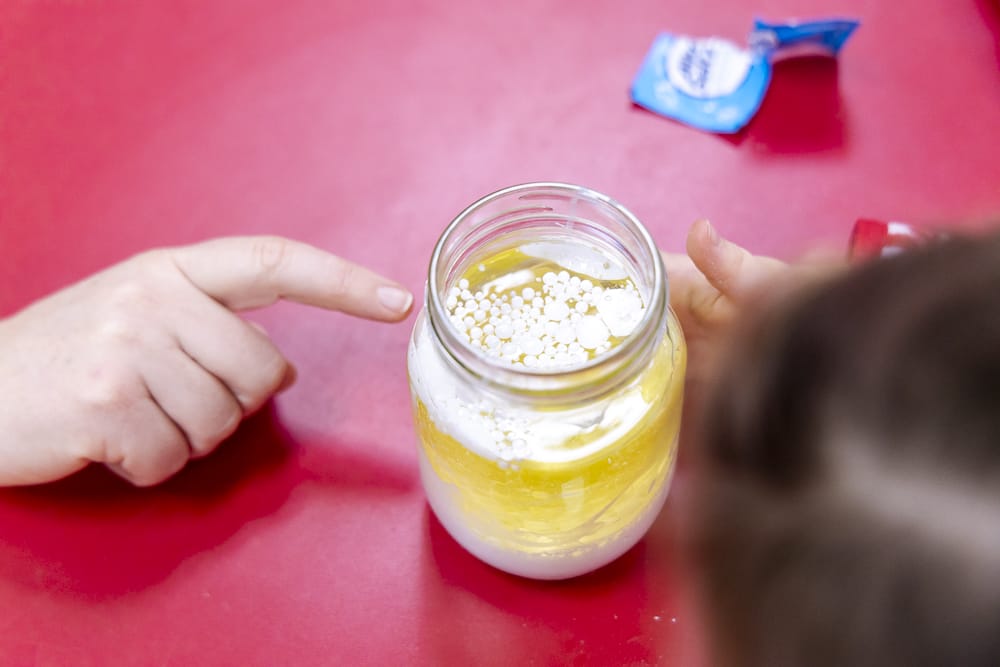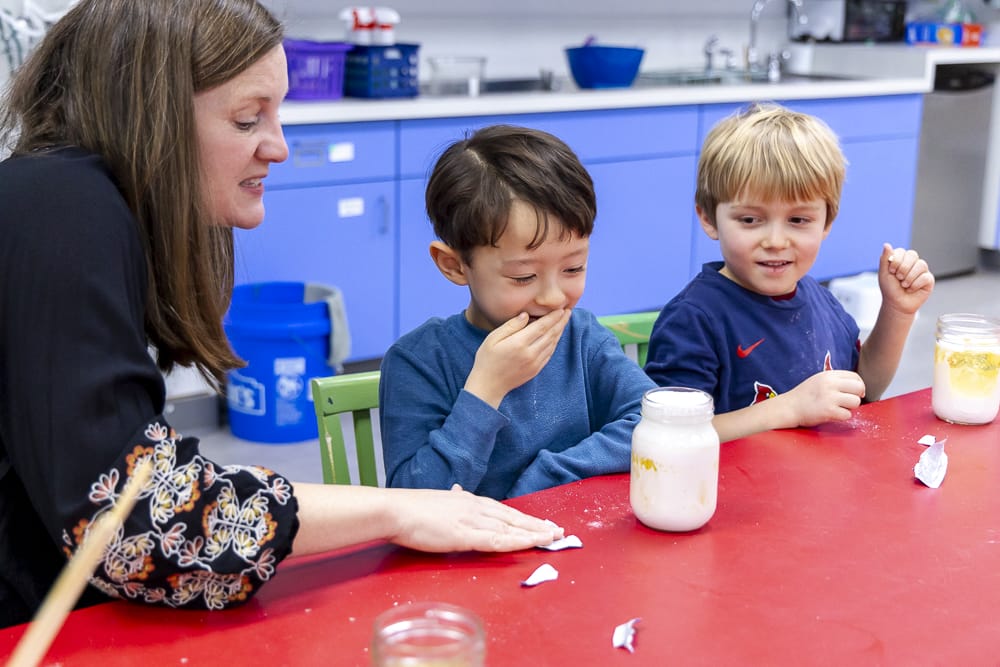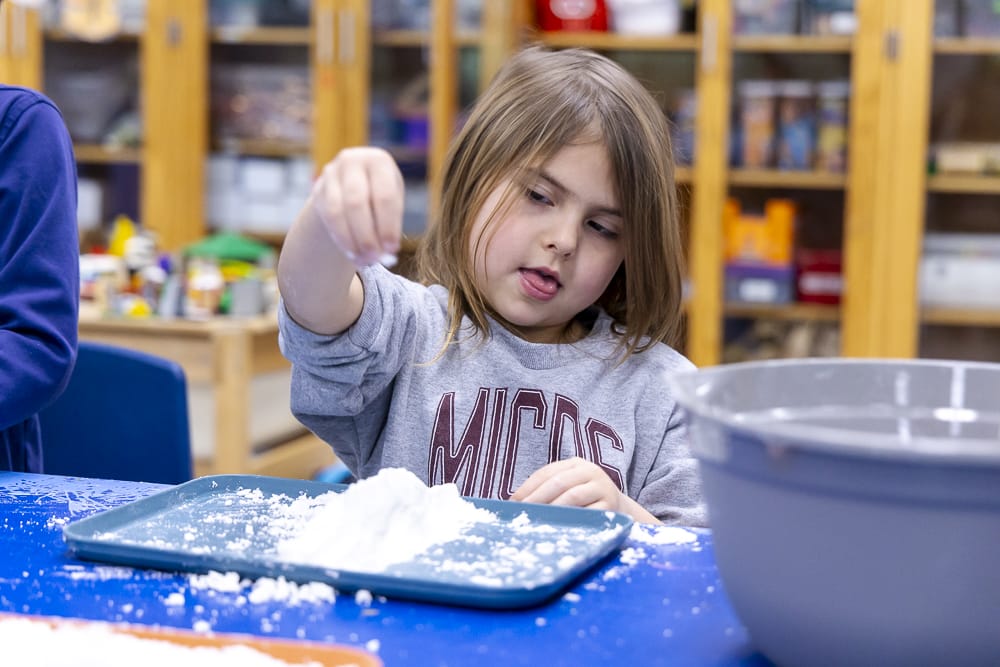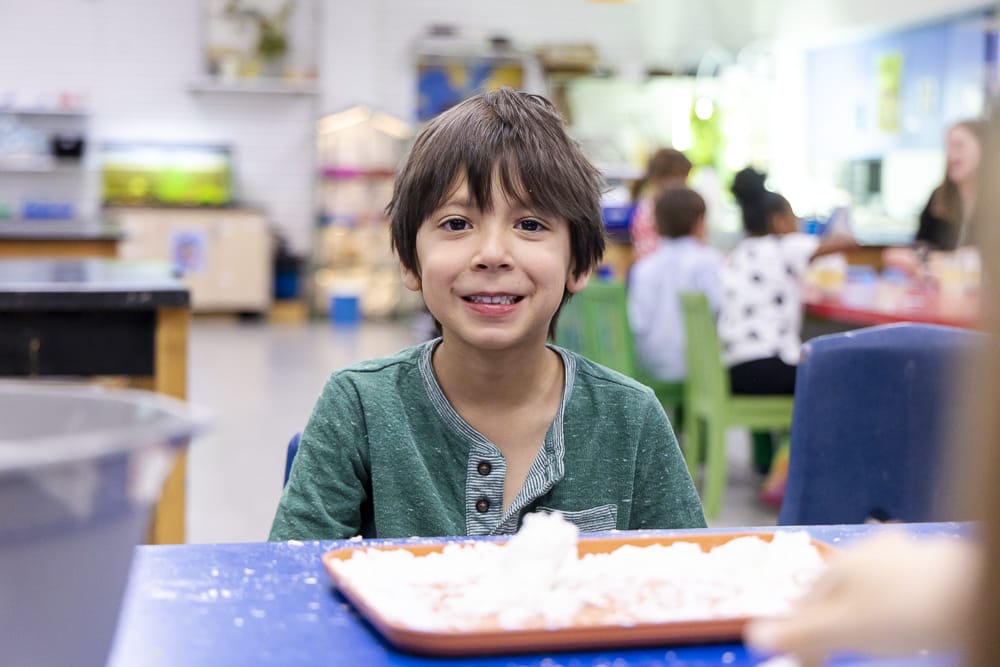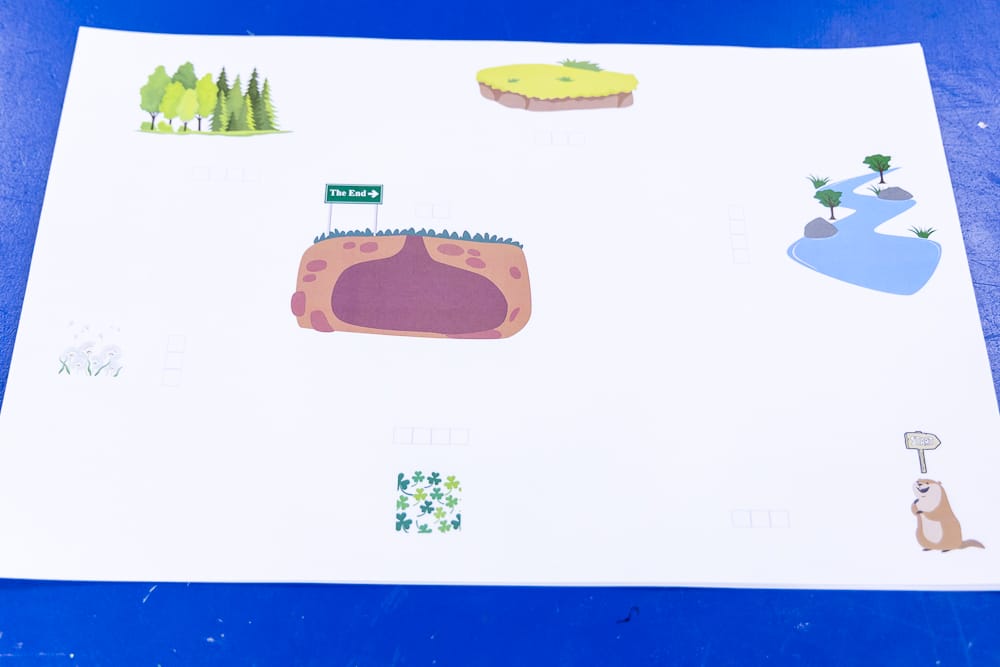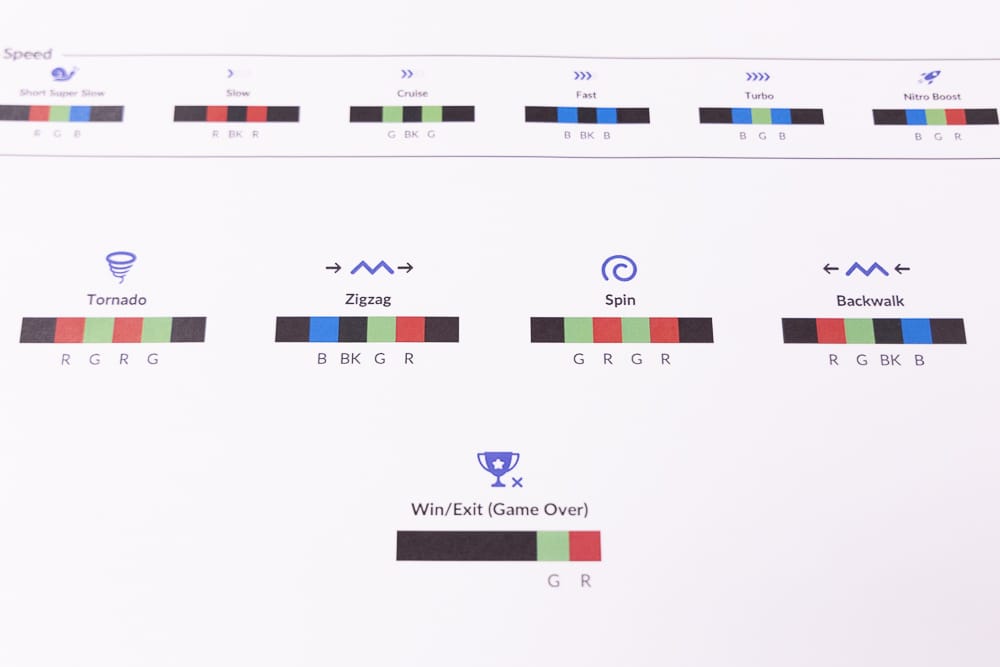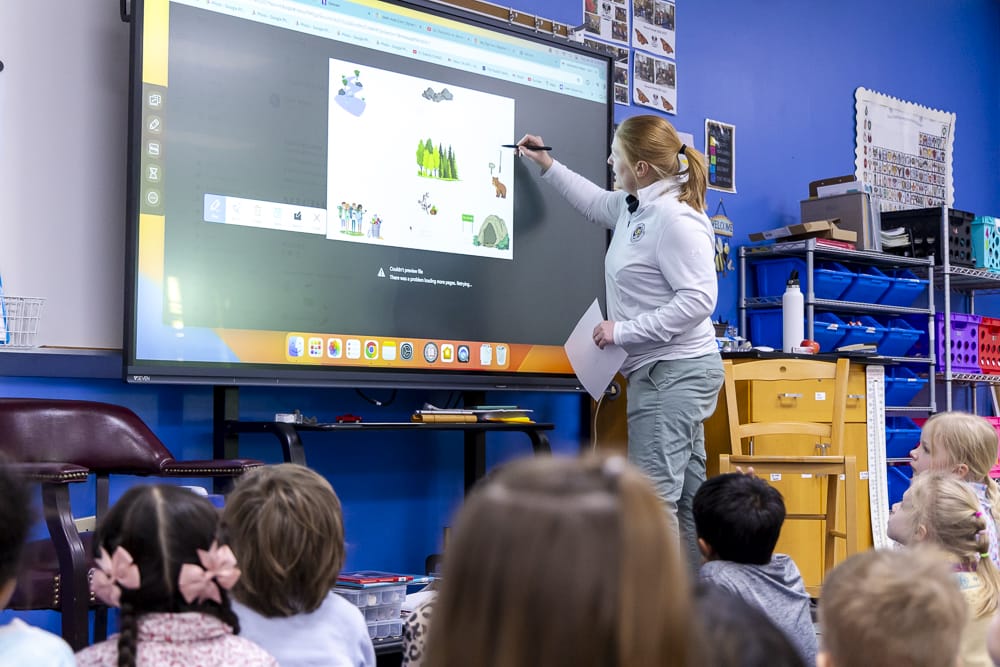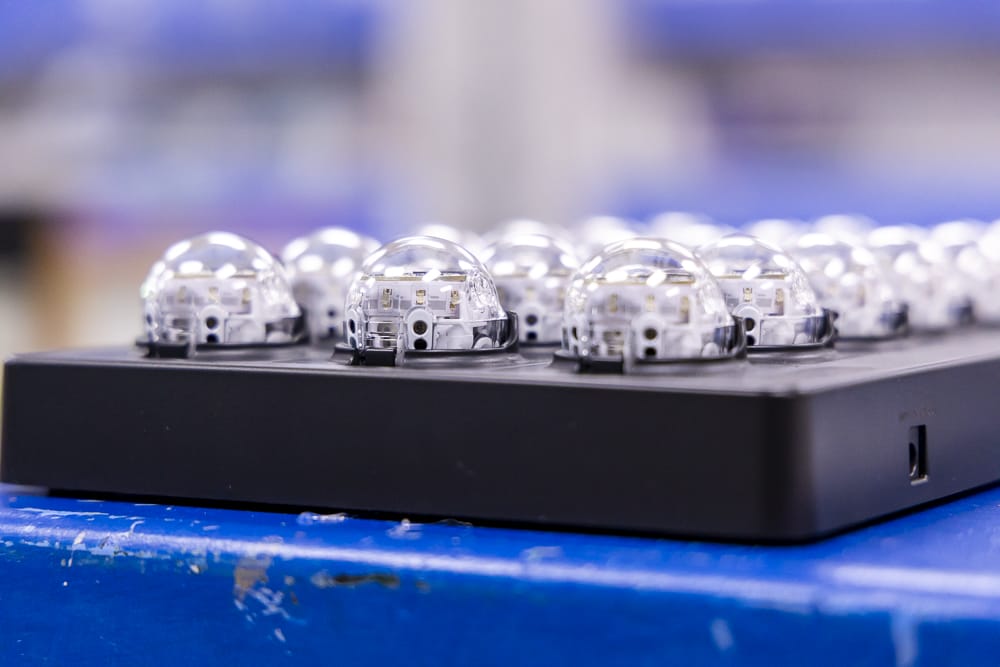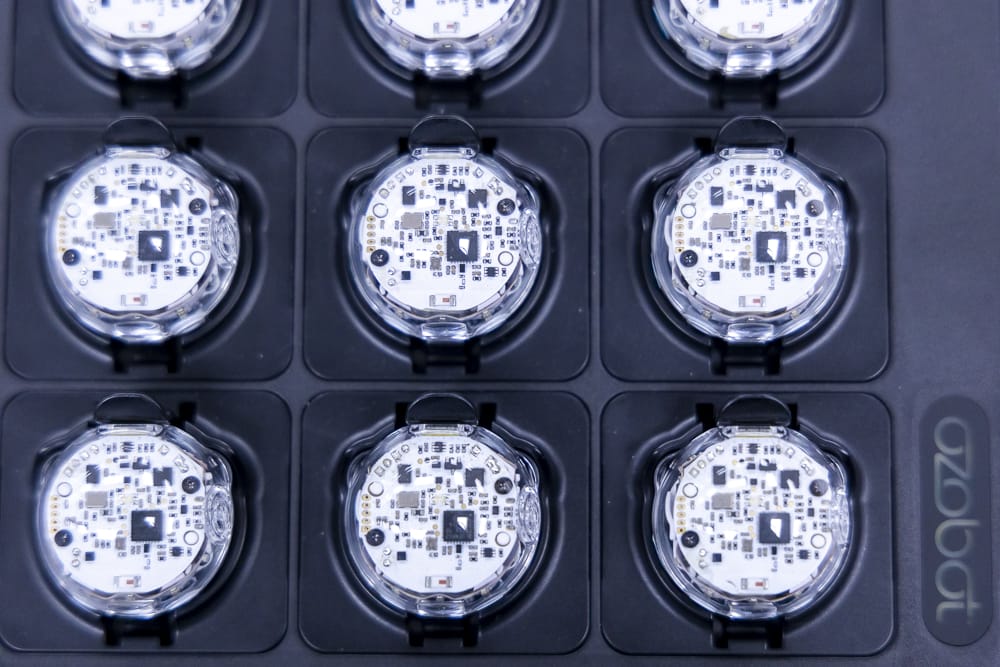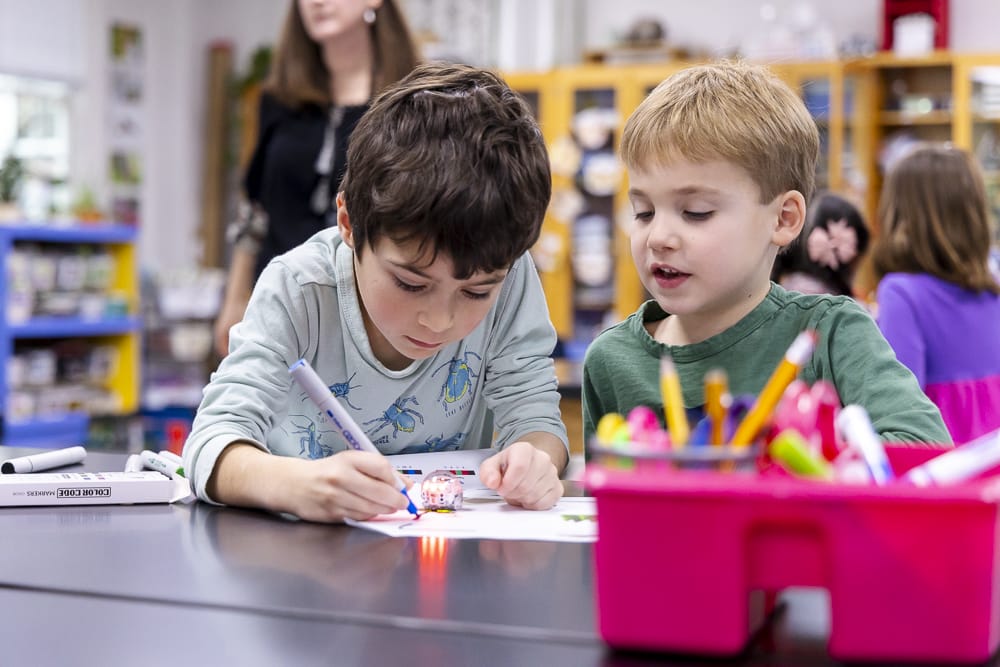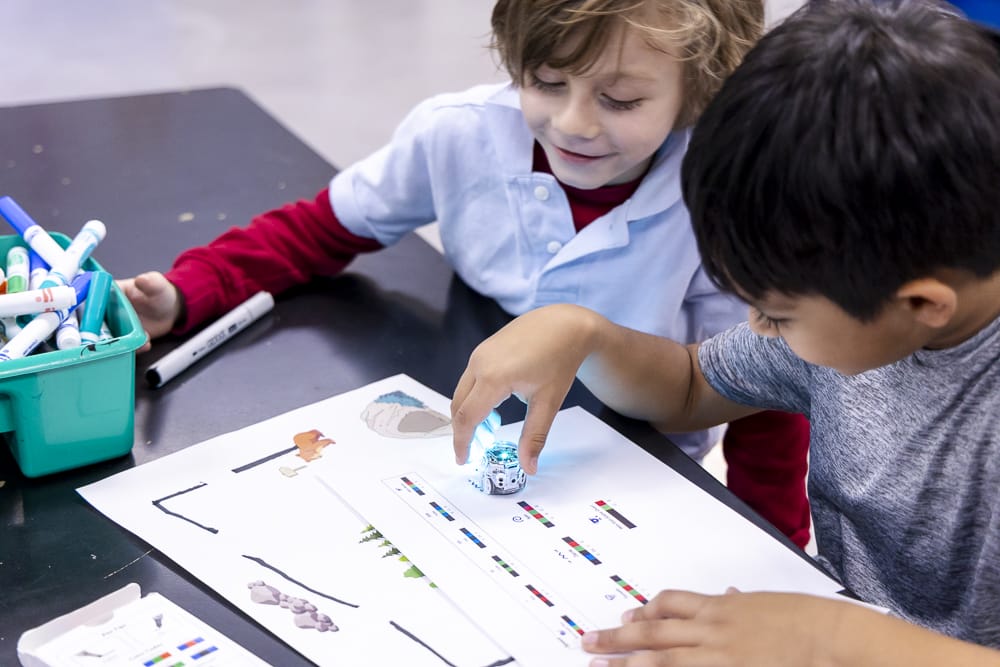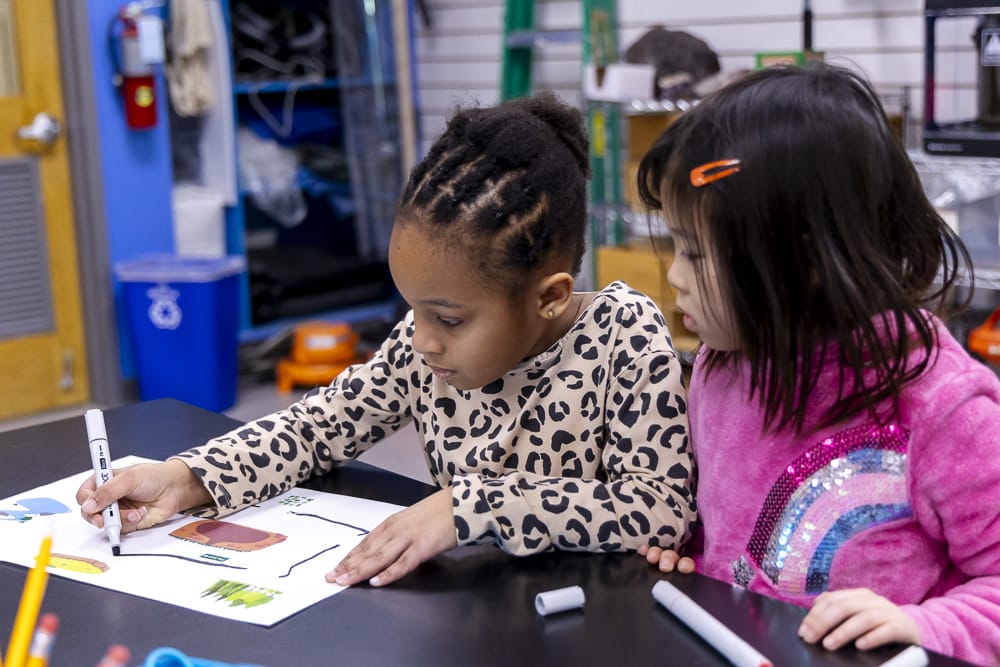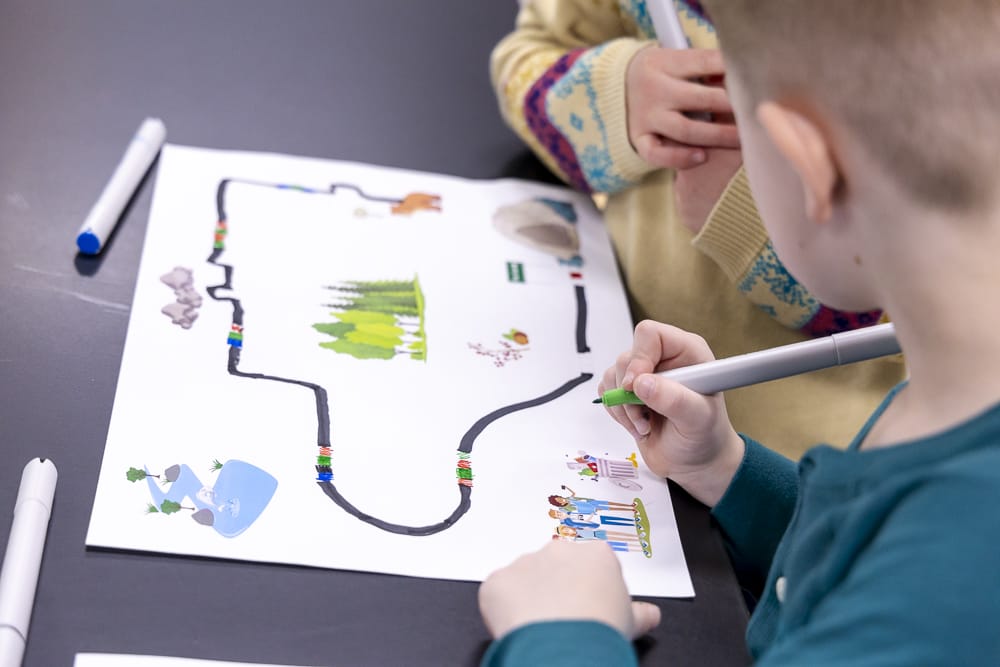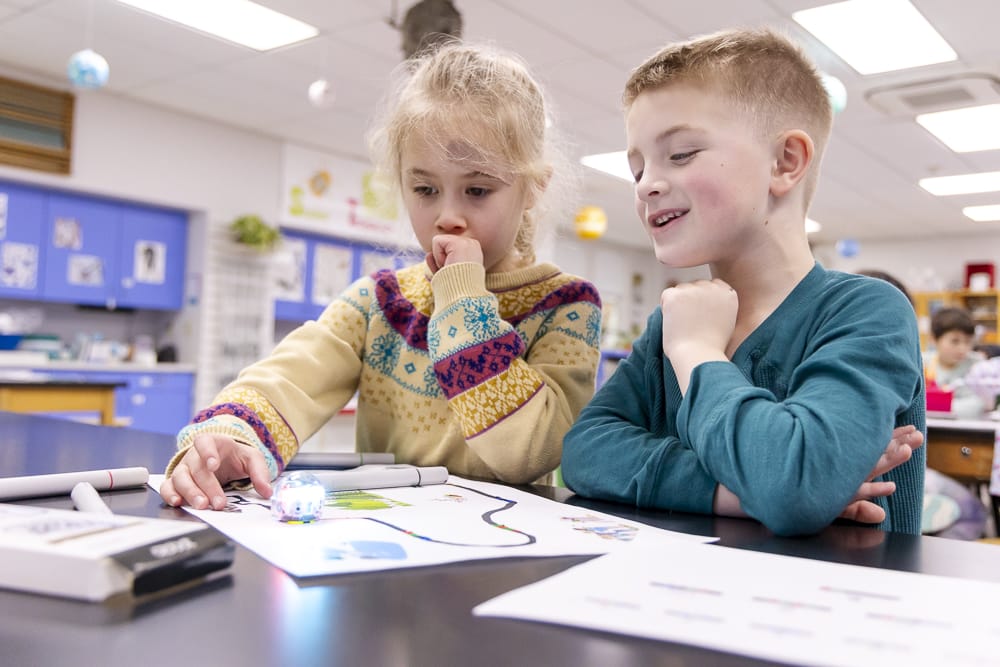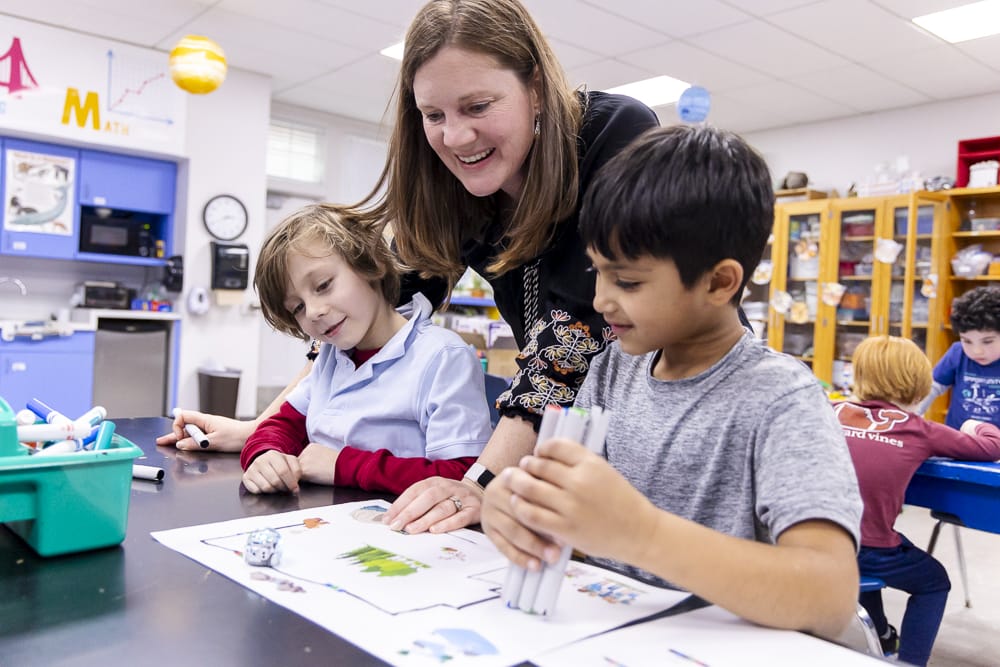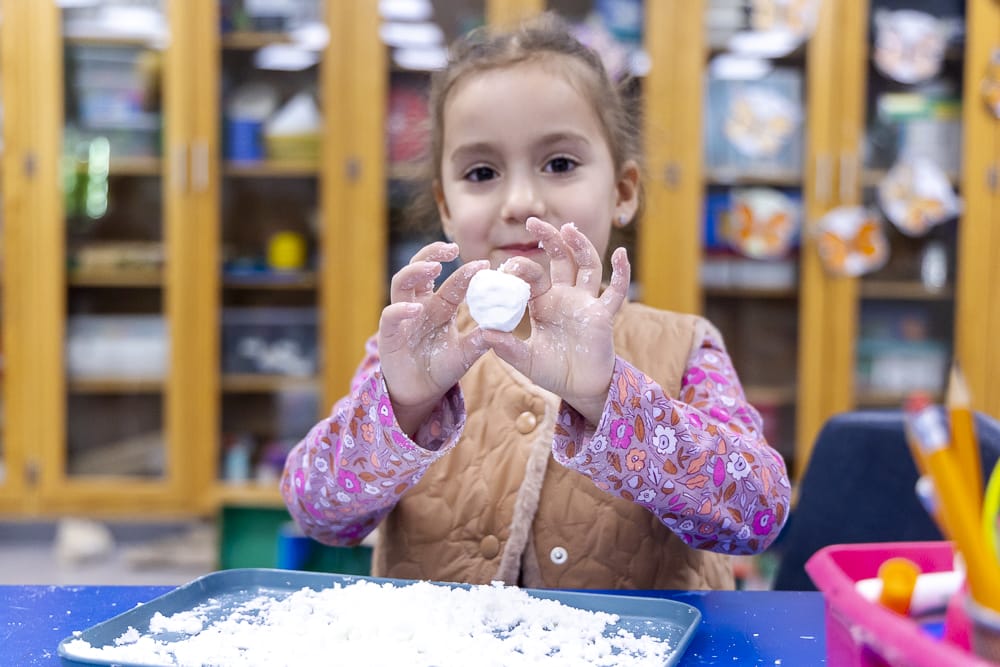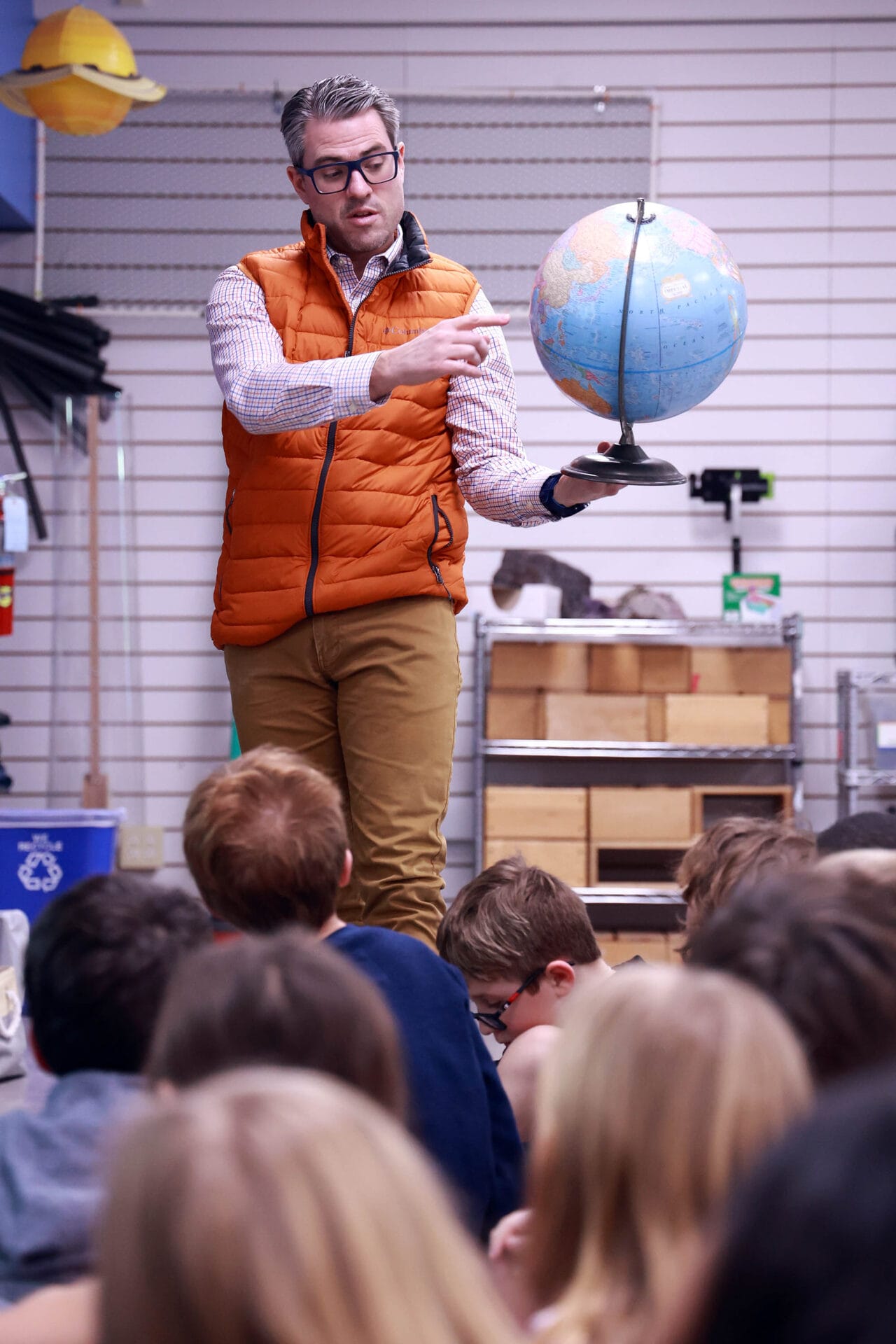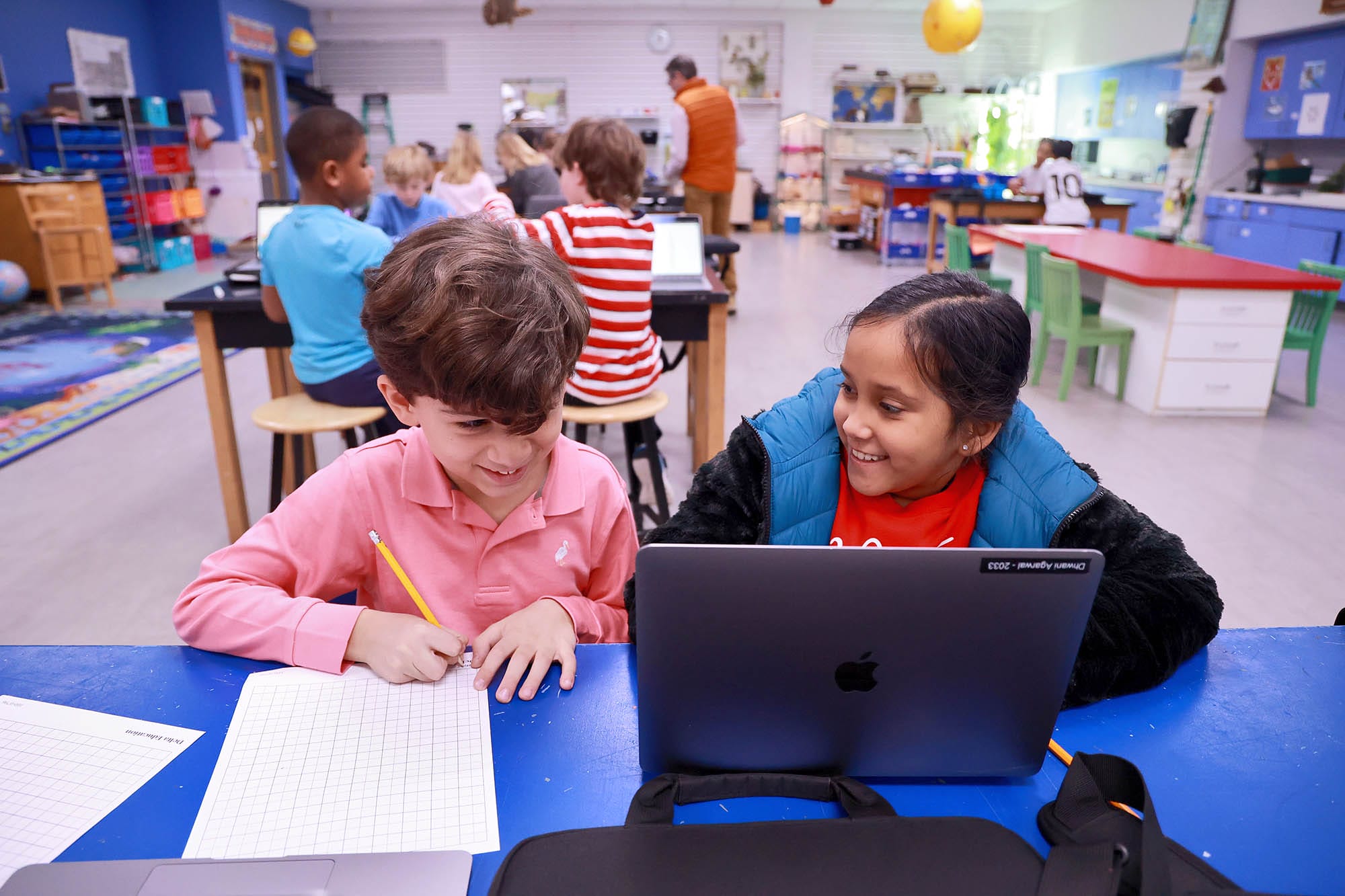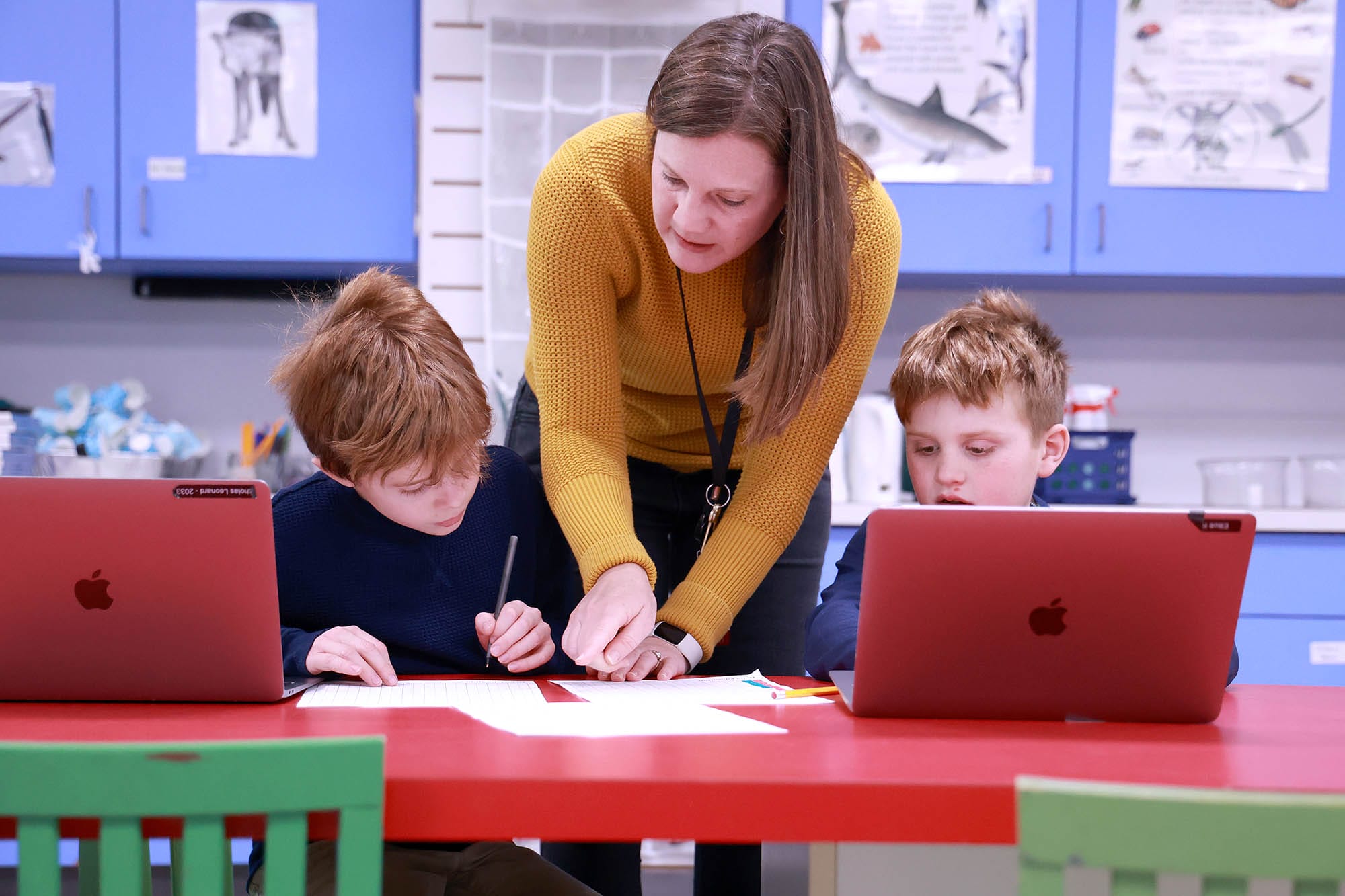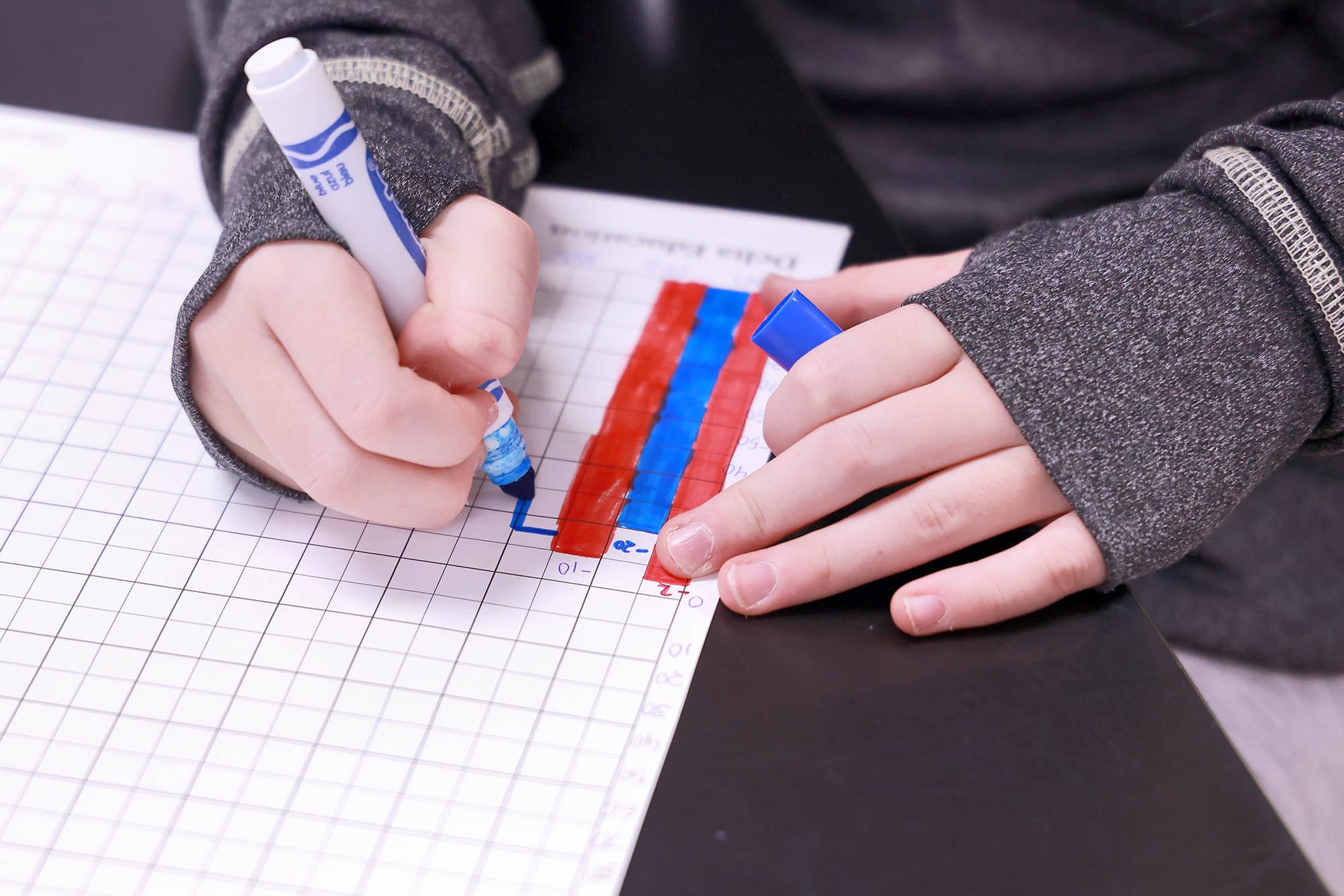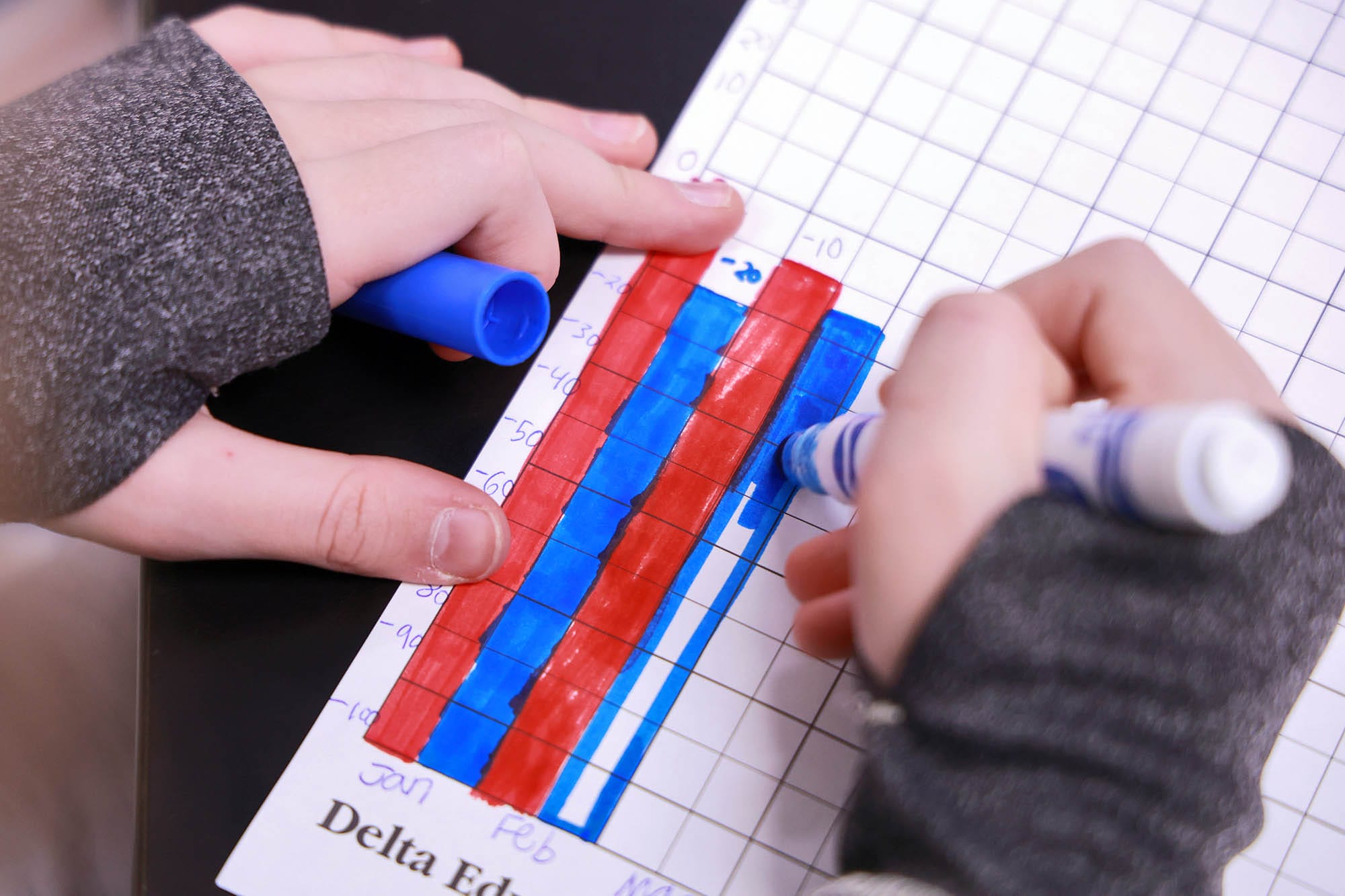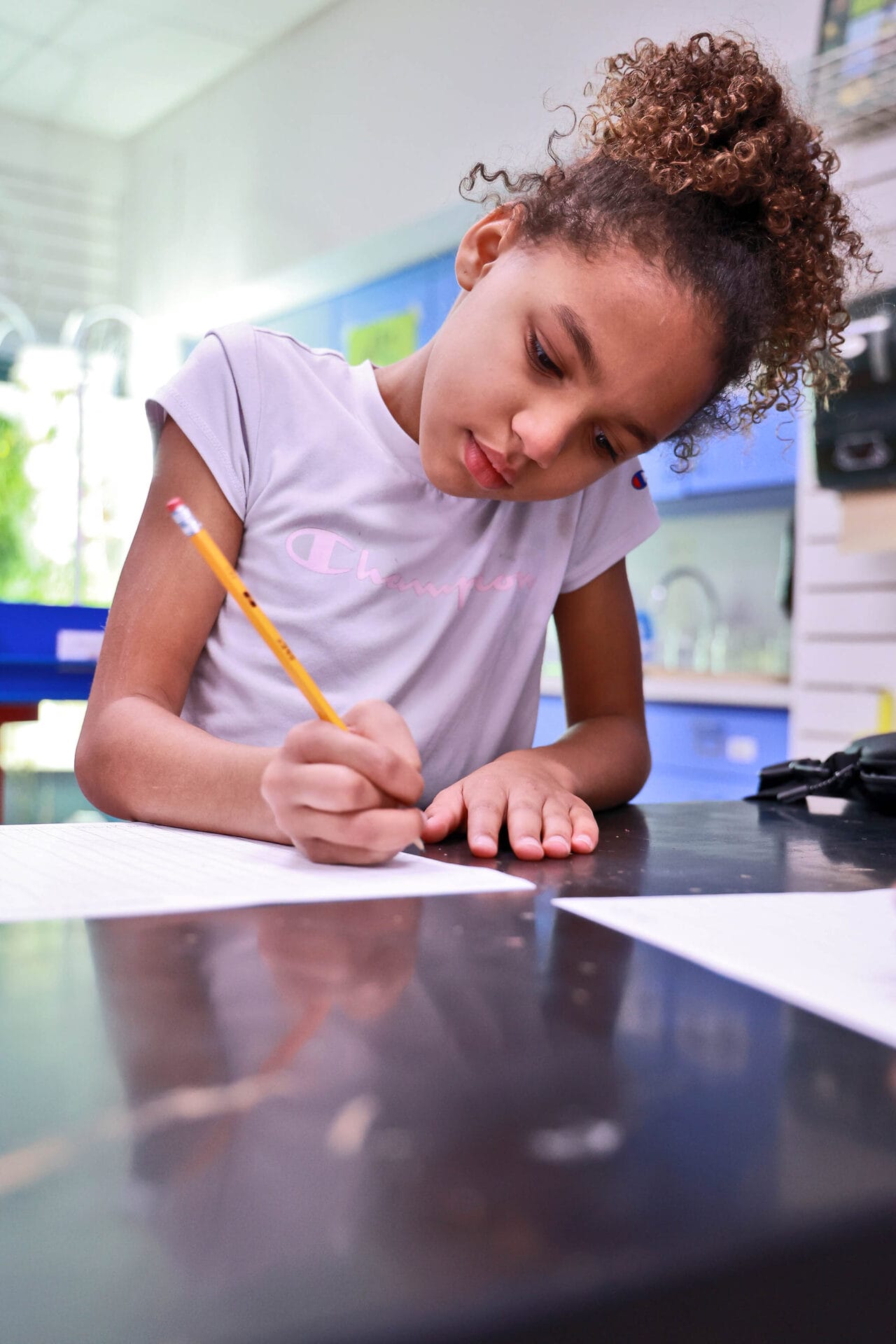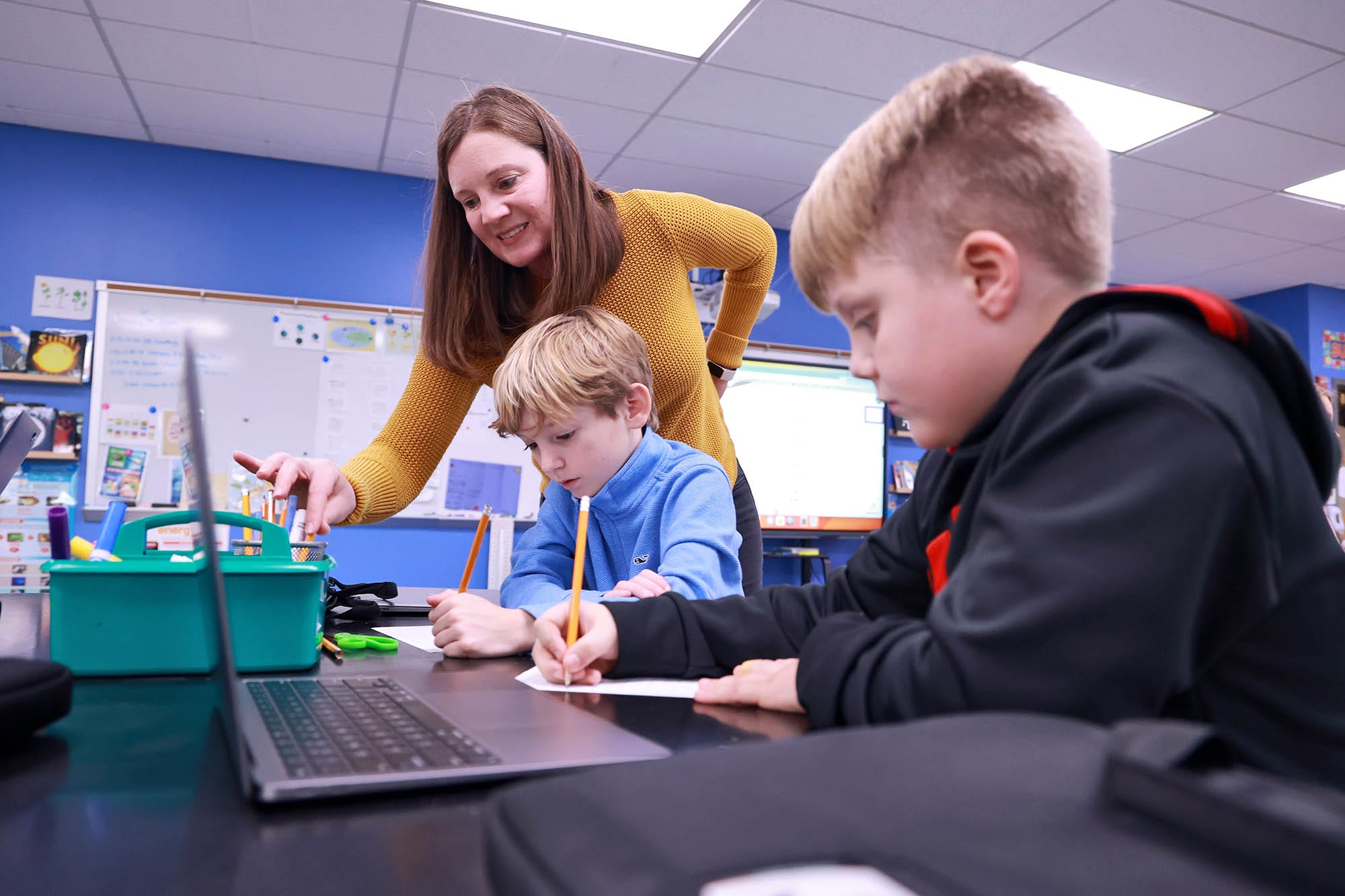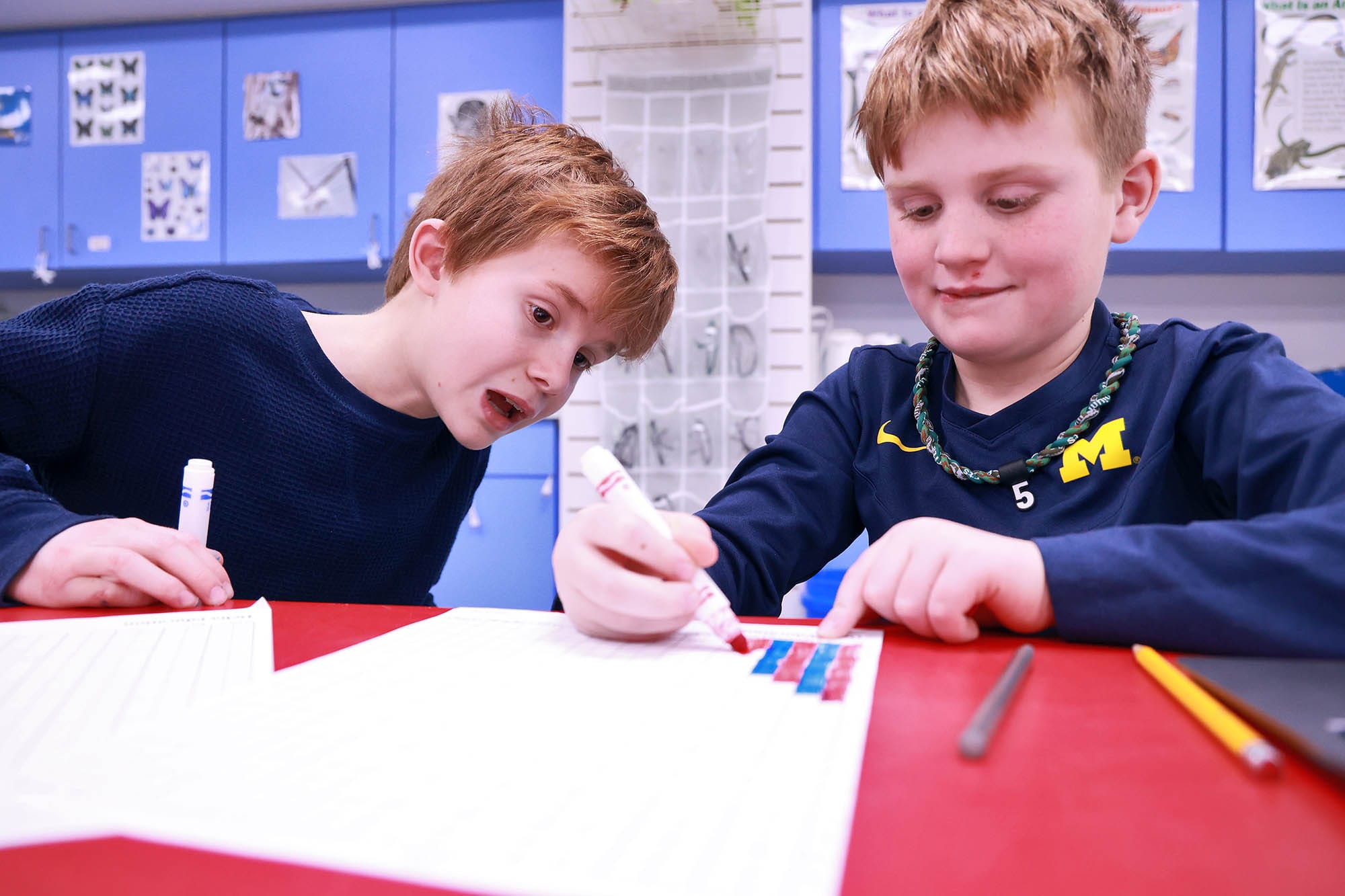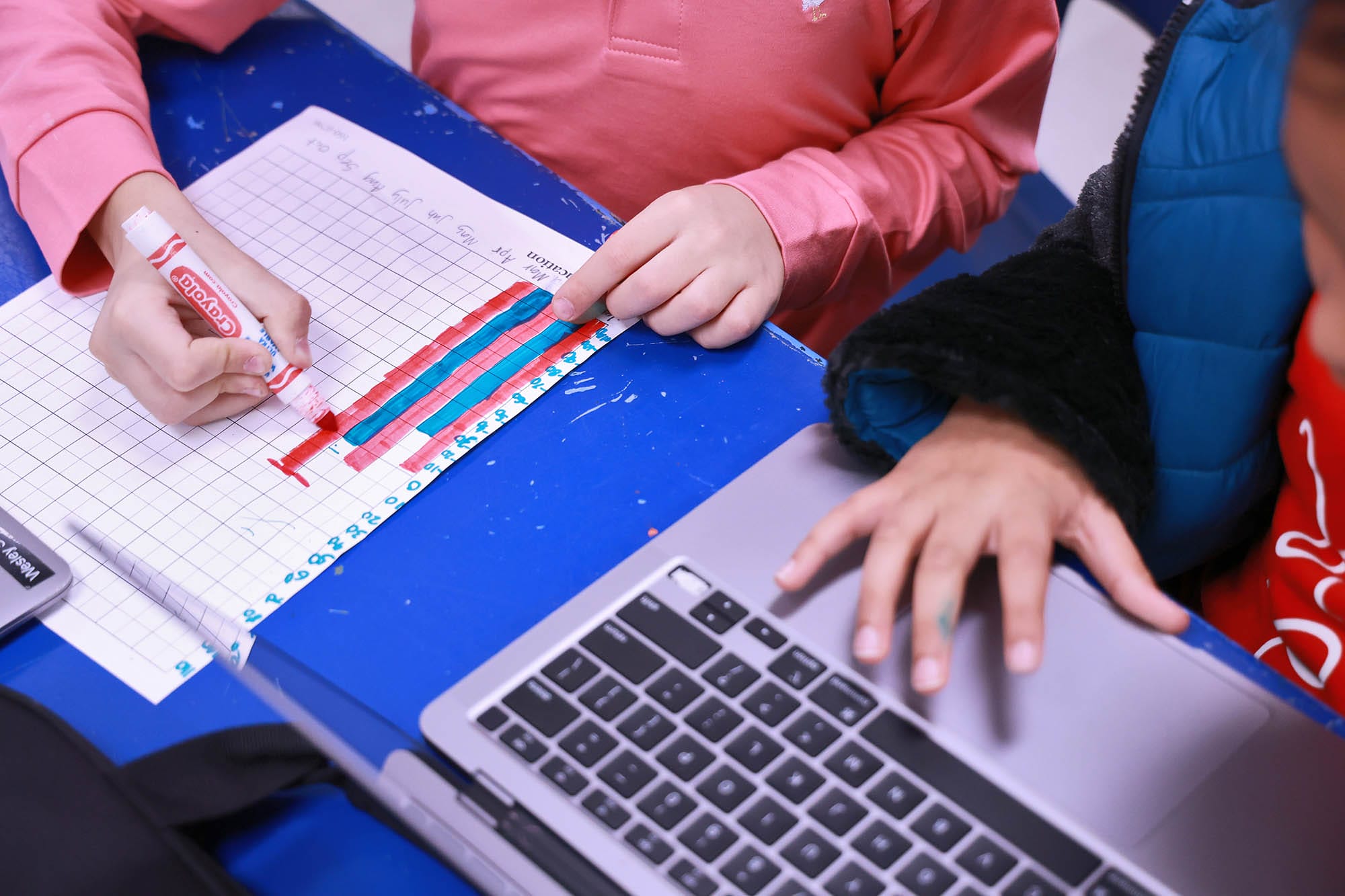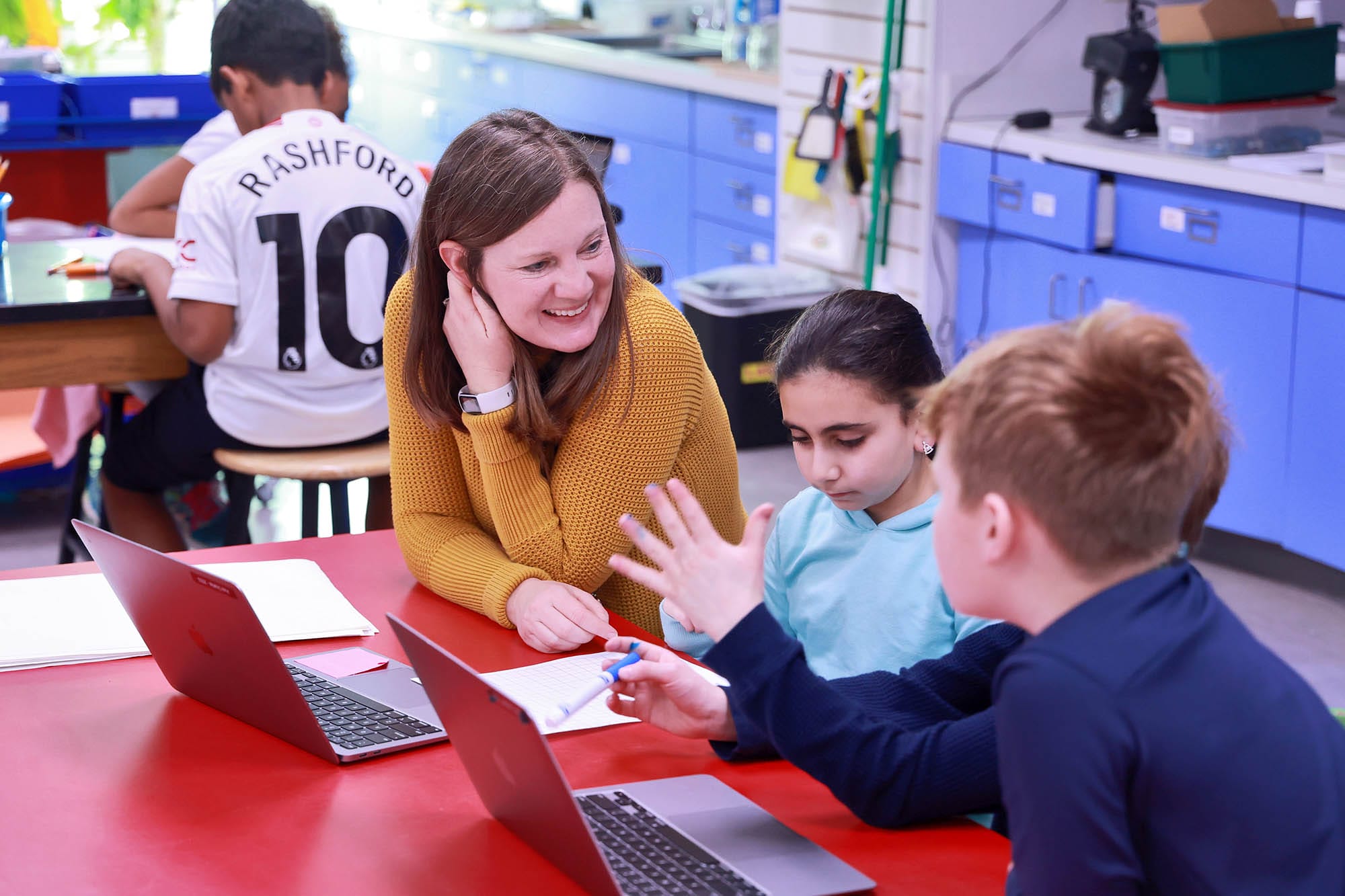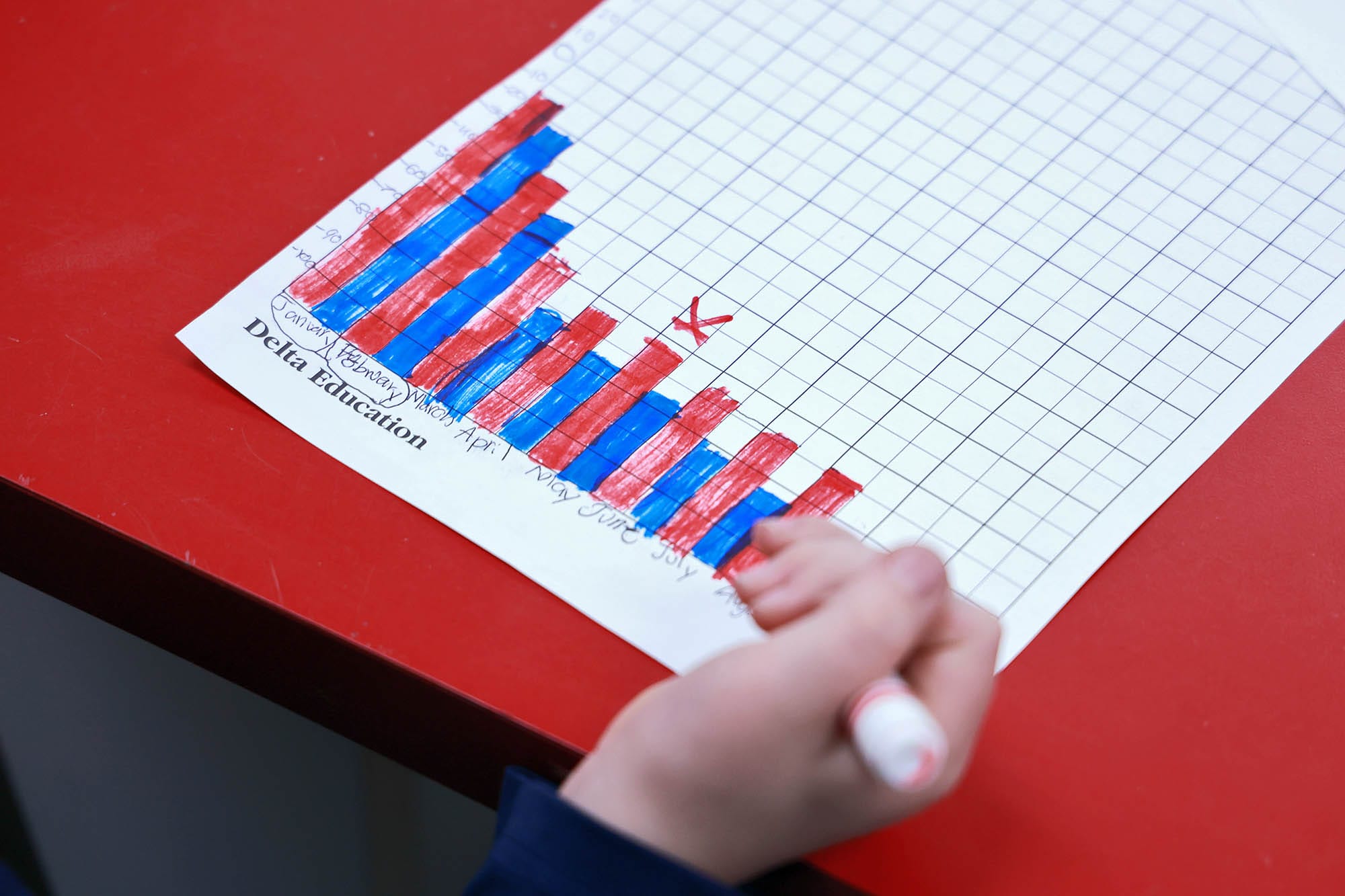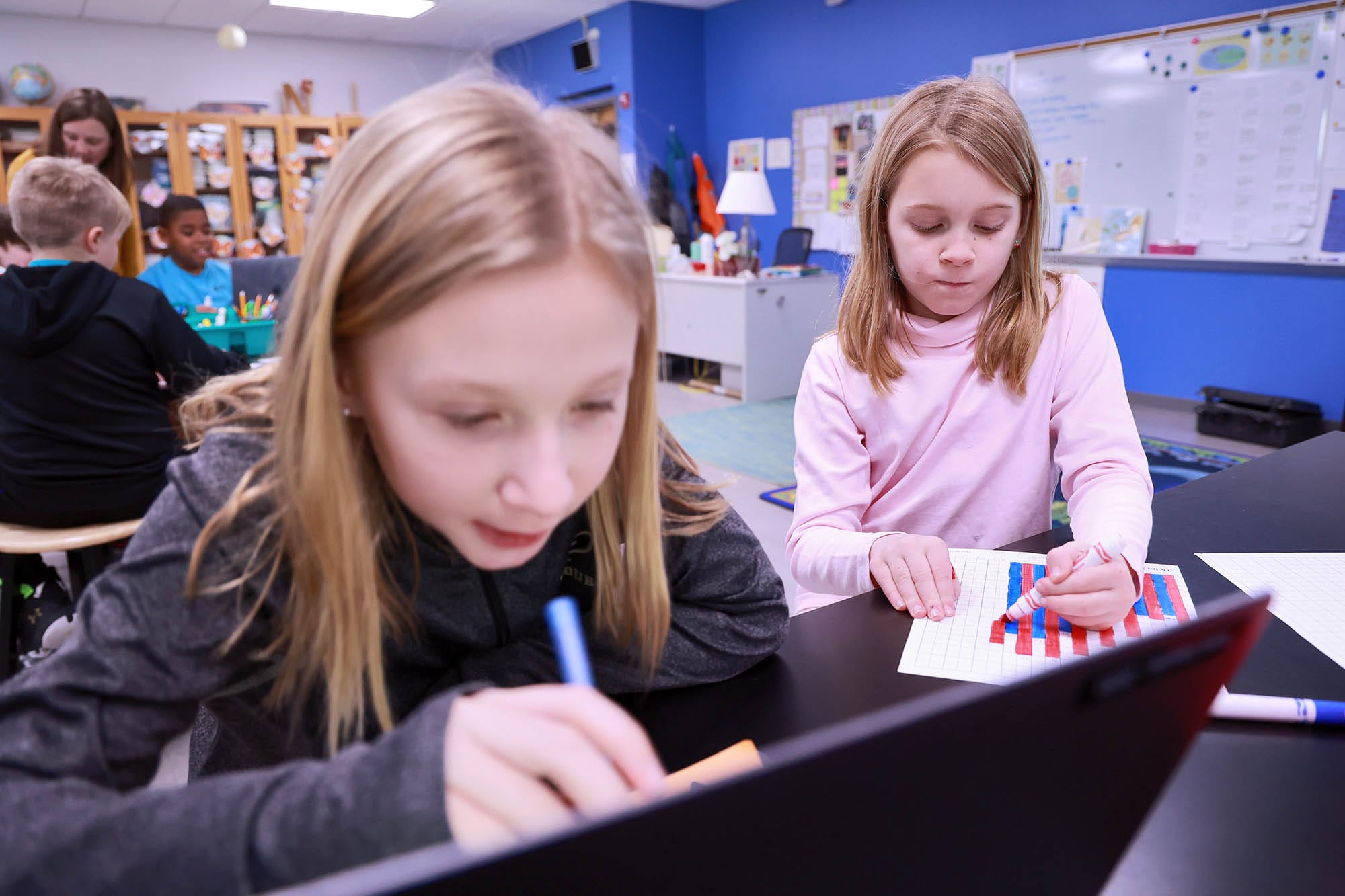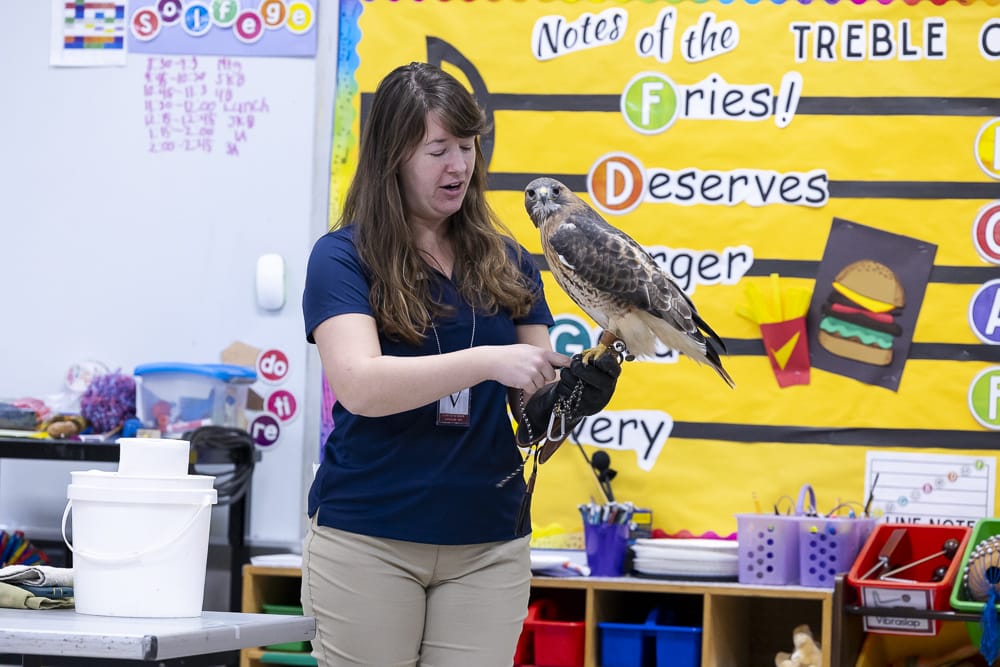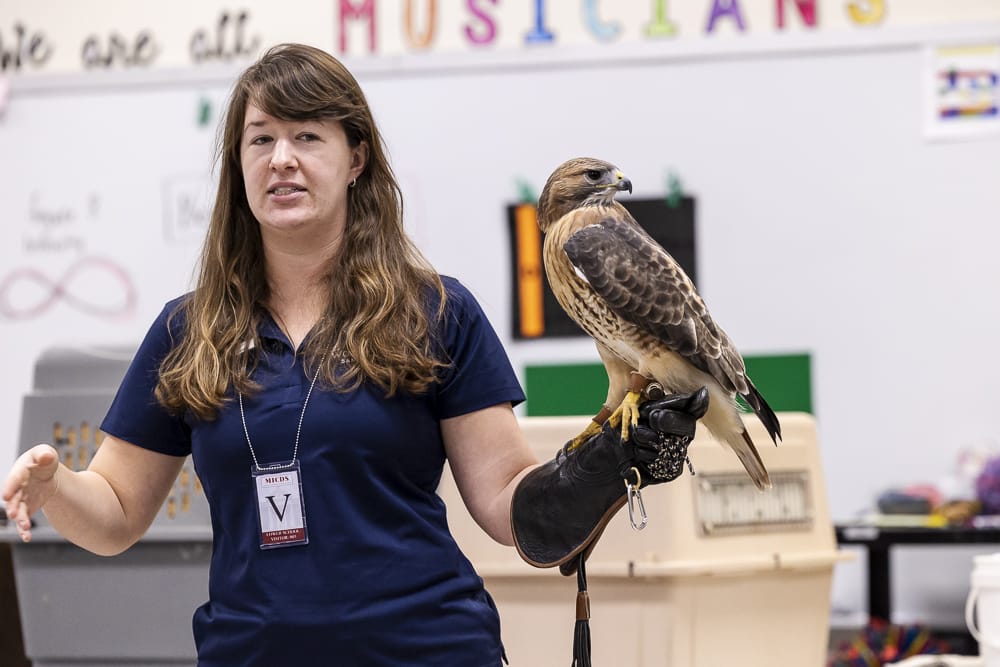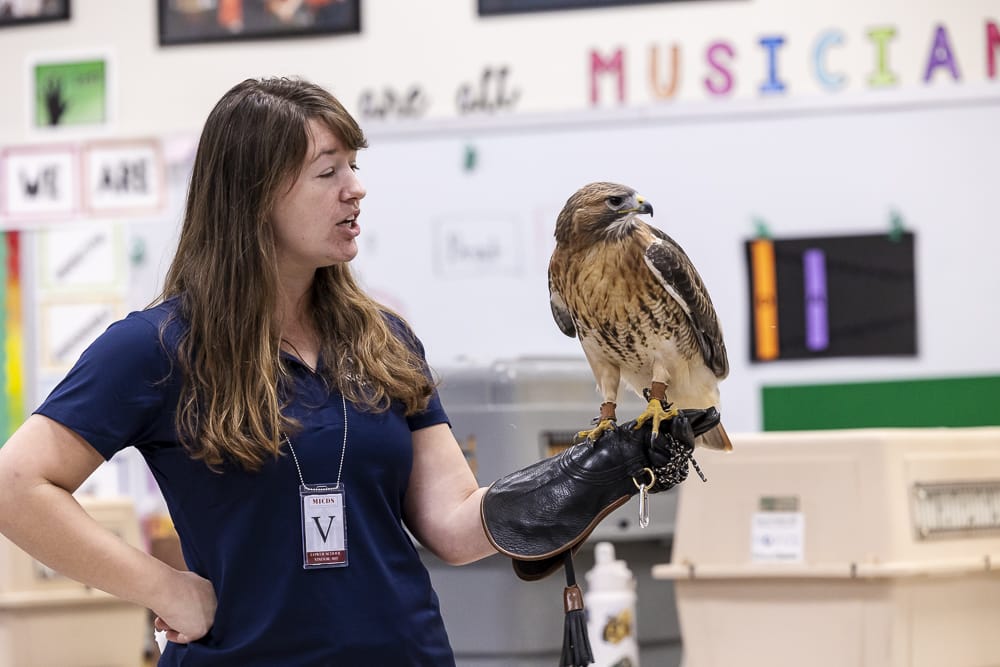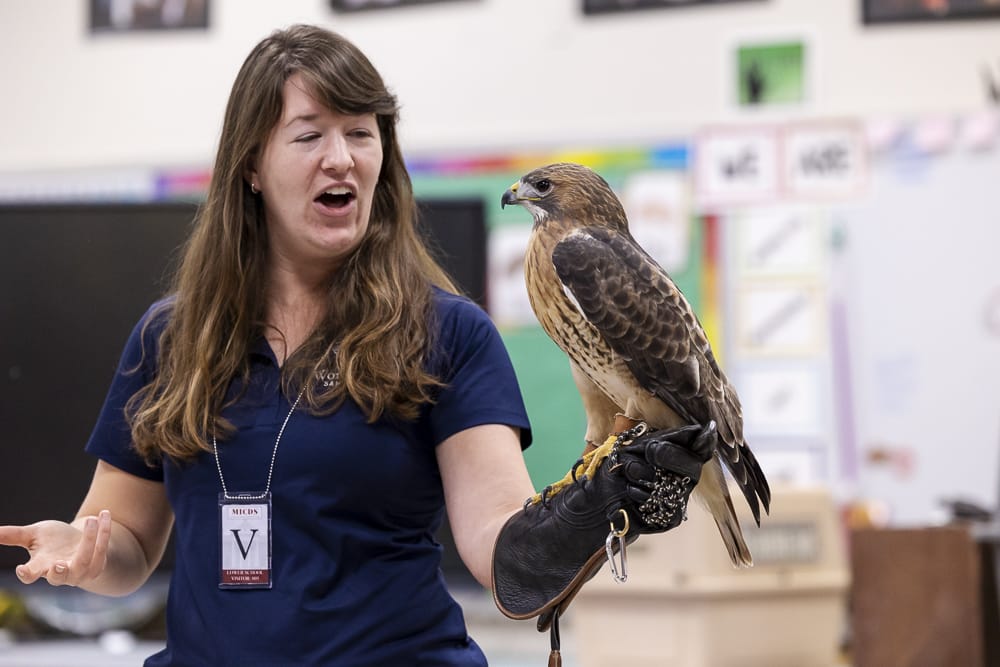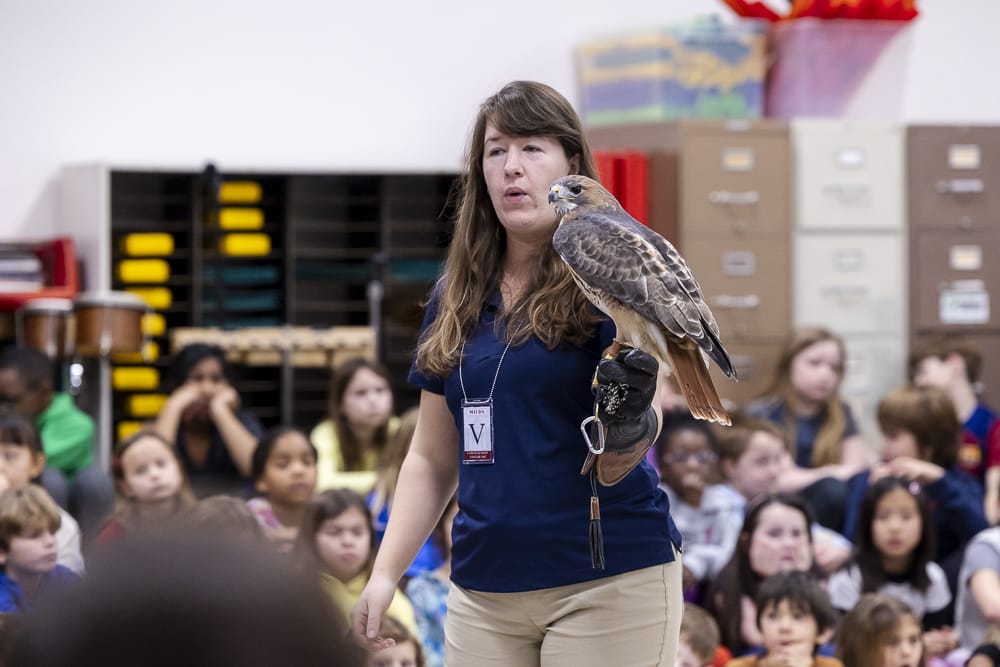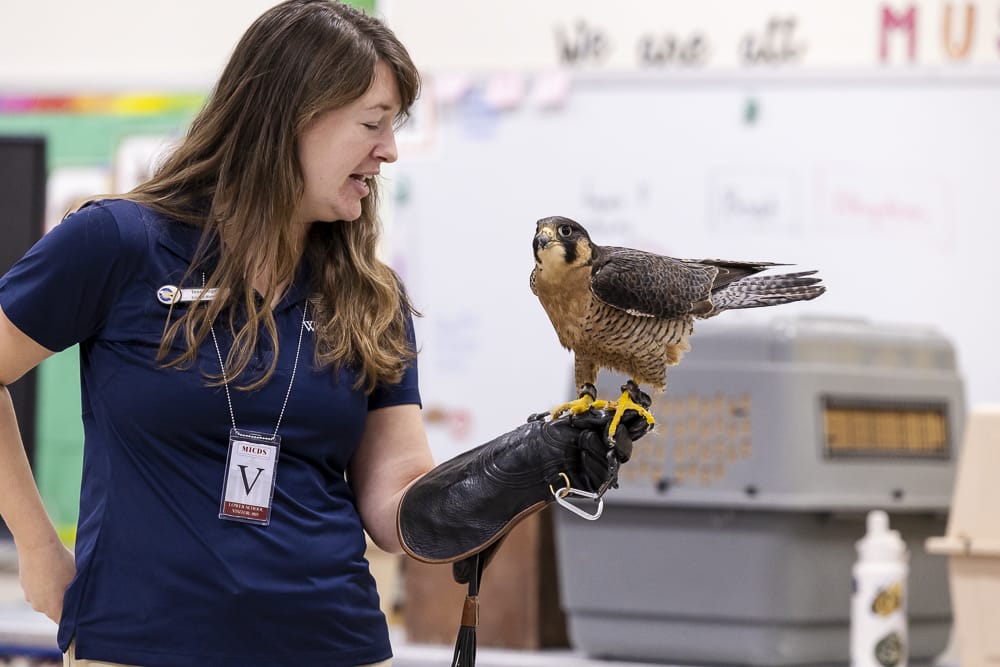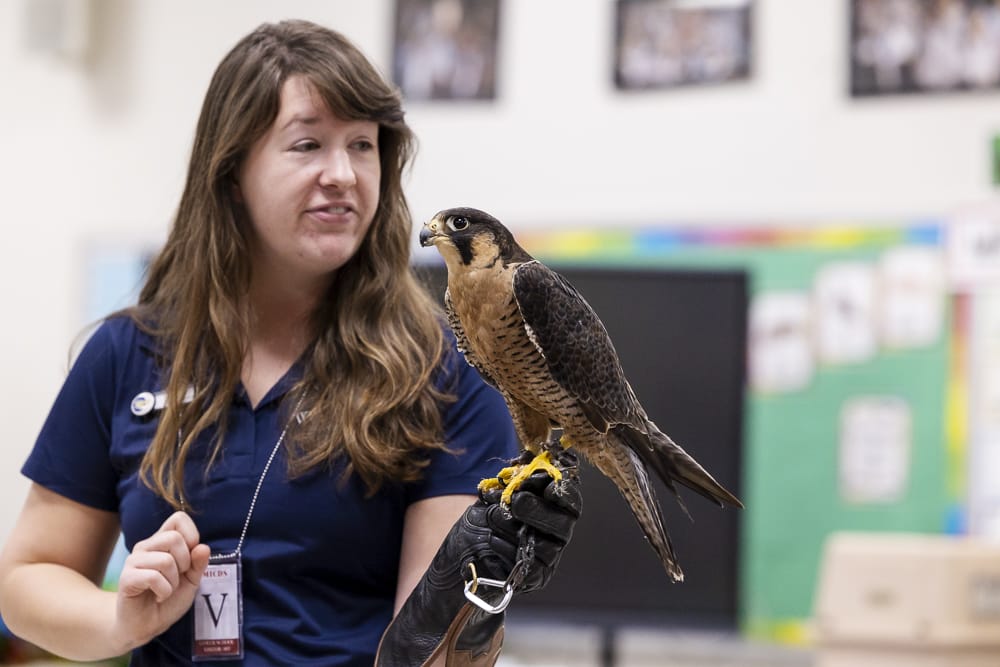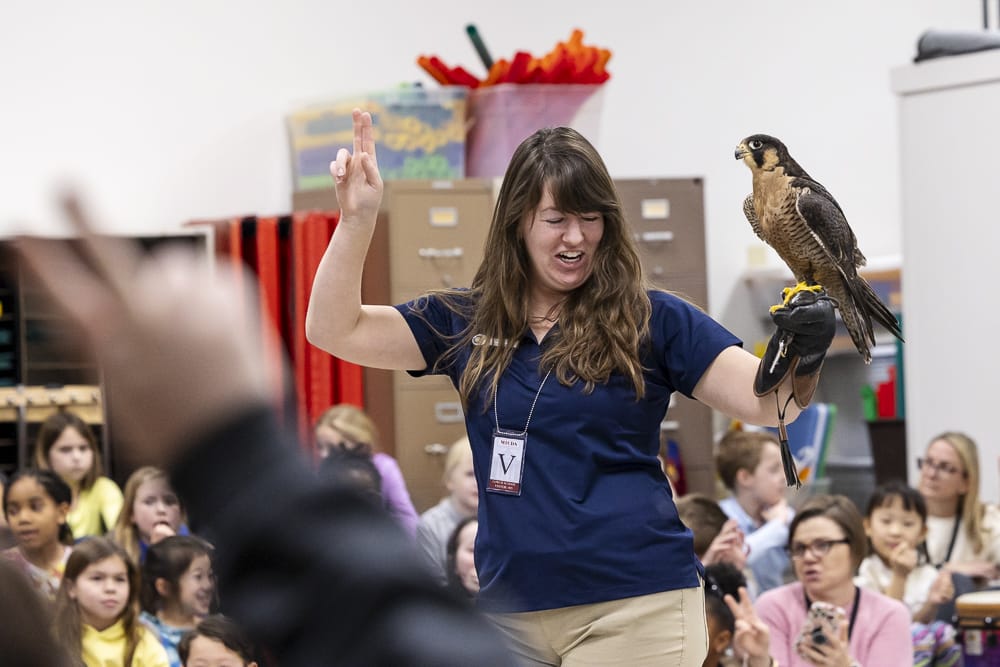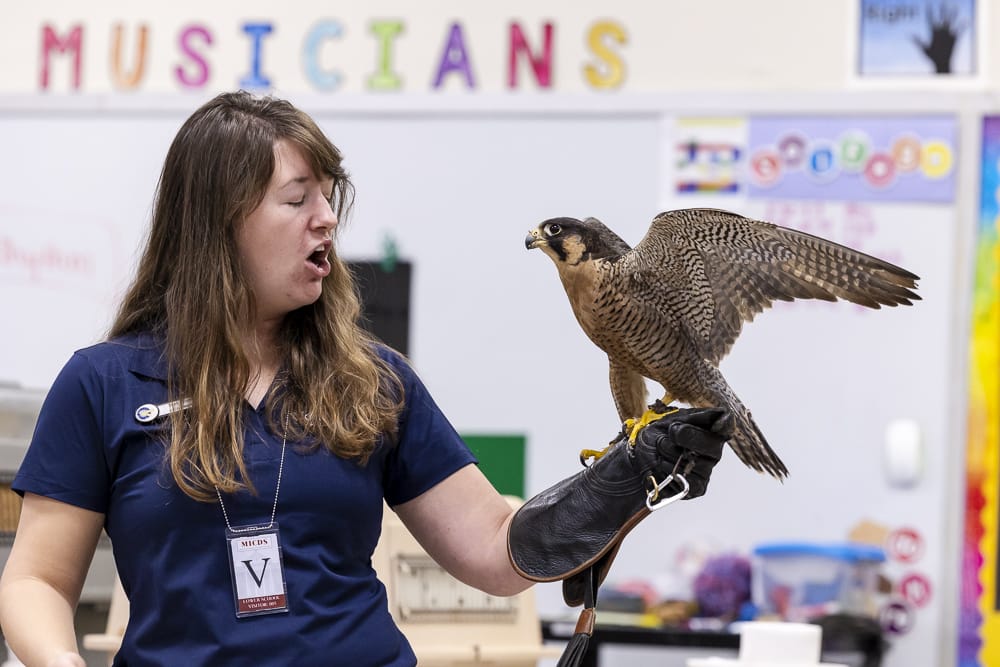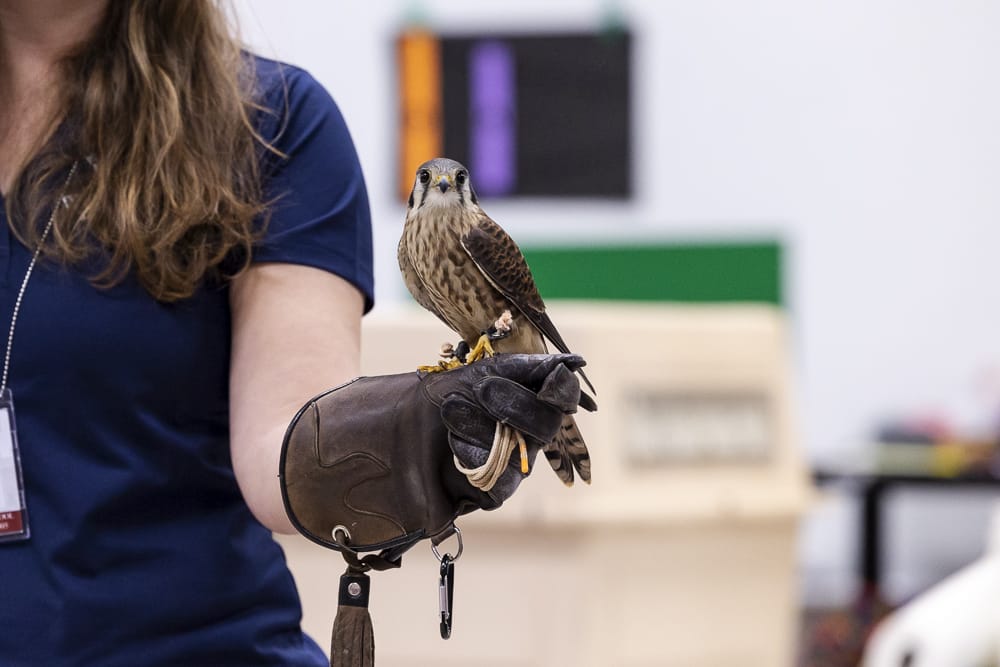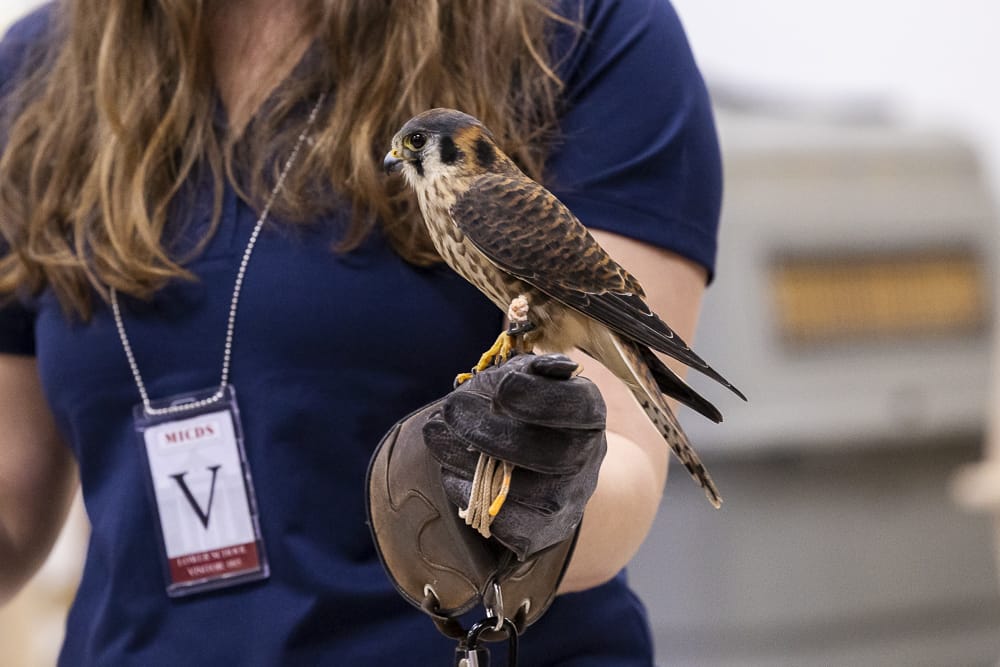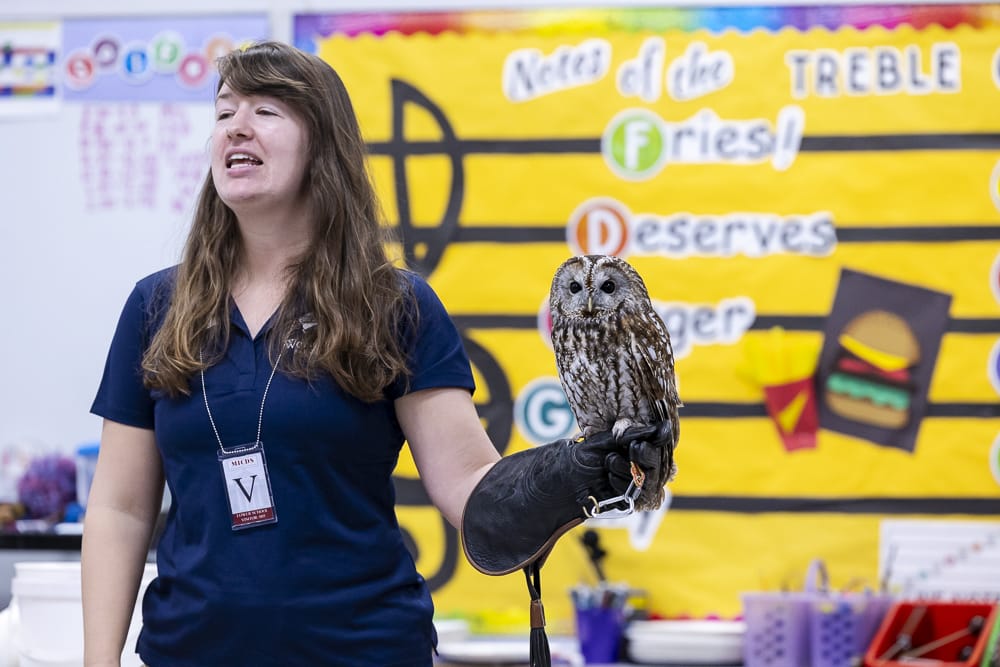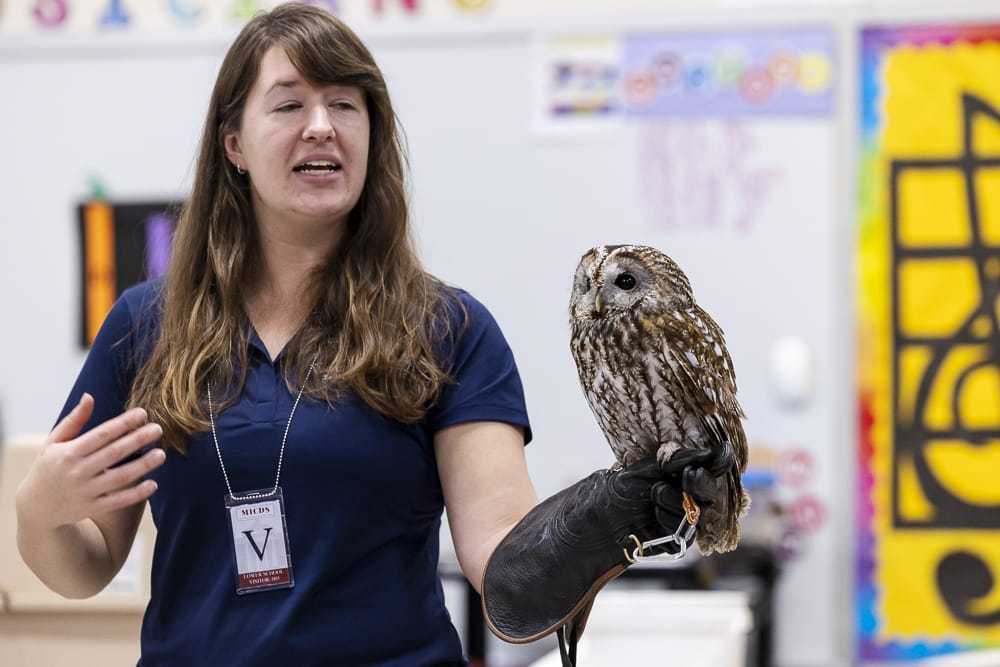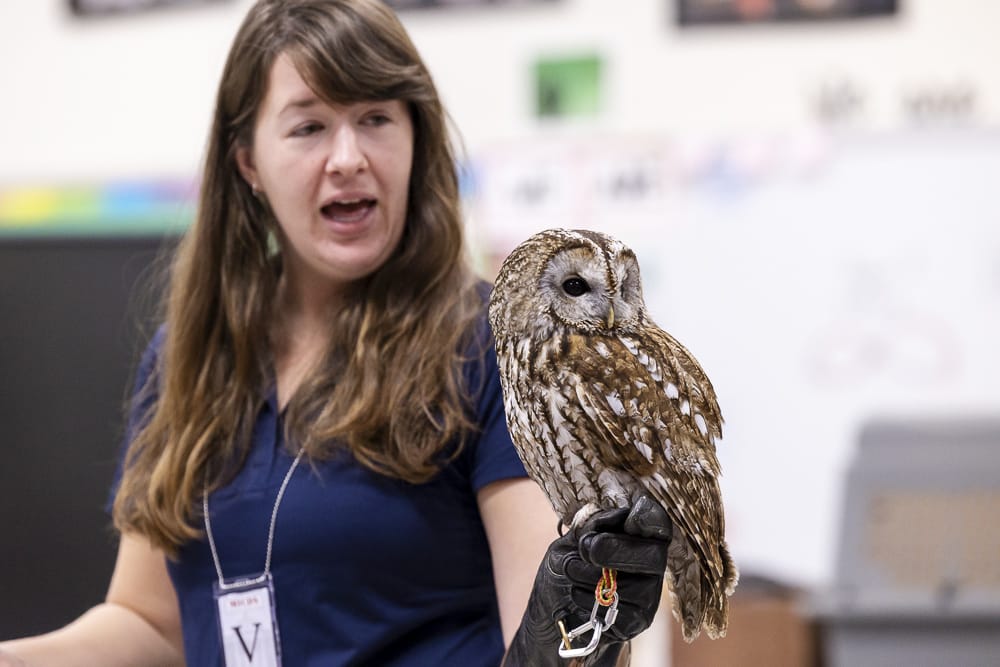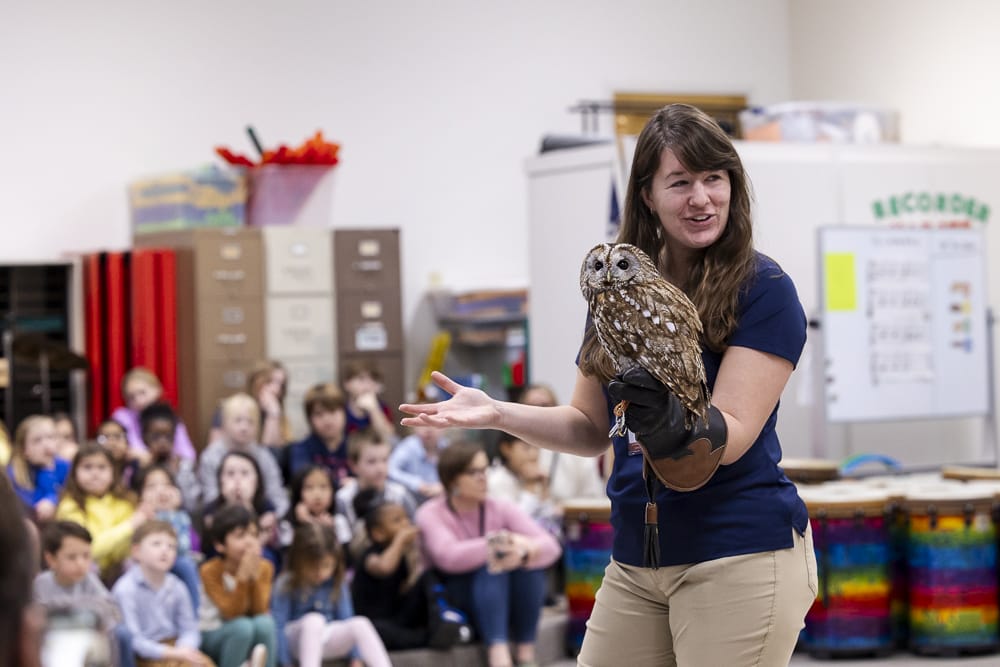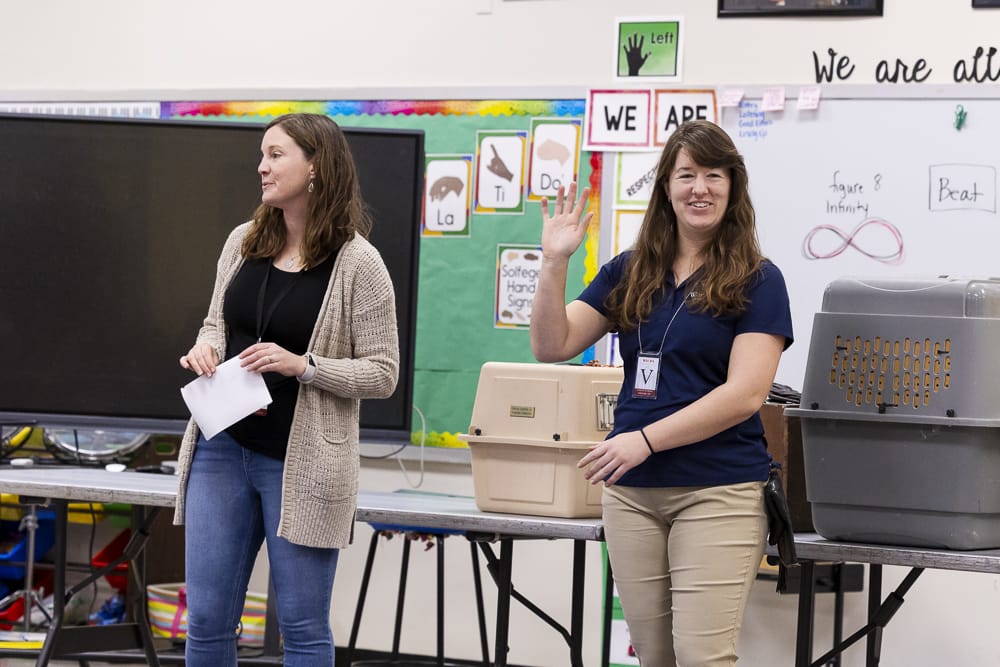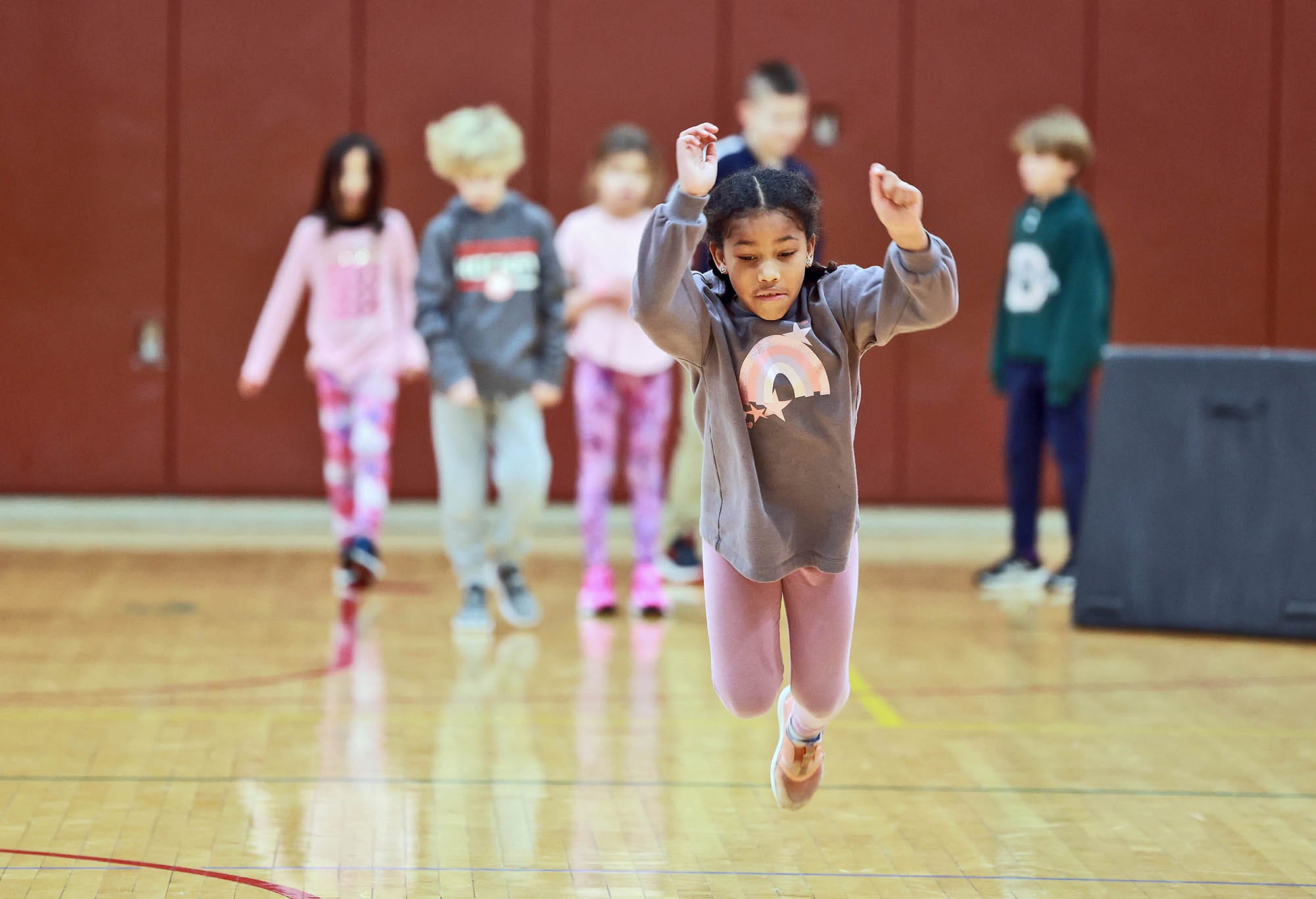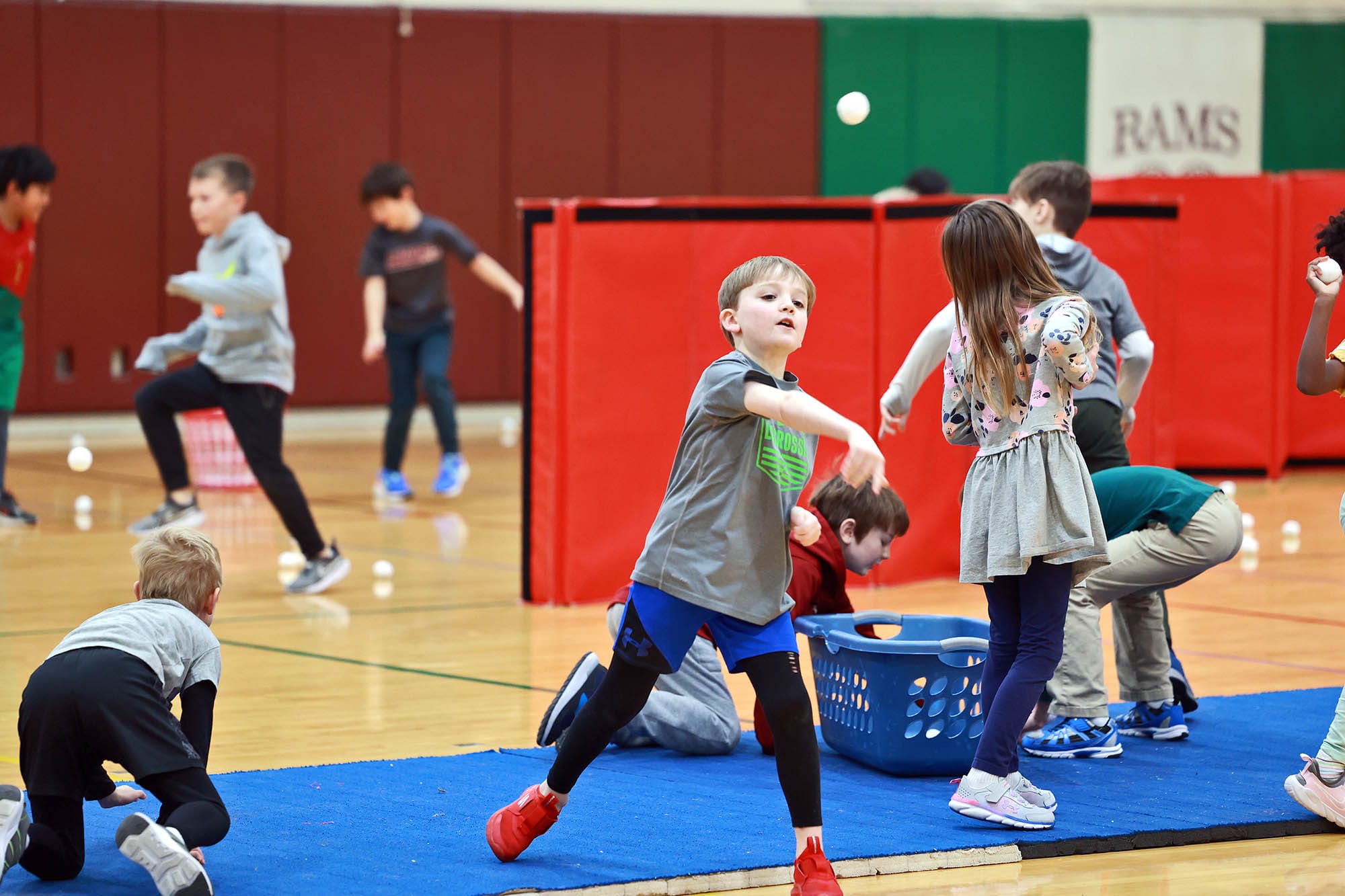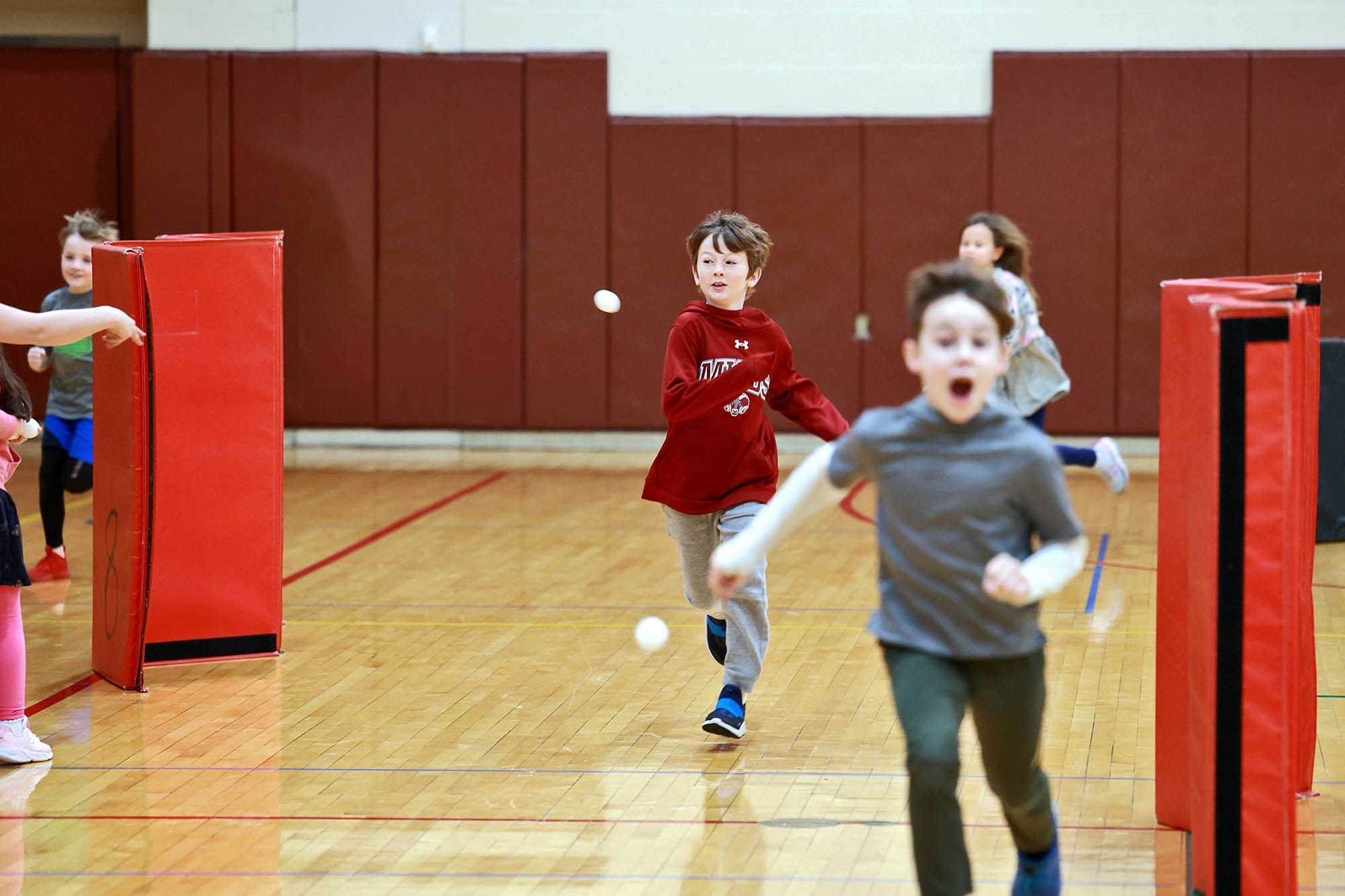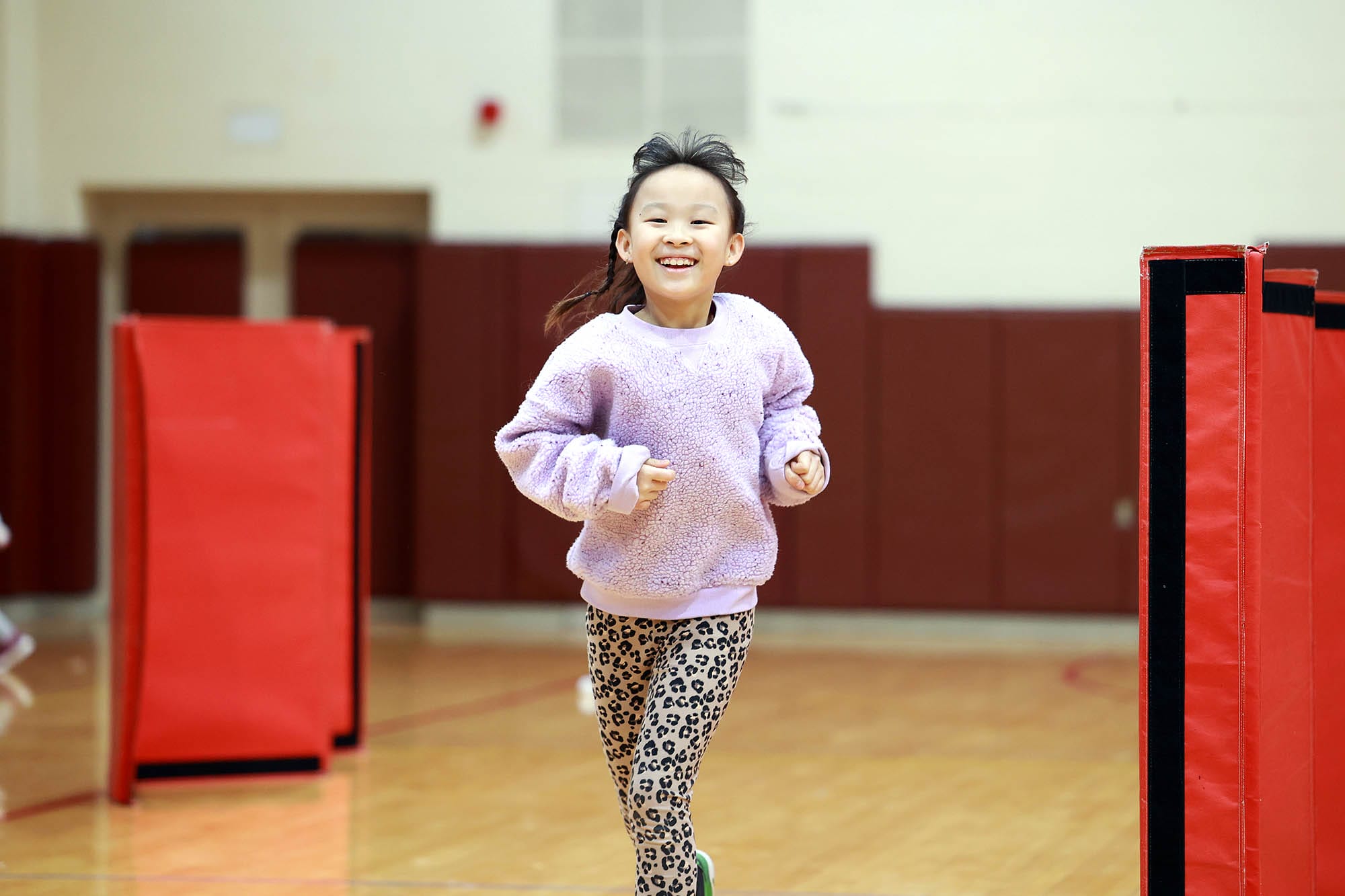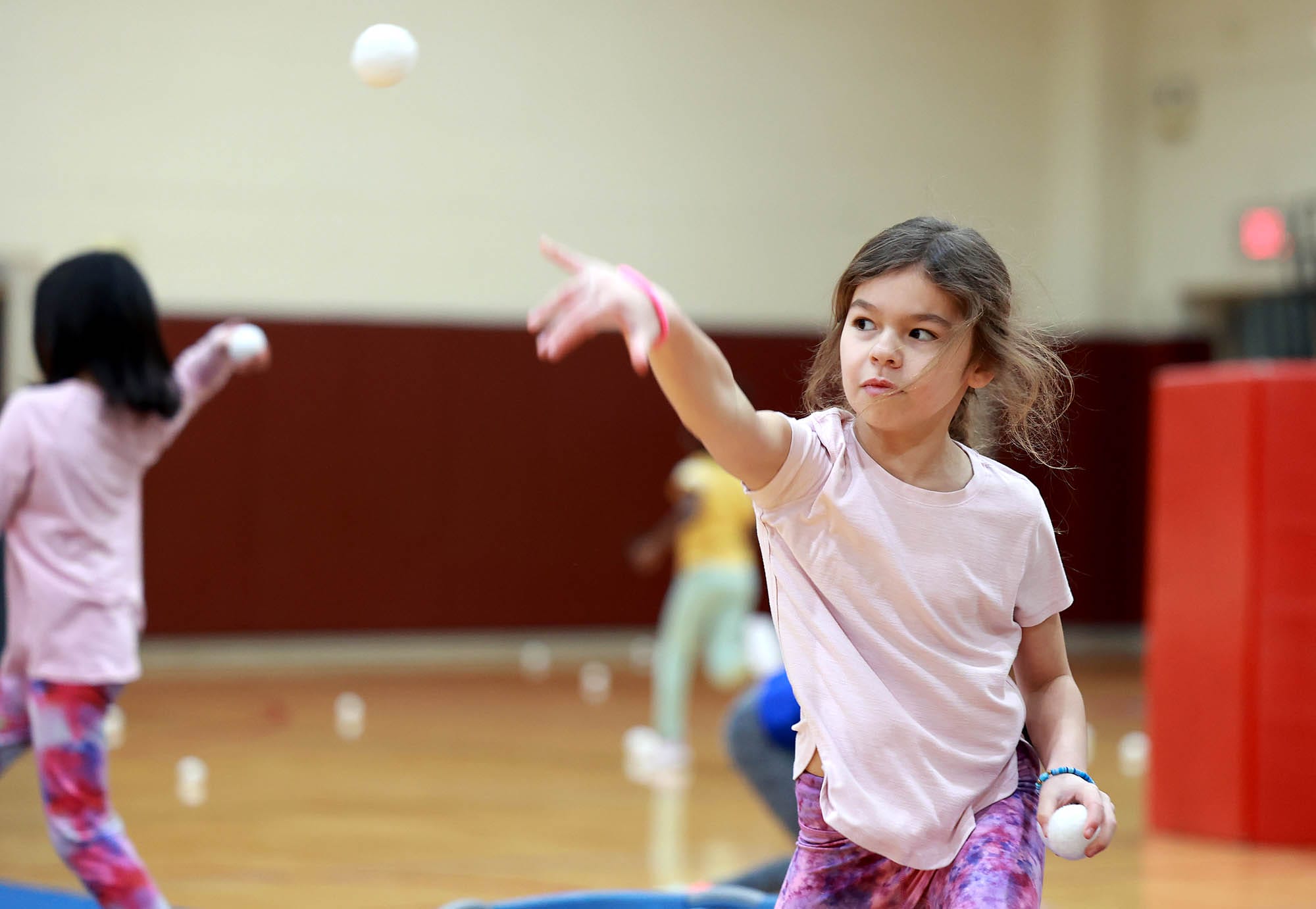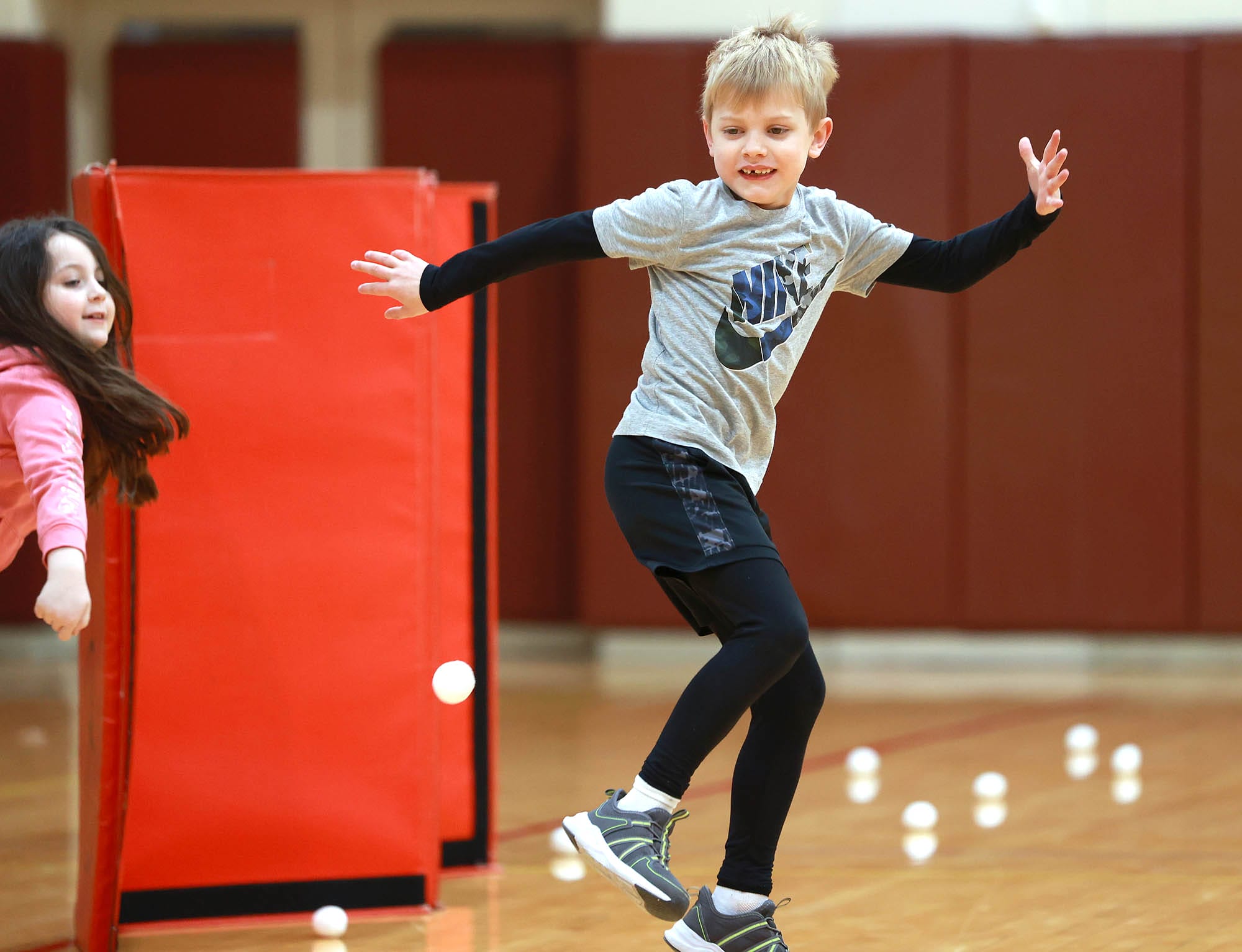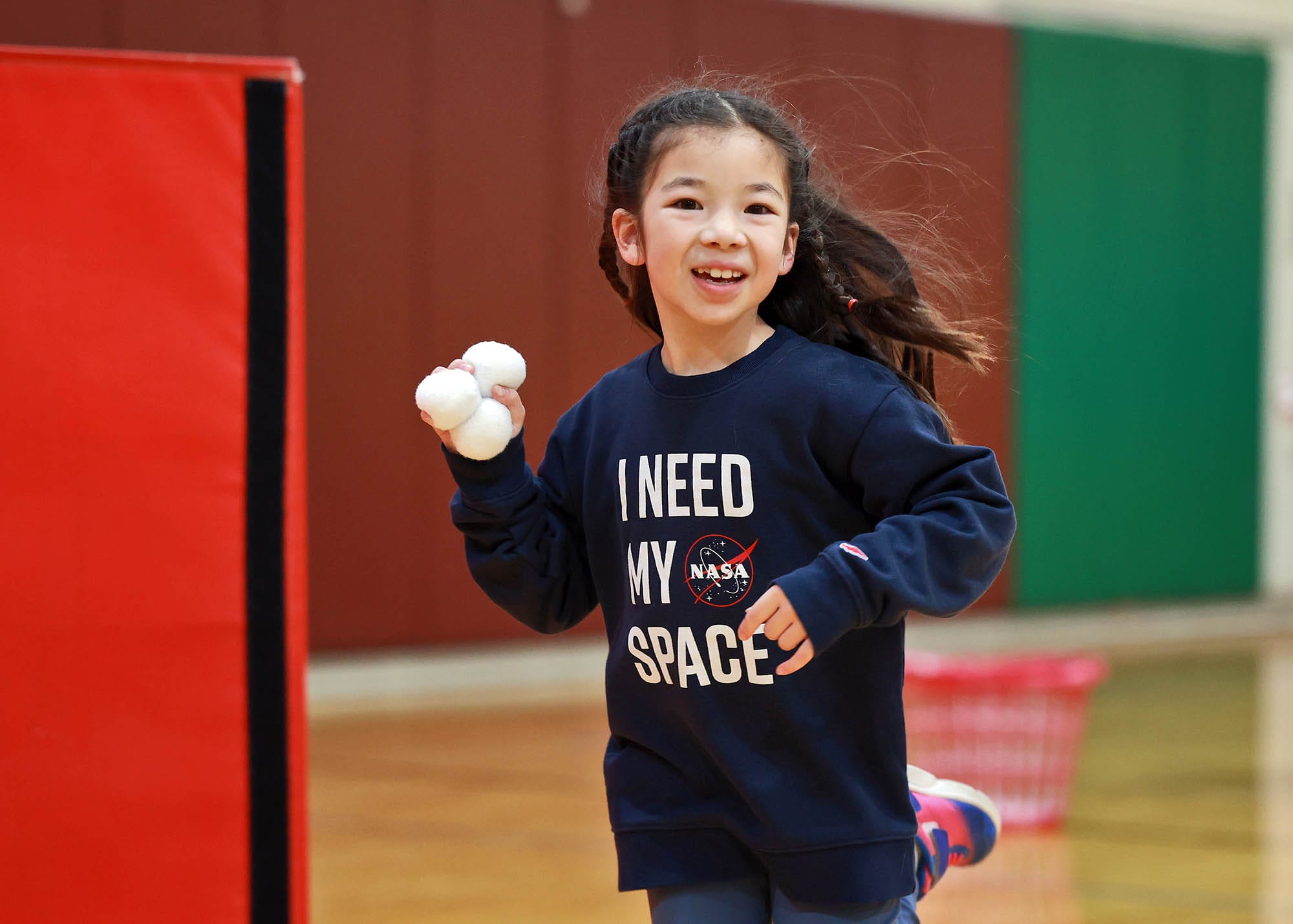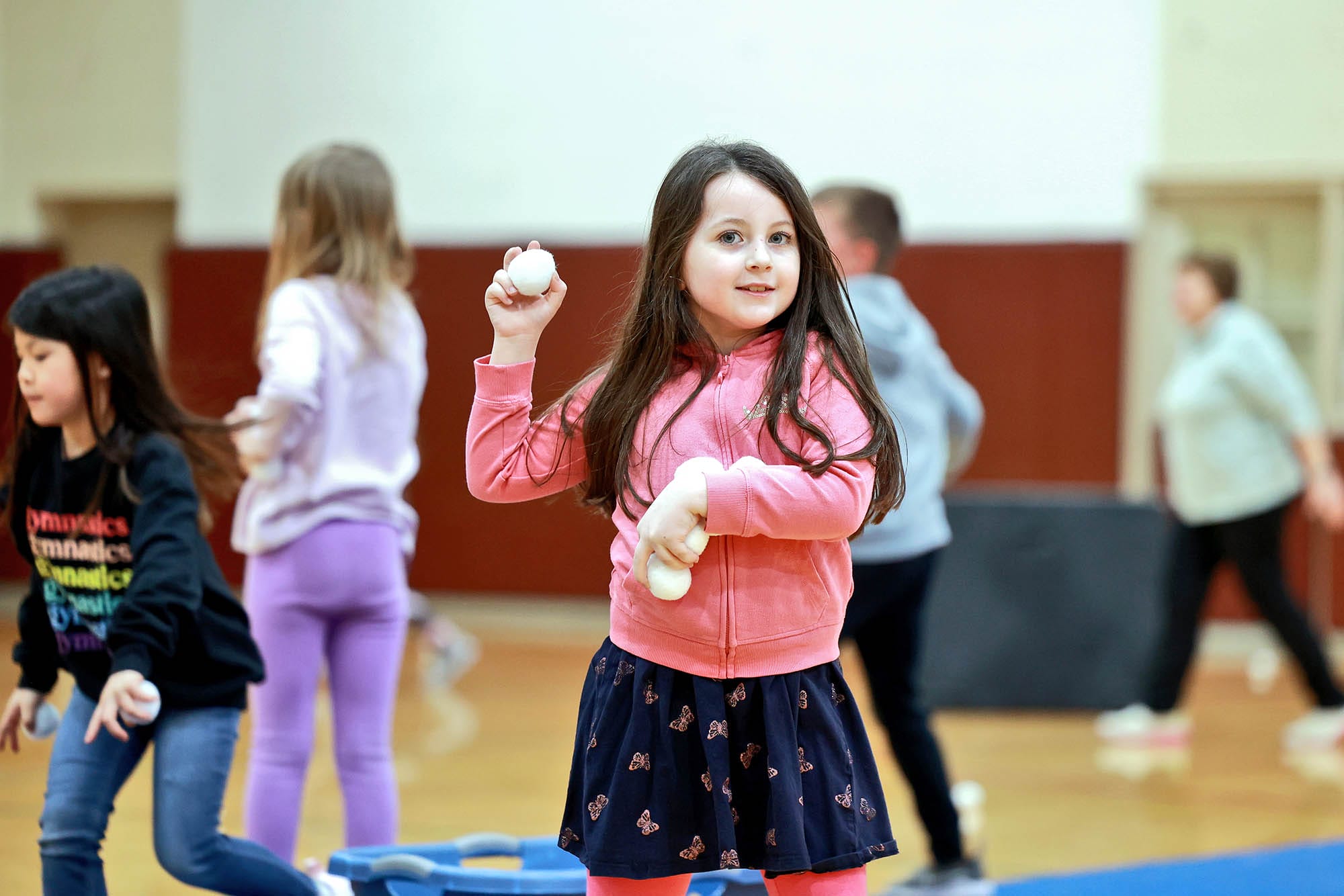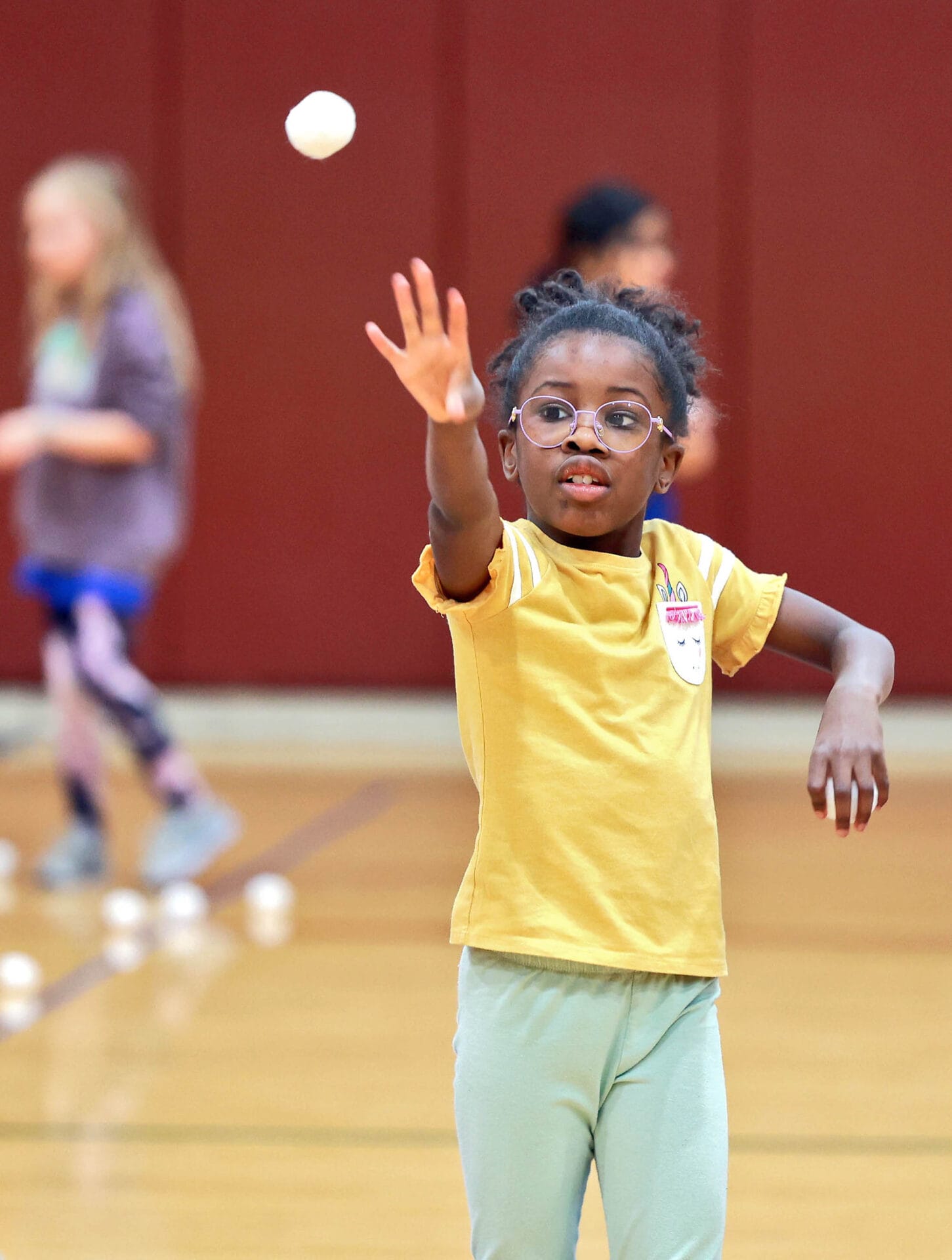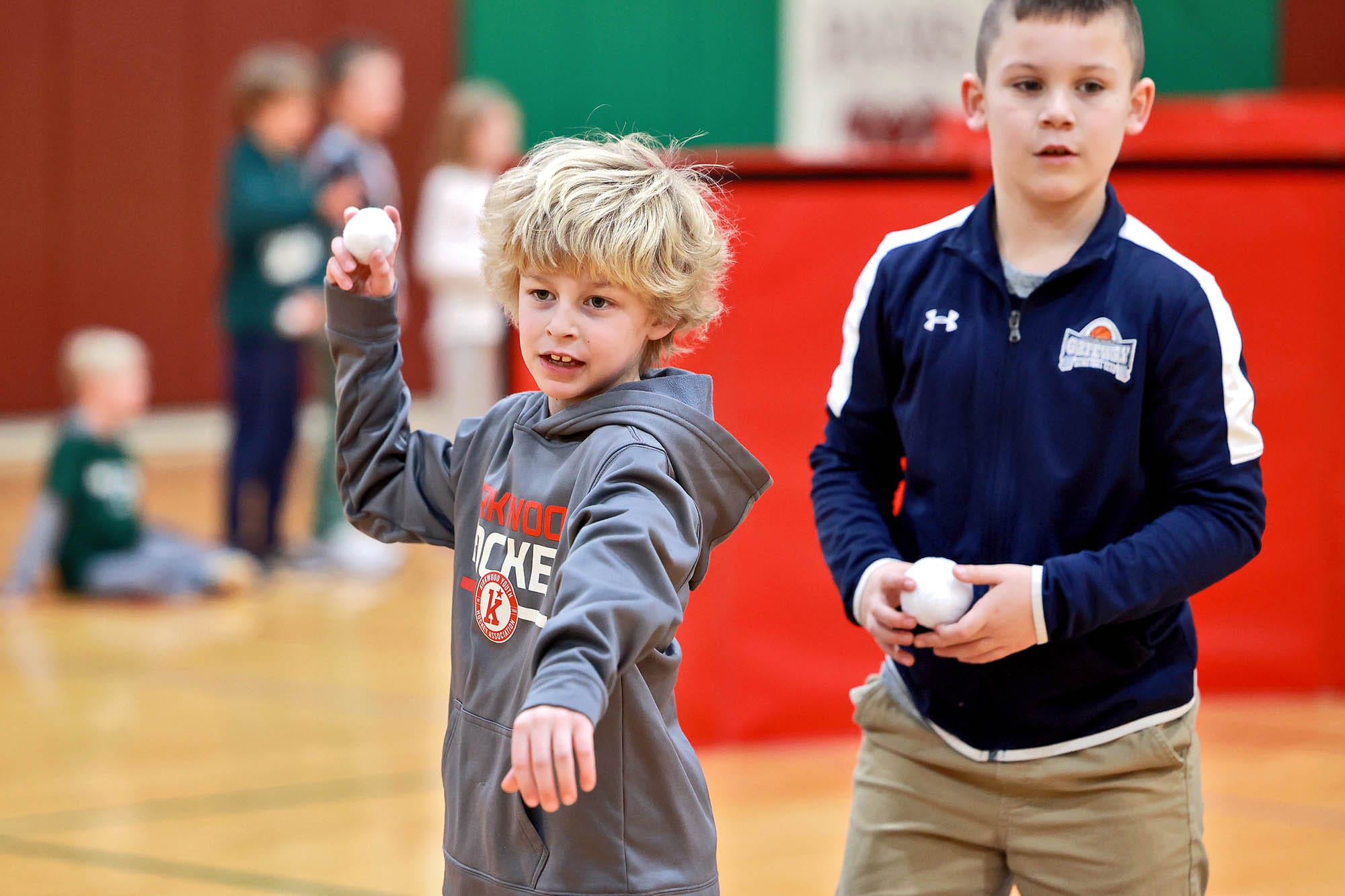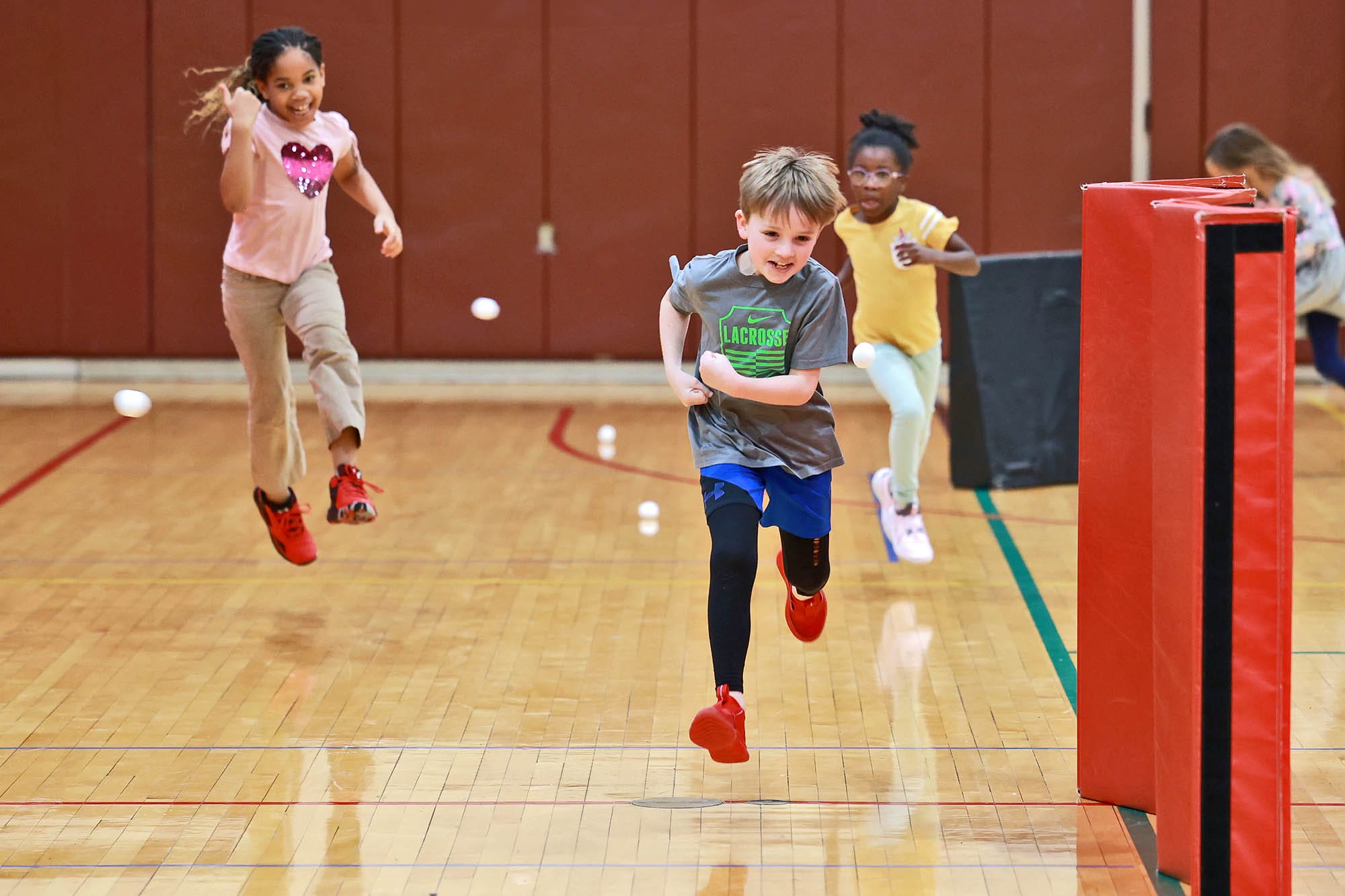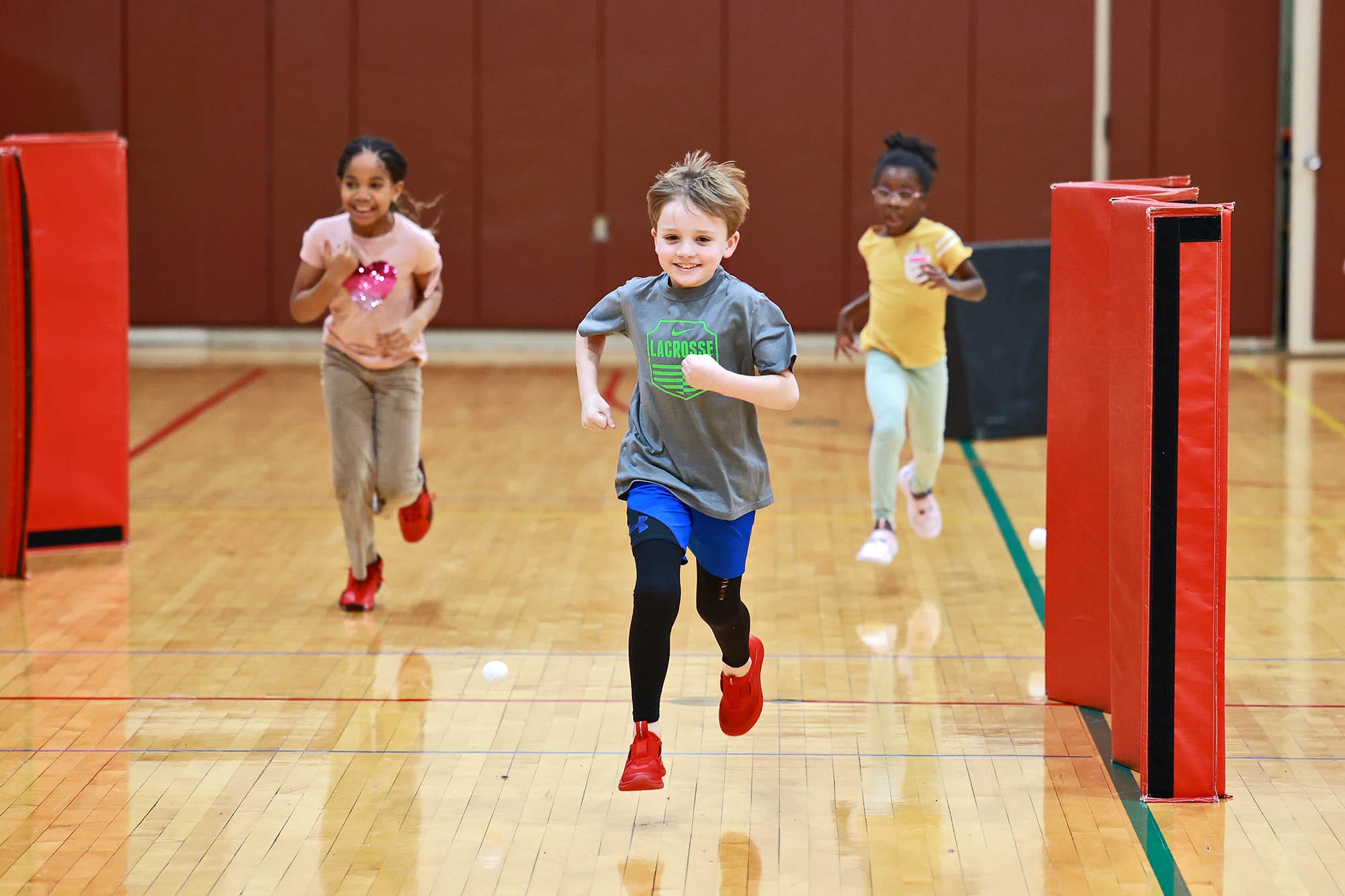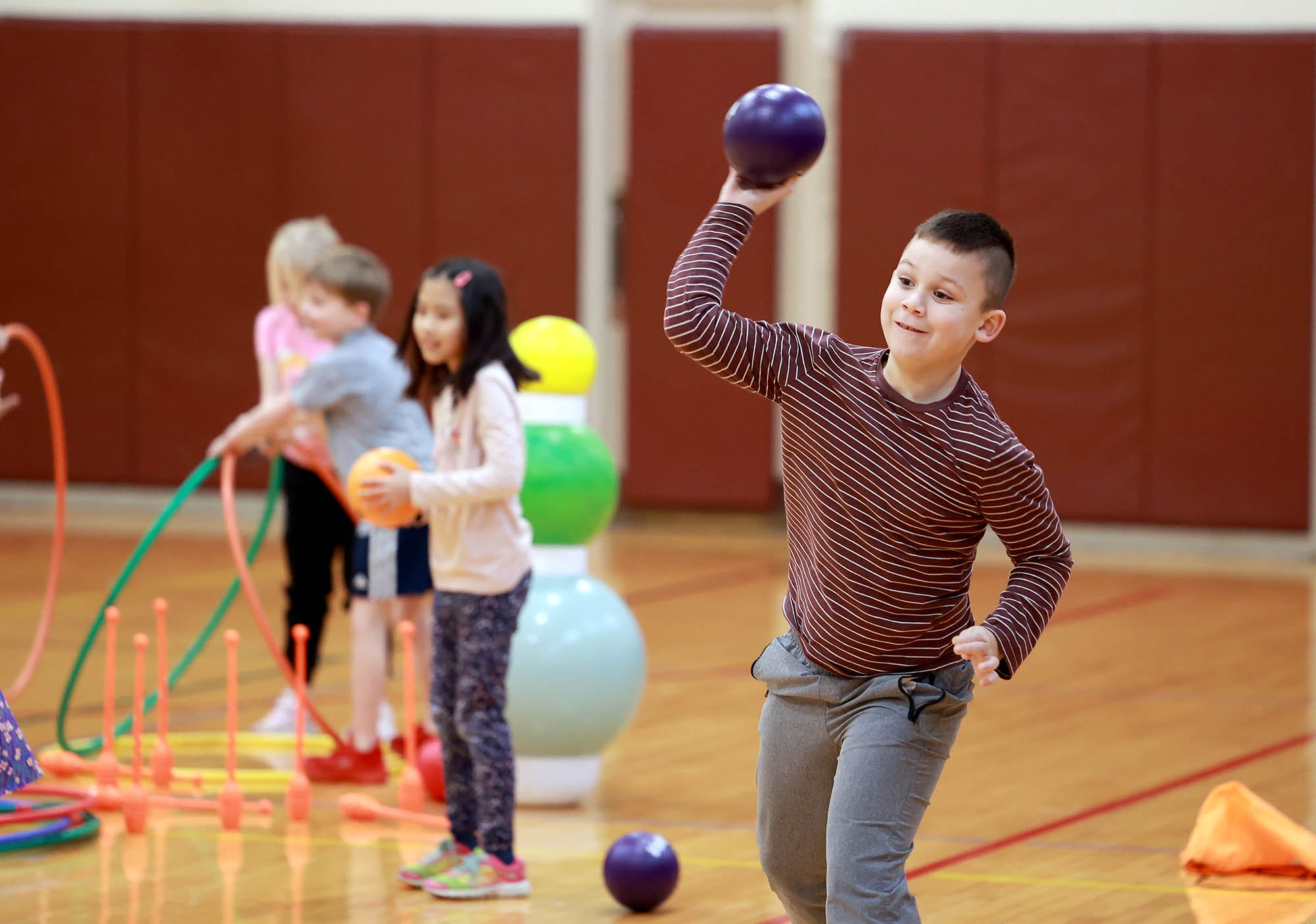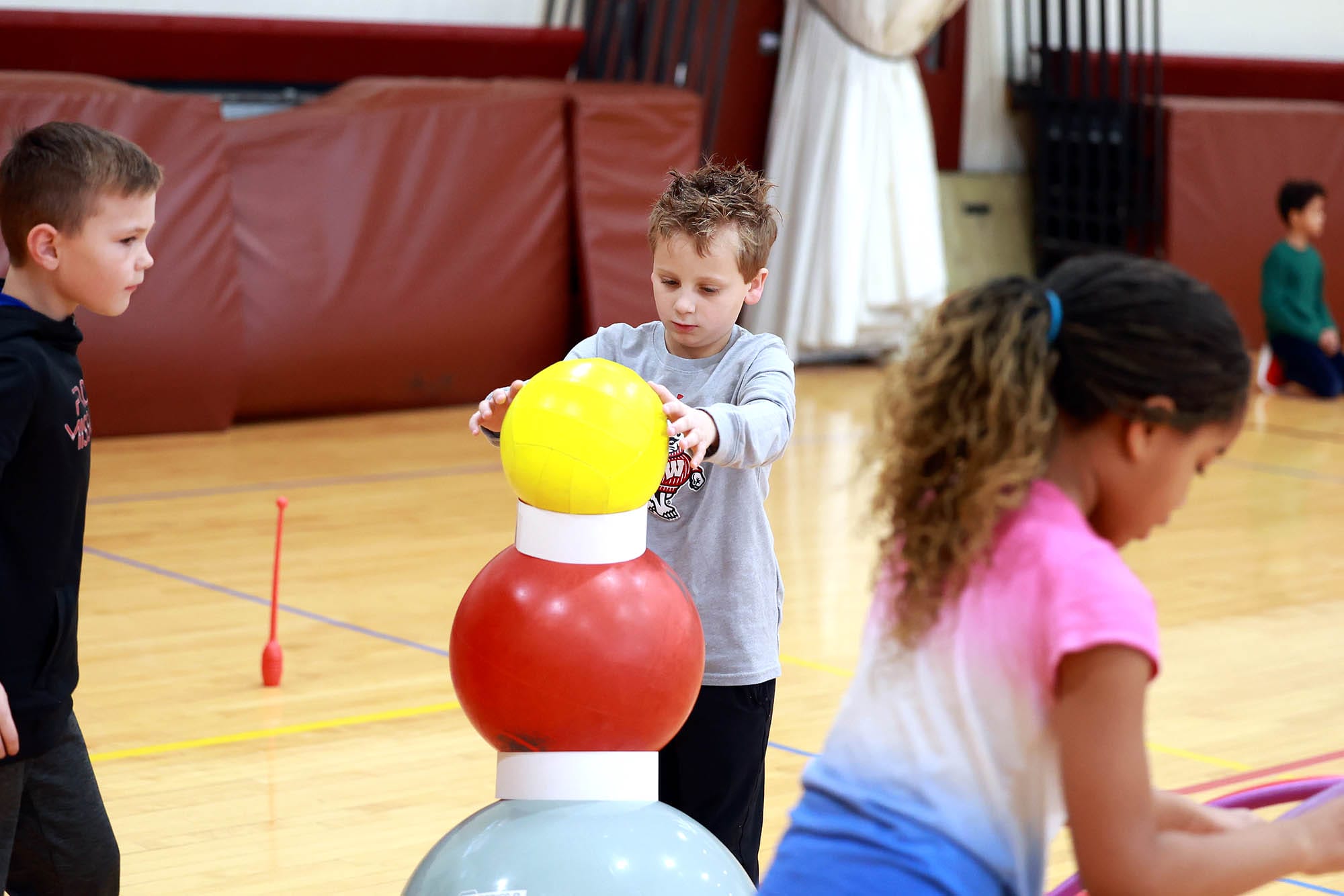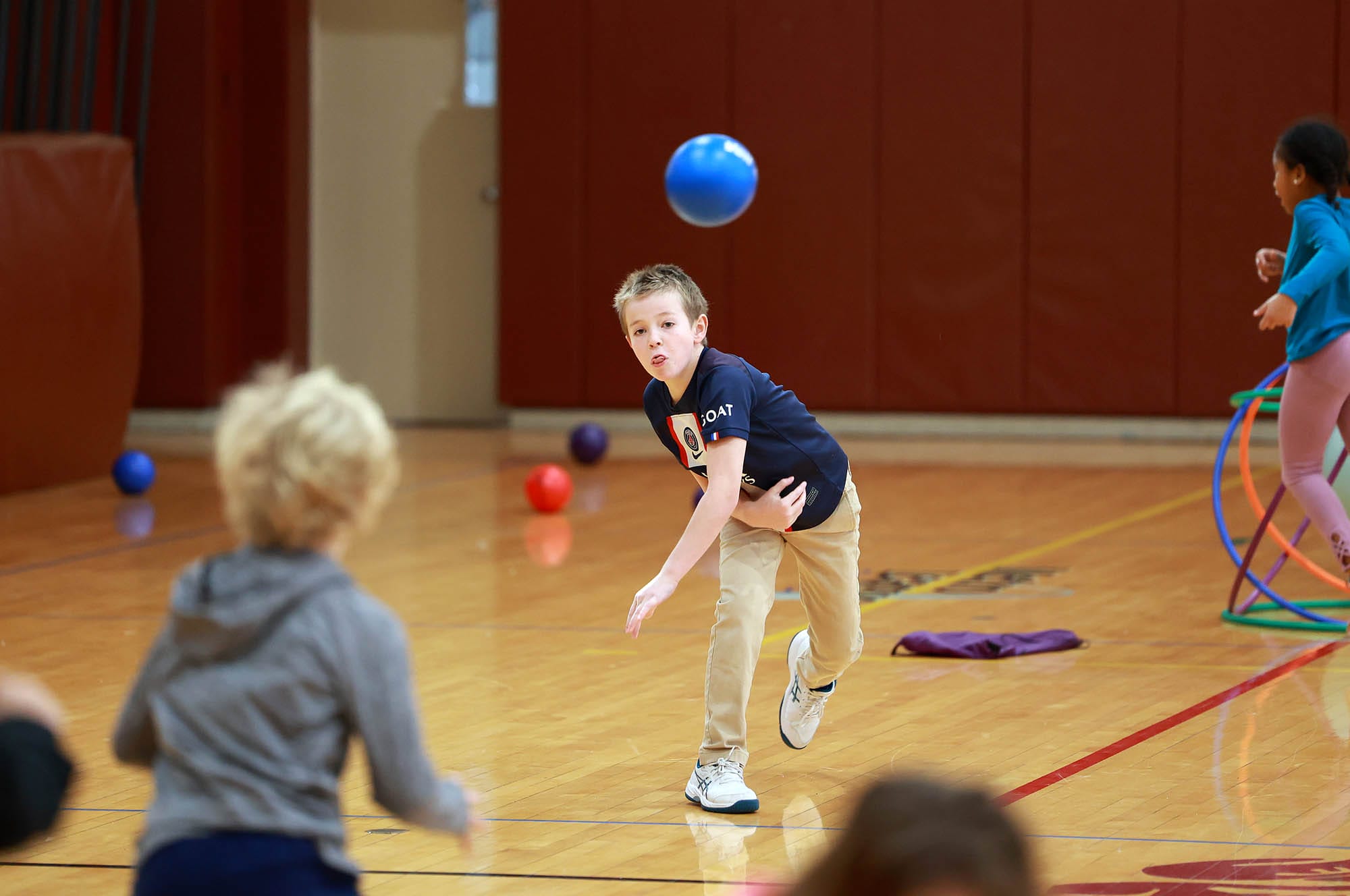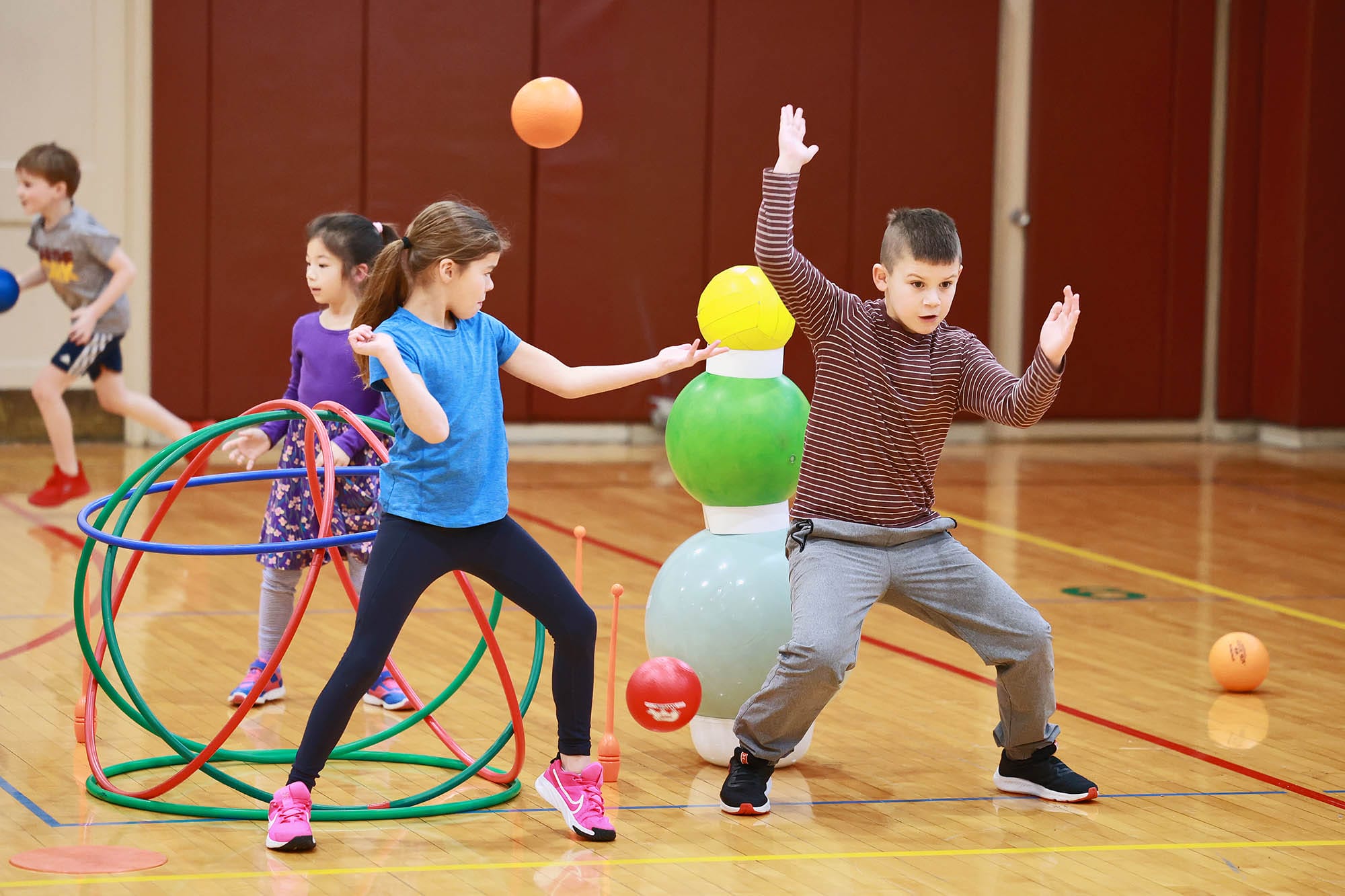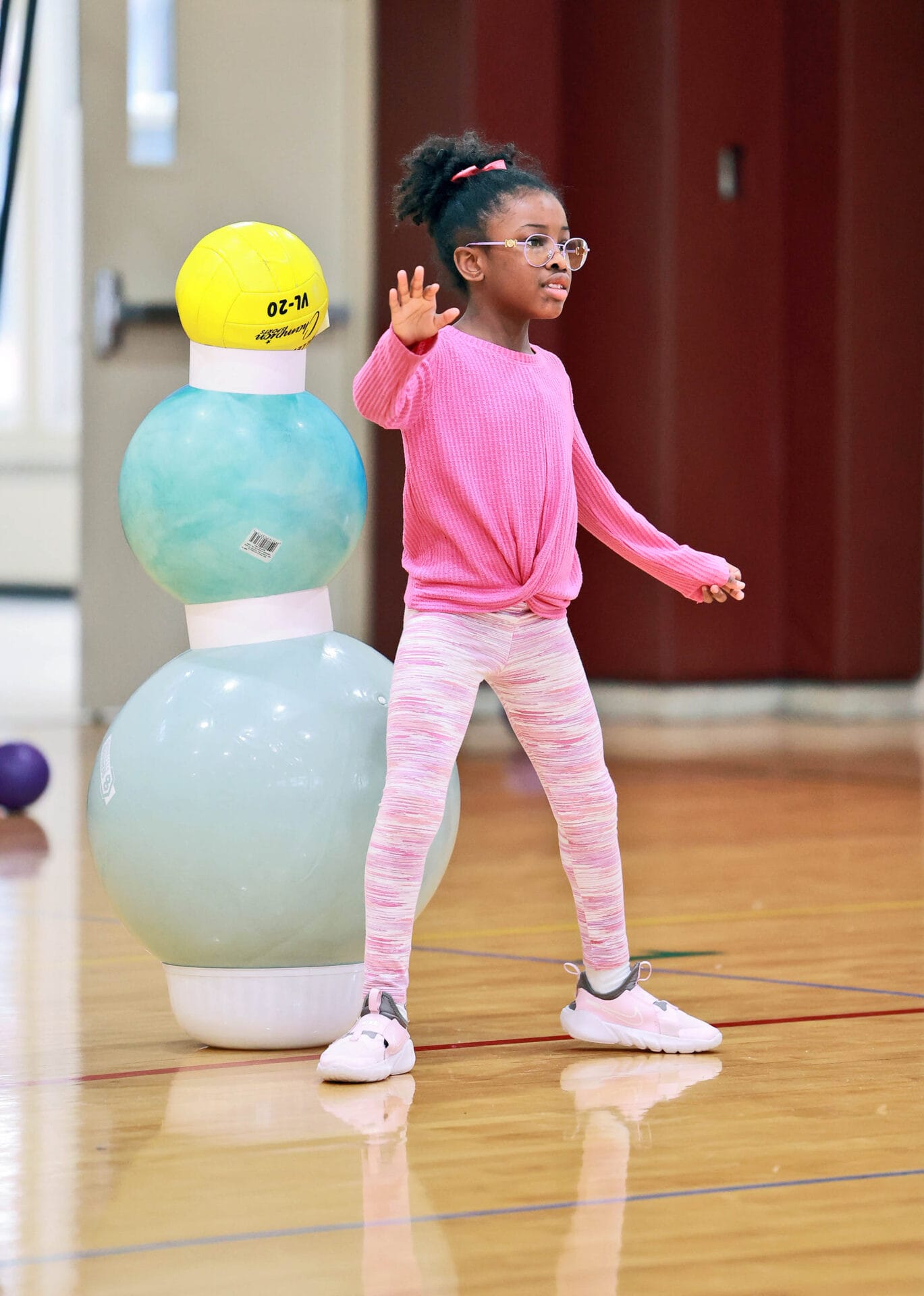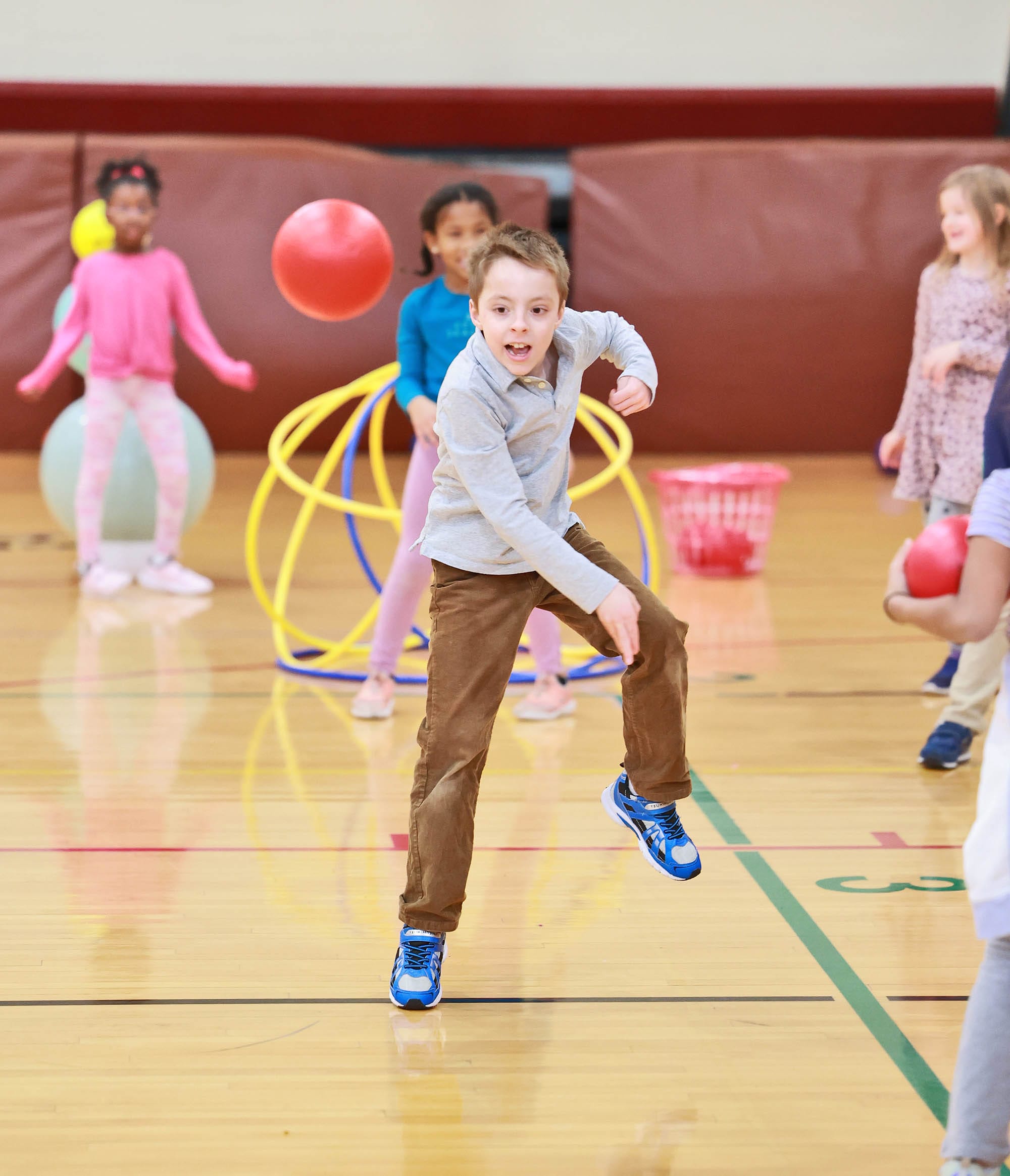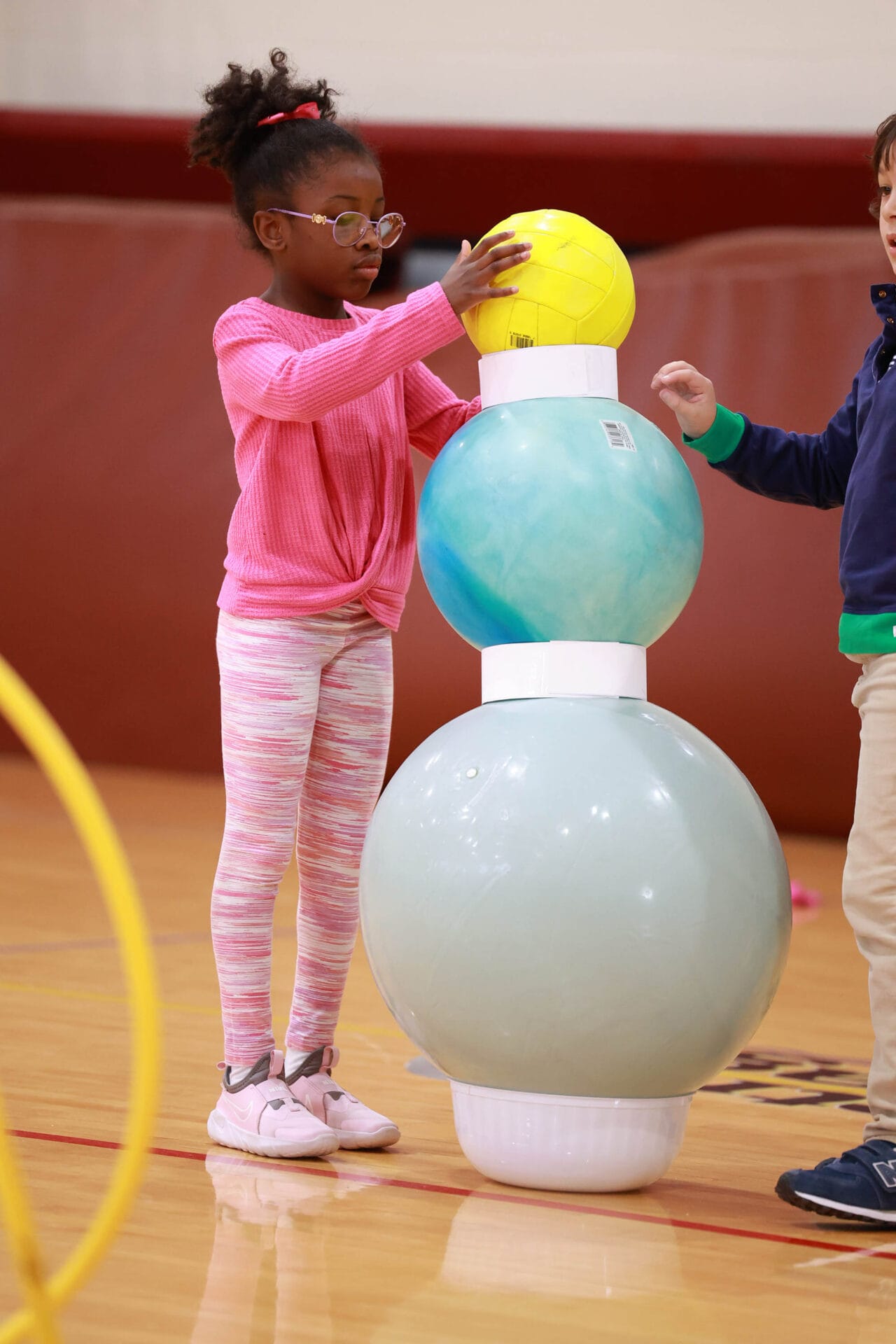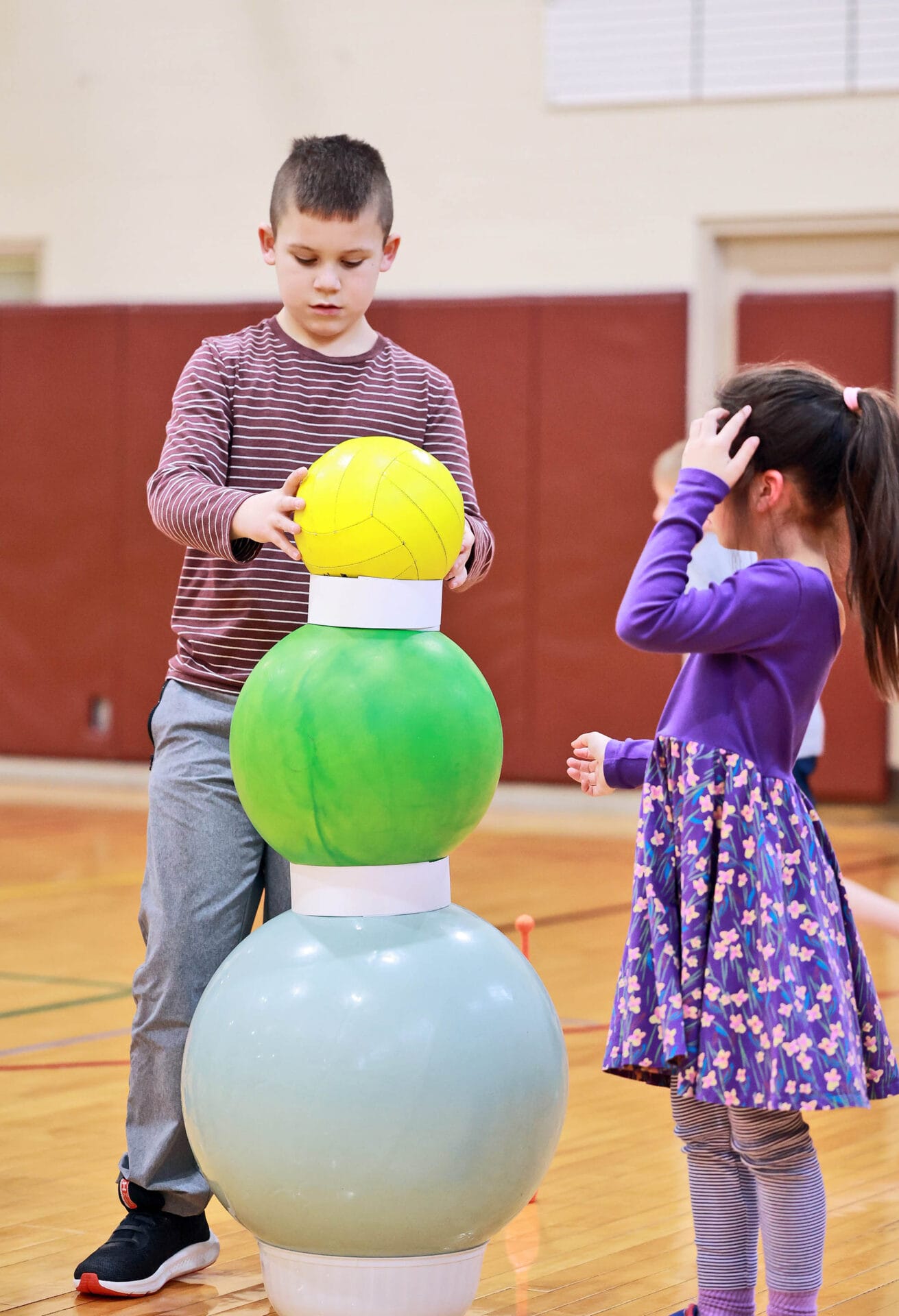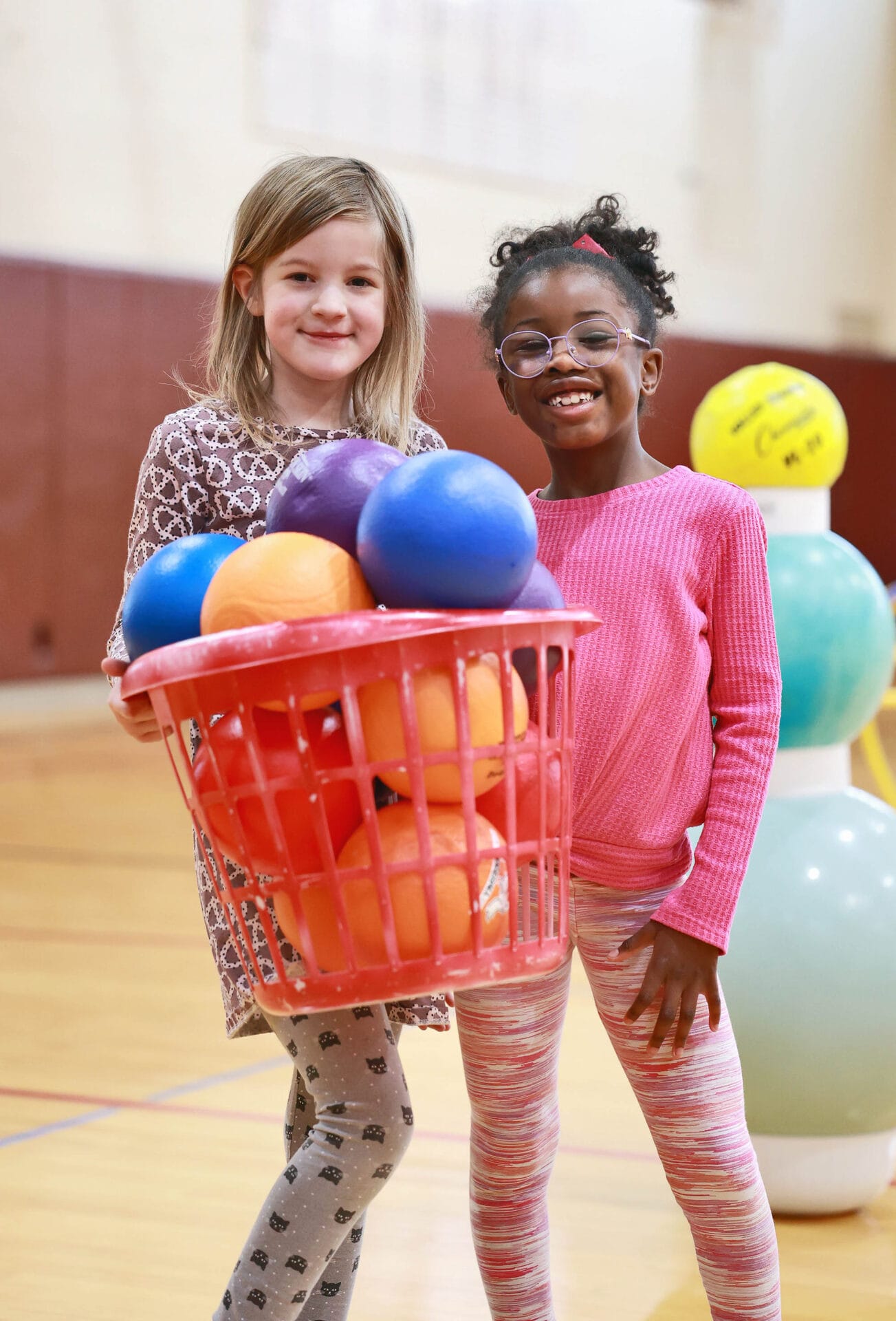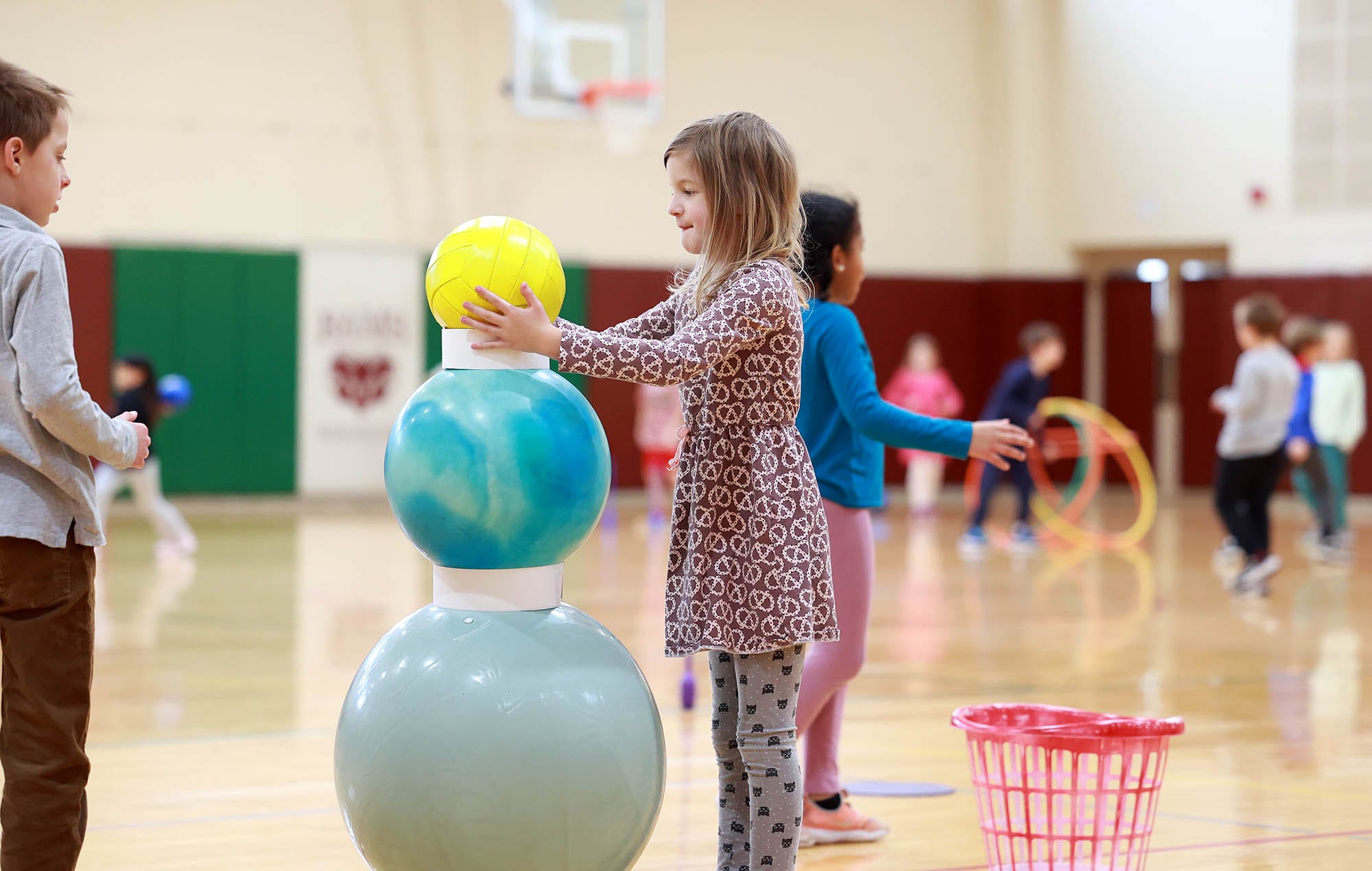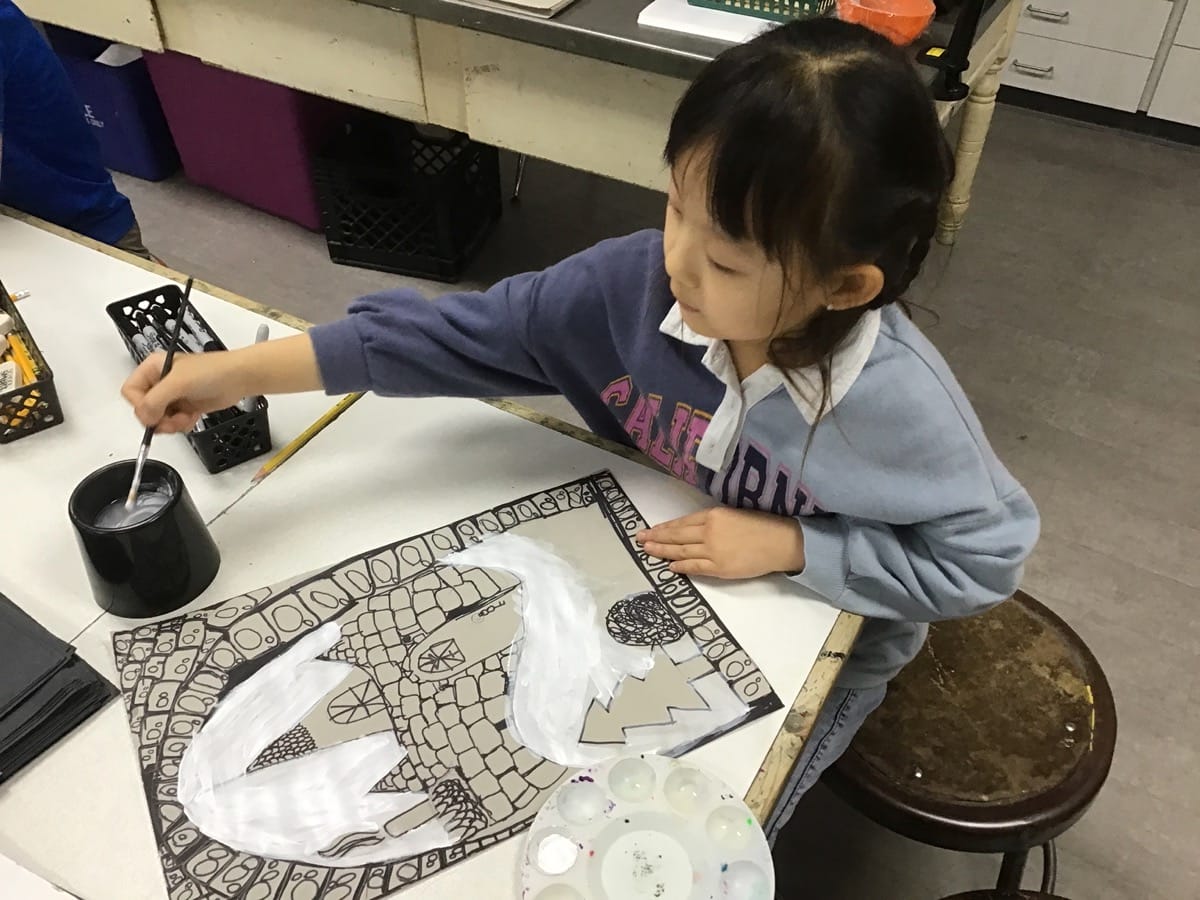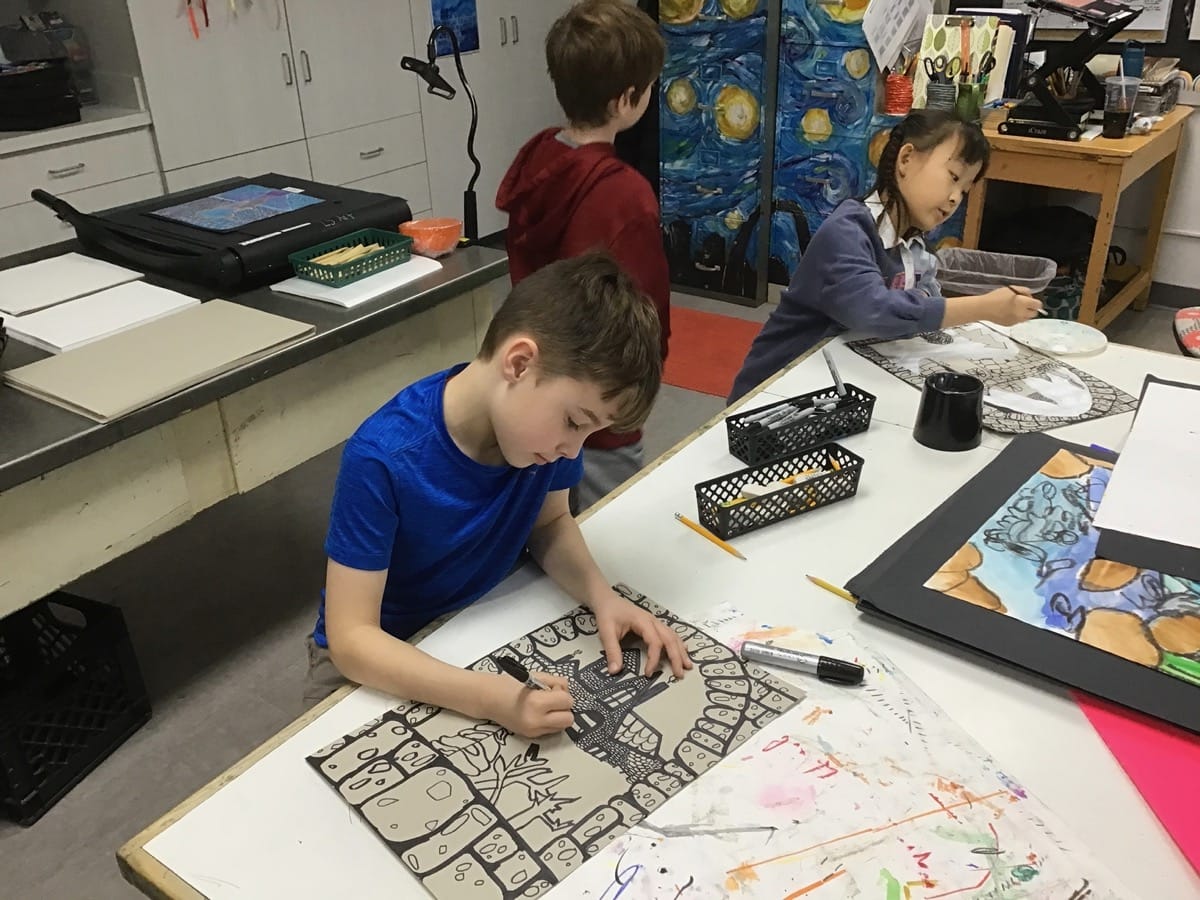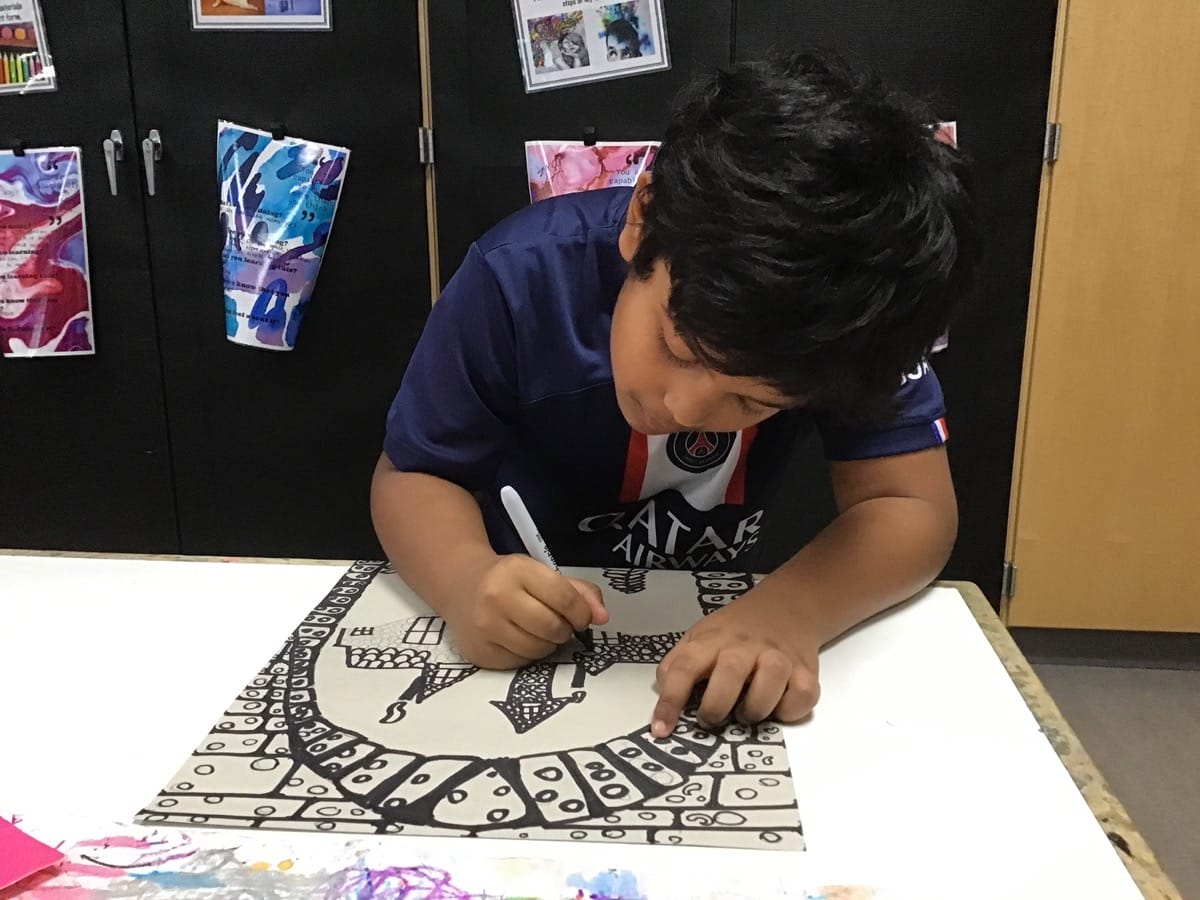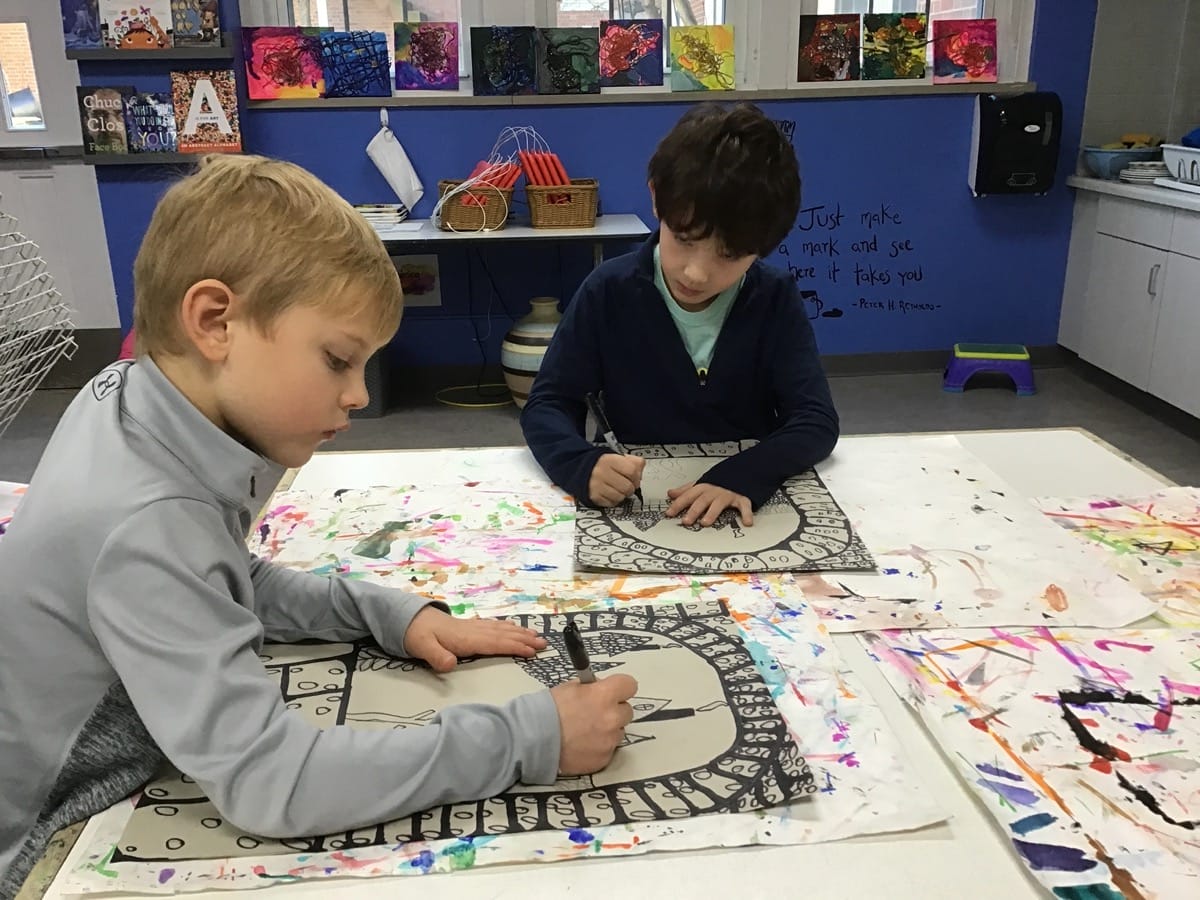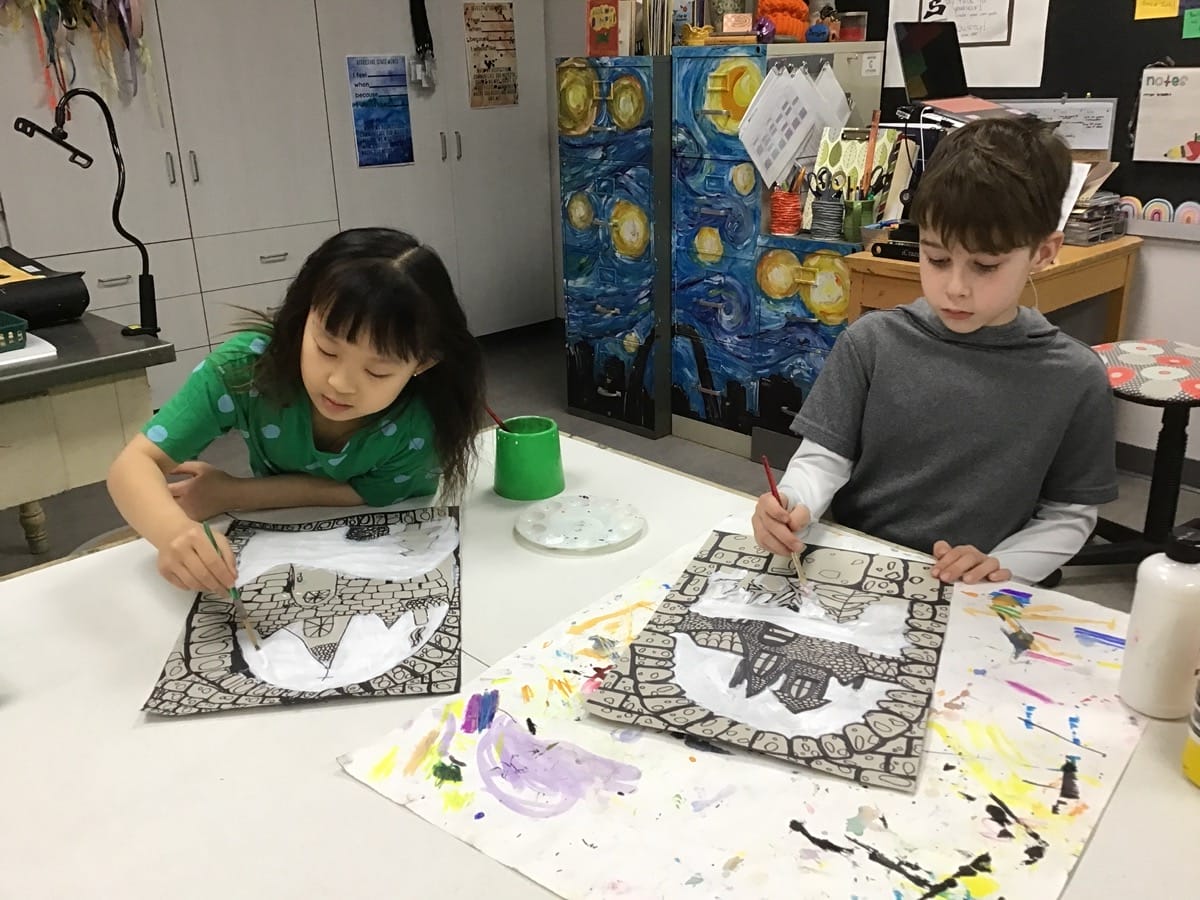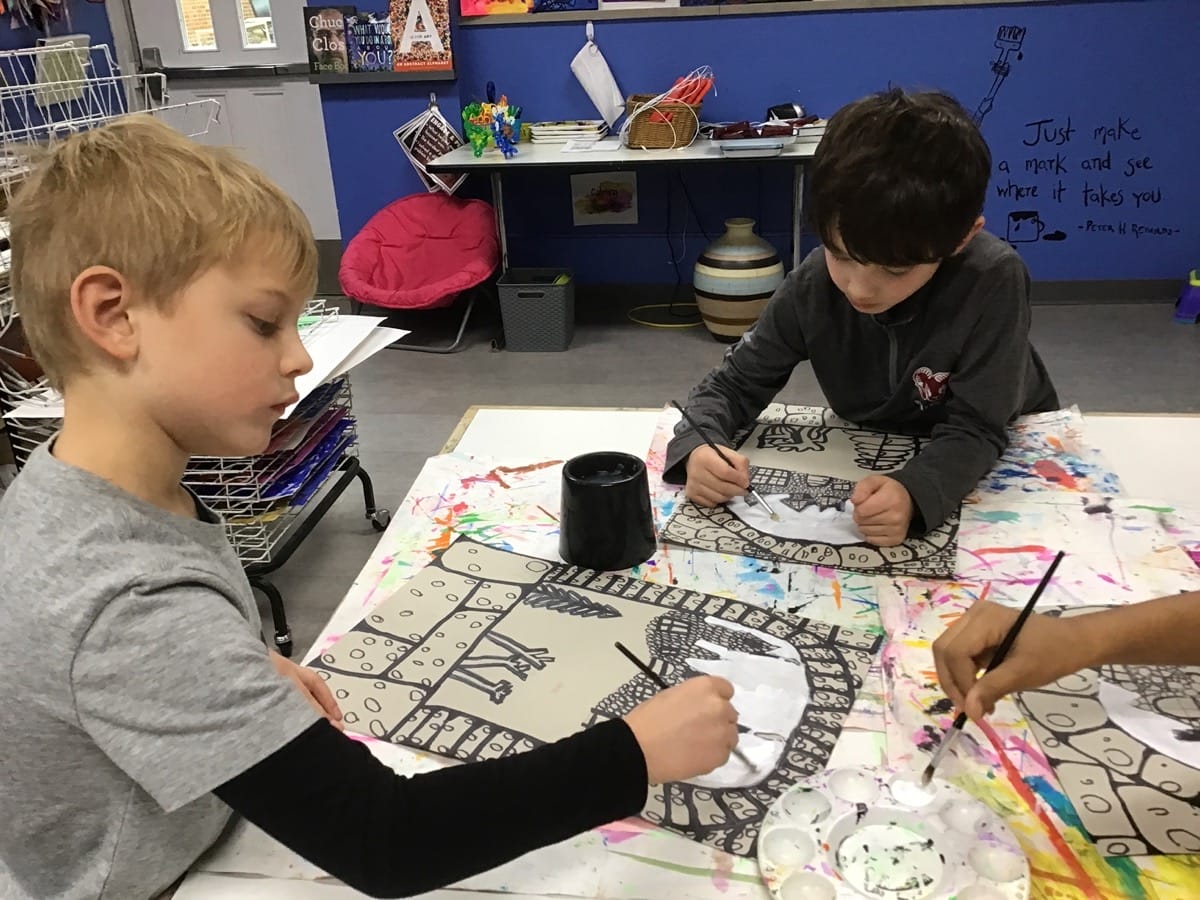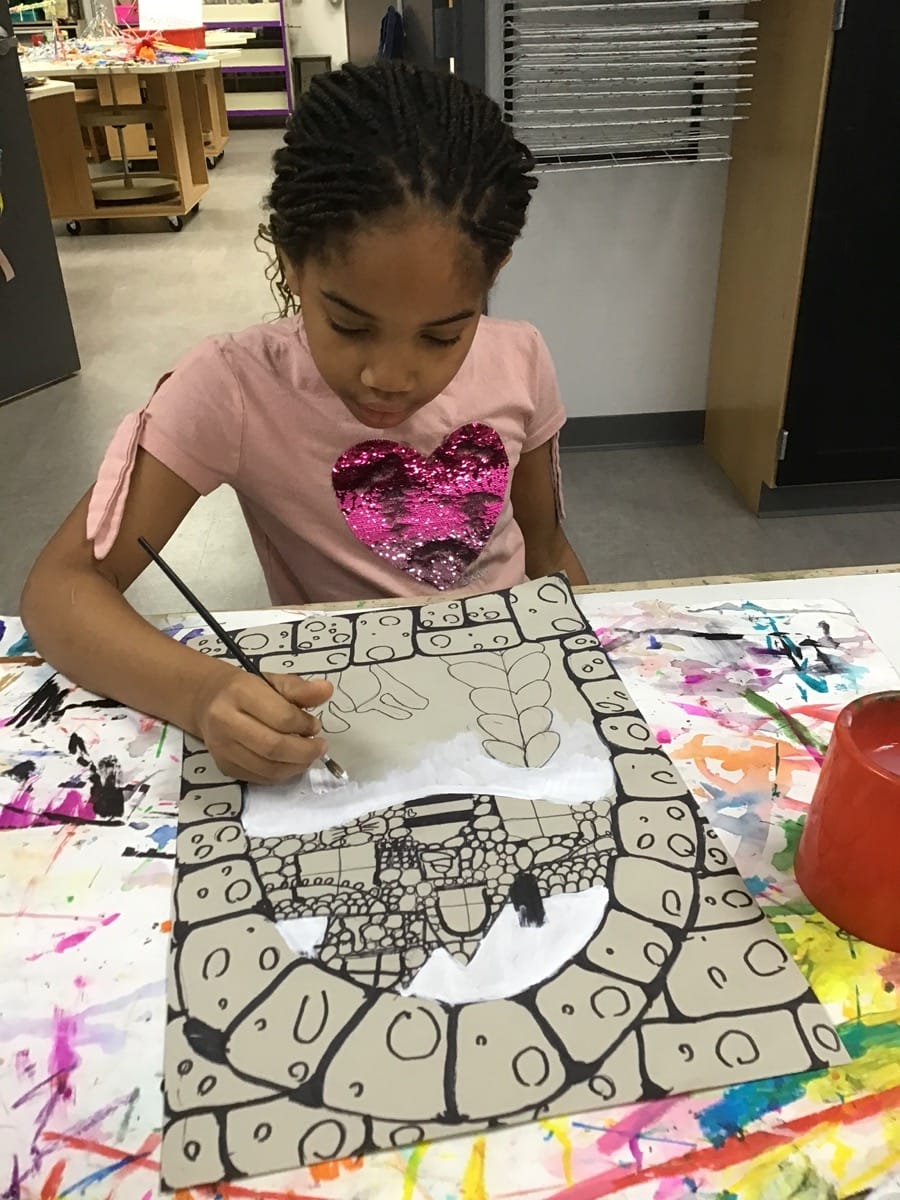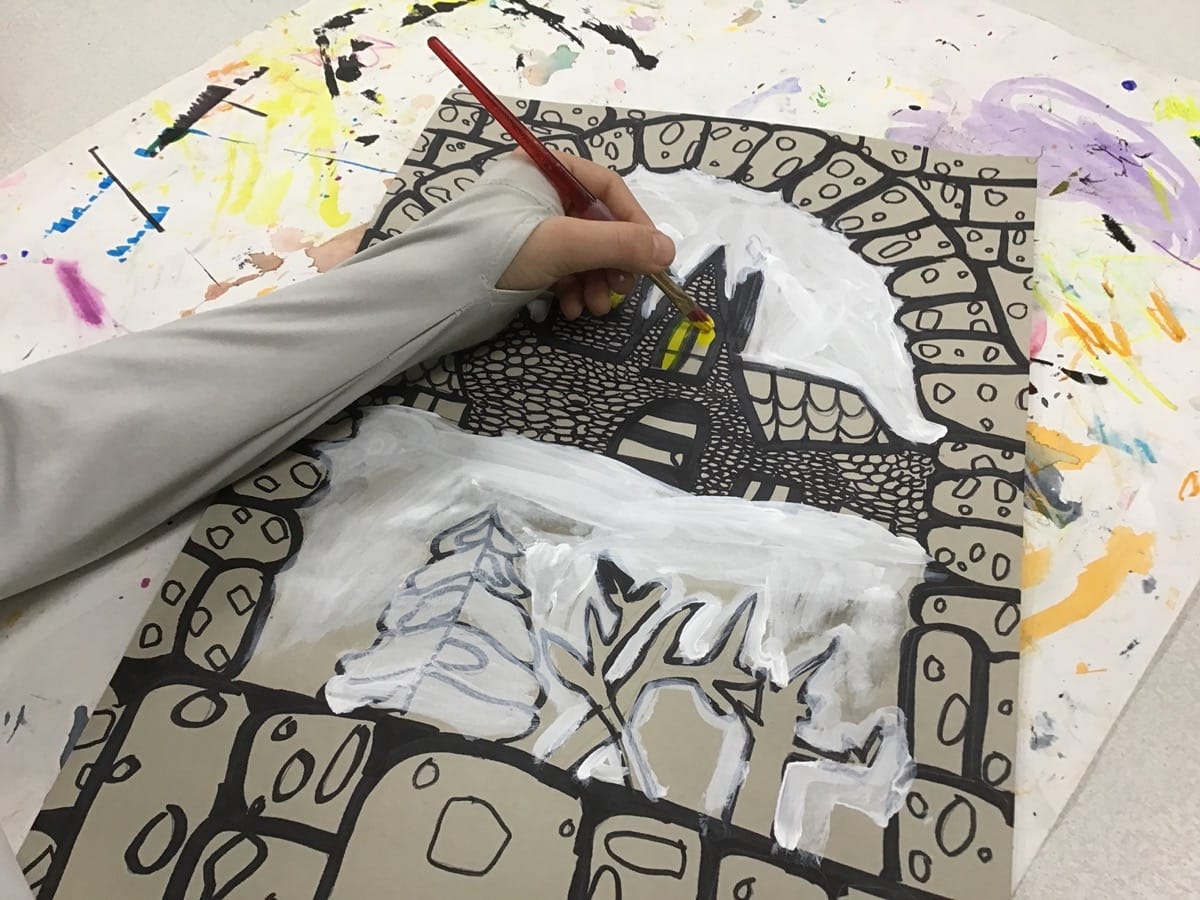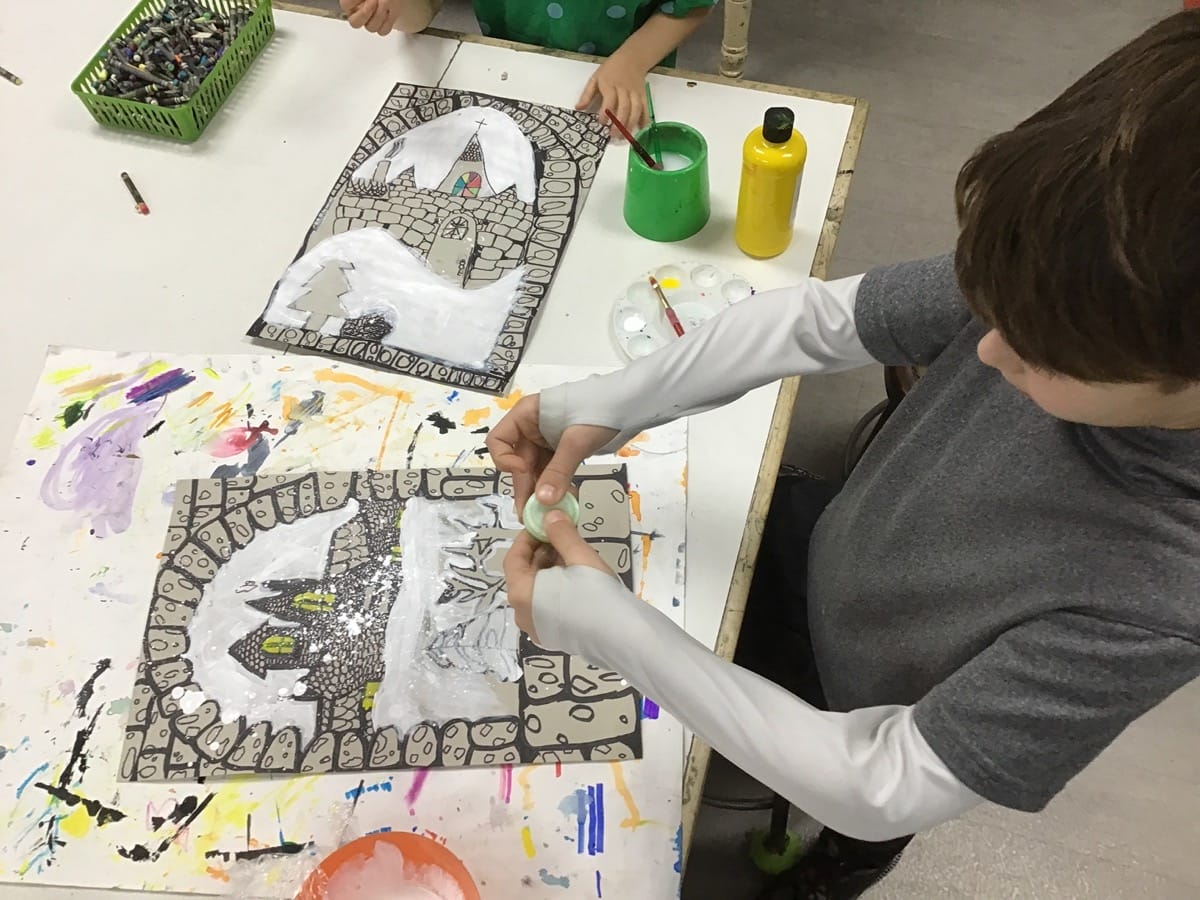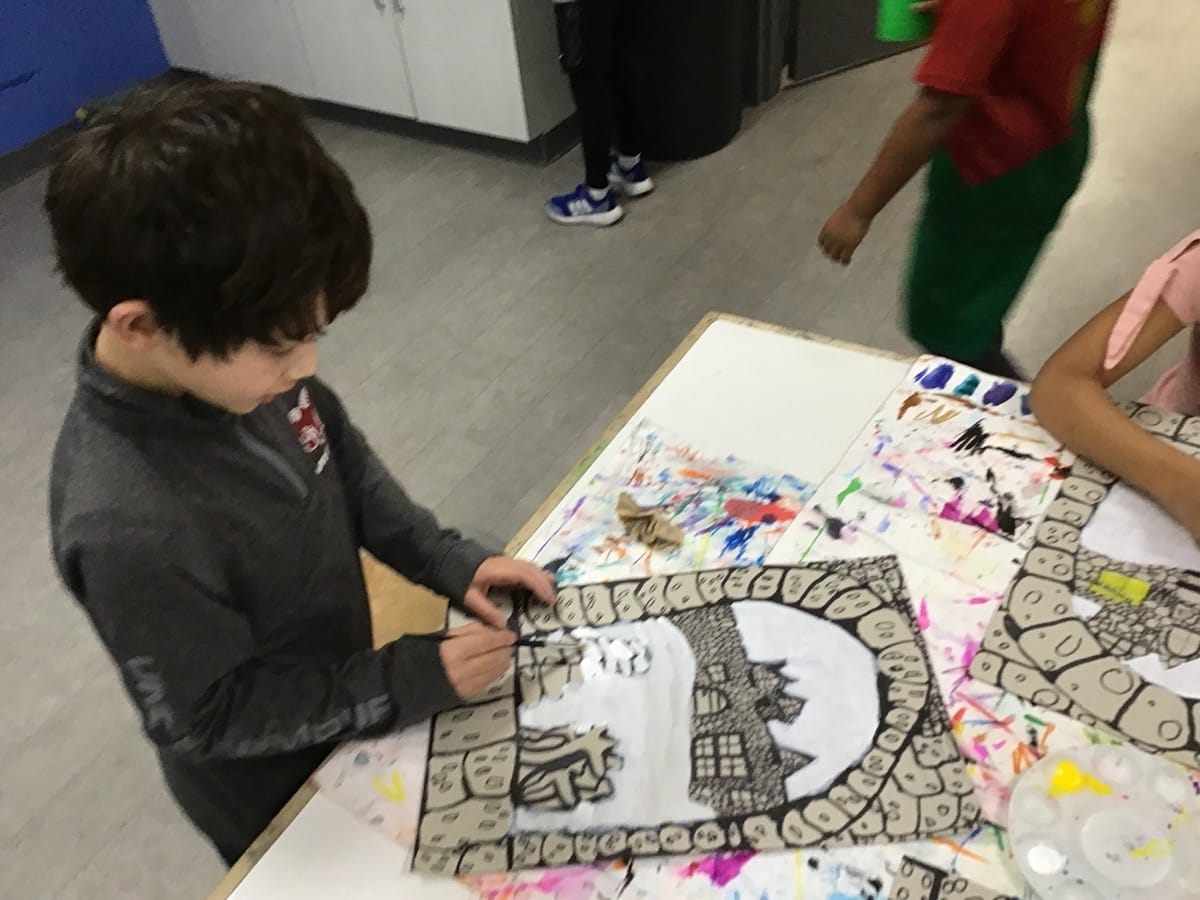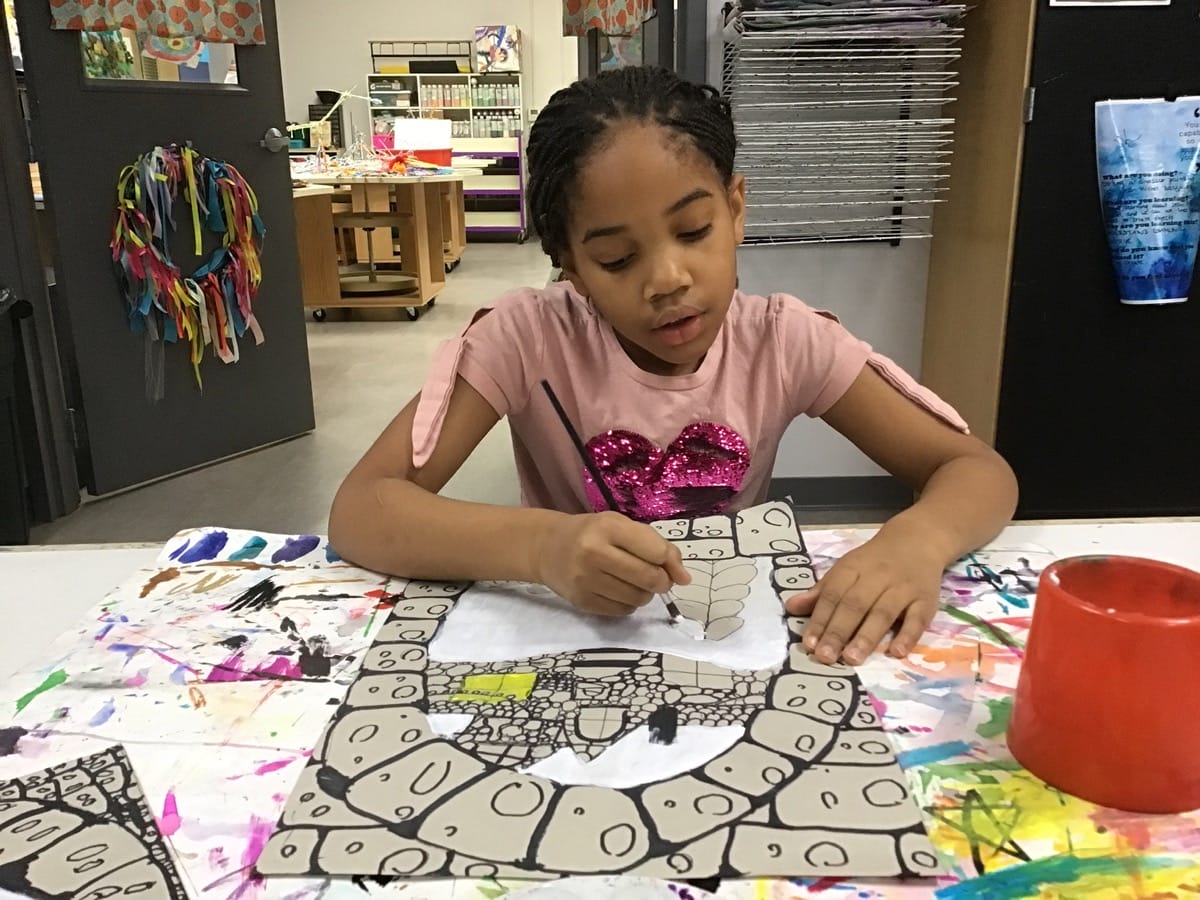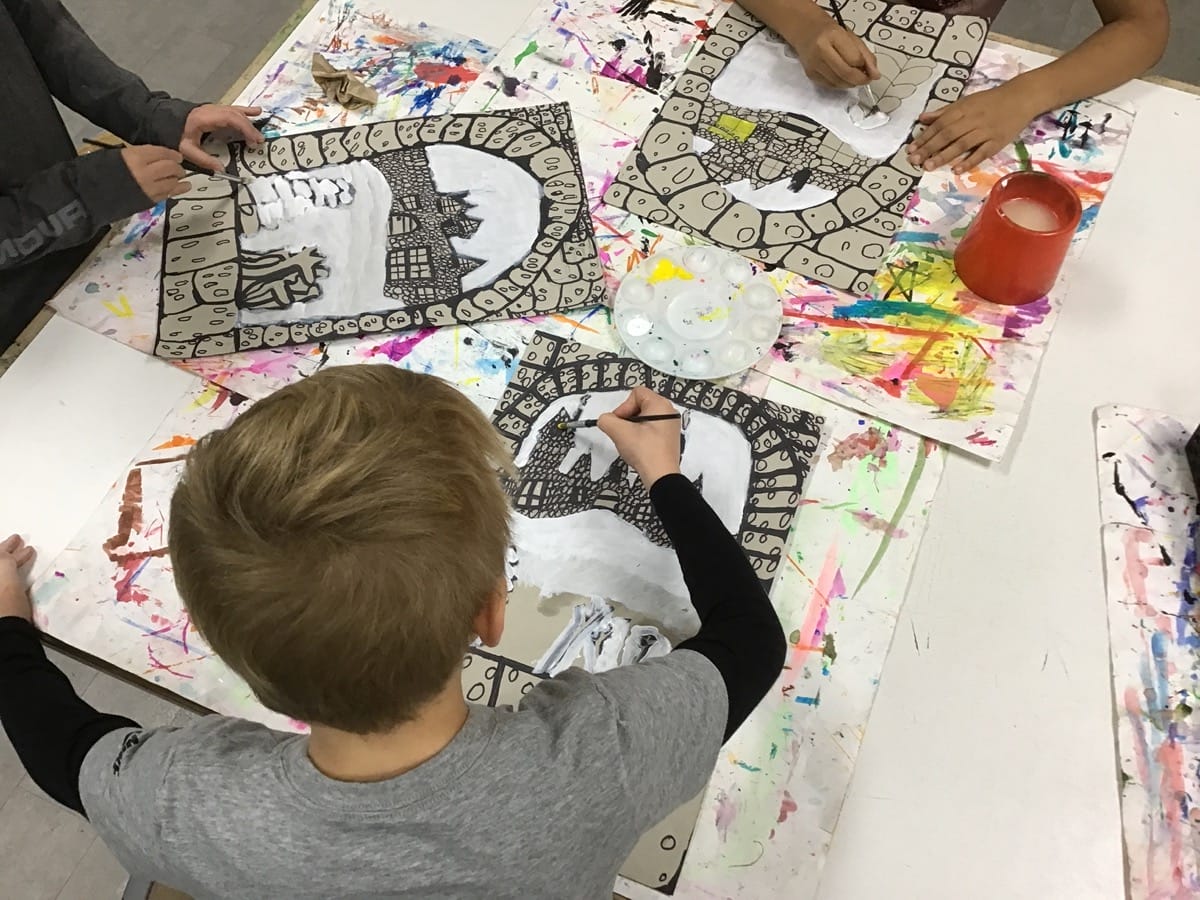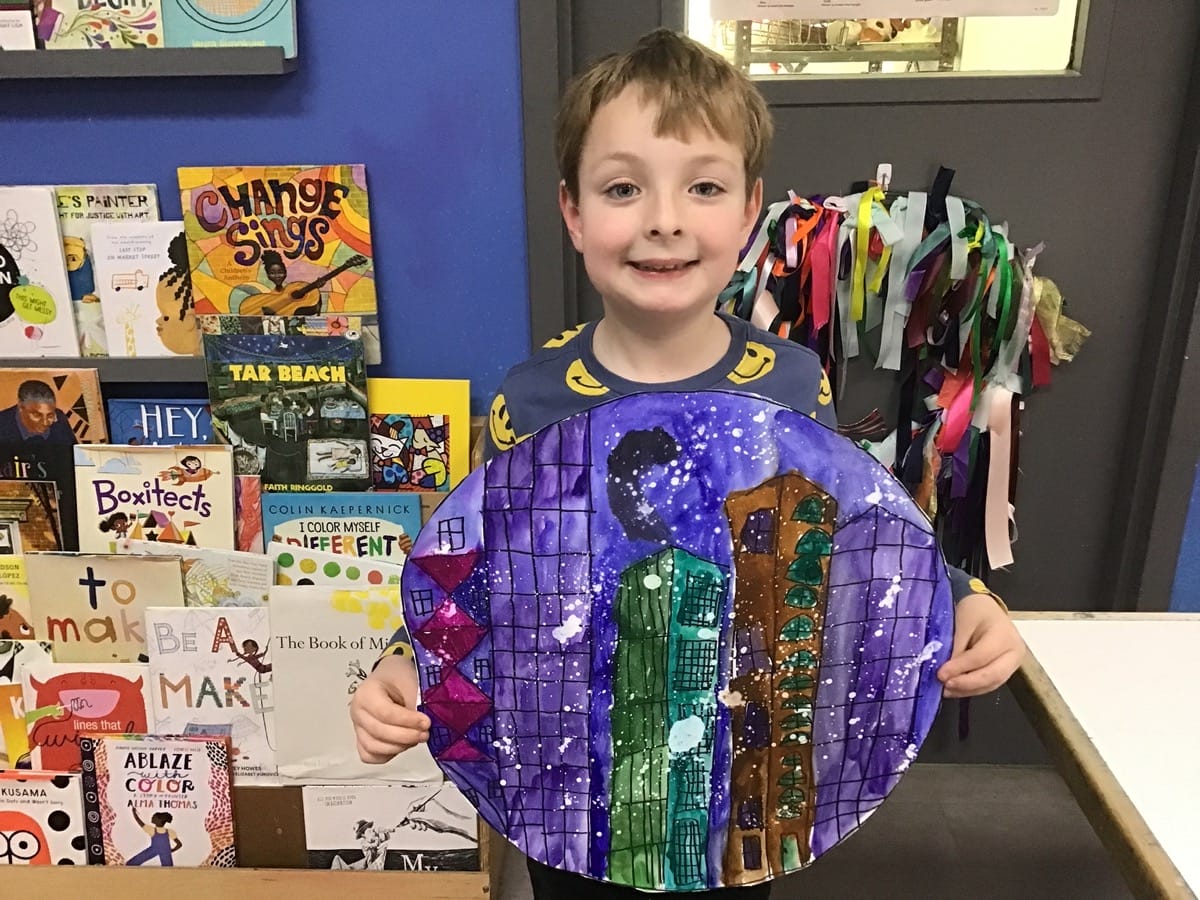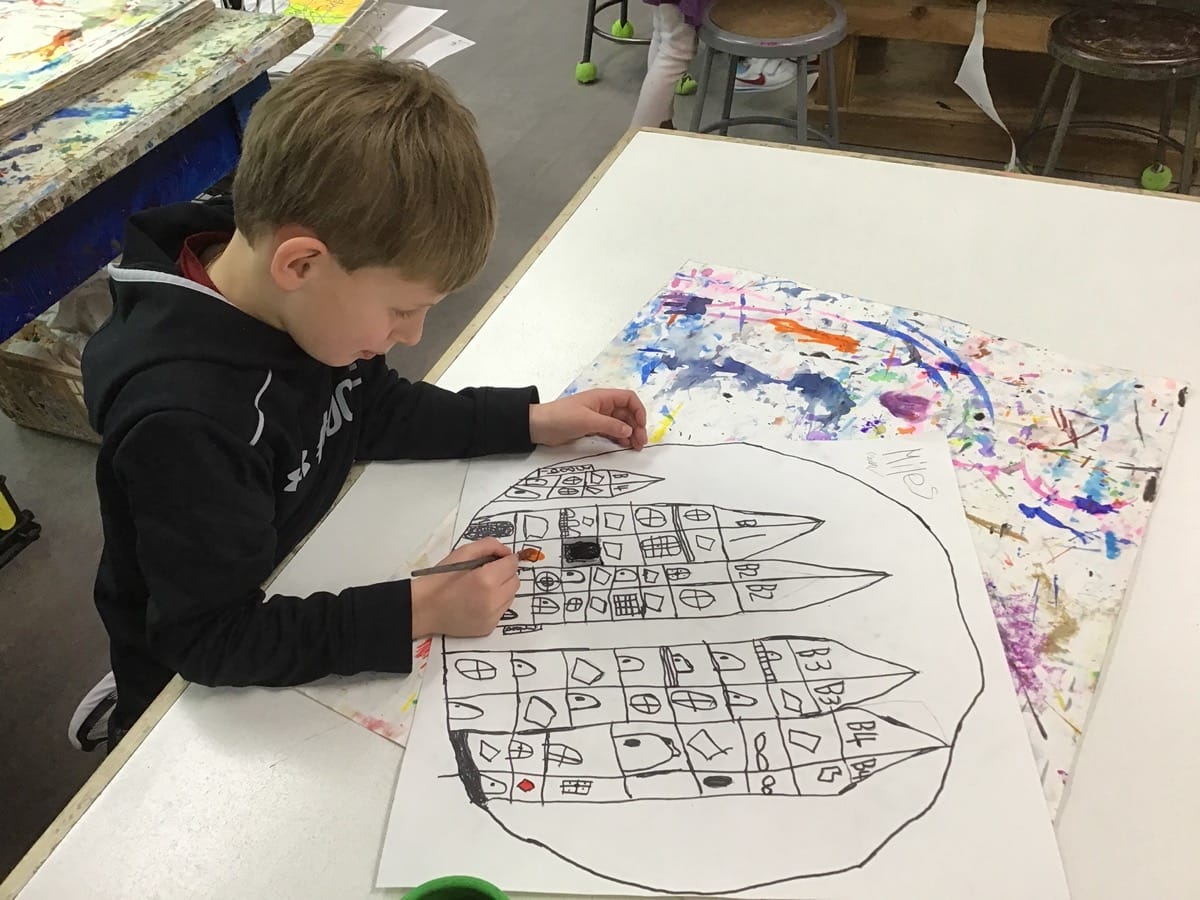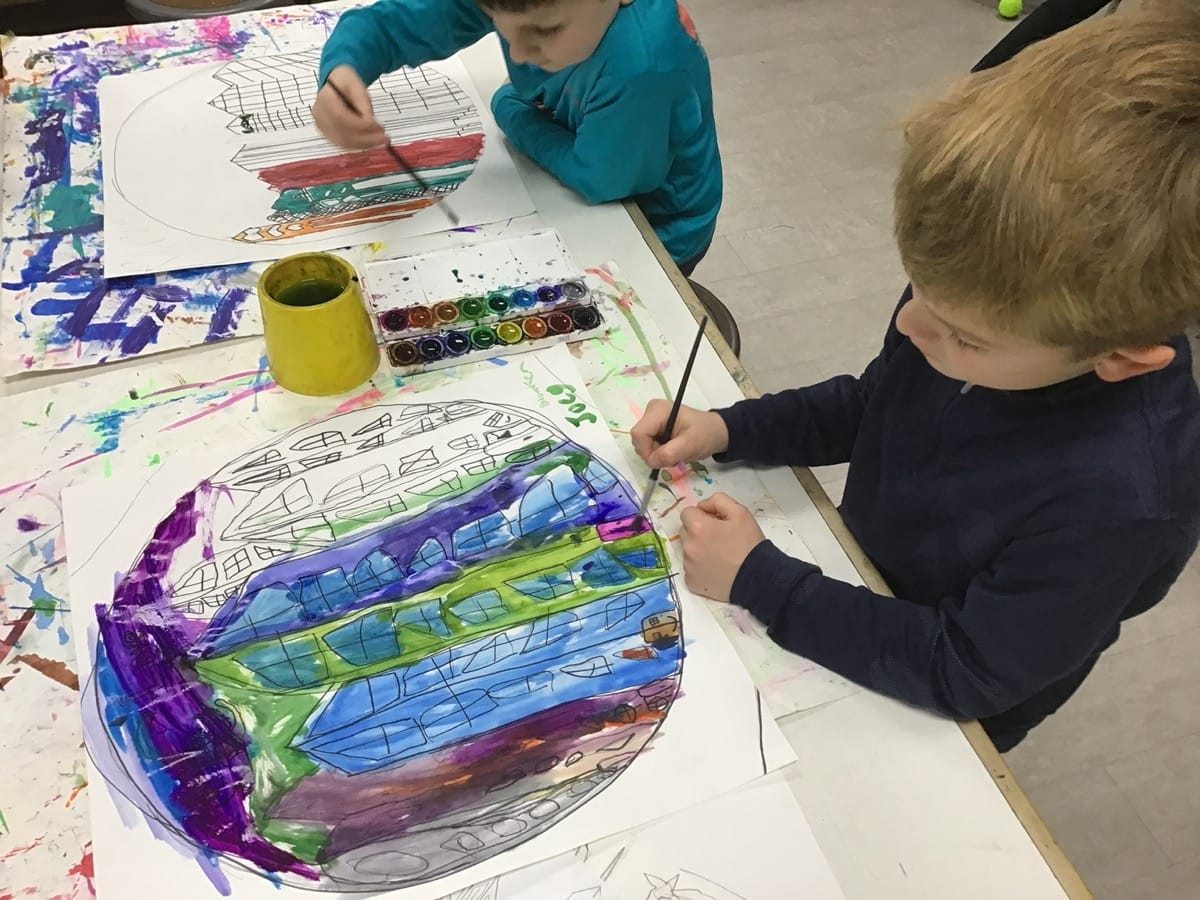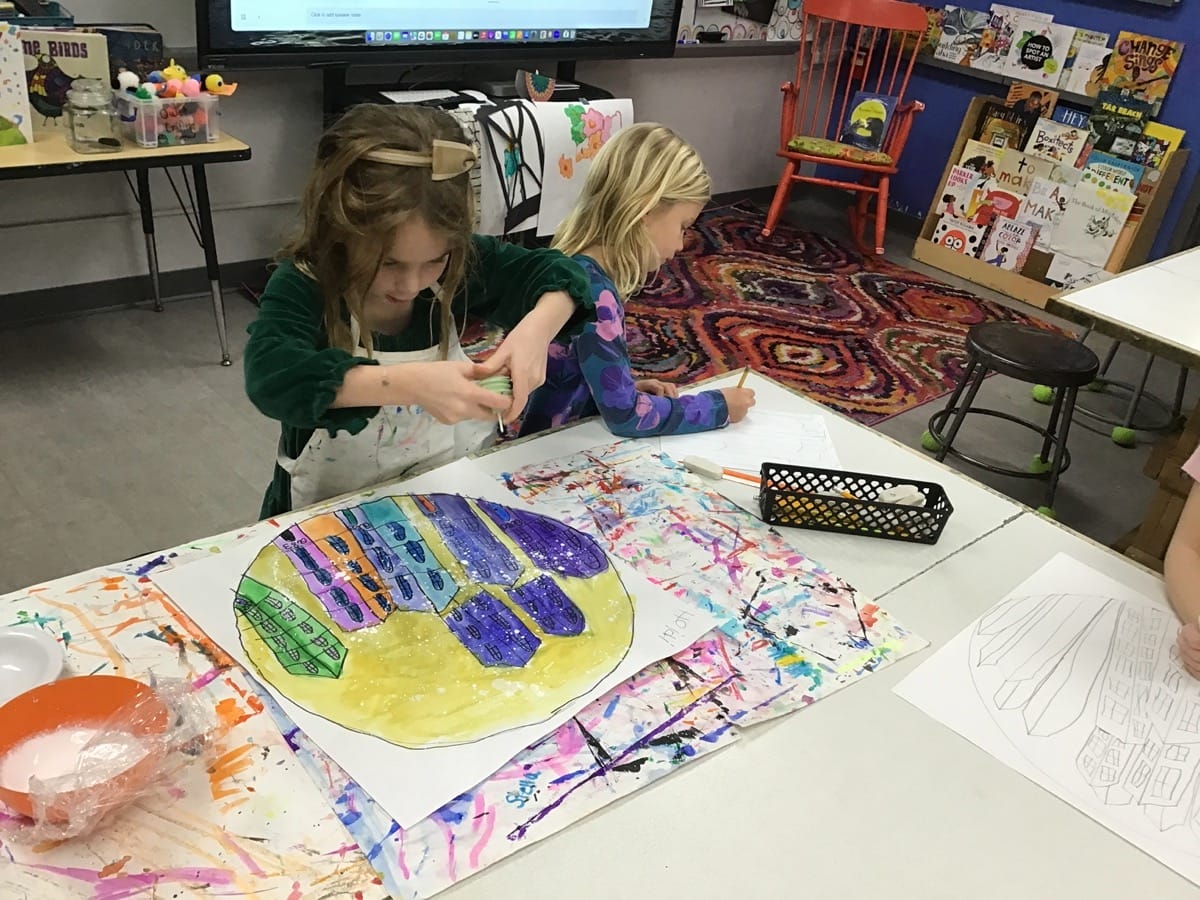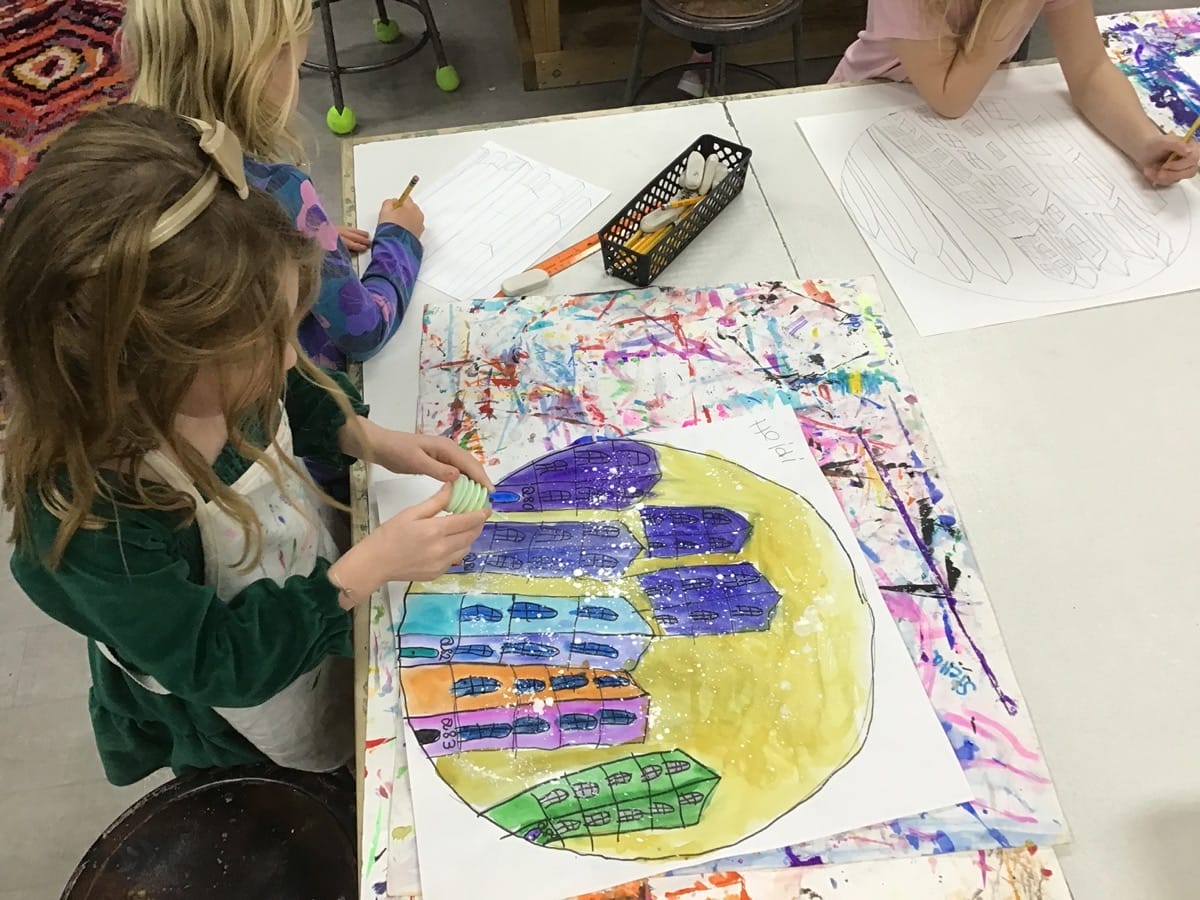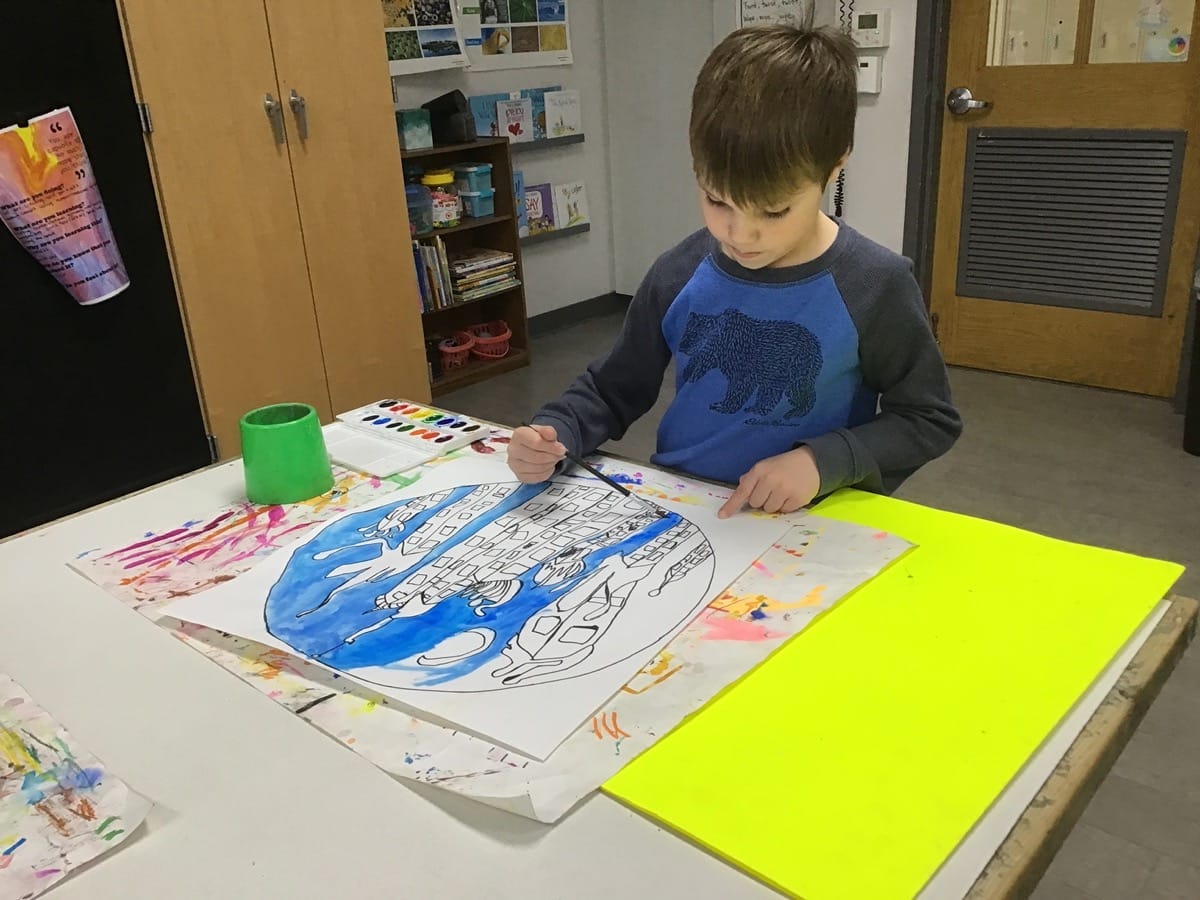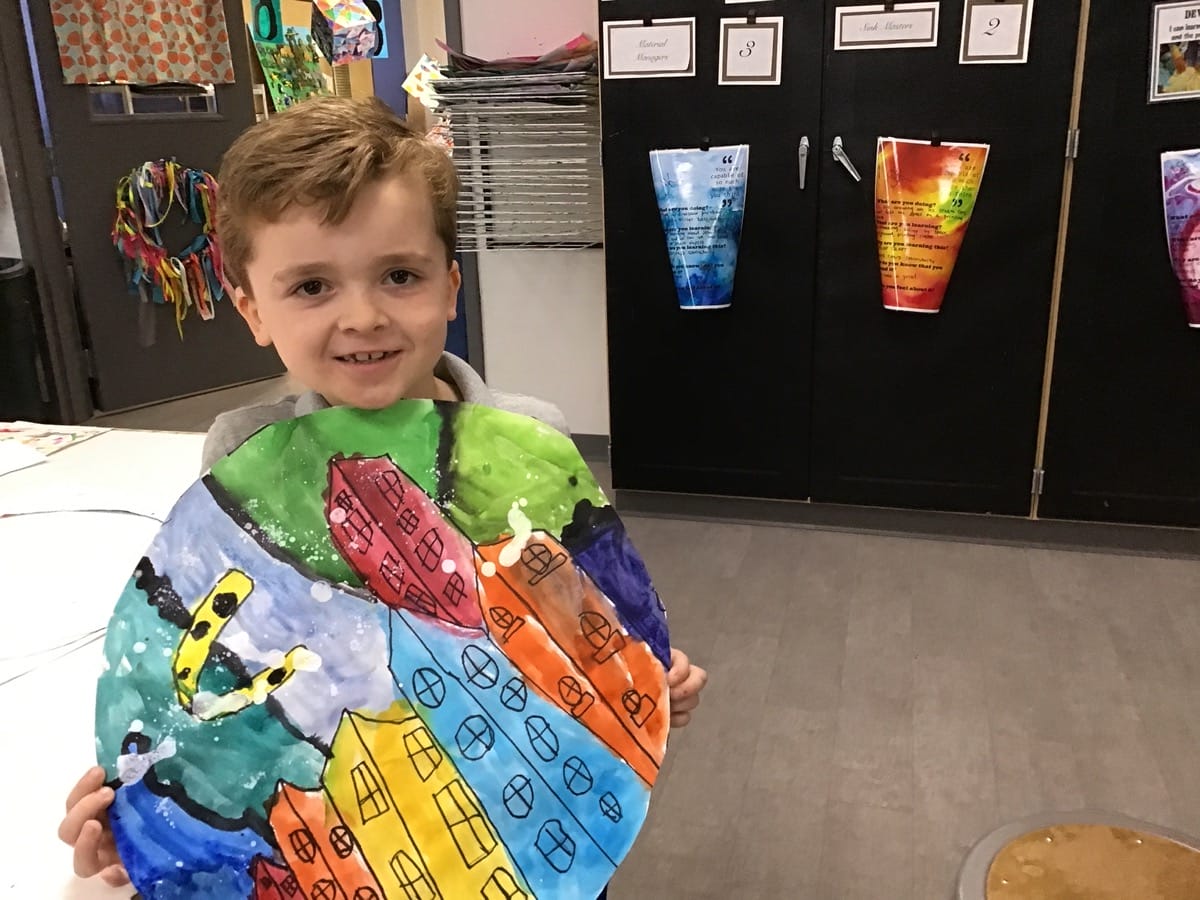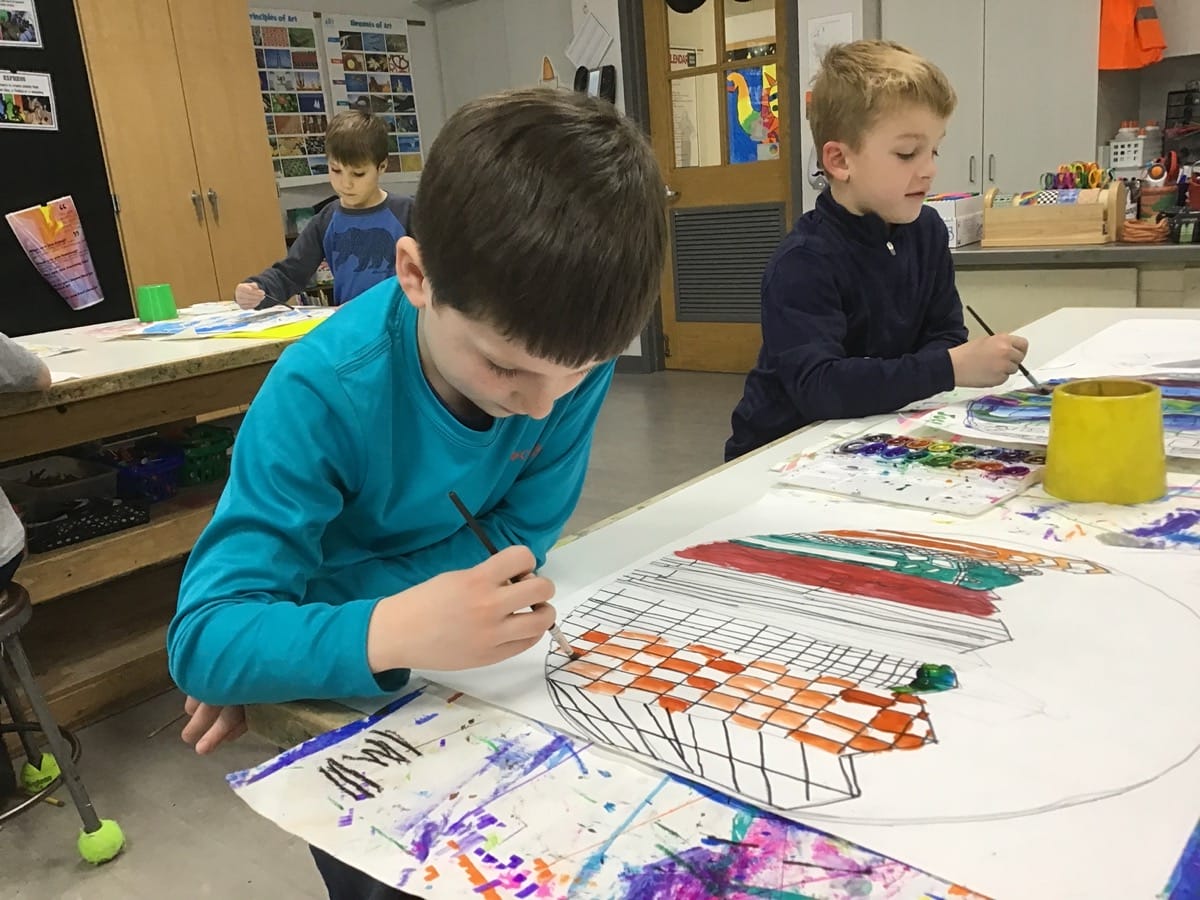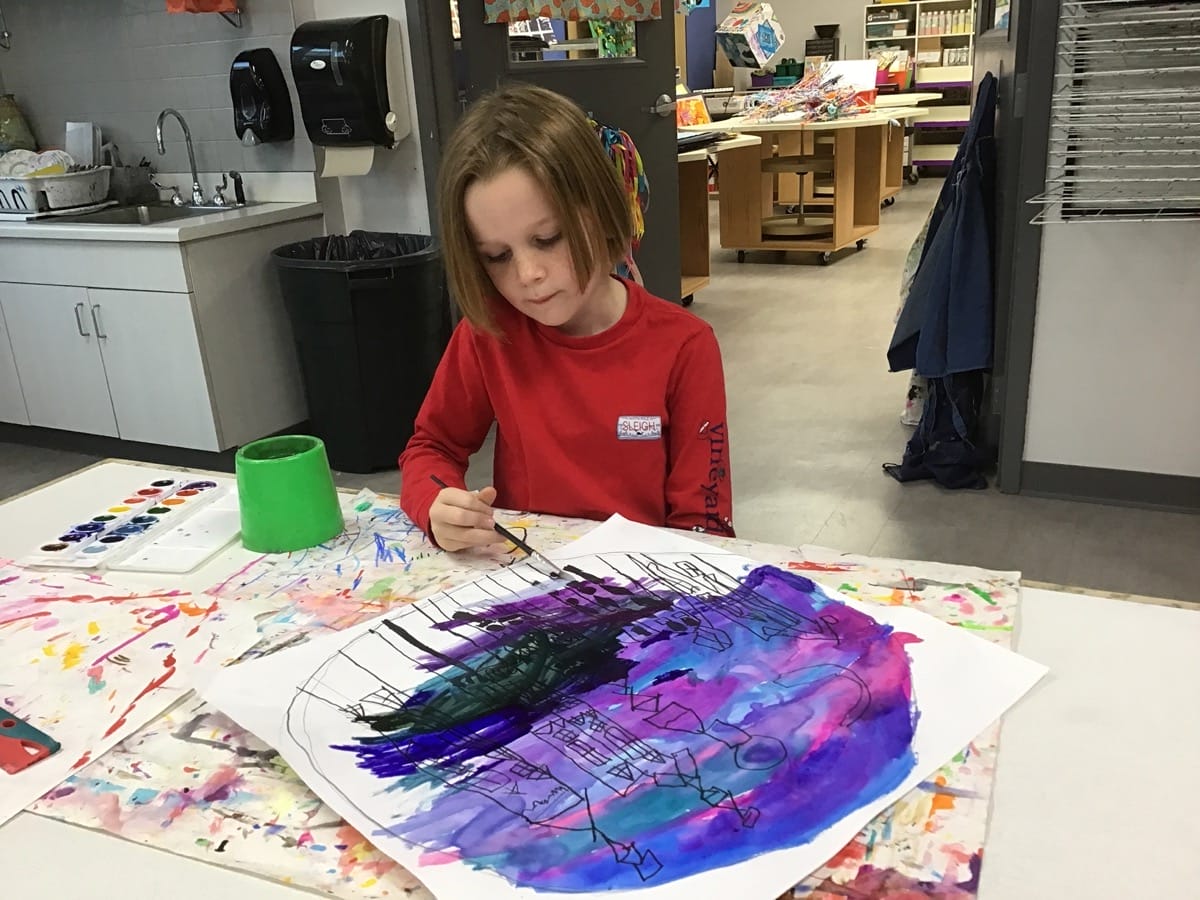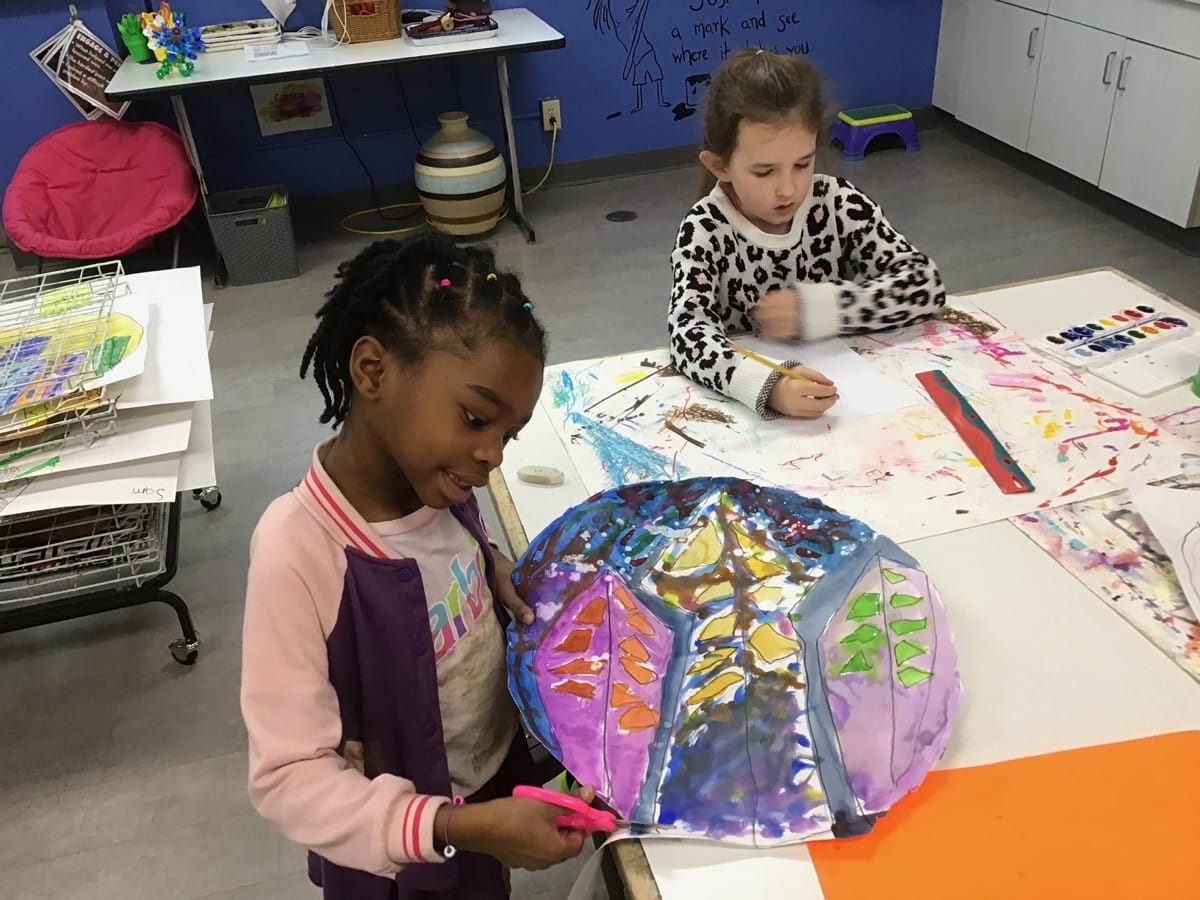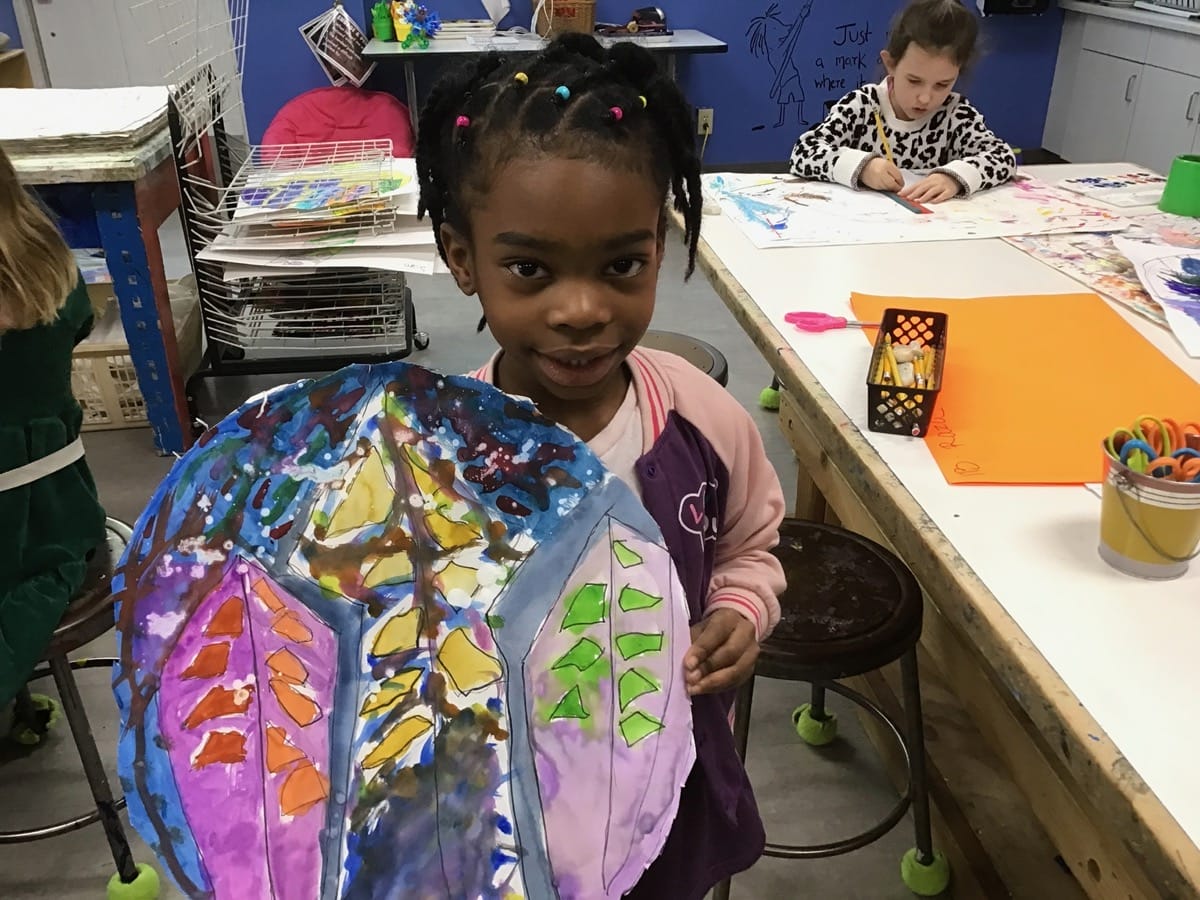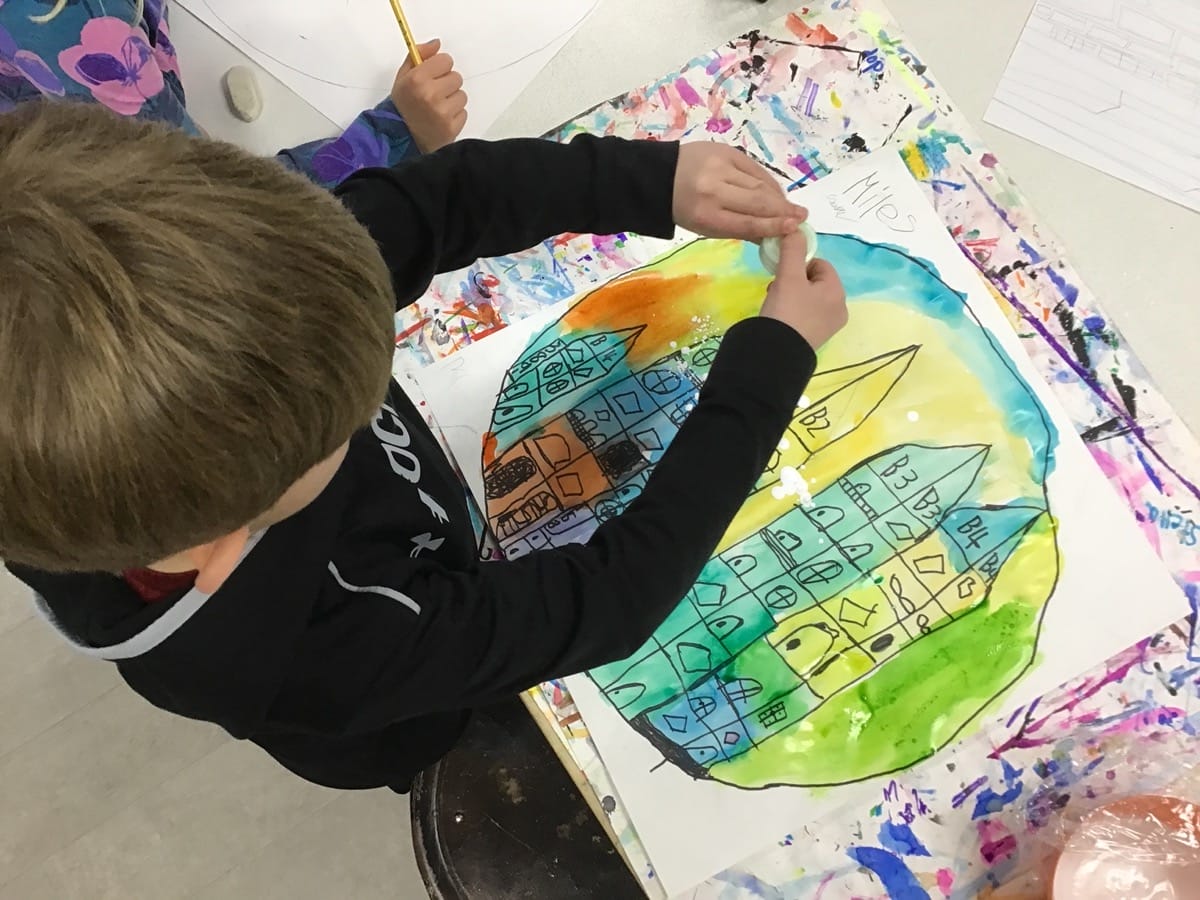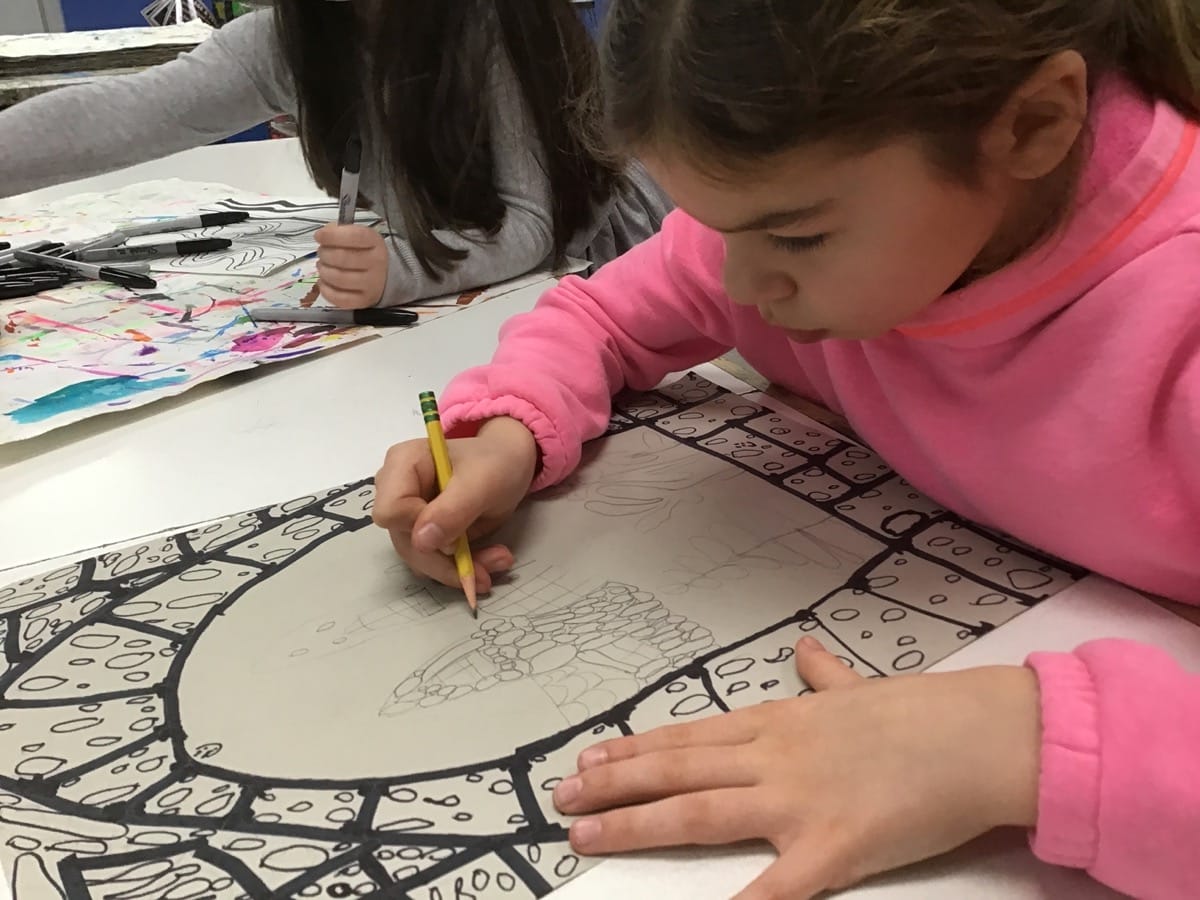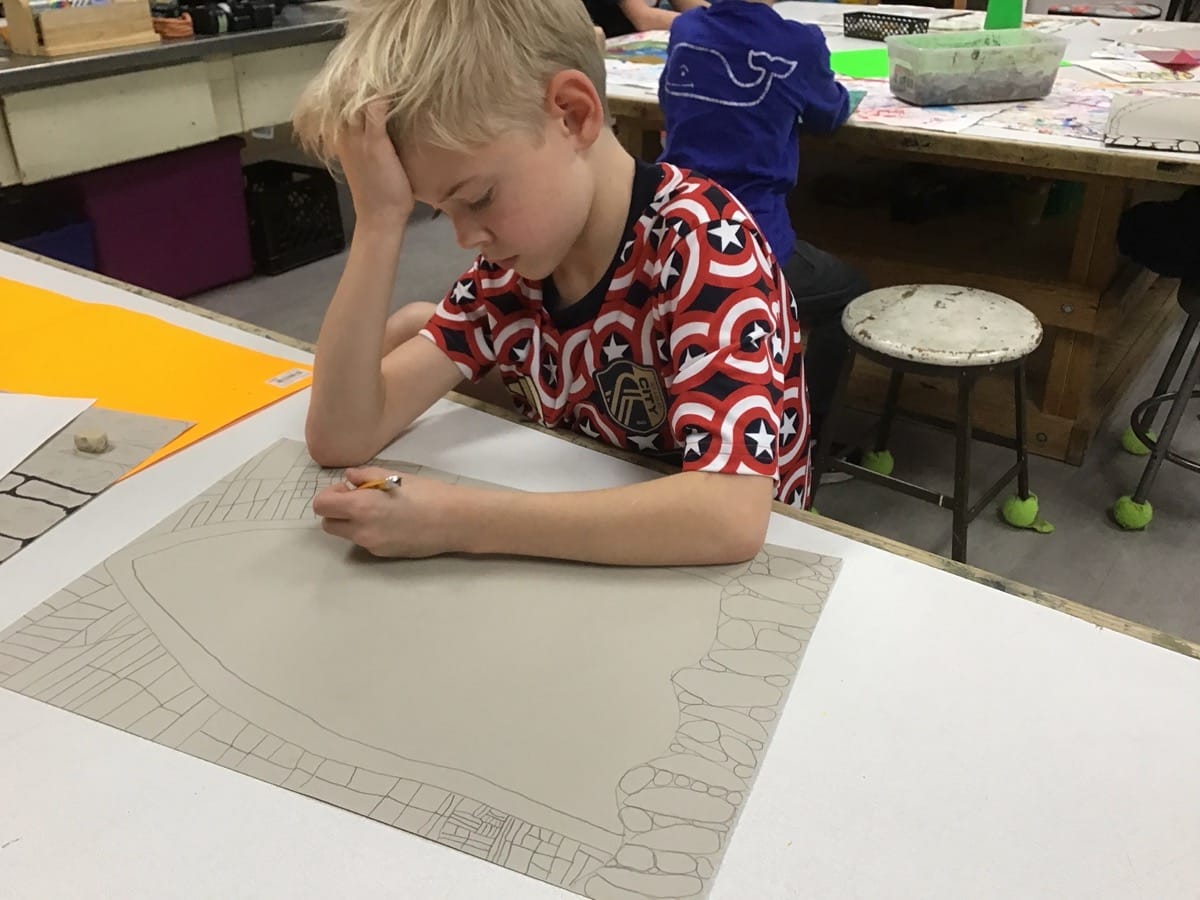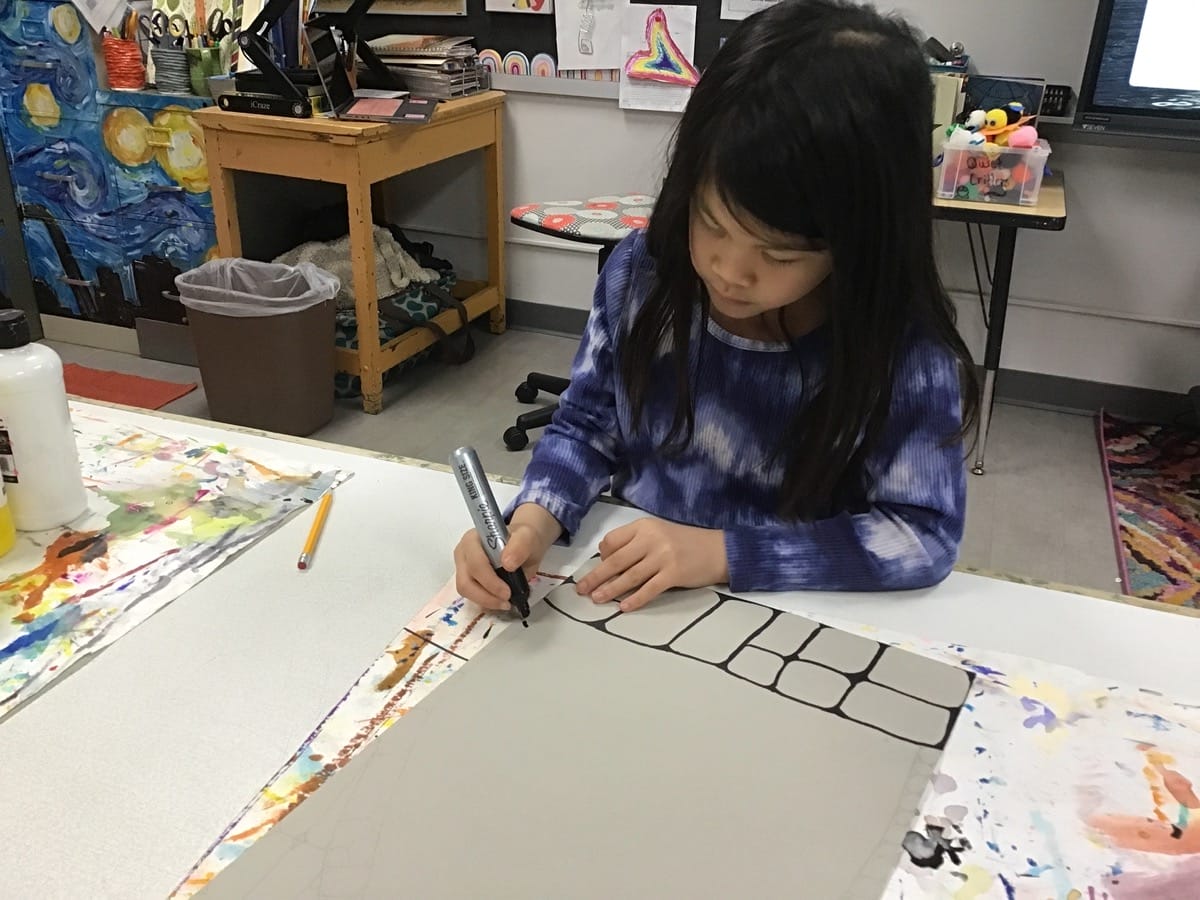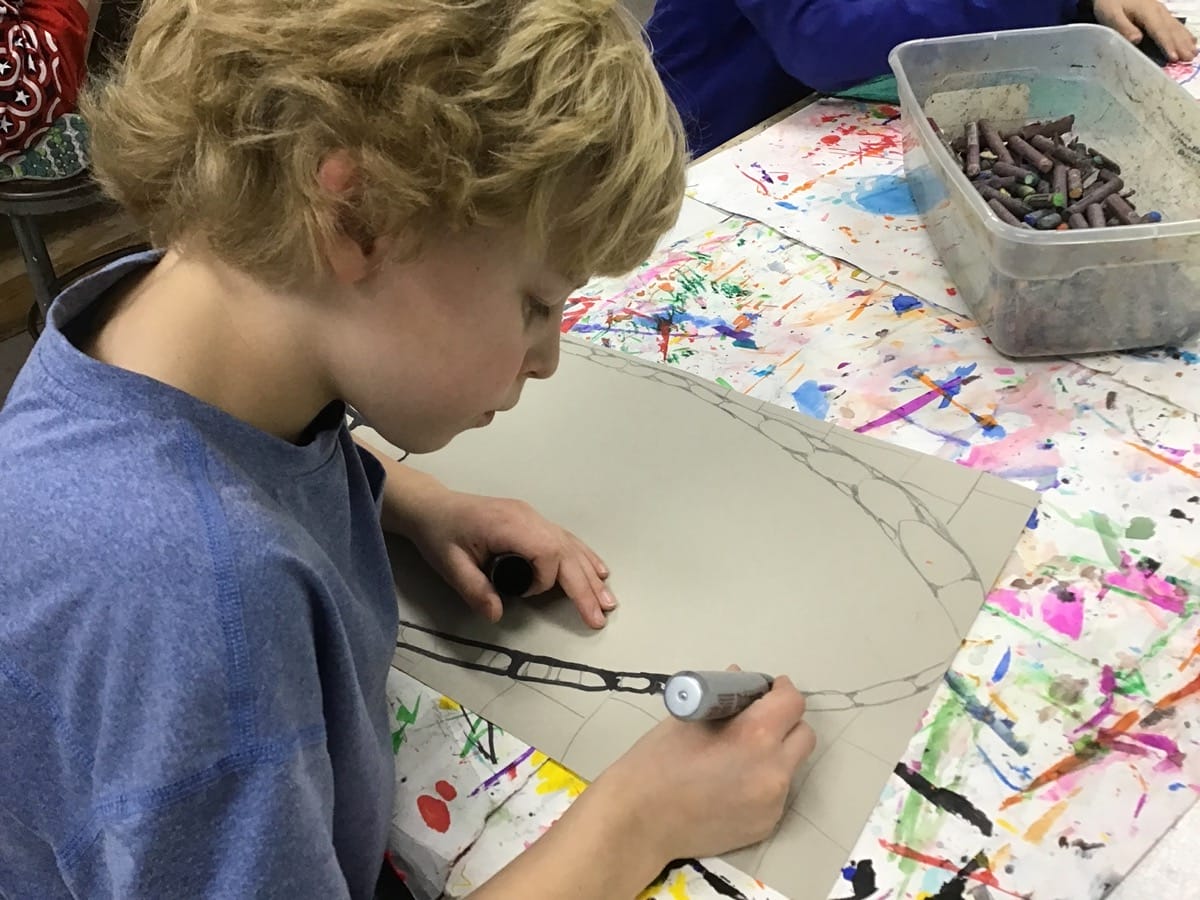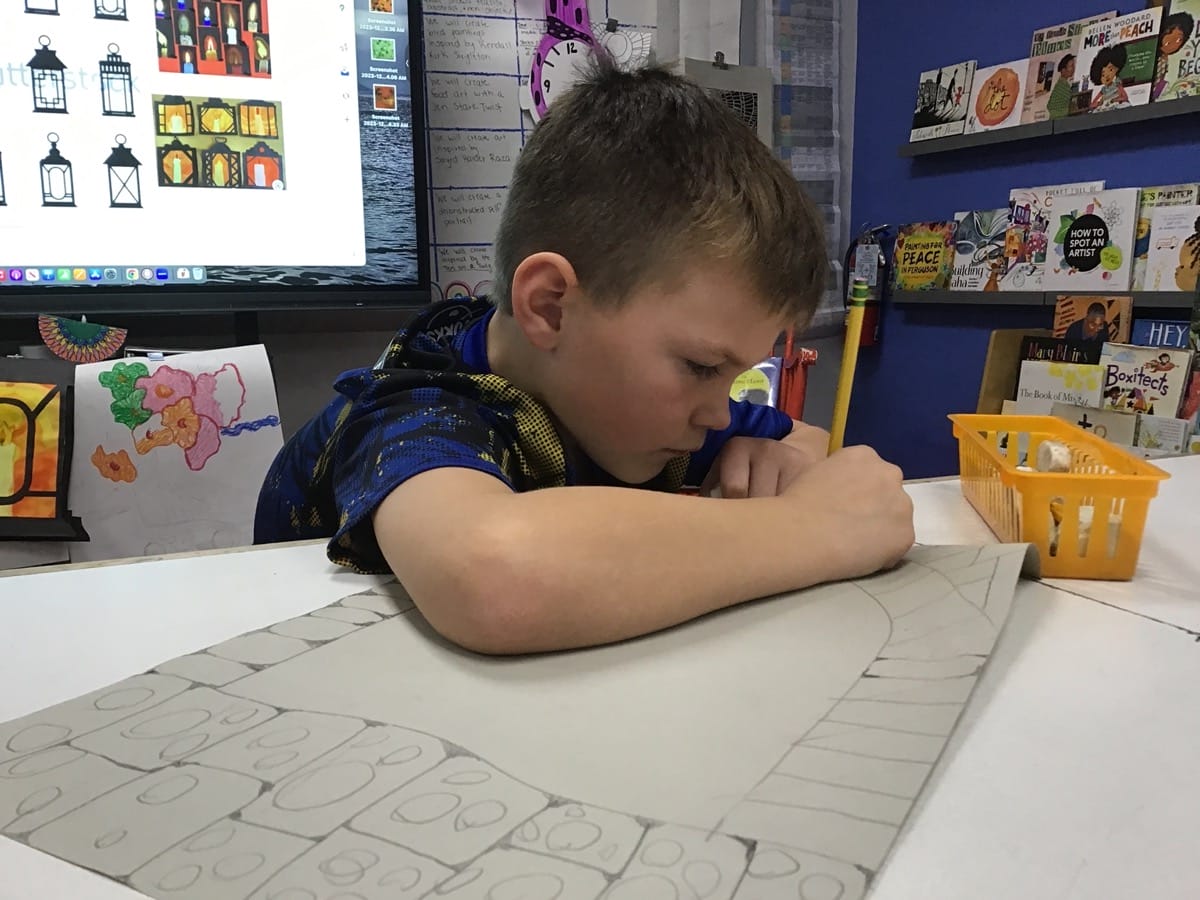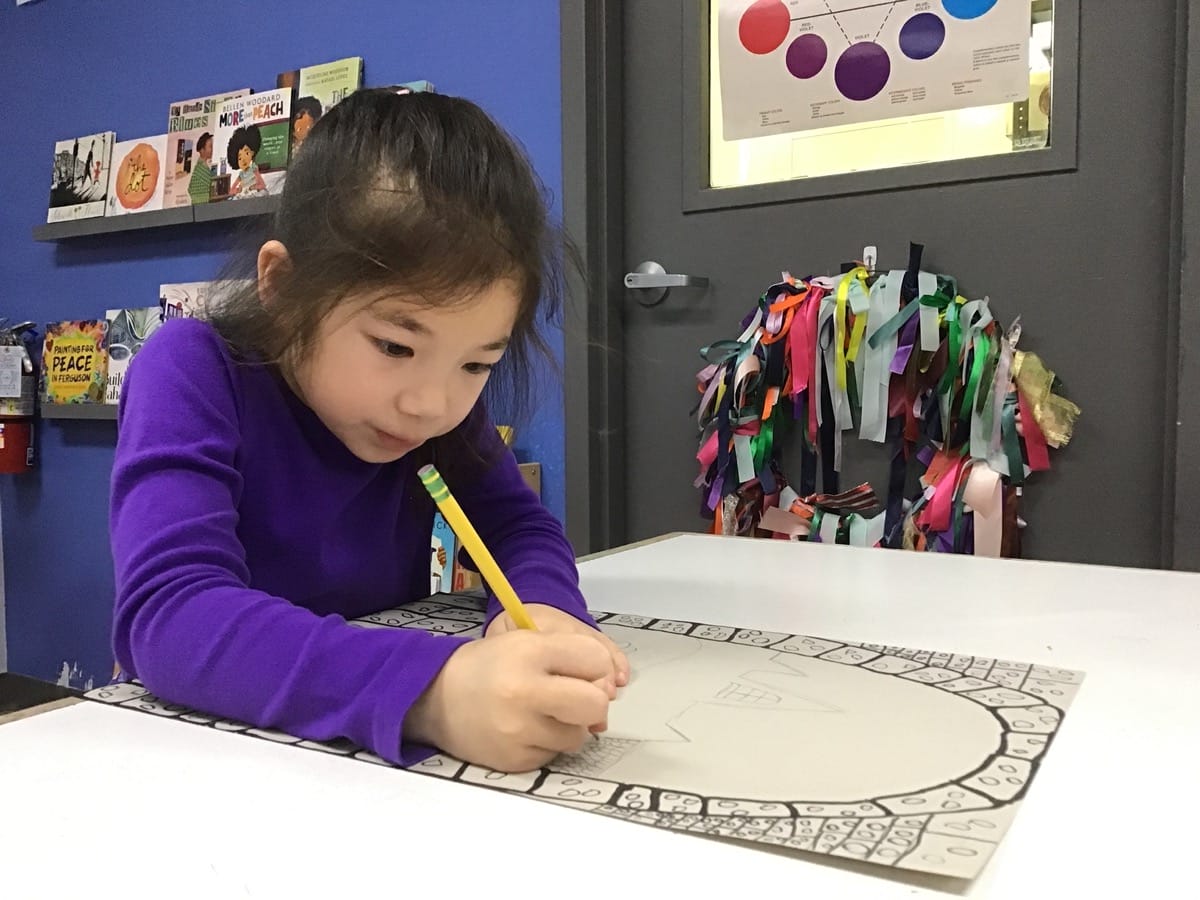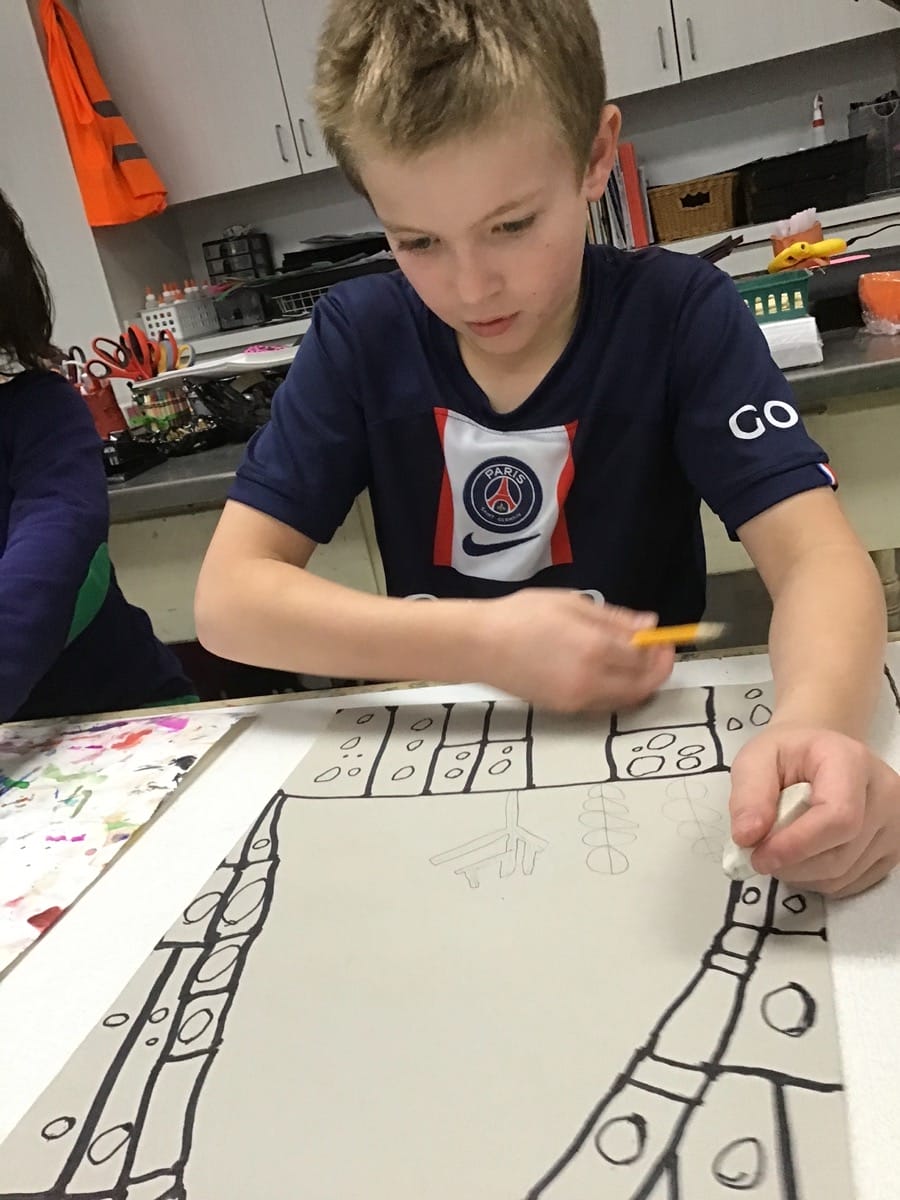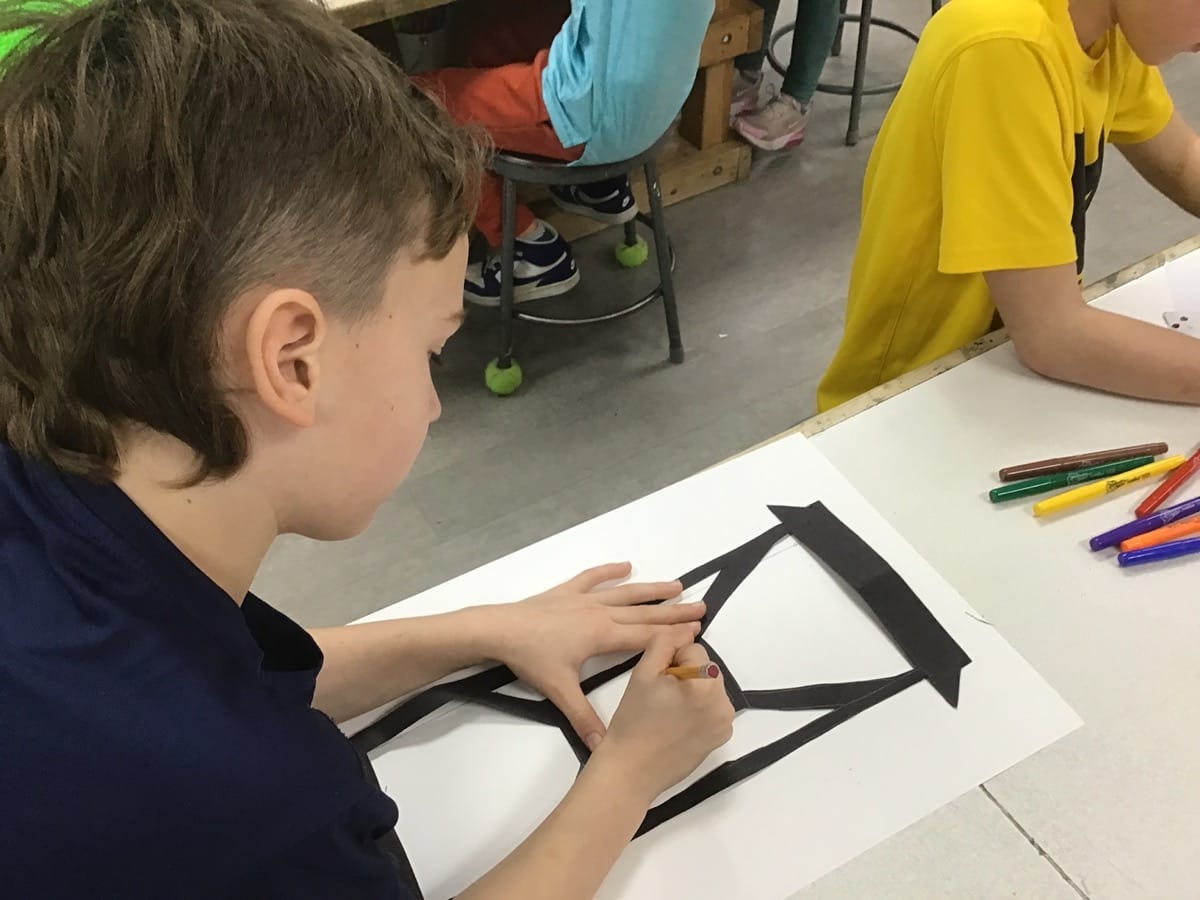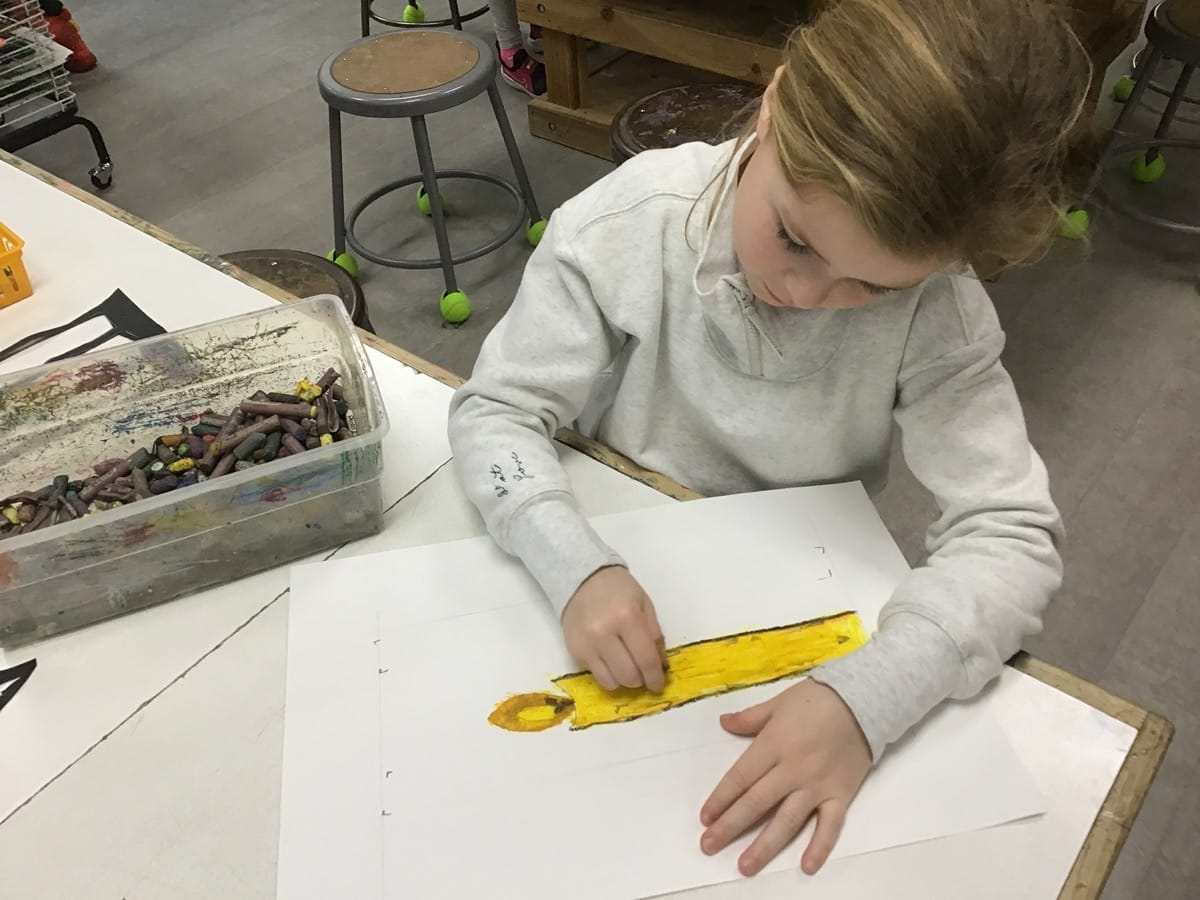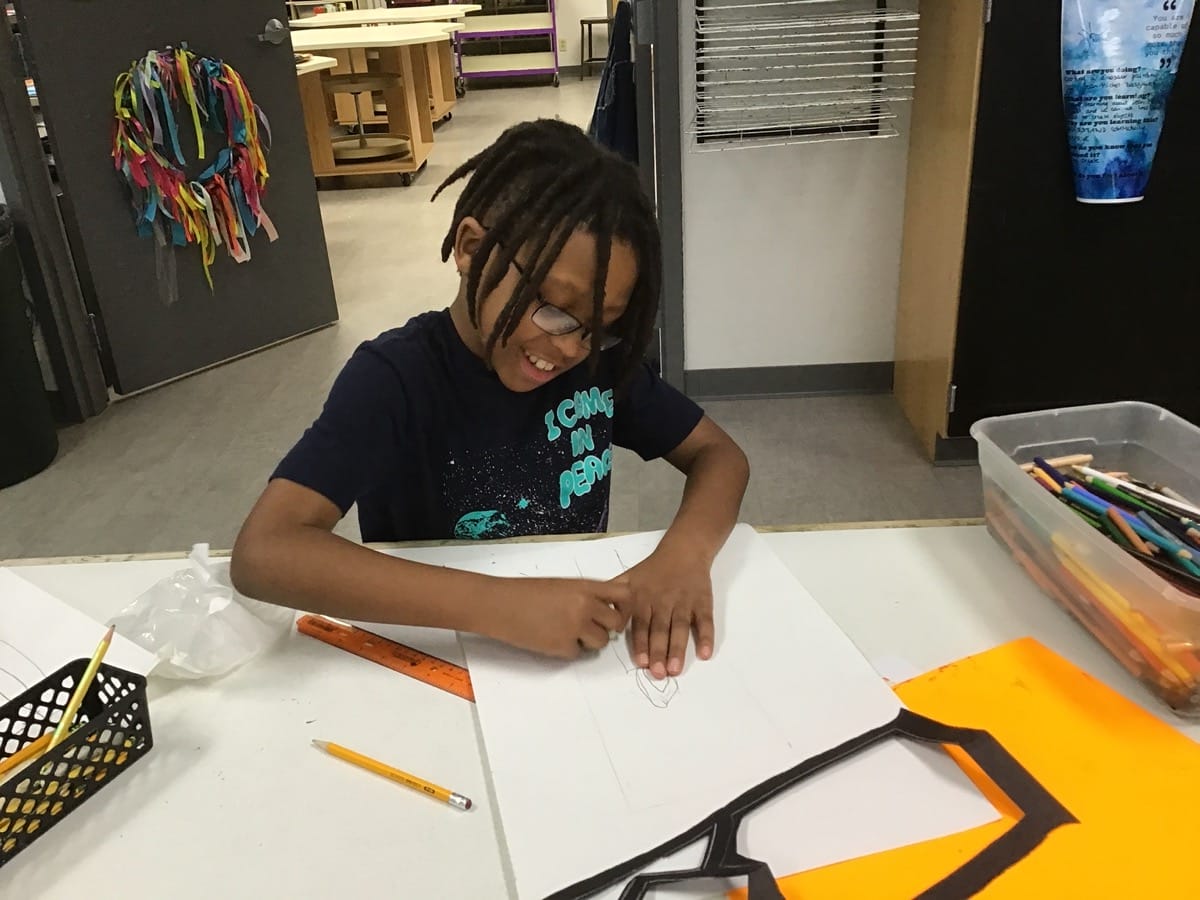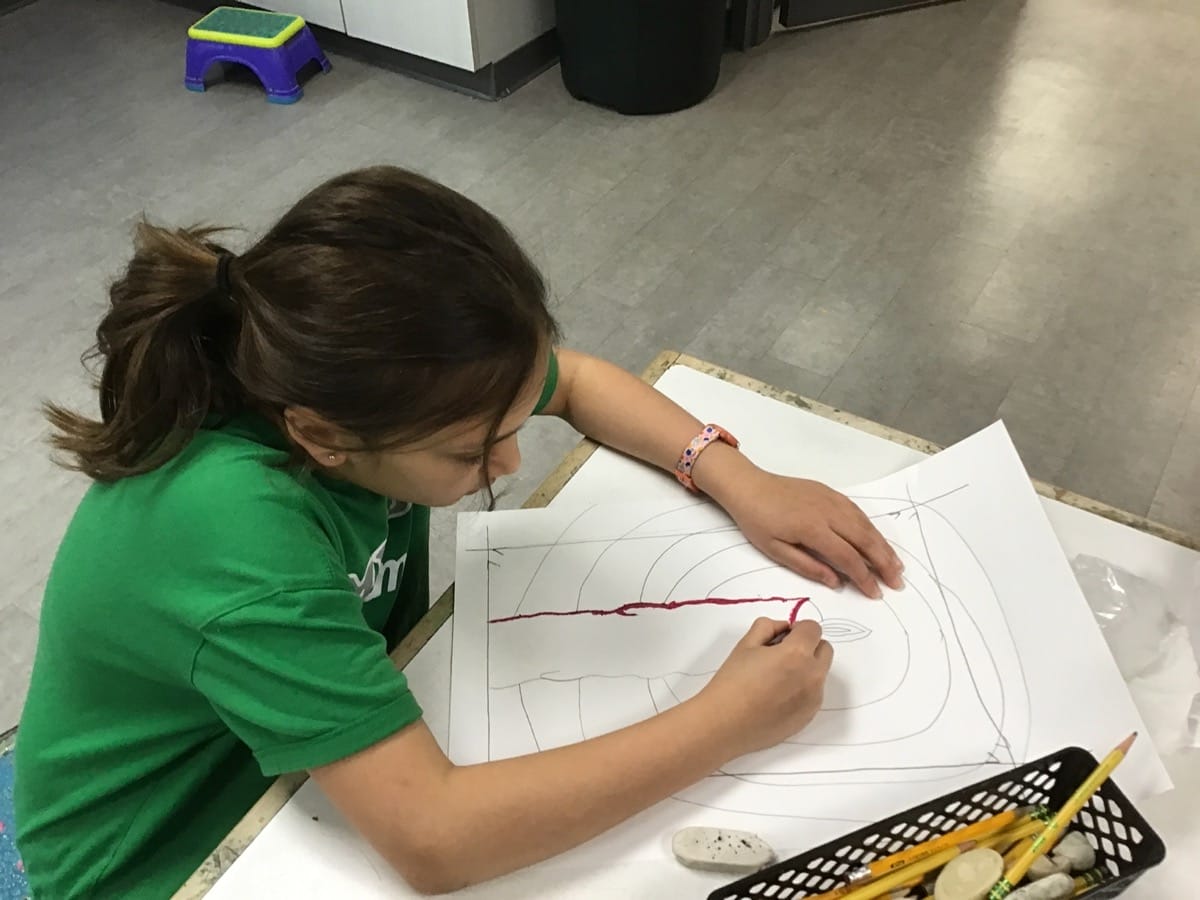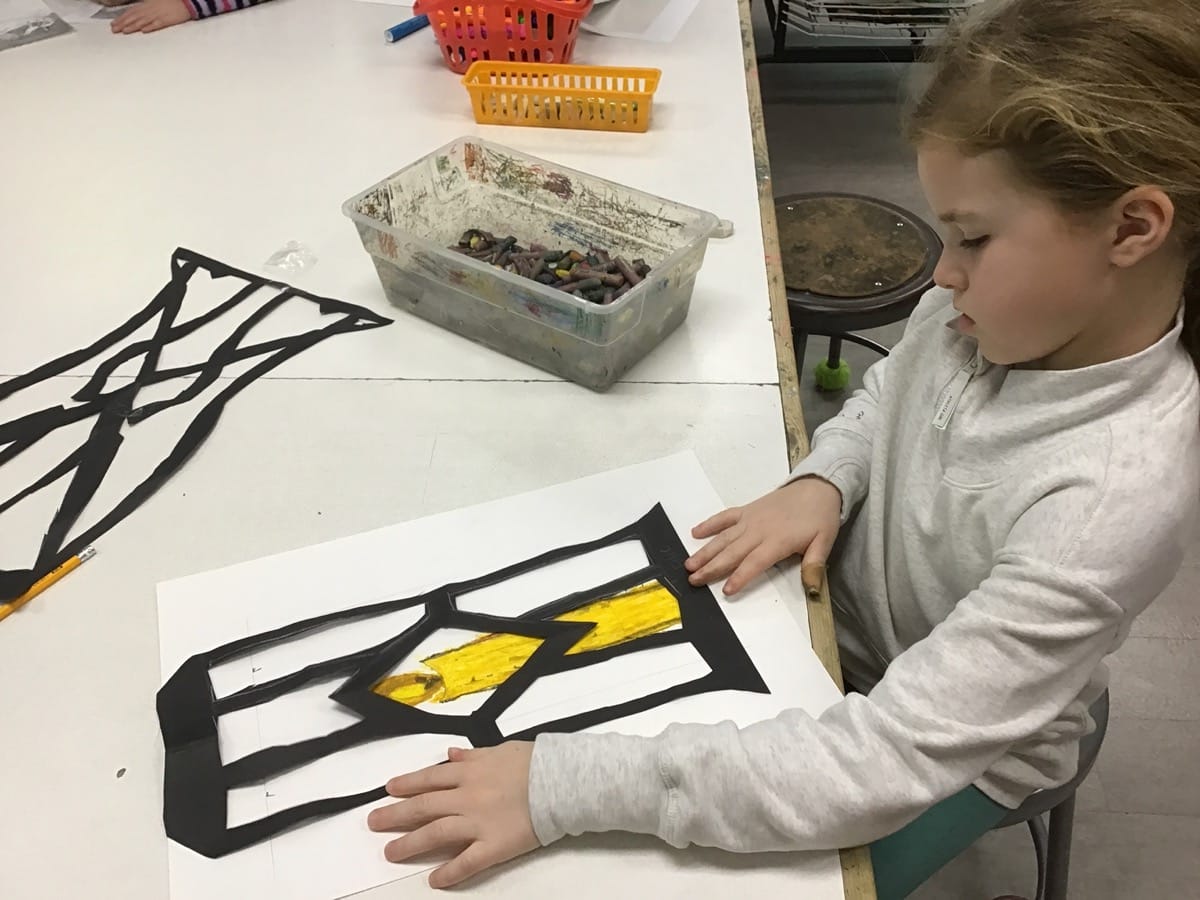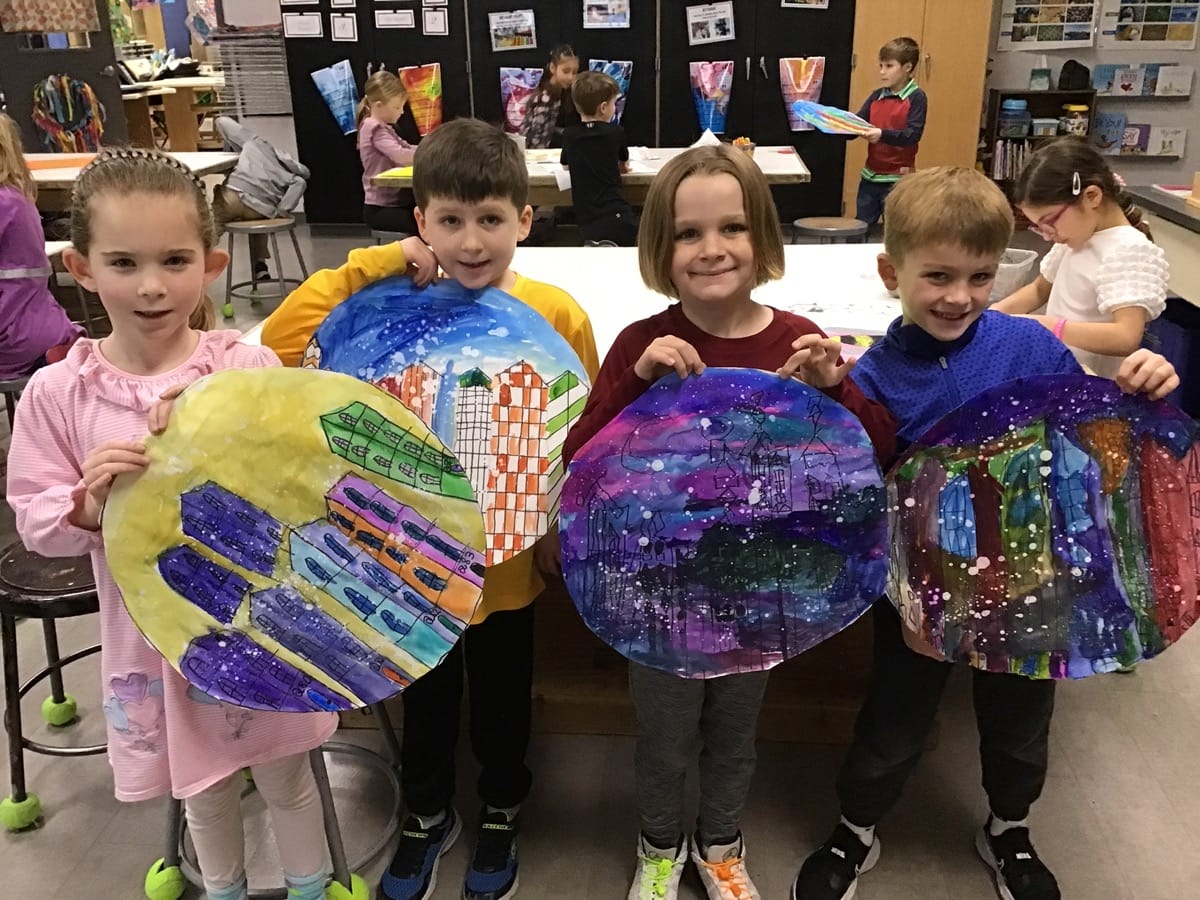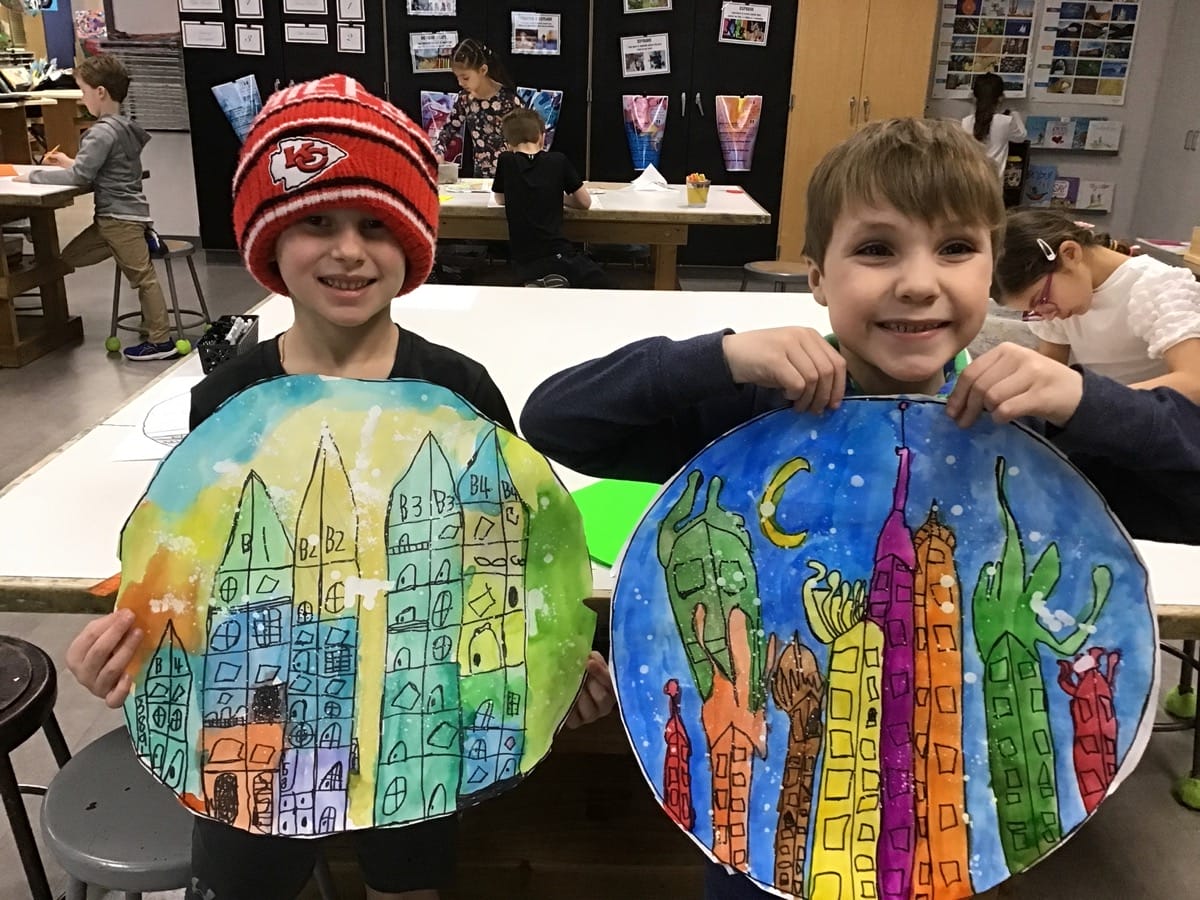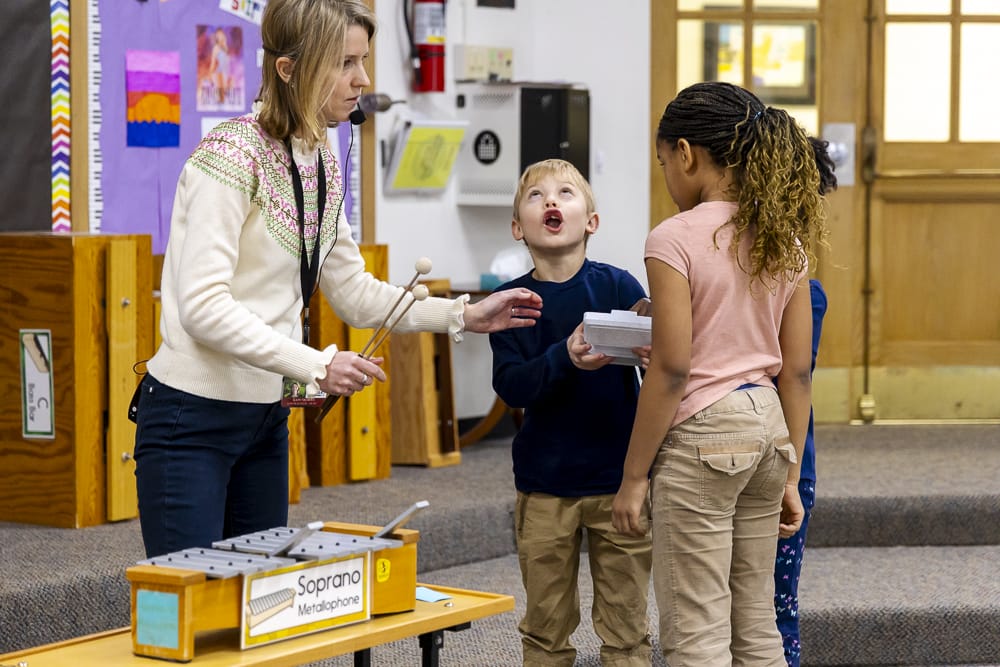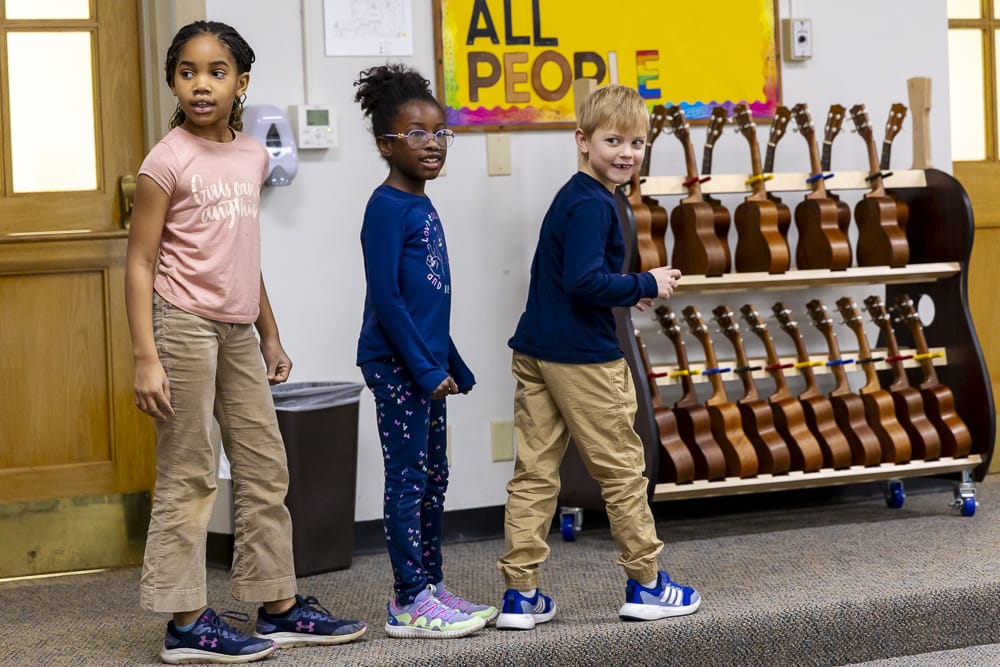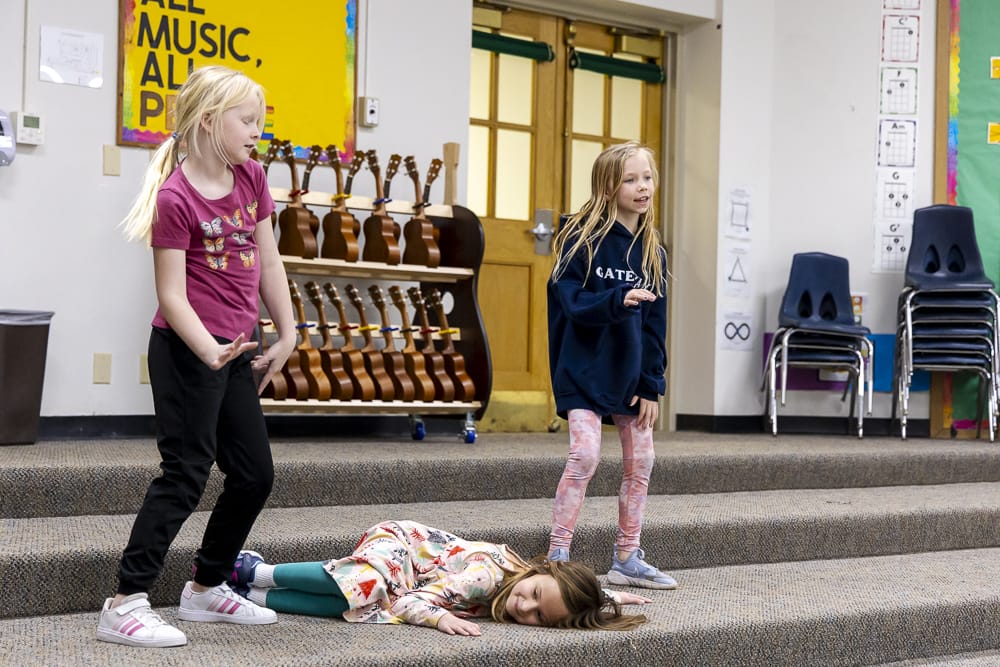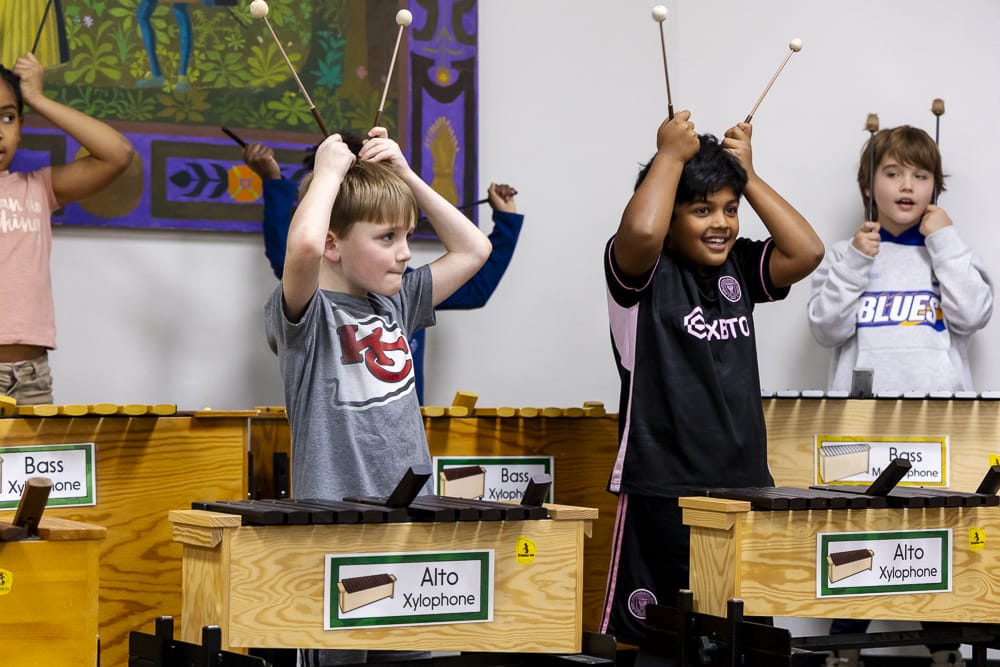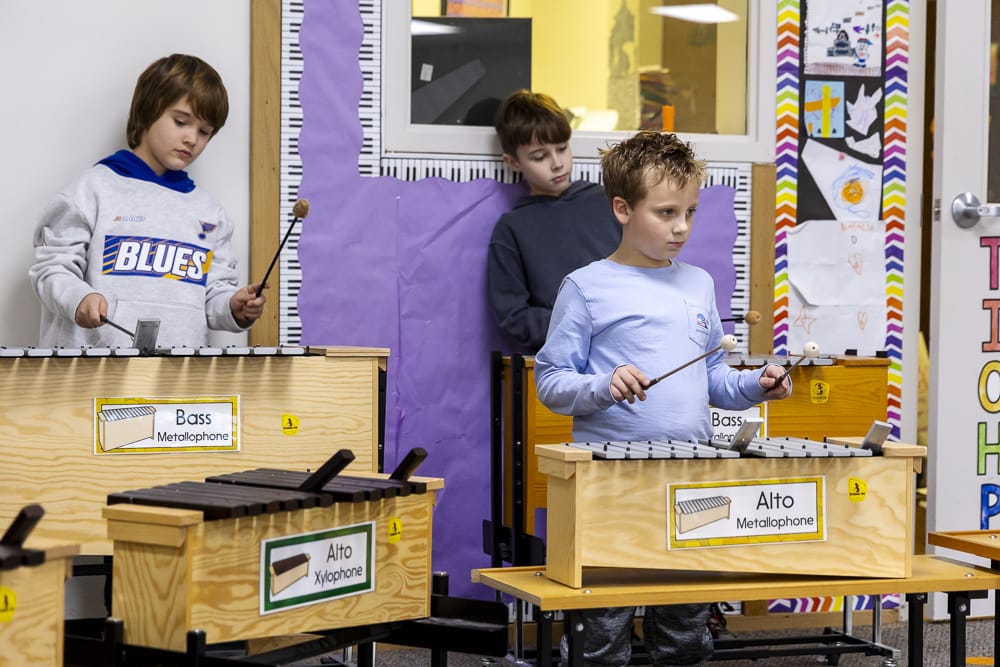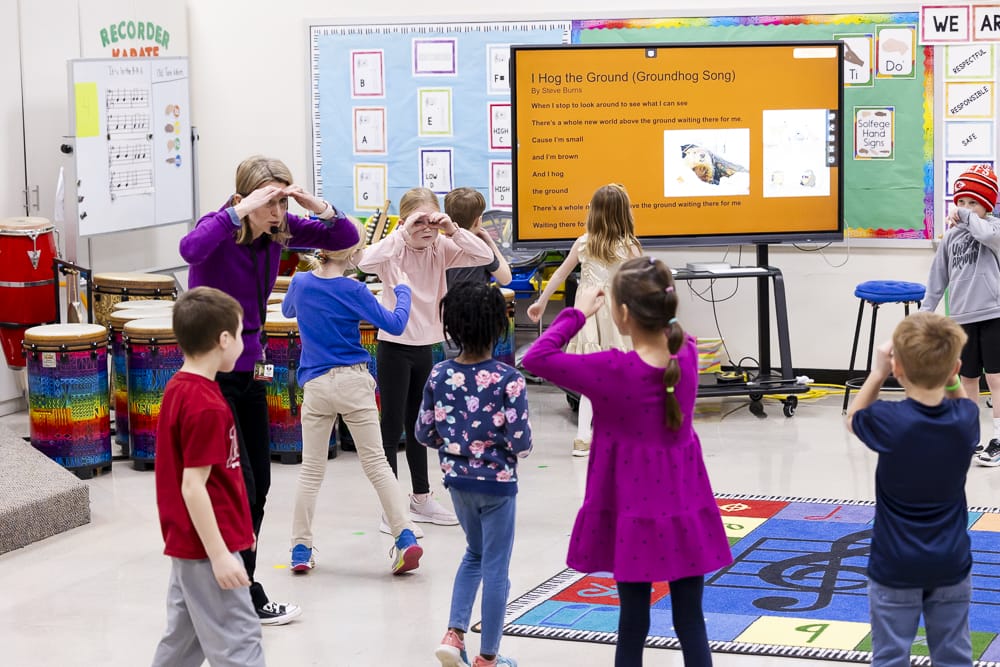What do animals do when it’s cold outside? What do animals on opposite poles do when it’s positively frigid outside? Our Lower Schoolers explored the lives of penguins and polar bears during Winter Week, themed classes filled with focused activities centered around these creatures from chilly climates.
Literacy
The week started with a series of read-alouds with Liz Crowder, Lower School Literacy Coordinator, using the book Polar Bears and Penguins by Katherine Hall. The book, filled with stunning photographs, explores these two animals that live on opposite ends of the Earth, what they have in common, and how they are different. They might be near each other at the zoo, but they are not found in the same habitats in the wild.
In Junior and Senior Kindergarten, Crowder worked with students to make a Venn diagram using hula hoops. The students sorted out which characteristics, such as fur, feathers, fish, and landscapes, were associated with the polar bear, the penguin, or both. “In first and second grade, we created a chart on a slide deck that compared and contrasted polar bears and penguins, and in third and fourth grade, students used post-it notes on a class Jamboard to do the same,” said Crowder.
In the library, Lower School Librarian Thomas Buffington created an arctic experience through read-alouds, short videos, and craft activities, including making their own penguins. “In the older grades, we built a LibGuide page with curated winter-themed resources for students to explore. I appreciate that students have started associating our theme weeks with researching digital resources,” said Buffington.
Math
Students became familiar with bear paws and penguin feet for a math adventure. Upper School Theater Technical Director, Maker and Robotics Coordinator & Science Teacher Brian Purlee designed and made exquisite wood-cut polar bear footprints in the Upper School Makerspace for a math project with first graders. Students studied the differently-sized woodcut paws, rolled paint on the paws, and pressed them onto the graph paper. Once dry, they counted the vertical and horizontal squares to calculate the area. JK-12 Math Department Chair Diane Broberg shared, “First graders have been working on addition and regrouping, so they had to find the area of two or more paws using their new math skills.”
In JK, students measured the steps that different-sized polar bears and penguins would make. They again worked with fabricated large, medium, and small-sized polar bear and penguin paws and feet. The penguins represented an Emperor penguin, a rockhopper penguin, and a little penguin. The “legs,” made with PVC tubing and felt feet for the penguins, were precisely measured for that particular penguin’s stride. The polar bear’s feet and legs had similar tubing and fluffy bear feet. Students also learned to walk across the room like penguins and polar bears!
Science
In science, students enjoyed some repeat experiences from last year, such as the best way to melt ice, playing with fake snow, and exploring how animals stay warm in the winter. New experiences included partnering with Lower School Coordinator of Instructional Technology Robyn Williams to help teach Ozobots to each grade level. “Students coded Ozobots to ski downhill, drive snow plows, figure skate, explore groundhog burrows, and find their way to hibernation,” said Lower School Science Teacher Laura Pupillo. “The newness of this experience made it really exciting for everyone. Students not only learned to code the Ozobots in various ways, but they also learned troubleshooting techniques, such as how to color correctly so the Ozobot could read the code. It was a perfect fail-forward experience, and everyone sharpened their grit. A personal favorite was definitely snow plowing with the Ozobots,” she added.
In addition, third and fourth graders had the opportunity to graph temperature data for the North and South Pole. Students were given a data set and had to determine what pole their data represented. Pupillo said, “This was such a fantastic learning experience that married science and math perfectly. Students connected what they knew about seasons and hours of sunlight with their temperature data to form a prediction. This experience was also a perfect way to introduce negative numbers and reinforce thermometer readings.”
This year’s winter week coincided with Groundhog Day. SK students engineered groundhog burrows in science, and a few students put together an informative and cute Groundhog Day introduction video shared during a Lower School assembly.
On the final day, the World Bird Sanctuary joined a special assembly where students could learn more about raptors and how they survive winter. They met a red-tailed hawk, peregrine falcon, American kestrel, and a tawny owl. Students learned about the birds’ hunting/eating habits, how their feathers and keen eyesight work, how fast they fly, how they eliminate waste, why they are at the sanctuary, and their names!
Physical Education
Students wintered it up in the South Gym using props to play games such as Snowman Down and Snow Fight and even built snowmen and snow forts using balls, tubes, hula hoops, cones, and more. These “cool” activities kept their bodies and brains sharp!
Art
In art, students expanded their winter perspectives to include shimmering cityscapes, winter lanterns for dark winter nights, and landscapes from a snowy castle window view. The imagination and creativity were endlessly colorful and as bold as a winter gust of wind!
Music
Students especially enjoyed rocking out to their new favorite groundhog song, playing winter-themed musical charades, and learning to sing rhythmically and “skate” on paper plates. Not an easy task!
This theme week held mountains of frosty fun for our Lower Schoolers, much of which they can experiment with at home where it’s comfortably warm. Stay cool, Beasley students!
